
Home » Travel Guides » Spain » 15 Best Things to Do in Murcia (Spain)

15 Best Things to Do in Murcia (Spain)
In the 1700s and 1800s this city in eastern Spain had an economic boom that furnished it with some glorious pieces of baroque art and architecture.
Monuments like the cathedral and the sculptures of Francisco Salzillo need to be your first ports of call to see the best of Murcia’s culture.
You can also step back even further to find traces of the city’s Moorish origins that are integrated into several of the city’s buildings, and on display at the city’s Archaeological Museum.
In the evenings venture onto the squares of the old centre with friends or loved ones for stand-up tapas.
Let’s explore the best things to do in Murcia :
1. Murcia Cathedral

The city’s cathedral has a big medley of architectural styles, but it’s the baroque additions in the 17th and 18th centuries that really catch the eye.
The main baroque facade on Plaza del Cardenal Belluga is breathtakingly grand, with its bold columns and beautiful sculpture of the Virgin Mary with archangel above the main portal.
Inside you’ll step past numerous lavish chapels, but seek out the tomb of King Alfonso X of Castile.
And don’t forget the bell-tower: At 93 metres it’s the second-tallest in Spain (Behind Seville’s Giralda), and took more than 250 years to complete.
By the time it was finished in 1793 it had a fusion of renaissance, baroque, rococo and neoclassical styles.
2. Salzillo Museum

Easter Week in Murcia is particularly special, as the pasos (floats) that are carried in the city’s parades were sculpted by the feted Murcian artist Francisco Salzillo.
He was active in the 18th century, and worked in the baroque style.
At this museum you’ll see many of the stunning pieces designed by him for Semana Santa, and find out about the baroque movement in Murcia at a time when the city was expanding and becoming wealthy from the silk trade.
The sculpture here reflects that sense of confidence, with opulent, gilded Easter Passion scenes full of drama commissioned by Christian brotherhoods and churches.
Also check out Salzillo’s stunning nativity scene, with a large cast of miniature characters.
3. Real Casino de Murcia

Another landmark with a very eclectic design is this gentleman’s club: Construction began in the mid-19th century but wasn’t completed for another 60 years.
This is still a private club but you can book a tour, and you won’t regret it.
The exterior is grand enough, but the interiors are wonderfully plush.
The billiard room for example has Moorish leanings, with a geometric, coffered ceiling, as does the courtyard, which has a two-storey gallery modelled on Andalusia’s great palaces.
The ballroom though has an opulent rococo design, with a ceiling fresco portraying Murcia’s most famous cultural figures, like Francisco Salzillo.
4. Plaza de las Flores

Plaza de las Flores is a short way west of the cathedral, and there may not be a lovelier square in the city.
The square got its name from the florists that are still in business here today.
The townhouses around are from the late-19th and early-20th century, like Edificio de Tejidos Abad, a beautiful art nouveau building with white, square window bays.
Drop by to park yourself at a cafe table and read the paper in the morning, or to go for a beer and a tapa at one of the bars at night.
5. Santa Clara la Real Convent Museum

This historic convent is still in use, right in the middle of the city, on Gran Vía Alfonso X el Sabio.
So when you visit you can only see about a quarter of the complex, but that’s more than enough to show you what an intriguing and beautiful place this is.
It was built in the 1300s over what had been Murcia’s Moorish Alcazar (fortress palace). So there are a lot of decorative Arab elements like horseshoe arches integrated into the design of the convent and displayed at the museum where expertly-crafted wood and plaster decorations are showcased.
6. Floridablanca Garden

Summers can be vicious in Murcia, so when it gets really hot you could take the Puente Viejo to the other side of the Segura River and seek refuge in this little oasis.
It’s the oldest public park in the city, opening in the mid-19th century.
Before then this was a countryside promenade on the right bank of the river.
Murcia soon grew around it and the city decided to build this park, which has flower beds, refined paths and bowers for people to escape the sun.
It was one of the first projects of its kind in Spain.
The largest trees here are old ficuses, with buttress roots that take over everything around them.
7. Monteagudo Castle

Outside the north-eastern suburbs stands a rocky limestone mountain 149 metres in height.
What you’ll see straight away is a large statue of Christ atop the castle walls.
This is from the 20th century, erected in the 1950s after a previous statue from the 20s had been destroyed in the Civil War.
The castle beneath it is from the 800s and was a strategic defence for the Moorish Taifa of Murcia for the next 250 years.
The granaries here were designed to be cavernous so that the castle could survive long sieges.
After the Moors were defeated the Castilian King Alfons X used the castle as his Murcian residence.
8. Plaza del Cardenal Belluga

Take a minute on this square to see some of Murcia’s best monuments laid out in front of you.
As mentioned above, you’ve got that marvellous cathedral facade and this is definitely worth another look.
But there’s also Murcia’s town hall, a mid-19th century neoclassical building with an annex that was added in 1998. This modern structure was designed by Rafael Moneo and contrasts with the florid architecture around it.
And then there’s the 18th-century rococo Episcopal Palace, built to complement the baroque additions to the Cathedral exterior.
9. Murcia Archaeological Museum

Not many tourists make it here, but this museum will enthral the history geeks among us.
That’s because there are more than 2,000 archaeological sites across the Murcian region.
And besides Roman and Moorish heritage, the best discoveries come from the Bronze and Iron Age Iberian cultures.
These people were influenced by trade with the Phoenicians and Etruscans, as you’ll see in the bold designs on the ceramics from this time.
The León de Coy is a marvellous, almost abstract, lion sculpture found at a 4th-century BC necropolis.
10. Almudí Palace

This magnificent building is a grain exchange completed in 1629, and standing on the site of a predecessor that burned down.
It’s yet another manifestation of the wealth that was flooding into the local economy during this era thanks to the silk industry.
Before entering, look up at the large relief of the Habsburg coat of arms, flanked by two smaller emblems for the city of Murcia.
Within is a beautiful Tuscan-style hall with rows of columns supporting broad arches.
This elegant space is used for temporary art exhibitions.
11. Terra Natura Murcia

This zoo has several branches around Spain and has earned a lot of praise for its humane approach.
There are no cramped pens or bars at Terra Natura; instead it tries to create enclosures as close to the animal’s natural habitat as possible.
To do this they’ve planted 500 trees and shrubs trhoughout the park.
As for the zoo’s inhabitants, there are more than 300 animals here, from 50 species.
Among them are endangered creatures like the European lynx, brown bear and Iberian wolf that now only exist in small numbers in the wild.
More exotic animals include hippos, lions, giraffes, white rhinos and an assortment of birds and reptiles.
12. Semana Santa and Bando de la Huerta

Easter time will give you the ultimate crash course in Murcian culture.
First there are the world-famous marches by Christian brotherhoods carrying the Salzillo-designed sculptures.
This event has earned International Tourist Interest in Spain, and you’ll be hard-pressed to find more beautiful pasos (floats) at any other Holy Week procession.
Just days after all this solemnity comes the fun and levity of Bando de la Huerta, Murcia’s one-day spring festival.
The whole city turns out, and most are dressed in Murcian folk costume.
At the main parade horses, donkeys, ox-drawn carts and the gigantes and cabezudos (large papier mâché figures) depart from the Don Juan Manuel neighbourhood and make their way through the centre of town.
There are also rolling food stands, handing out free sandwiches and Murcian blood sausage to the crowds.
13. Costa Cálida and Costa Blanca

The Mediterranean is only 50 kilometres away, so you could be chilling on a beach within an hour of leaving Murcia.
If you head directly east from the city on the RM-1 you’ll come to the quiet beach communities on the southern reaches of the Costa Blanca.
Torre de la Horadada has two sandy Blue Flag beaches, with tempting chiringuitos (beach bars) for when the sea air makes you peckish.
If it’s action you need then the Mar Menor inland lagoon a few kilometres south is one of Spain’s big water sports destinations – plus the mud at Las Charcas on the north shore is supposed to have medicinal properties.
14. Carrascoy and El Valle Regional Park

When Murcians want fresh air and countryside they don’t have to go far.
A large Natural Park is just six kilometres from the city’s southern outskirts.
One of the easiest excursions is the Santuario de la Fuensanta, on a rise in the foothills of the range, with an “instagrammable” panorama of the city.
You’ll recognise it by its twin whitewashed baroque towers.
Behind this there’s a world of mountainous scenery to delve into: The park’s trails are edged by wild herbs like thyme and rosemary, and wend through forests of Aleppo pines and kermes oaks.
15. Mercado de Verónicas

Moments from the Almudí Palace is Murcia’s central market.
If you’re renting a holiday apartment in the city then this is where you’ll want to do your food shop.
You could make it extra authentic by tracking down some of Murcia’s “Denominación de Origen” ingredients, like Calasparra rice, a plump variety that goes well in stews and soups.
Paprika, a core ingredient of many Spanish dishes, is cultivated in the Murcian countryside, while the local cheese is cured and made from goat’s milk.
A great deal of Spain’s fruit and veg is also grown in the Murcia region, so you can be sure of farm-fresh produce at the 116 stalls in this food-lover’s paradise.
15 Best Things to Do in Murcia (Spain):
- Murcia Cathedral
- Salzillo Museum
- Real Casino de Murcia
- Plaza de las Flores
- Santa Clara la Real Convent Museum
- Floridablanca Garden
- Monteagudo Castle
- Plaza del Cardenal Belluga
- Murcia Archaeological Museum
- Almudí Palace
- Terra Natura Murcia
- Semana Santa and Bando de la Huerta
- Costa Cálida and Costa Blanca
- Carrascoy and El Valle Regional Park
- Mercado de Verónicas
Travel Safe
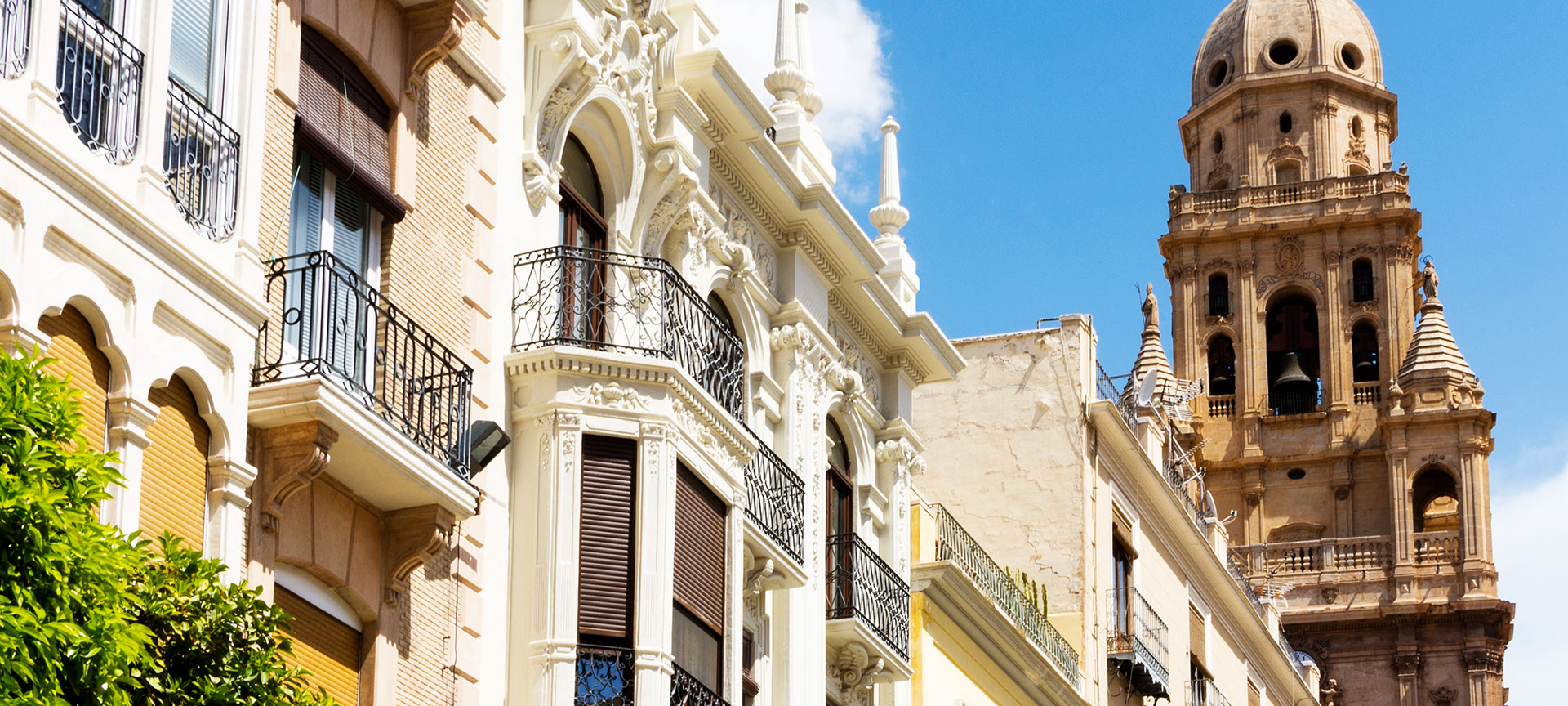
Region of Murcia
A chain of mountains surrounds the plain which Murcia sits upon, a city of Arab origin whose existence is closely linked to the fertile lands around the river Segura. From among its streets of guilds emerges the tower of the Cathedral, one of the symbols of the city.
Although the region of Murcia has been inhabited for more than 2,000 years, the city of Murcia was not founded until 831, when the Emir of Cordoba Abd ar-Rahman II commissioned a walled city on the banks of the river Segura, to be the provincial capital under the Caliphate.
It was then that the Moorish region of Mursiya started to gain importance, until it became part of the Kingdom of Castile in the 13th century. Today, many places in the city still evoke its Moorish past. The architectural remains of the Almunia Real, the second residence of the Moorish monarchs, are particularly interesting. The site is about five kilometres north of Murcia, and many items recovered there can be seen at the Santa Clara Museum. Parts of the Moorish city wall can also still be seen in different parts of Murcia's historic quarter. The old town is situated next to the river Segura, with historical streets which still bear the names of the guilds that used to work there, such as the shopping streets Calle Platería, Calle Trapería, and Calle Vidrieros (silversmiths, cloth merchants and glass workers, respectively). In Plaza Cardenal Belluga there are two architectural gems - the Episcopal Palace (18th century), with a rococo façade and Churrigueresque patio, and the Cathedral , begun in the late 14th century, and notable for its combination of different styles. For example, the lavish sculptures of the Baroque façade are particularly striking, and the impressive tower next to it is 92 metres high. Inside, the Vélez Chapel is a magnificent example of Flamboyant Gothic. Murcian Baroque is widely represented by religious buildings, such as the Church of La Merced , originating from the 16th century and rebuilt in the 18th century, the Convent Church of Santa Ana , and the Churches of Santo Domingo, San Nicolás and San Miguel . Some of the most important 19th-century buildings are also worth visiting: the Town Hall , the Roman Theatre and the Casino , this last with a Neoclassical façade and beautiful interior courtyard with Moorish influence. The neighbourhoods of San Pedro, Santa Catalina and the surrounding area of the Plaza de las Flores offer some of the most picturesque corners of the capital of Murcia. A tour of the city could end in the beautiful Paseo del Malecón , the former embankment which once linked the city to the market gardens around it. Murcia has a broad range of museums and exhibitions. The Cathedral Museum boasts a spectacular processional monstrance from Toledo, while the Salzillo Museum has a beautiful collection of processional sculptures by this artist, one of the most iconic sculptors of 18th-century Spain. The Murcia Archaeological Museum conserves items from the different cultures that have come and gone in the region, including the Tesoro de la Finca Pinta, a hoard of Moorish and Christian coins. The Fine Arts Museum displays works by Giordano and Madrazo, amongst others. Other museums of interest are the Santa Clara Museum, the Museum of the City, the San Juan de Dios Museum, the Science and Water Museum, the Water Mills Museum, the Craft Centre and the Bullfighting Museum.
Fiestas, local cuisine and surrounding areas
The city of Murcia has many religious and secular festivals, and its Easter celebrations are particularly notable. The "salzillos" procession, held on Good Friday, is well worth seeing. Also outstanding is the Entierro de la Sardina (burial of the sardine), part of its Spring Festival, which includes a parade. Both events have been declared Festivals of International Tourist Interest. One of the capital's most deeply-rooted traditions is probably the " Bando de la Huerta ” , which is also a Festival of International Tourist Interest and has been celebrated every Holy Tuesday for over a century and a half. This fiesta celebrates the region's traditional food and folklore, with parades, regional costumes, tastings of local specialities and reading of verses in Panocho, a local dialect. Another popular festivity is the Romería de la Virgen de la Fuensanta, where a procession takes a figure of the Virgin from the cathedral to a shrine five kilometres from Murcia. The local cuisine of Murcia is based on the excellent fruit and vegetables grown in the region. The local specialities made with these raw materials include pisto huertano (similar to ratatouille, with peppers, onion and tomato), chickpeas with Swiss chard , and zarangollo (courgette, egg and onion). And to accompany our meal, we can choose any of the Murcia wines with Designation of Origin: Bullas, Yecla and Jumilla . One of the main tourist attractions in Murcia is the coast, known as the Costa Cálida . Its 250 kilometres of coast, including the Mar Menor lagoon and the Mediterranean, provide a multitude of beaches offering a wide variety of water sports : sailing, windsurfing, kayaking, water-skiing, diving, etc. Águilas and Mazarrón have some of Spain's best areas for scuba diving, with clear water and high visibility, where you can get close to the aquatic flora and fauna, and you'll often see the remains of shipwrecks. Cartagena is another town with plenty to offer holidaymakers, from its coastline to its heritage buildings, and the fascinating National Museum of Underwater Archaeology. La Manga del Mar Menor is very close to the town of Cartagena and is one of the main tourist destinations on the Costa Cálida. This area is unusual because it is a narrow strip of land running for some 24 kilometres (from La Punta del Mojón to Cabo de Palos ), dividing the great lagoon of Mar Menor from the Mediterranean Sea. If you like water sports, here you will find a full range of facilities and services at the Marine Resort , where you can hire equipment, sign up for courses and book accommodation. La Manga del Mar Menor also has a reputation as a natural spa and beauty centre, thanks to the excellent therapeutic properties of its renowned marine mud. Inland there are historical towns such as Caravaca de la Cruz and Lorca . Lorca is particularly attractive for its many Baroque buildings - parish churches, convents, mansions and palaces. San Patricio Collegiate Church and Lorca Castle are National Monuments. A few kilometres from this town is the Parador de Puerto Lumbreras , halfway between Levante and Andalusia, an exceptional place to stay if you want to visit these regions. The province of Murcia has a wealth of landscape and environmental heritage, protected by regional parks . Golden sand beaches, with dunes and unspoilt coves can be found in Salinas y Arenales de San Pedro del Pinatar; Calblanque, Monte de las Cenizas y Peña del Águila; and Cabo Cope y Puntas de Calnegre. The mountain ranges and valleys inland are the main features of the regional parks of Sierra de Carche, Sierra de la Pila, Sierra de Espuña, and Carrascoy y El Valle. These places are the perfect setting for sports with a low impact on the environment and for exploring nature in Murcia.
What to visit
Select from the list or hover over the map to find out about points of interest.

Church of San Nicolás de Bari (Murcia)

Murcia Cathedral

Floridablanca Garden
Monteagudo Castle
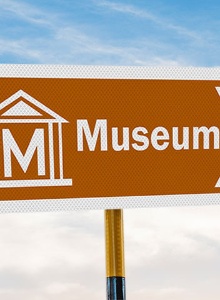
Murcia Archaeological Museum

Murcia Museum of Fine Arts

Salzillo Museum
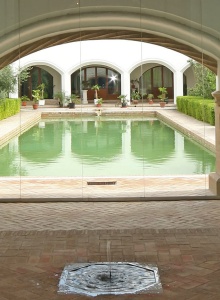
Santa Clara la Real Convent Museum
Shows, festivals, sports...
View some of the most relevant events you will be able to enjoy at the destination.

Murcia Fair
05 September 2024 - 17 September 2024
Festival of Moors and Christians in Murcia
07 September 2024 - 14 September 2024
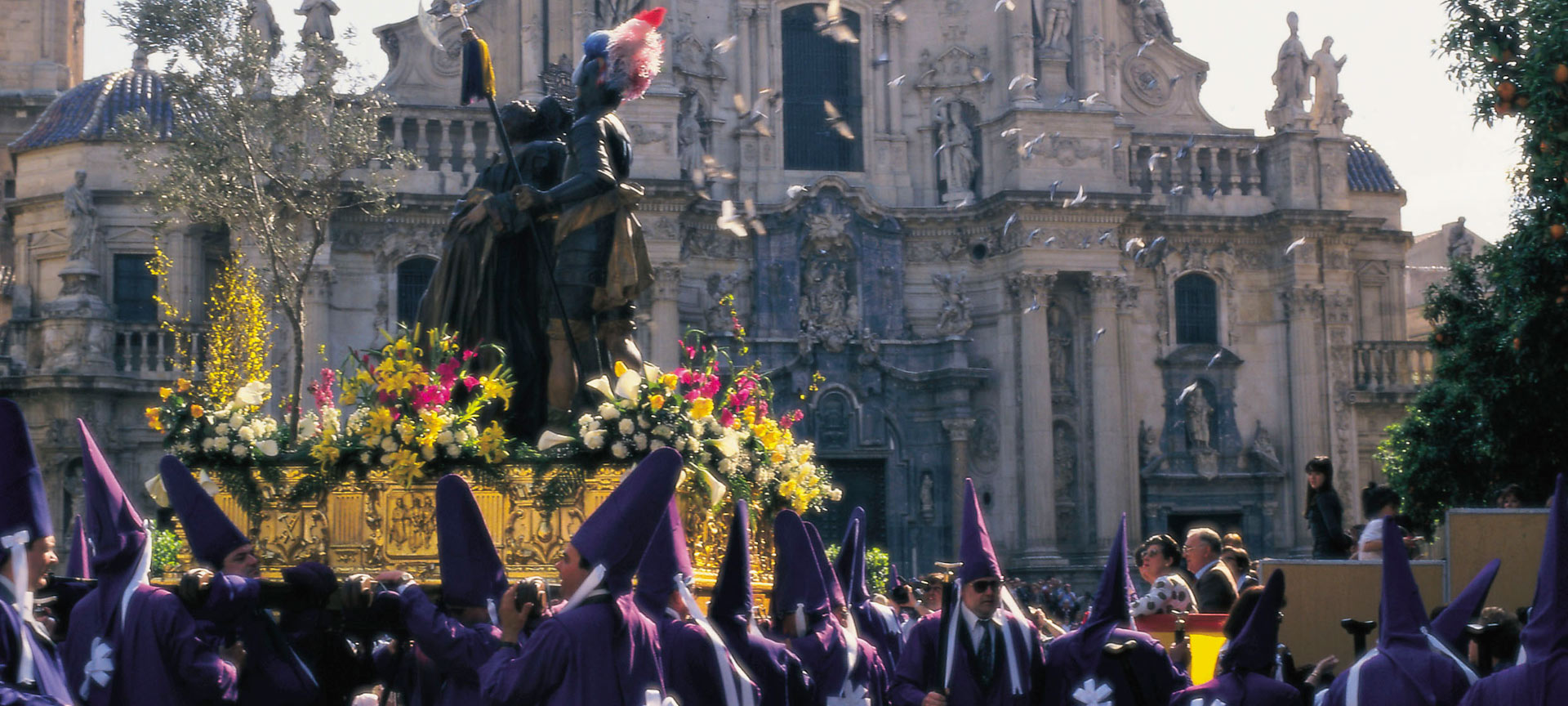
Easter Week in Murcia

Choose between thousands of activities to live your best life on holiday.

What to see in Murcia
There is a lot to see in murcia. we suggest some of the capital's must-see places that you can't miss., the city of murcia is an ideal destination for a weekend getaway. we tell you what to see to make your next visit to murcia unforgettable..
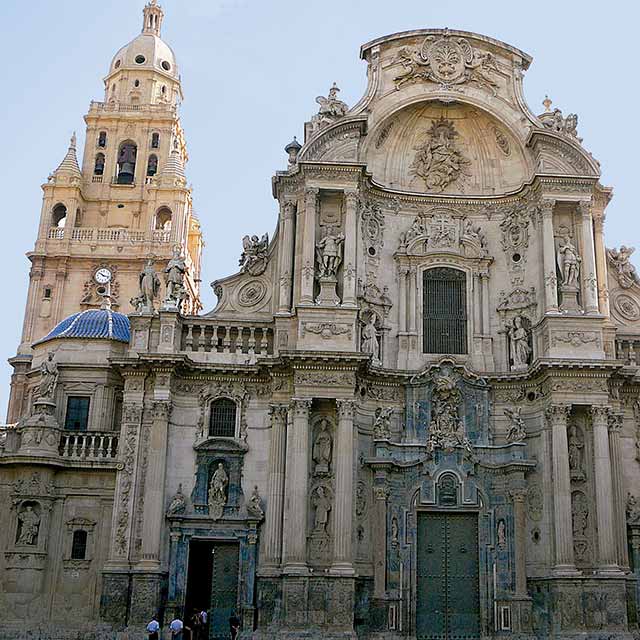
The Cathedral of Murcia
The most emblematic building in Murcia and one of the best examples of Baroque style in Spain is the Cathedral of Santa Maria, located in the Cardenal Belluga Square.
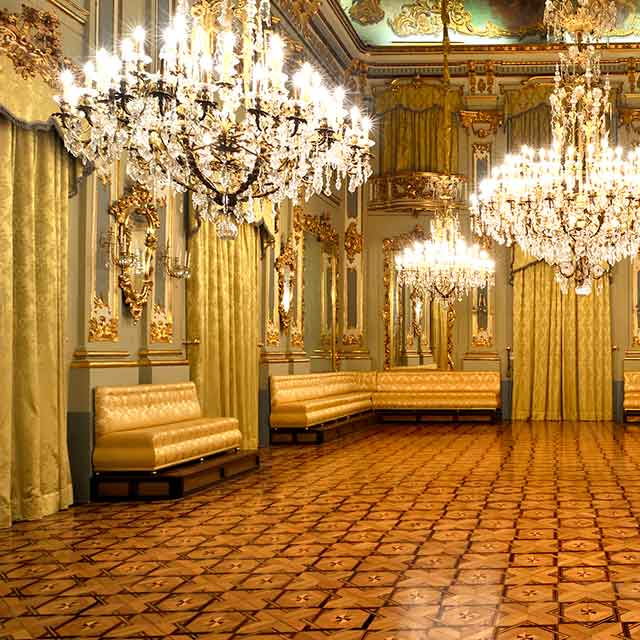
The Royal Casino of Murcia
A wonderful building in the heart of Trapería, in which, behind a splendid facade, you enter into a building full of art and architecture of exquisite taste.
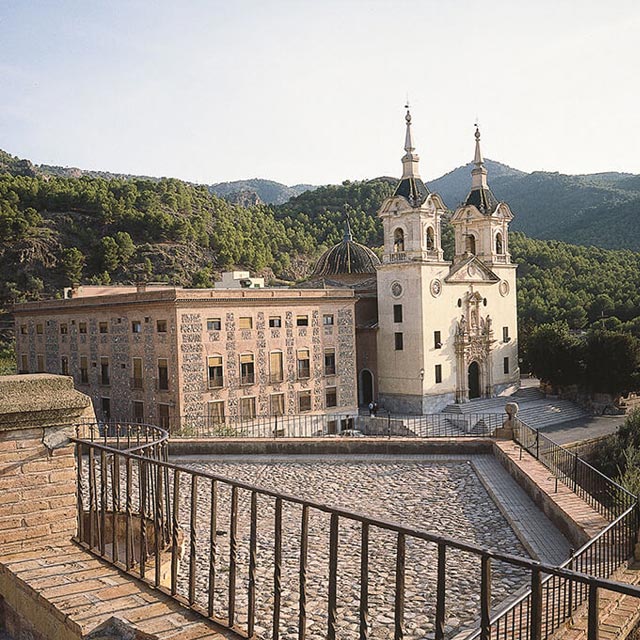
Sanctuary of La Fuensanta
From the sanctuary you can enjoy a magnificent panoramic view of the city and the orchard. Inside it you can find an image of the patron saint of the city.
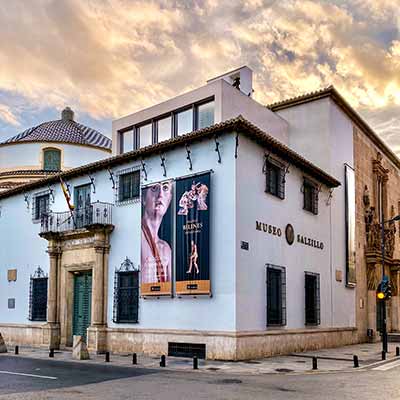
Salzillo Museum
In it you can observe all the work of the great Baroque sculptor from Murcia in the Salzillo Museum located in the beautiful Church of Our Father Jesus (Iglesia de Nuestro Padre Jesús).
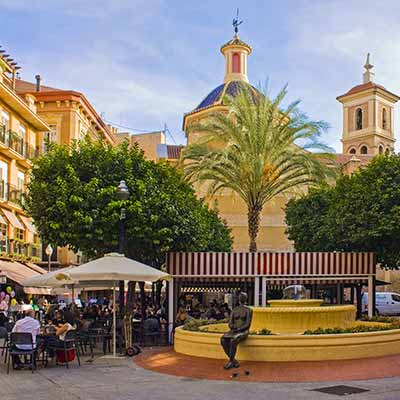
The Plaza de las Flores
A must-see and charming place, one of the most beautiful squares in Murcia to try delicious tapas.
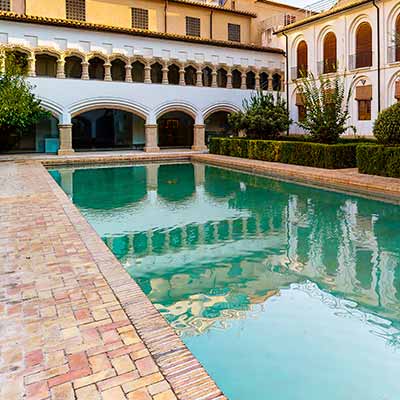
Museum of Santa Clara
From the museum you can admire the 13th century Arab pool, an oasis of peace and tranquility in the middle of the city.
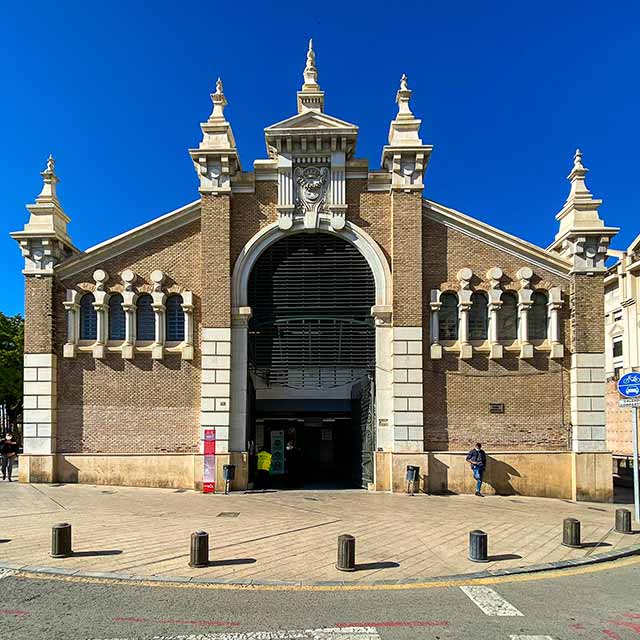
The Veronicas Market
The best market in Murcia to enjoy the best products from the garden and the sea. Besides, you can have a drink in its bars.
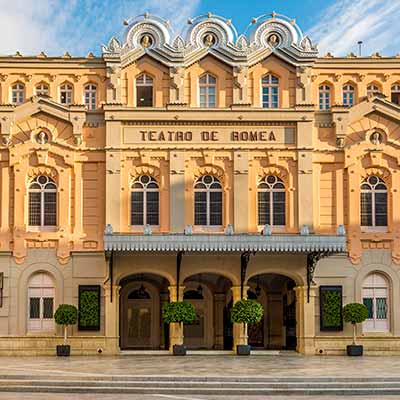
Romea Theatre
One of the most beautiful theaters in Spain, located in the heart of Julian Romea Square, another charming must-see place.
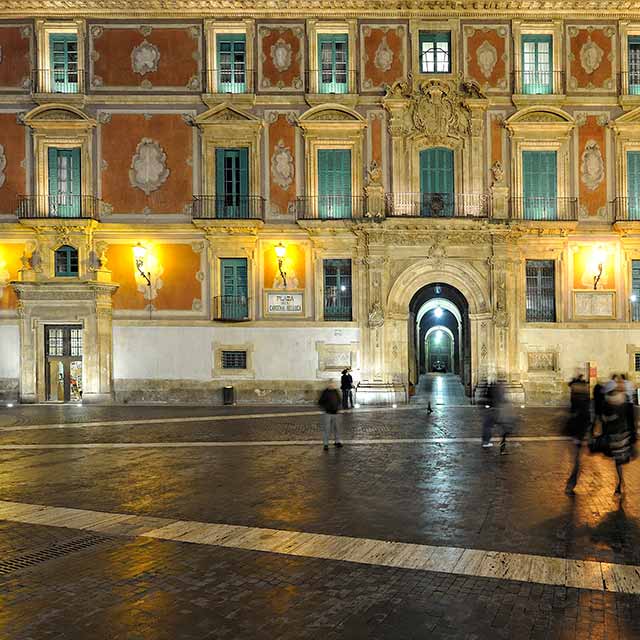
Episcopal Palace
A unique palace that transported you to Italian art. Located in the Cathedral Square you can admire it from any terrace. At night, it has spectacular lighting.
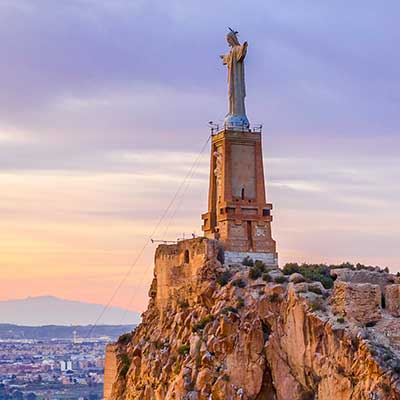
Monteagudo Castle
It is located in an impressive rocky point that rises 149 m above sea level and crowned by the statue of the Sacred Heart (Sagrado Corazón) of 14 m. It’s an icon of Murcia.
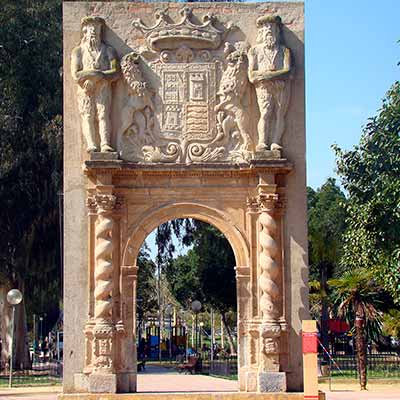
MALECON WALK AND GARDENS
An emblematic 18th century promenade of 1.5 km that runs along the river through gardens and monuments into the orchard of Murcia.
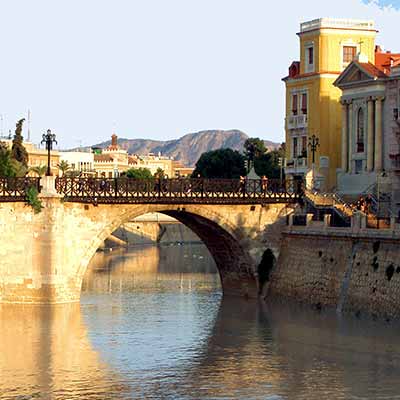
Old Bridge or Bridge of Dangers
The Bridge of the Hazards, also called the Bridge of Dangers is a symbol of the city. Built in the eighteenth century, it is the oldest bridge and joins the Carmen neighborhood with the historic center.
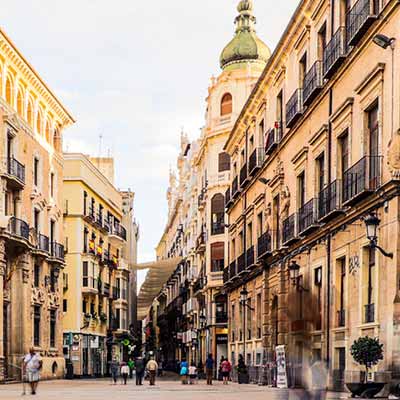
Streets of Trapería and Platería
Trapería and Platería streets are two of the most famous and historic streets in the capital, located very close to the Cathedral.
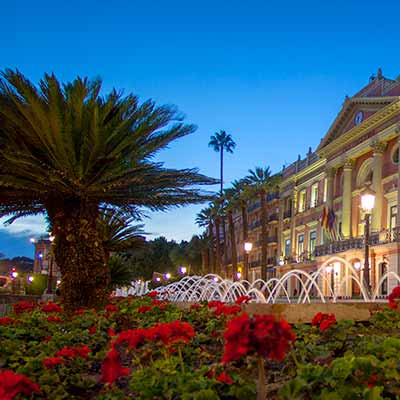
Glorieta Garden
This garden, located in the Glorieta de España, opposite the Casa Consistorial, is one of the most bustling and prominent urban spaces in Murcia.
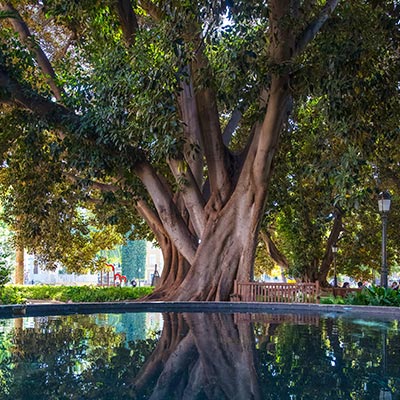
Floridablanca Garden
The Floridablanca Garden is one of the most beautiful public gardens in the city of Murcia
Where to sleep
Where to eat, tourist itineraries, tourist information, you may also be interested in....

Ideas for your next getaway to Murcia
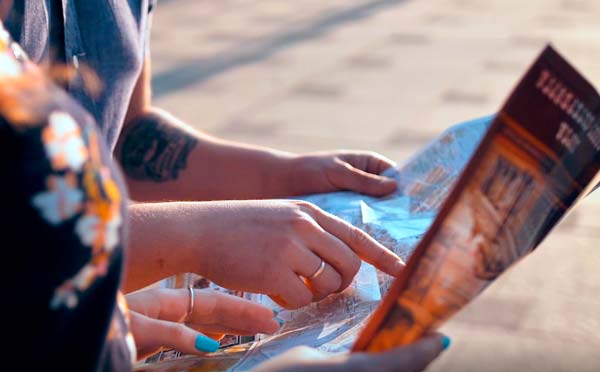
A weekend in Murcia. Do you want to come with us?
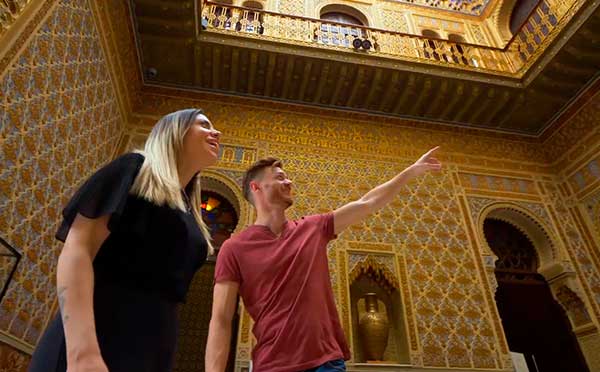
Don't miss the best places and monuments
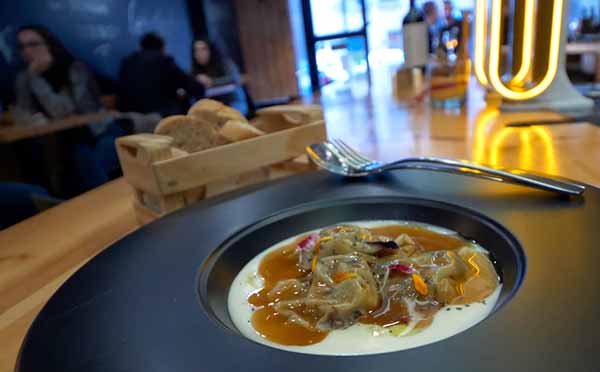
Gastronomic Murcia. Discover our gastronomy.
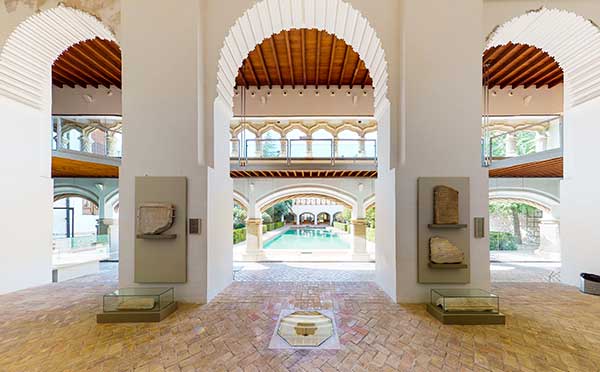
Museums for all. The legacy of three cultures.

Concejalía de Turismo. Ayto de Murcia
- Murcia City Council
- Department of Tourism
- Tourist Offices
- Murcia Turística
- Murcia Convention Bureau
- C/ Los Molinos - Edificio Museo Hidráulico - 30002 - Murcia
- +34 968 35 86 00
- [email protected]

19 Fun Things to do in Murcia, Spain – 3 Day Itinerary
By Author Paulina
Posted on Published: April 24, 2020 - Last updated: April 18, 2024
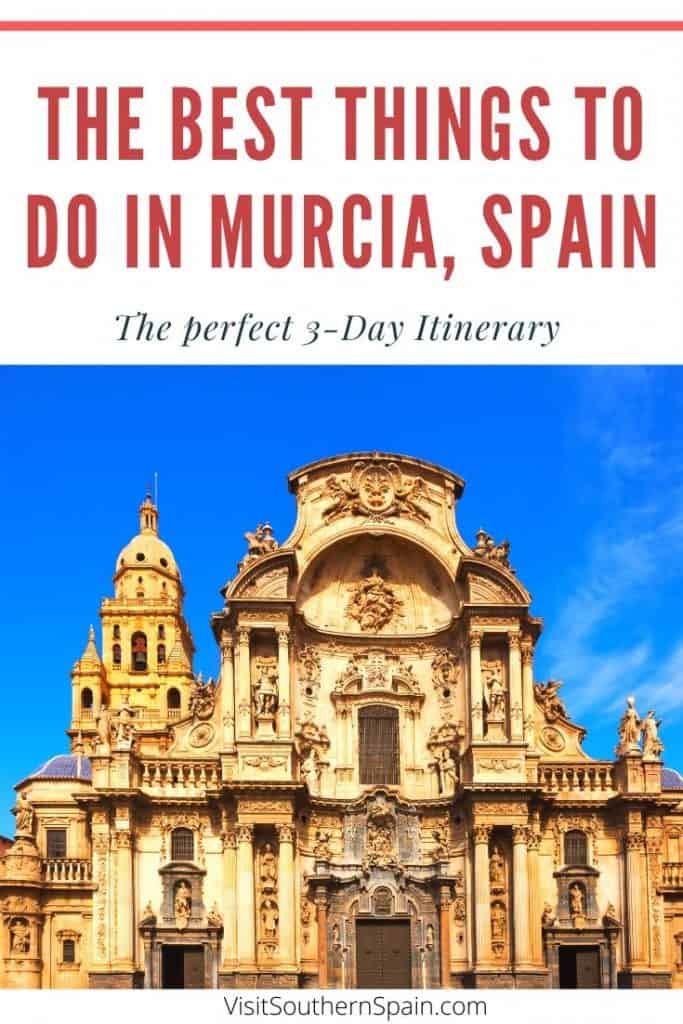
A Guide to the best attractions in Murcia, Southern Spain: the perfect Murcia Itinerary
While in Andalucia you can escape the tourists by visiting the capital of Murcia province: Murcia.
Yes, it is a little confusing when the city and the province it is in both have the same name, but that should not stop you from enjoying what is a young vibrant city full of plenty of things to see and do.
Whether you have two, three, four, or just one day to spend in Murcia, this travel guide’s itinerary can be geared especially for your trip.
Located on the Segura River in south-eastern Spain, Murcia has a population of around 450,000 inhabitants making it the seventh-largest city in the country.
While not on the tourist trail like Alicante and Valencia, Murcia boasts an interesting old town with narrow winding streets and attractive plazas.
Here’s a list of things to do in Murcia for a 3-day itinerary!

You, dear reader, support this blog. If you purchase through a link, we earn a small commission. As an Amazon Affiliate, we earn from qualifying purchases.
Pssst…??!! You can’t get enough Murcia? Have a look at my other posts:
- Things to do in Cartagena, Spain
- Best Beaches in Southern Spain
- Most Beautiful Spanish Christmas Traditions
Useful Travel Information About Murcia
✈ Book cheap flights to Murcia with Skyscanner ⚘ Avoid tourist traps and get the customizable “Andalucia Like a Local” itinerary. – Get it here ✔ Book tours in Murcia with GetYourGuide ➳ Find the best hotels in Murcia with Trivago ❖ Rent a car at the best rates with DiscoverCars ✎ Never leave without travel insurance ! I get mine at HeyMondo . It is easy to set up, cheap, and reliable. $ Withdraw money without hidden fees and avoid exchange charges with TransferWise (Free Mastercard debit card to spend money abroad)
Top Things To Do In Murcia, Southern Spain – Our Murcia Itinerary For 3 days
- Catedral de Santa María
- Real Casino de Murcia
- Museo Arqueológico
- Plaza de las Flores
- Castillo de Monteagudo
If you’re wondering what to do in Murcia, look no further. Here’s what we recommend you do on day 1 of your trip.
1. Visit Murcia Cathedral
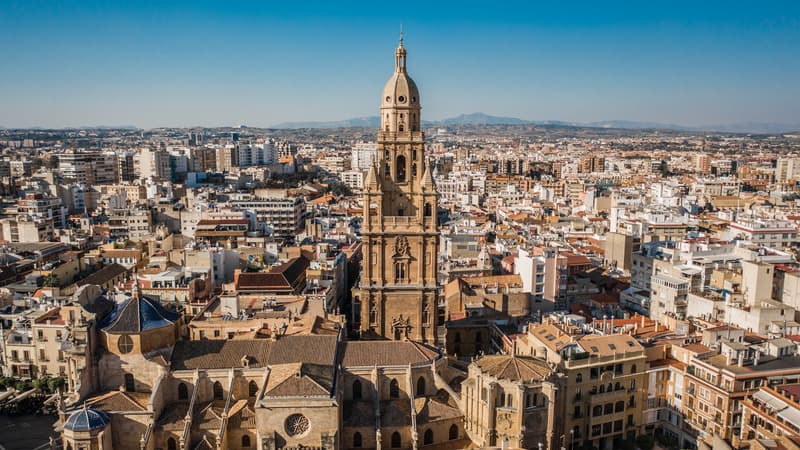
Constructed in 1394 on the site of what was once a great Mosque, the gothic-inspired holy place received a baroque facelift in 1748 and now has a stunning façade overlooking the plaza.
It’s surely one of the most beautiful places in Murcia and things to do in Murcia city centre you should not miss.
The highlight of the Cathedral of Murcia is its 15th-century Capilla de los Vélez .
Dedicated to St. Lucas and funded by the Marquis of Vélez , the chapel was declared a National Monument for its outstanding artistic value.
While visiting the cathedral, don’t miss the chance to explore the cathedral museum.
You will discover religious artifacts and the remains of an 11th-century Moorish dwelling and a small Mezquita (mosque).
If you don’t mind a bit of exercise, take a tour of the 305-foot-tall tower. It is the second-largest cathedral tower in Spain after the Giralda in Seville and one of the most popular Murcia tourist spots.
Even if you just have one day in Murcia, visiting the cathedral is a must. It’s one of the most popular Murcia tourist attractions! – Check rates for guided tours here
Address: Plaza del Cardenal Belluga, s/n, 30001 Murcia
Opening times: Monday to Friday 7:00 – 20:00 and Saturday-Sunday 7:00-21:00.
2. Marvel at the Real Casino de Murcia
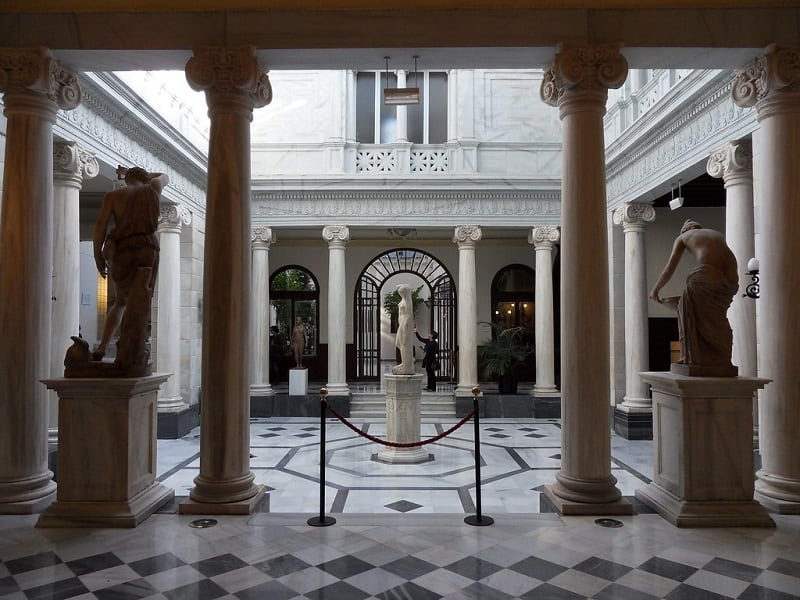
First opened as a gentleman’s club in 1847, the resplendent building has been painstakingly restored to its former glory.
With its historical design dating back to an era when opulence was the de rigueur, the Real Casino de Murcia is one of the main attractions in Murcia.
Beyond the decorative facade, you will discover a Moorish patio crowned with a large iron and glass dome and an Arabic inscription taken from the Alhambra and El Alcázar .
It repeats the question, “Is no one greater than god” ?
In the mini palace-like building, you will discover a two-tier library built by the English company Waking Gilow in 1916.
This includes a grand ballroom complete with crystal chandeliers and a ladies’ powder room with cherubs and angels painted on the ceiling.
Address: C/ Trapería, 18, 30001 MURCIA
Opening times: 10:30-19:00
Admission: Adults 5€ Children 3€
3. Visit Museum Salzillo
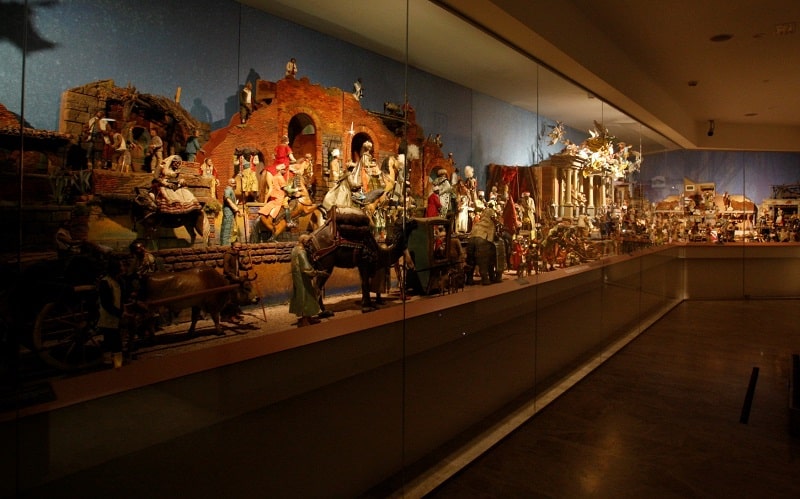
Famous all over Spain for its magnificent Easter week processions, the Museum Salzillo is one of the best things to do in Murcia city.
It was dedicated to Francisco Salzillo, a baroque sculptor who lived between 1707 and 1783.
The museum houses many of his most outstanding religious works that were saved from being destroyed during the Spanish Civil War.
Sculpted from wood and then polychromed, the lifelike sculptures are carried through the streets during Holy Week.
The museum also features a nativity scene made from 600 pieces which make the museum one of the best things to see in Murcia.
Address: Calle Dr. Jesús Quesada Sanz, 1, 30005 Murcia
Opening times: Monday-Saturday 10:00 to 17:00 and Sunday 11:00-14:00
Admission: 5€
4. Explore Murcia Archaeological Museum
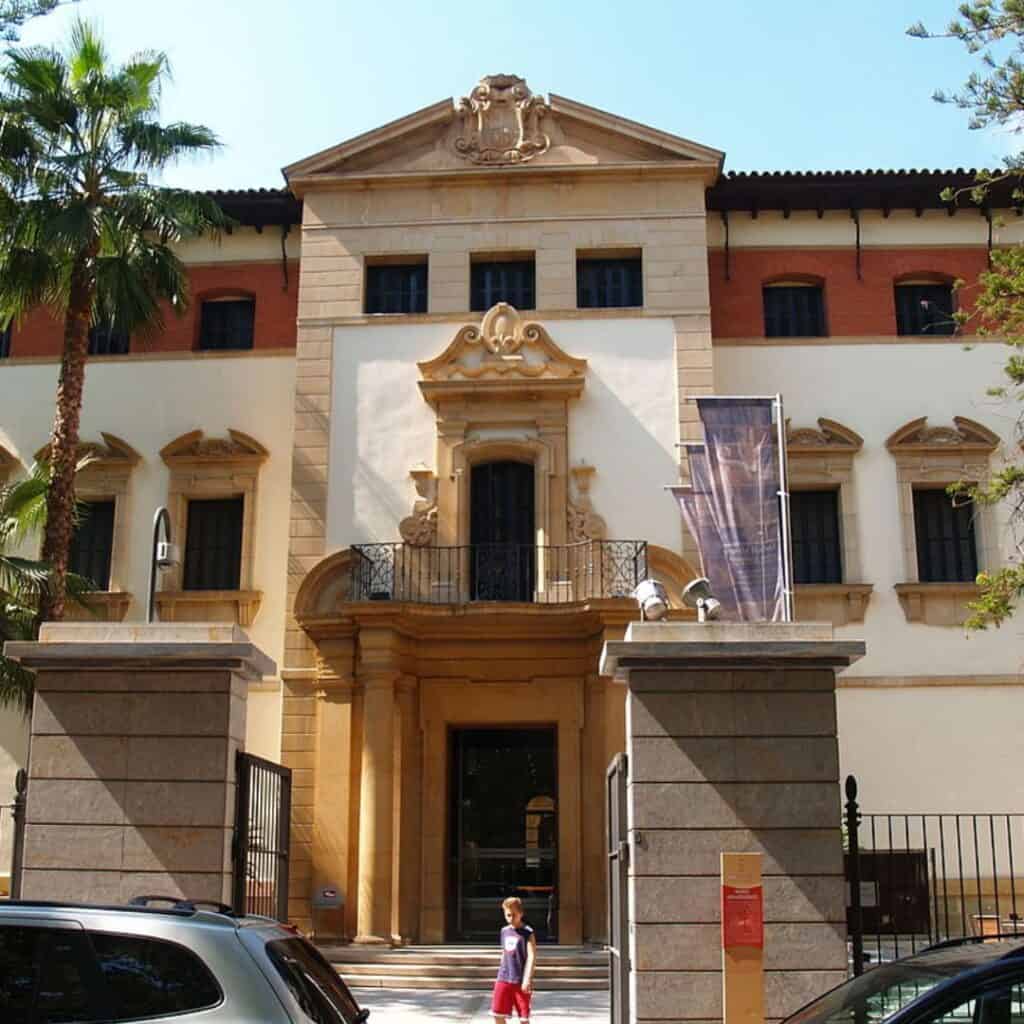
If you want to know what to see in Murcia, visit the Murcia Archaeological Museum .
It’s one of the top things to do in Murcia region, especially if you want to delve into its rich history.
Exhibits showcase a diverse range of artifacts, spanning from prehistoric times to the Islamic era, providing insight into Murcia’s cultural evolution.
The museum’s well-curated displays and informative exhibits help visitors understand Murcia’s historical significance and its connections to broader Mediterranean civilizations.
Address: Avda. Alfonso X El Sabio, 7 – 30008 Murcia
Opening times: Tuesday-Friday 10:00 to 14:00, 17:00 to 20:00, Saturday 11:00 to 14:00, 17:00 to 20:00 and Sunday and holiday 11:00-14:00
Admission: Free
5. Lunch in Restaurante El Churra
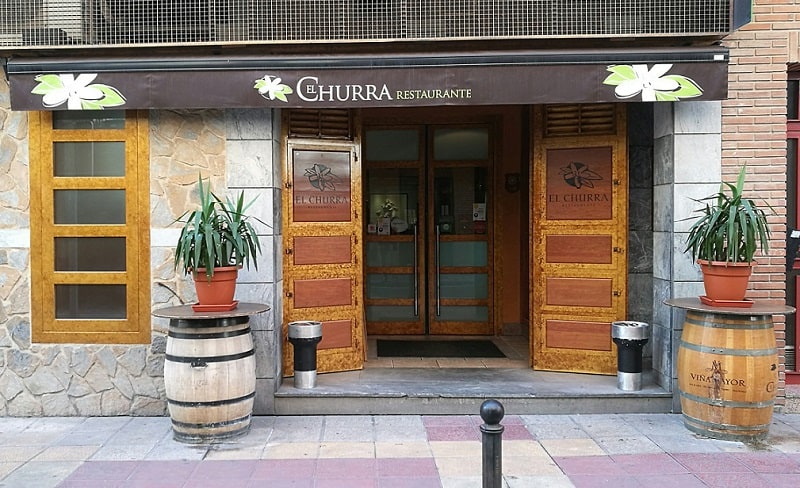
To sample an original taste of Murcian cooking, you will not find a better place than Restaurante El Churra for lunch.
Traditionally Spanish, with wood-paneled walls, tile floors, and cloth table linens, the restaurant’s primary focus is beef and lamb.
With Murcia not being too far from the sea, you also are given an excellent choice of seafood to select from.
Address: Calle del Obispo Sancho Davila 13, 30007 Murcia
Opening times: Mon-Sat 08:00 to 24:00 Sun-Sat 13:00 to 17:00
6. Witness the Sunset at Monteagudo Castle
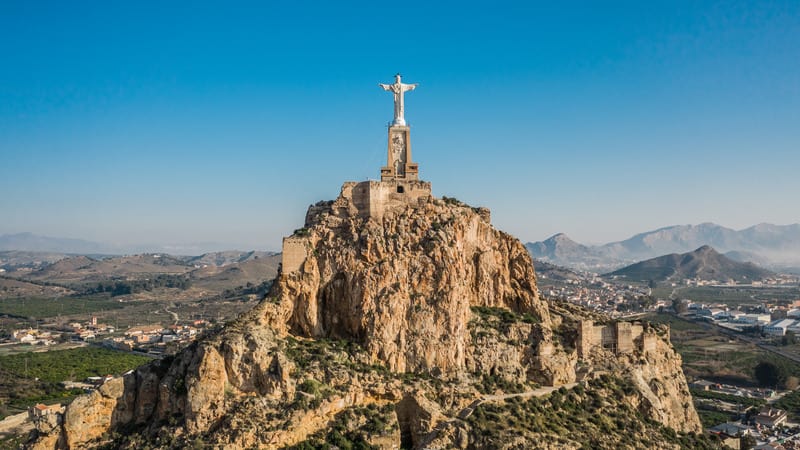
When considering what to do in Murcia Spain, exploring the Monteagudo Castle is a must.
Built around 1078 to protect the city of Murcia, Monteagudo Castle lies five kilometers outside the town on top of a rocky hill.
Following James I of Aragon’s defeat of the Moors in 1266, the castle guarded the border of Aragon and Castile until the 15th century.
In 1926, a 14-meter tall statue of Christ was erected on top of the castle, but Communist fighters destroyed it during the Spanish Civil War.
The current figure you see today is a replica of the first statue and was placed there in 1951.
Today, the castle is mostly just a pile of ruins that remain closed to the public. You can, however, drive up to the fence that surrounds it.
7. Have a coffee at the Plaza Cardenal Belluga Square
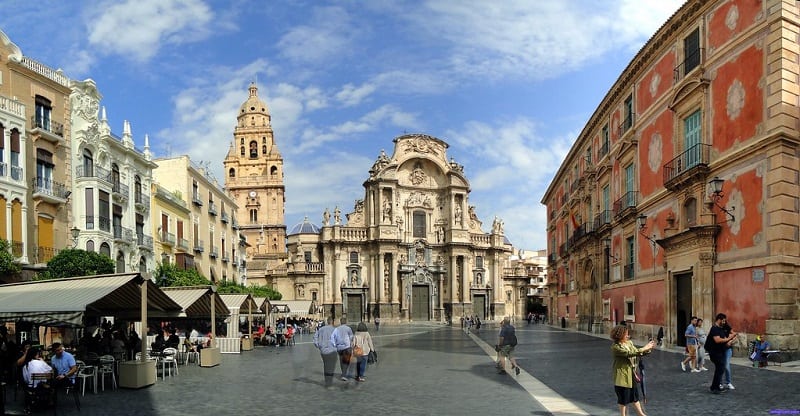
Located near the river in the historical center of Murcia, Plaza Cardenal Belluga Square is home to the city’s iconic cathedral, the bishop’s palace, and the Salla Belluga exhibition rooms.
On the right side of the Murcia city center Square opposite the cathedral, you will find the tourist office where you can pick up a free map of the city.
Pop into one of the bars or better still an outdoor table where you can have a cup of coffee and study the map before heading off into the old town.
8. Enjoy tapas in Murcia
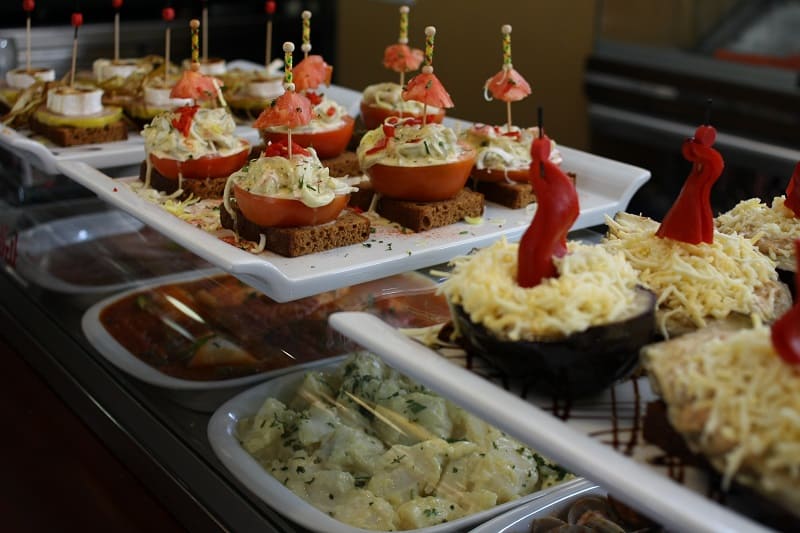
What is there to do in Murcia at night while not going hungry? Tapas..
Ask any knowledgeable chef, and they will tell you that Murcia has the best tapas in all of Spain.
Surrounded by fertile arable land and close to the Mediterranean Sea, food is an essential part of everyday Murcian life.
When it comes to finding tapas bars in Murcia, Andalucia, start your culinary tour in Plaza Cardenal Belluga with a plate of mussels and an ice-cold Estrella Levante beer.
Around the corner is Los Zagales , an old-school bar that serves fried baby squid from the Mar Menor .
Head over to the Plaza de las Flores, where you will find half a dozen or so excellent tapas bars. Here, you can spend the evening eating and drinking to your heart’s content .
If you love Spanish food, why not recreate it at home? Try your hand at our Vegetarian Empanadas Recipe , or recreate the delicious Spanish Mushroom Croquettes .
9. Stop by Jardín Botánico del Malecón

Before the day ends, stop by the Jardín Botánico del Malecón during your Murcia sightseeing.
Nestled along the banks of the Segura River, this botanical garden transforms into a magical oasis under the moonlight.
Illuminated pathways guide you through the enchanting surroundings, where you can admire the beauty of the plants bathed in soft, ethereal light.
There are also regular events done in the area, and are mostly free for all! It’s truly one of the fun things to do in Murcia Spain.
Now, if want to know what to see in Murcia city, here’s your day 2 itinerary suggestion on the places to go in Murcia.
10. Visit Murcia Market
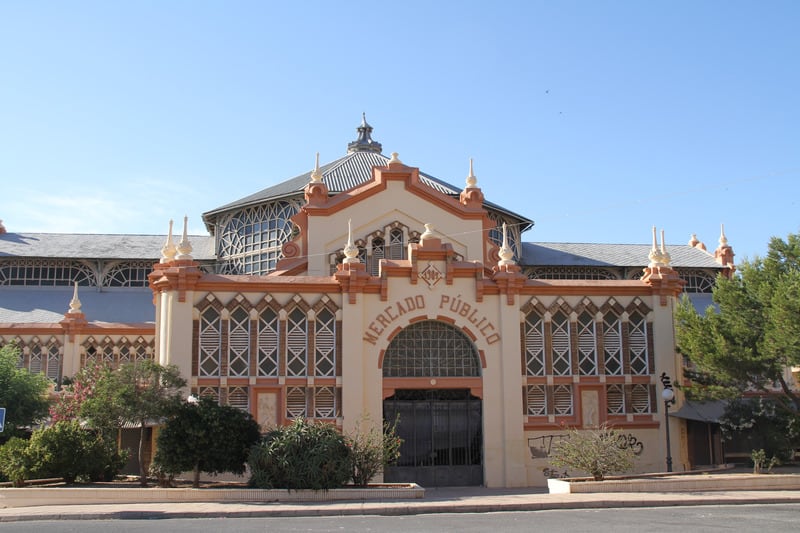
When it comes to things to do in Murcia, Spain, don’t forget to visit one of the city’s indoor food markets. The best one in Murcia is called Veronicas Market on Calle Plano de San Francisco .
Built between 1914 and 1917, Veronicas Market has a real Modernist feel and vendors whose families have owned stalls there since it first opened.
This is a must on any Murcia walking tour. – Check guided tours here
Opening Times: Monday-Saturday 08:00 to 14:00 Closed on Sunday
11. Have a tinto de verano at Plaza Flores
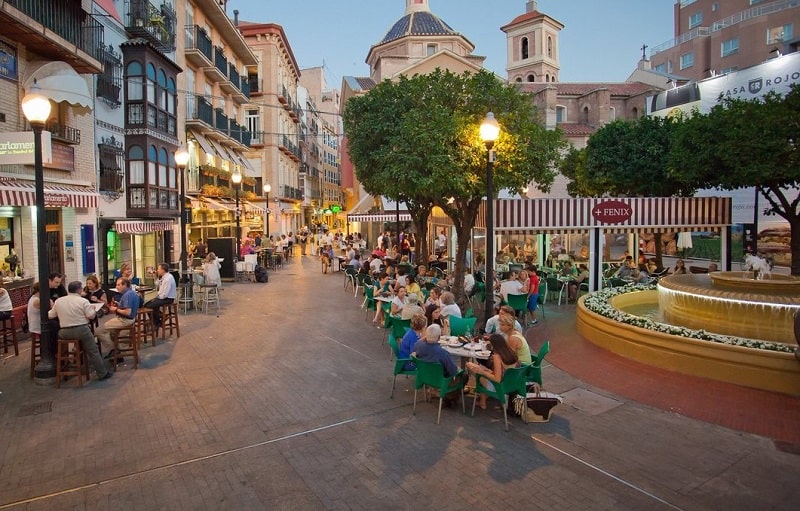
Located in the heart of Murcia’s old quarter, the Plaza Flores is where locals go when they want to enjoy a drink al fresco.
Pedestrianized with a fountain as its focal point, the Plaza Flores is the perfect spot to enjoy a tinto de verano .
Similar to sangria except without the fruit and sugar tinto de verano is a refreshing summer drink made from red wine and Spanish fizzy lemonade.
12. Wander along the Segura River
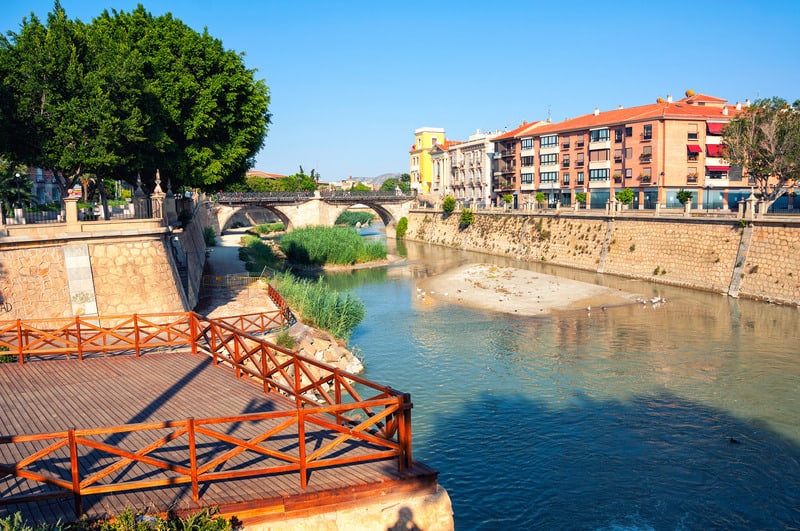
The Segura Riverbank is home to several parks connected to each other by paths, cycle lanes, and bridges.
The most important of these parks and the one you really must see is the Malecón Gardens or botanical gardens.
Designed during the 19 th century, the Malecón Gardens are one of the top things to see in Murcia and a favorite place where locals walk and admire indigenous plants from around the world.
If you are in the mood for a longer stroll, head out of the city in the direction of Javalí Nuevo until you come to a bend in the river.
There, picnic tables are available for the many people who like to come there and go swimming during the summer.
A great way to enjoy the Murcia River is by bike.
13. Do a Murcia Bike Tour
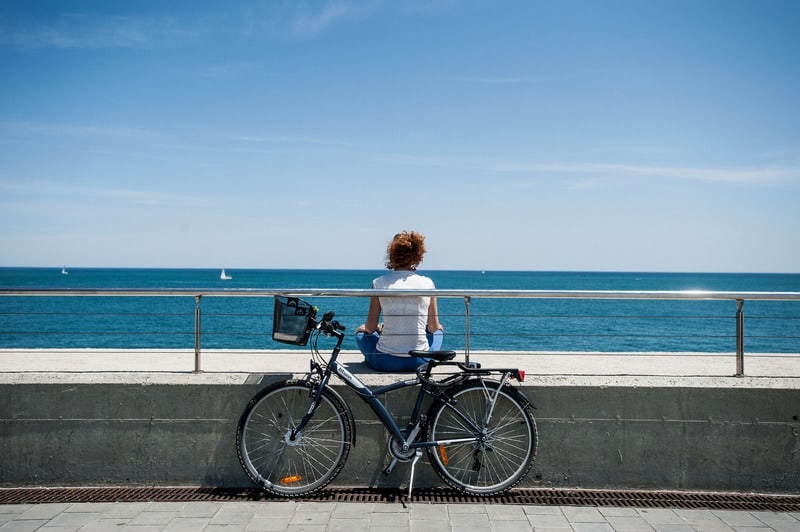
One of the things to do in Murcia, Spain that people often don’t think about is to rent a bike or go on a Murcia bike tour.
There’s a plethora of attractions to discover when deciding what to see in Murcia Spain, while on a bike.
Going on a bike tour with a local is a great way to learn all about Murcia and its historical agricultural origins.
Tours generally last around 3.5 hours and involve leisurely cycling through orange and lemon groves along the Segura River. – Check guided tours here
14. Lunch in Meson de Pepe
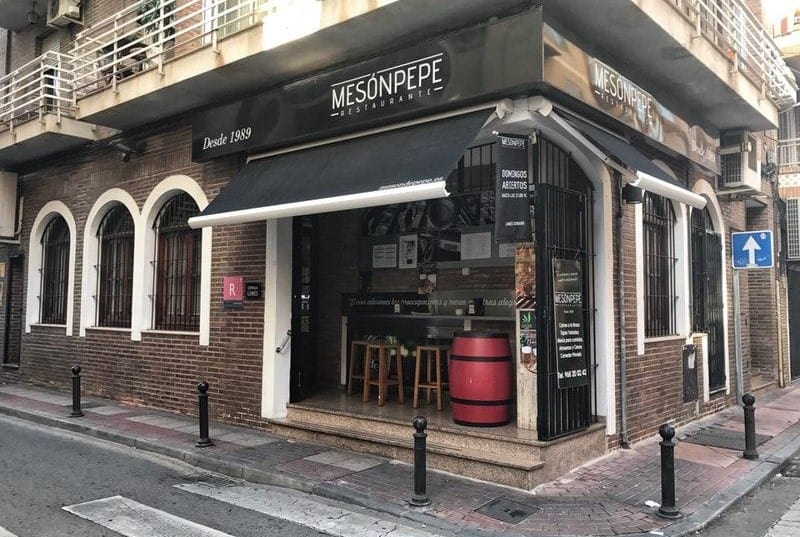
Located in the Vista Alegre neighborhood, just a short walk from the Murcia city centre Meson de Pepe has been serving traditional Murcian recipes since 1989.
With a variety of both fish and meat dishes, you are bound to find something on the menu that you will like.
Between Monday and Thursday Meson de Pepe offers a three-course set menu del dia that offers you to try local favorites at an amazing price.
Address: Calle Arquitecto Emilio Perez Piñero, 16, 30007 Murcia
Opening times: Daily 11:00-22:00
15. Wander in Floridablanca Gardens
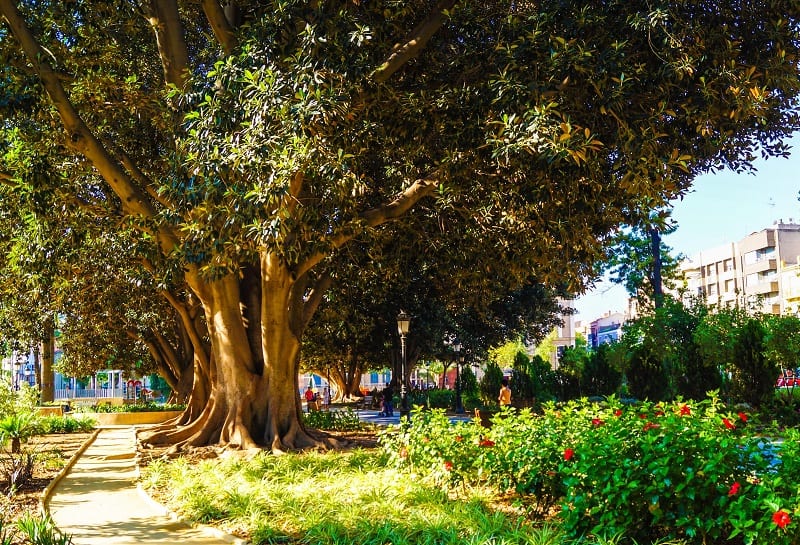
If you’re looking for more unusual things to do in Murcia, head to Floridablanca Gardens.
Named after economist and lawyer José Moñino Redondo , Count of Floridablanca, the Floridablanca Gardens were the first public gardens to open in Spain.
Located in the El Carmen district of the city, the park is an oasis of shade during the sizzling summer months thanks to centuries-old ficus trees that line the pathways.
The Floridablanca Gardens are one of the best things to do in Murcia for families.
16. Spend time Science and Water Museum

What to do in Murcia city with kids? Definitely a trip to the Science and Water Museum .
Located in the heart of the city, this interactive museum offers a fascinating journey through the wonders of science and the importance of water conservation.
Engage with hands-on exhibits and immersive displays that explore various scientific principles, from physics to biology.
Learn about the vital role that water plays in our daily lives through engaging demonstrations and educational activities.
Explore interactive installations that showcase the importance of sustainable water management and environmental conservation.
Address: Plaza de la Ciencia, 1 – 30002 – Murcia
Opening times: Tuesday-Saturday, 10:00 to 14:00, 16:30 to 19:00 and Sunday 10:00 to 14:00
Admission: 1.5€
17. Check Out the University of Murcia Aquarium

Make sure to include a visit to the Acuario de la Universidad de Murcia (University of Murcia Aquarium) during your time in the city, as it is near the Science and Water Museum.
Situated within the university campus, this aquarium offers an immersive experience of the fascinating world of marine life.
Wander through a series of captivating exhibits showcasing a diverse array of aquatic species, from colorful tropical fish to majestic sea turtles.
Engage with interactive displays and educational presentations that highlight the importance of marine conservation and biodiversity.
Address: Calle Cartagena s/n, Pabellón 4 – 30002 Murcia
Opening times: Tuesday-Saturday, 10:00 to 13:30, 17:00 to 20:30, and Sunday 11:00-14:00
Admission: 1€
18. Dinner in Murcia

If you are looking for something other than Spanish food and tapas , try Oven Mozzarella Bar for traditional Italian cooking that will make you feel as though you are in Tuscany .
More pizza and pasta rather than Ossobuco and Saltimbocca, Oven Mozzarella Bar nevertheless serves up quality Italian cuisine in a warm contemporary atmosphere.
Address: Plaza Julian Romea 5, 30001 Murcia
Opening times: Sunday-Thursday 12:20 to 24:00; Friday-Saturday 12:30 to 01:00
19. Experience Nightlife

Explore Murcia’s vibrant nightlife by exploring its lively bar scene and engaging in exciting activities after the sun sets.
Start your evening by sampling delicious cocktails and soaking in the energetic ambiance at La Tapa, a popular bar known for its creative drinks and eclectic atmosphere.
Next, head to El Perro Azul, a cozy tavern in the heart of the city. Here, you can enjoy live music performances ranging from jazz to flamenco while savoring local wines and tapas.
For a taste of Murcia’s hip and trendy vibe, head to Sala REM, a nightclub featuring top DJs spinning the latest hits and a vibrant dance floor that goes until the early hours of the morning.
On the third day, if you don’t know what to visit in Murcia yet, consider embarking on a delightful day trip to explore the surrounding area.
Just a short drive from the city, charming towns, stunning natural landscapes, and historical sites offer a glimpse into the region’s rich heritage.
Here are some activity options:
Enjoy a water park in Murcia (Terra Natura Murcia)
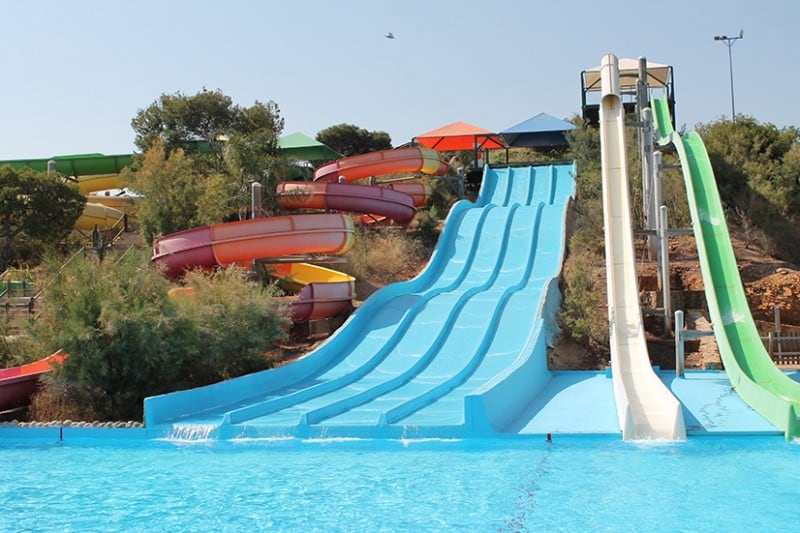
If you have kids in tow and want to do something the whole family can enjoy, consider spending the day at a water park.
Located on the outskirts of town Terra Natura has several swimming pools suitable for both adults and children.
The water park features several water slides that vary in height and a lazy river ride for those just looking to relax while soaking up the sun. – Buy tickets in advance here .
Address: Calle Regidor Cayetano Gago, s/n, 30100 Espinardo,
Opening times: 10:00 to 17:00
Visit Mar Menor
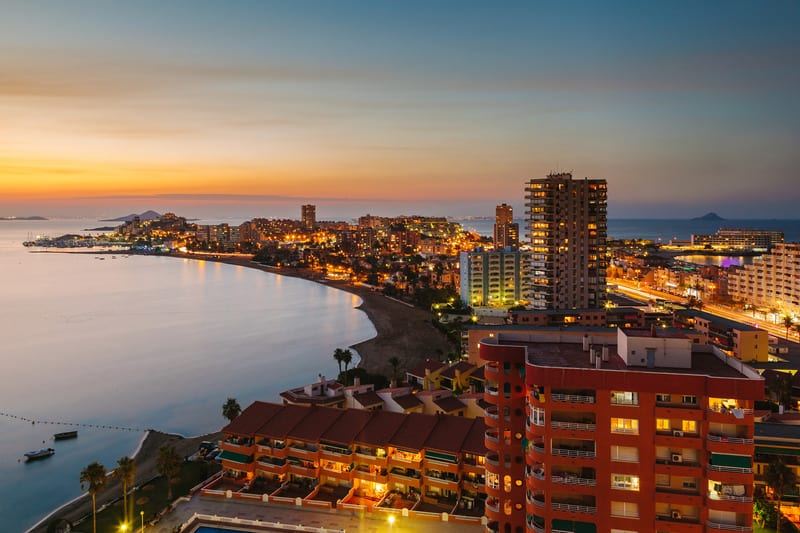
When it comes to things to see and do near Murcia, a trip to Mar Menor has to be on your list of places to visit in Murcia.
Considered to be the largest Lagoon in Europe, the Mar Menor is separated from the sea by a narrow strip of land called La Manga .
Ideally suited to water sports and shallow enough for young children to swim, the area around Mar Menor has some of Spain’s best golf courses, making it a year-round resort.
Check Out some of Murcia’s best beaches at Costa Calida
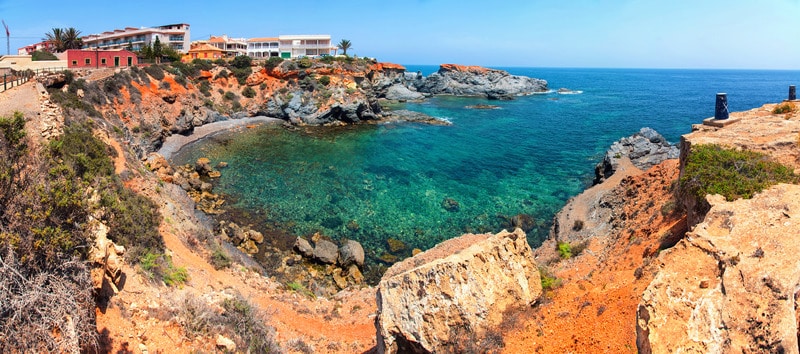
The beaches in Murcia are some of the best in Spain and not crowded like the Costa Blanca .
On the Costa Calida , dunes and virgin pine forests back many of the beaches. It’s one of the best places to visit near Murcia.
Popular resorts include the hotels on La Manga, a 22-kilometer-long strip of land that separates the Mar Menor from the sea. From here, it is only a short trip to the pink lake of Torrevieja.
Of the beaches, our favorite is Playa Honda, where you will find a lovely promenade and plenty of water sports activities. – Book here the best activities near Murcia
Do Day trip to Lorca
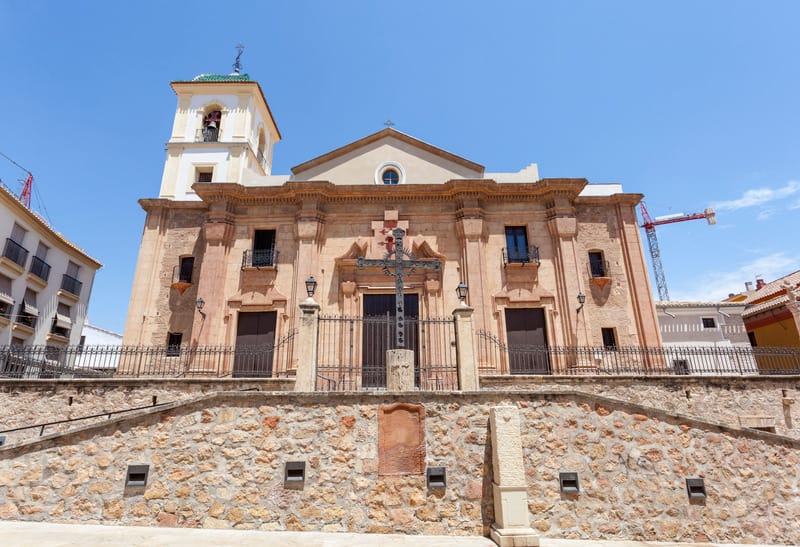
When people ask what to do in Murcia, we always say be sure to visit the Baroque city of Lorca . Indeed, it’s one of the best day trips from Murcia and a major tourist attraction in the region of Murcia .
While in Lorca, there are plenty of things to see and do, like the magnificent castle of the sun, a towering fortress that served both the Moors and Christian armies.
Dive into Lorca’s past by starting your tour of the old town in the Plaza de España . Along with the stately looking buildings is a unique church dedicated to Saint Patrick.
The church celebrates the Battle of Los Alporchones and the Christian victory over the Caliphate of Granada on March 17th, 1452.
In the near surroundings of Lorca, you’ll also find plenty of outdoor activities such as hiking or biking.
You should also check out this post we wrote on the things to do in Granada .
A Day Trip to Cartagena
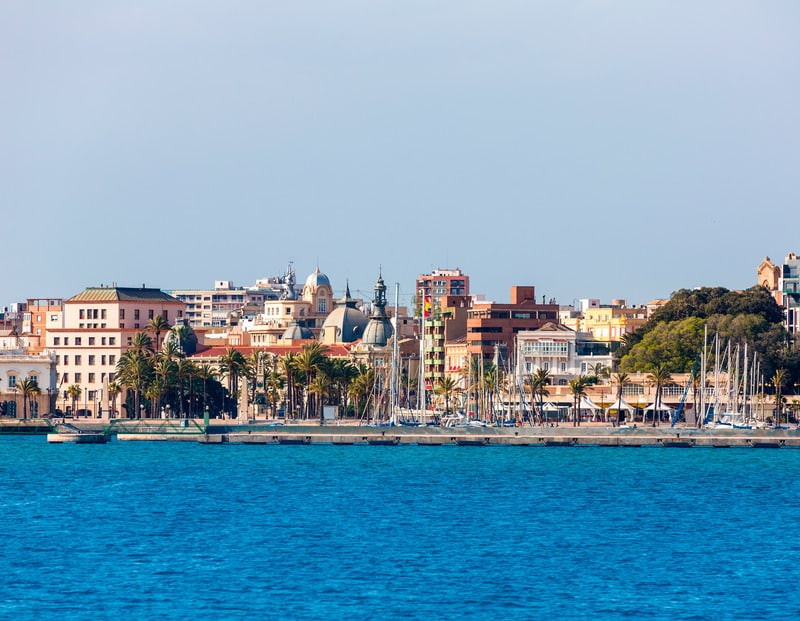
Home to the Spanish navy’s most extensive base, Cartagena’s natural harbor was first settled by the Carthaginians around 220 BC and became one of the most important Roman cities in Spain.
A trip to Cartagena is one of the best things to do near Murcia city.
Today, a history buffs dream Cartagena is easily seen on foot thanks to an extensive network of pedestrian streets and waterfront walkways.
Things to do in Cartagena must include visiting the Roman theatre and the archaeological museum to learn all about the civilizations that called Cartagena home.
Exploring Cartagena is definitely one of the best things to do near Murcia. – Check guided tours here
Best Hotels in Murcia, Southern Spain
The city of Murcia is home to some of the best hotels in the Murcia region. Whether you’re looking for a budget place to stay or a luxury hotel, there are some fantastic places to stay in Murcia.
Here are our top picks for accommodation in Murcia.
Sercotel JC1 Murcia **** – Luxury
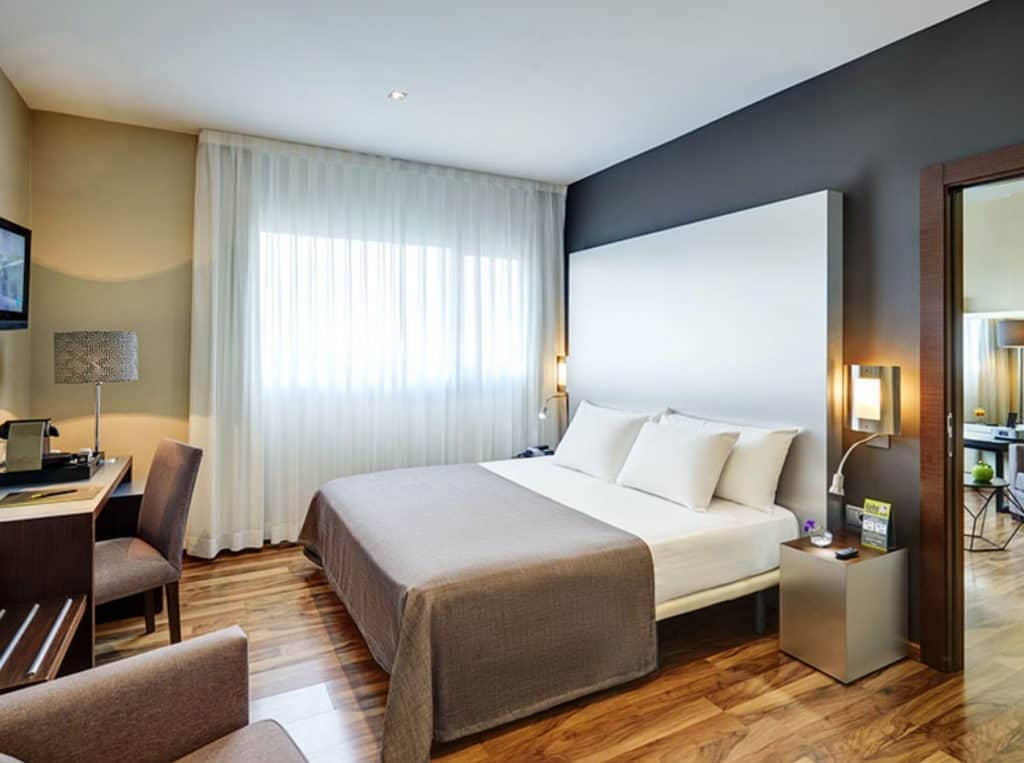
Based in the business district, a 5-minute tram ride from the historic center and shops in Murcia, this modern, stylish hotel features every amenity.
All rooms are air-conditioned and have a private bathroom, minibar, and satellite television. The hotel also features a spa and gym that are available for a surcharge.
At the Sercotel JC1, Murcia guests enjoy a complimentary coffee service and breakfast buffet. The hotel’s restaurant serves lunch and dinner either inside or out on the terrace.
This is one of the best hotels in Murcia, Spain! – Check rates & reviews here
Address: Av. Juan Carlos I, 55, 30100 Murcia
Hesperia Murcia Centro *** – Mid-Range
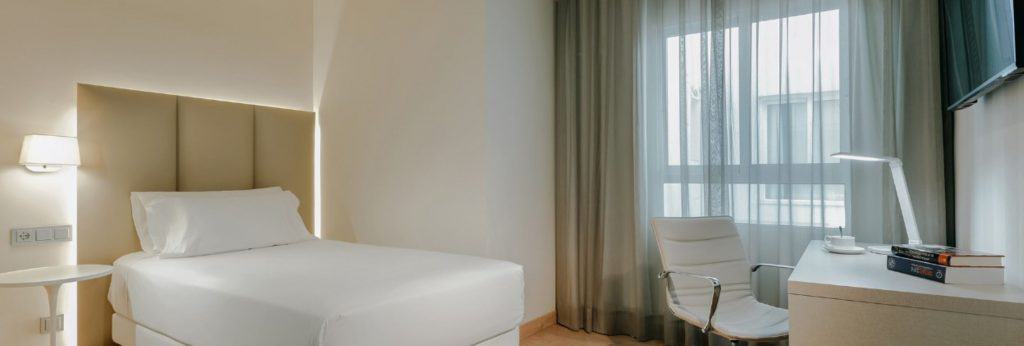
Located close to all the things you want to see in Murcia, the recently refurbished Hesperia Murcia Centro is just 200 meters from the cathedral.
All rooms’ air-conditioned rooms come with private bathrooms, free Wi-Fi and satellite television.
The Hesperia Murcia Centro operates a 24-hour reception desk and its guests a complimentary buffet breakfast.
This hotel is a great option when looking for accommodation in Murcia with a mid-range budget. – Check rates & reviews here
Address: Calle Madre de Dios, 4, 30004 Murcia
The Cathedral Hostel – Budget
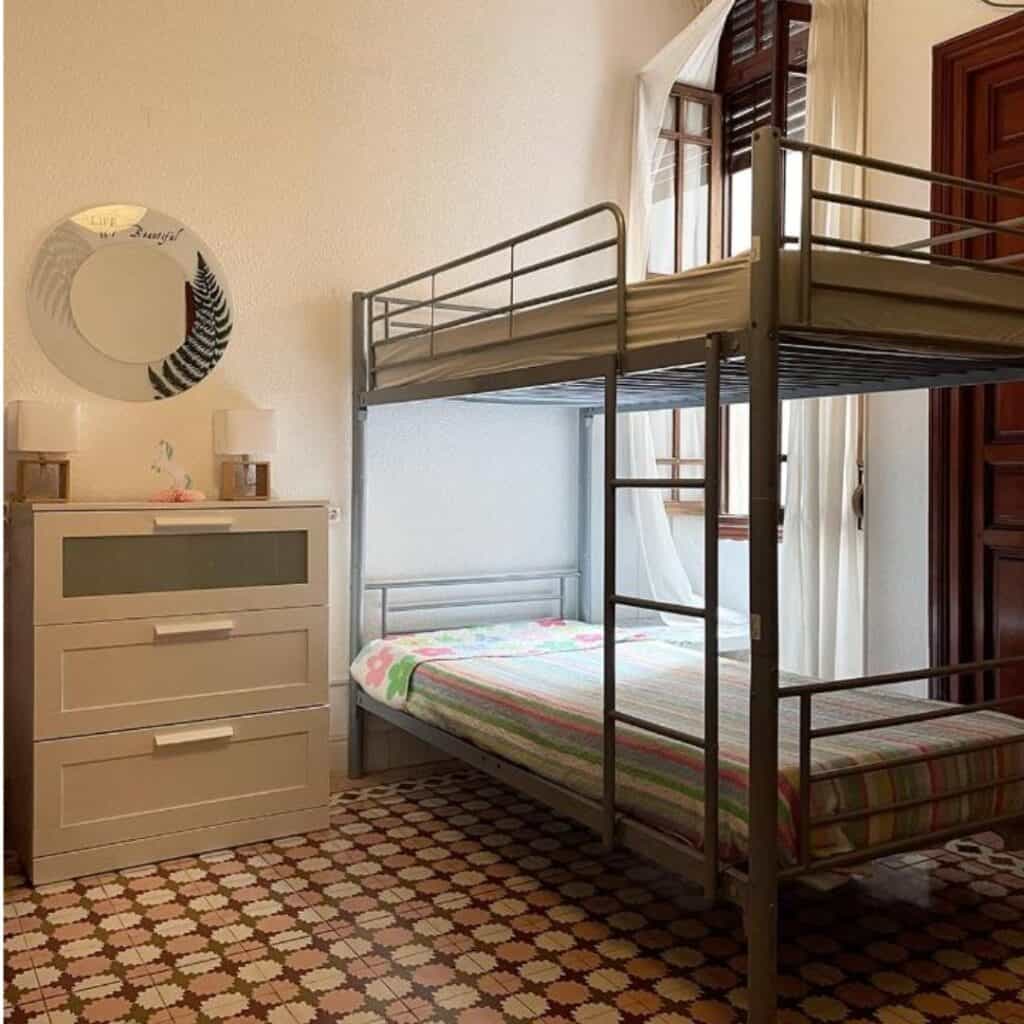
Situated in Murcia’s historic district, this contemporary hostel is merely 200 meters from the cathedral. It offers bicycle rental and air-conditioned dormitory rooms.
The Cathedral Hostel boasts intricate floor tiling, and several dormitories offer private balconies.
Within a 5-minute stroll lies Glorieta Square by the Segura River, home to the Town Hall, while Murcia-San Javier Airport is a 45-minute drive away. – Check rates & reviews here
Address : Calle Trapería, 19, 30001 Murcia, Spain
How to get to Murcia
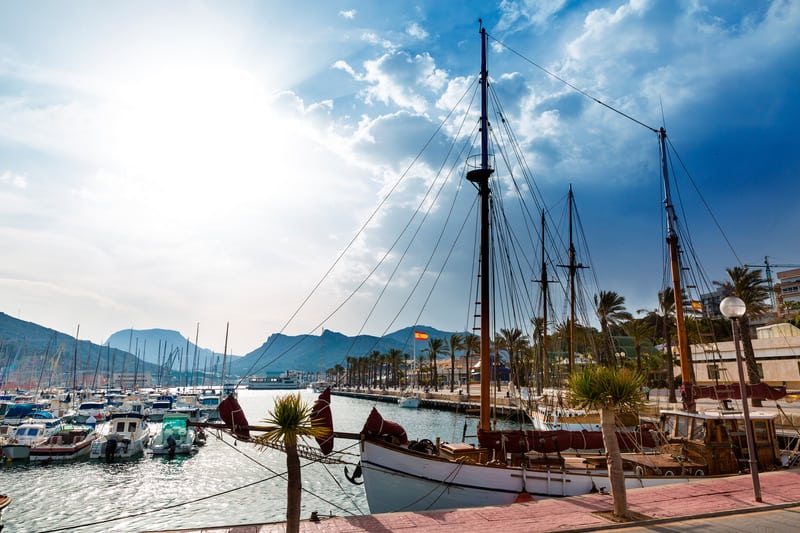
How to get from Alicante to Murcia:
There are several buses a day to Murcia from the main bus stations in Alicante (1h) or travel by train from the main station (1h 24m). – Buy tickets here
How to get from Benidorm to Murcia:
There are direct buses from Benidorm to Murcia with a stop in Alicante (1.45m). – Get tickets here
How to get from Torrevieja to Murcia:
Getting to Murcia from Torrevieja by bus or train requires a stop in either Orihuela or Alicante (2h 31m). – Buy tickets in advance here
How to get from Madrid to Murcia:
Getting to Murcia from Madrid is very simple via high-speed train departing from Atocha Train Station (3h 28m) by bus with a stop in Albacete (4h 35m). – Buy train tickets here
How to Get from Barcelona to Murcia:
The best way to travel from Barcelona to Murcia is to drive, which takes, on average 5 hours, 42 minutes. – View hire car prices and availability here .
Another good way to get from Barcelona to Murcia is by train via Alicante. The average journey time is 4 hours, 57 minutes. – Purchase tickets here .
Alternatively, you can take a bus from Barcelona (usually overnight), which takes 8.5-10 hours. – Buy bus tickets here .
How to get from Malaga to Murcia:
The easiest way to get from Malaga to Murcia is to drive. The journey takes 4 hours. This is a lot quicker than other options and worth hiring a car for. – View hire car prices here .
You can also travel from Malaga to Murcia by bus (6 hours, 20 minutes). Some buses are direct, and some change in Almeria. – Get your bus ticket here.
How to get from Valencia to Murcia:
The quickest way to get from Valencia to Murcia is to drive. This option only takes 2 hours, 19 minutes. – View hire car prices here.
There’s also a high-speed train from Valencia-Estacio Del Nord to Murcia Del Carmen. This option takes 3 hours, 34 minutes. – Get your train tickets here.
Buses from Valencia bus station take 3 hours, 15 minutes to reach Murcia. – Get your bus ticket here .
Getting Around Murcia
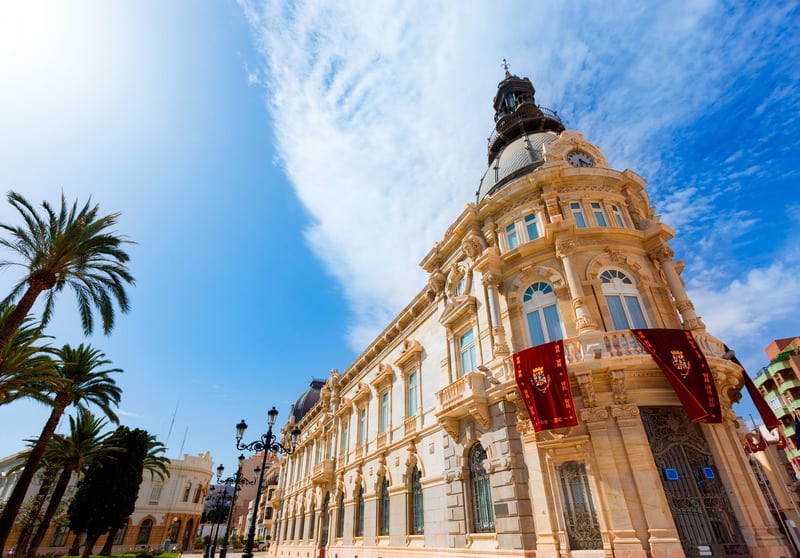
If you are staying near the city center, you can quickly get around the old town and significant Murcia attractions on foot.
If you are staying out in the suburbs or want to get to and from the university Murcia has a fleet of modern air-conditioned buses and 18 kilometers of tram tracks.
The tram is especially useful if you wish to visit some of the larger shops in Murcia and need to get from Murcia city center. Taxi ranks are found throughout Murcia and operate using a taximeter.
All Murcia taxis are white and have a red and yellow sticker with their cab number on the front doors.
In case you are looking for a day trip from Murcia or the next stop on your Southern Spain itinerary, you should have a look at our 3-day itinerary, Almeria .
Best Attractions in Murcia, Spain – Map
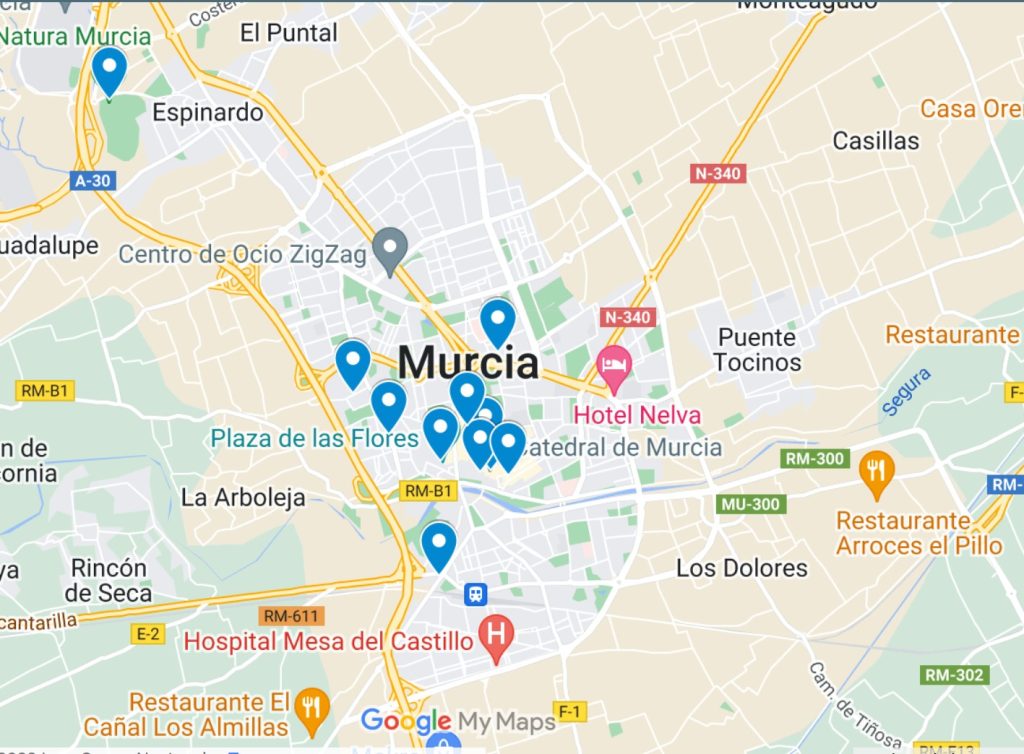
A short FAQ about Murcia, Spain
Where is murcia in spain.
Murcia is located on the Segura River in south-eastern Spain.
What are things to do in Murcia when it rains?
On a rainy day, you should definitely visit Museum Salzillo .
Is Murcia Spain an interesting place to visit?
Yes, there’s no doubt about it. Just look at the Monteagudo Castle for example.
Is Murcia the hottest part of Spain?
Generally speaking, Murcia is not the hottest area of Spain. In fact, the southeastern coast of Andalucia – including cities such as Almuñecar and Málaga – usually experience the highest temperatures during the summer months. However, Murcia is one of the hottest areas in Spain, with temperatures reaching around 34°C during peak summer in August.
Is Murcia warm in winter?
Yes, Murcia’s climate is mild throughout the year. Temperatures remain fairly warm during the winter months with lows of 17°C. Temperatures rarely fall below 5°C.
What towns and villages are there to visit around Murcia?
The city of Murcia has many towns and villages to explore nearby. Visiting a village or town is the perfect day trip. The most popular include Cartagena, Lorca, Yecla, Mazarrón, and Calasparra, all of which are less than 1 hour’s drive away from Murcia.
What is Murcia known for?
Murcia is known for its vibrant culture and history. It is home to some of the most important landmarks in the Murcia region, including the Museum of Fine Arts, the Santa Clara Convent, and the Church of San Esteban.
There are many beautiful parks and plazas to explore in Murcia’s Old Town, such as Plaza de las Flores and Jardines del Bobadilla. The city also hosts several festivals throughout the year. Murcia is also famous for its culinary scene, and the city offers a variety of traditional Spanish dishes to try.
Is Murcia worth visiting?
Murcia is a less visited city in Southern Spain and is therefore a great place to visit if you want to travel off the beaten track in Spain.
Founded by Abd-Al-Rahman II the then emir of Cordoba in 831, Murcia was an important city during Moorish rule prospering from the export of silk and paper.
Following the Christian conquest by James II of Aragon in 1296, Murcia fell into decline until the neighboring Muslim kingdom of Granada was defeated in 1492.
Wealthy once more right the way up to the 18th century, it is from this period that most of Murcia’s great churches and buildings were constructed.
Today Murcia is known throughout Spain for being a university town and home to some of the best tapas bars in the country.
How many days in Murcia?
You can spend 3 days in Murcia for a well-rounded experience. But you can shorten it or extend it depending on what you like.
What are things to do around Murcia?
Some fun things to do in Murcia Spain, include visiting the Cathedral of Murcia, relaxing in the Plaza Cardenal Belluga , exploring the Murcia Archaeological Museum, and indulging in regional cuisine at local restaurants.
What are the best places to see in Murcia?
Some Murcia sights to see include the stunning Murcia Cathedral, the historic Real Casino de Murcia , the picturesque Plaza Cardenal Belluga , the scenic Segura River, the vibrant Mercado de Verónicas , and the beautiful Floridablanca Garden.
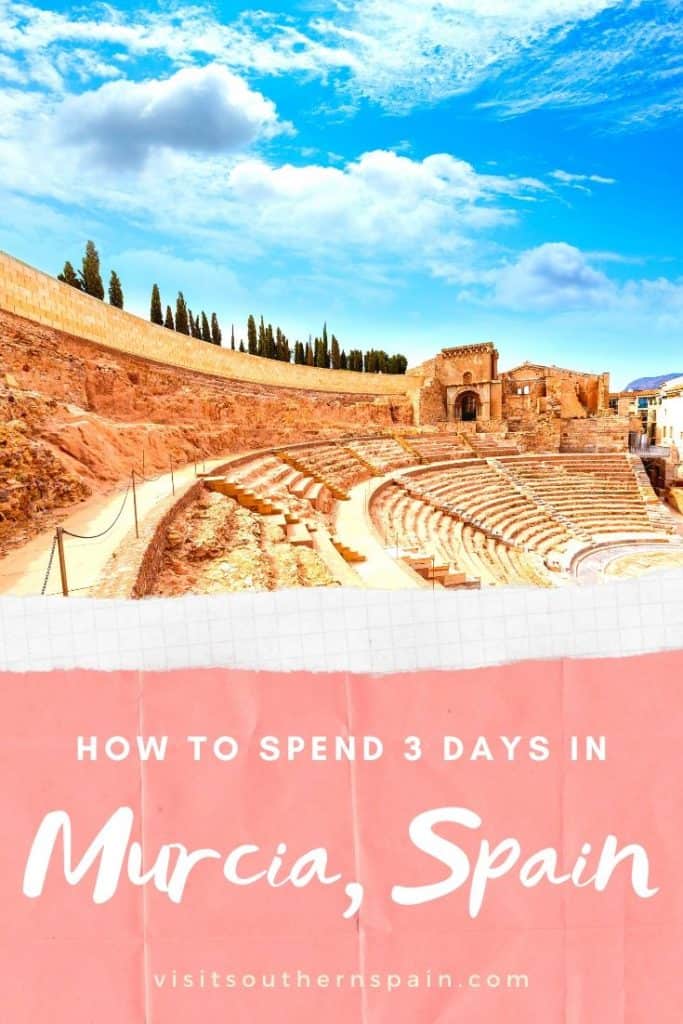
Hola, I’m Paulina! Together with my team, we are passionate about Southern Spain. Here we share all you need to know for great times in Southern Spain with the best places to visit, stay and, of course, the best food to eat.
Let’s dive in and explore Southern Spain’s outdoors, food and culture con pasión!
Sunshine Seeker
Dream ◇ Create ◇ Travel
Popular categories, top 20 epic things to do in murcia spain.
By: Charlotte · Last updated 7. July 2024 · In: Spain , Travel

Are you looking for the best things to do in Murcia, Spain? Then you’re in the right place! I have spent 17 years exploring the Murcia region, our holiday apartment here has been like a second home.
Less developed and visited than its neighbors, Valencia to the north and Andalucía to the south, Murcia is still somewhat of a hidden gem in Spain .
The region boasts over 300 sunny days a year, and its coastline, known as the Costa Cálida, is dotted with everything from small coves to mile-long golden sandy beaches.
Take a dip in the warm waters of two seas, play a round of golf, go wine tasting, explore medieval fortresses or take part in some water sports. Whether you want a relaxing or active vacation, one thing is for sure in Murcia, you are spoilt for choice.
So let’s take a closer look at my favorite things to do in the Murcia region in Spain .
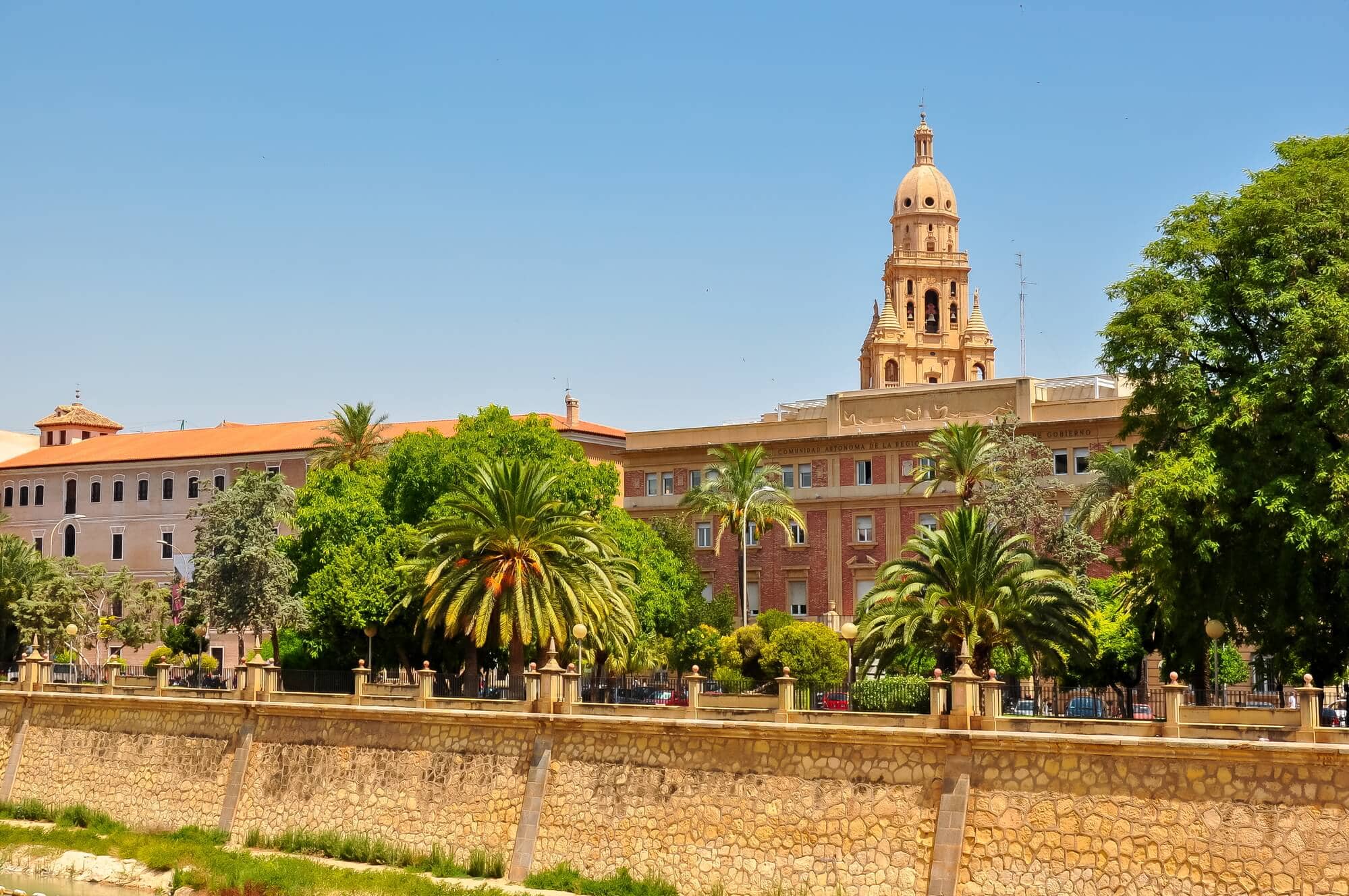
🌟 Remember, always get insurance before you travel to Spain or anywhere else. Safetywing is an affordable subscription travel insurance that you can purchase even after departure. Read my complete SafetyWing review here .
Article overview
1. Explore Murcia City
2. cycle through ricote valley, 3. rafting in almadenes canyon, 4. spelunking in cueva del puerto, 5. light a candle at our lady of hope sanctuary, 6. step back in time in cartagena, 7. cool down in salto del usero, 8. see flamingos in san pedro del pinatar, 9. walk up to cabo de palos lighthouse, 10. explore lorca castle, 11. spend a day at playa de calblanque, 12. marvel at ciudad encantada de bolnuevo, 13. enjoy the view from bateria de castillitos, 14. join a tour of mazarrón mines, 15. look for pirates from aguilas castle, 16. stop by rincón del hornillo águilas, 17. go for a stroll in caravaca de la cruz, 18. hike barrancos de gebas, 19. enjoy the sun at playa del conde, 20. get back to nature in sierra espuña, how to get around the murcia region, best murcia tour, best time to visit murcia, how much time should i spend in murcia, is the region of murcia in spain worth visiting, remember to save for later 😉.
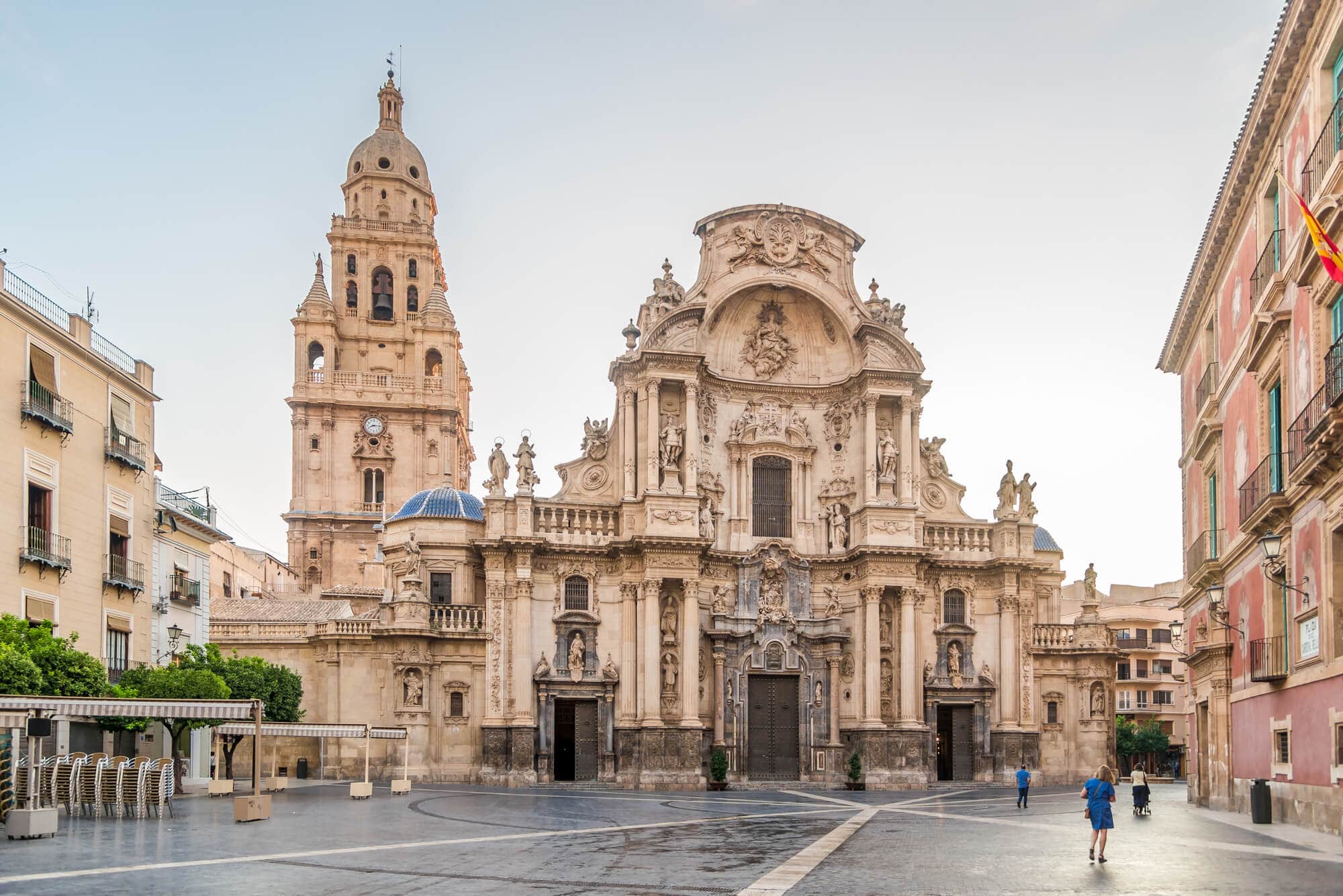
Murcia, the capital city, sits on the banks of the Segura River east in the region. The impressive Gothic Baroque style Santa María Cathedral and Plaza del Cardenal Belluga are the city’s main tourist drawcards.
Climb up to the top of the bell tower where you get panoramic views of the city or sit down at one of the many cafés outside and enjoy the exciting mix of old and new architecture.
At the opposite end of the Plaza, you’ll find the controversial Moneo building which houses the town hall and right next to it, the beautiful, pink Bishop’s Palace dating back to the 1750s.
If you’re in search of gastronomy, culture, history and a taste of “off the beaten path Spain”, you have to spend a day in Murcia.
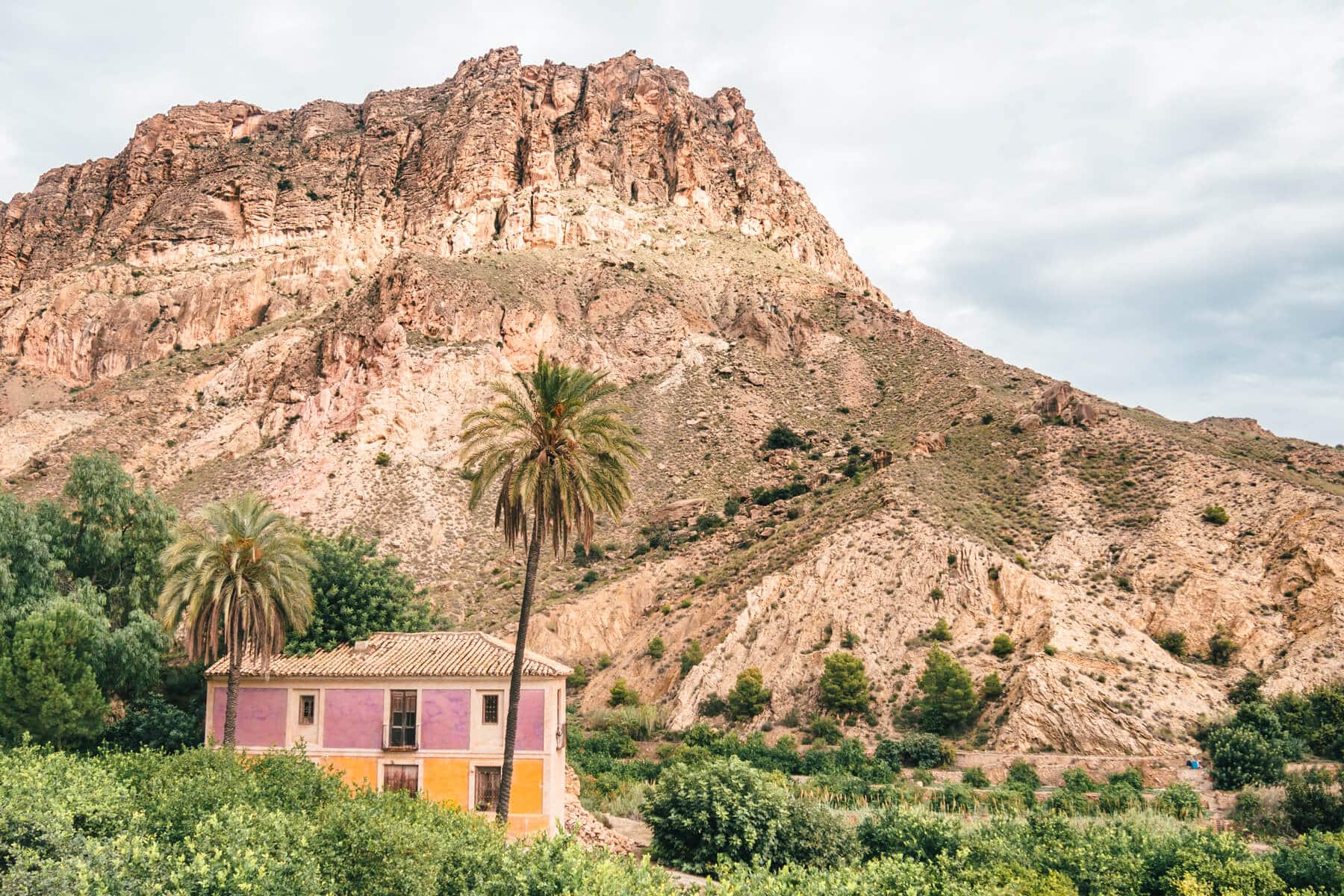
Valle de Ricote or Ricote Valley is one of the most beautiful and undiscovered parts of not only the Murcia region but the whole country. Cave drawings, Iberian settlements, Roman ruins and the iconic Hispanic – Muslim Medina Siyasa are some examples of its rich cultural heritage.
Cieza, an agricultural town renowned for its production of peaches and olives, is for many the first stop in the valley.
For a few weeks every spring you can experience an incredible phenomenon known as Floración de Cieza . When thousands of hectares of peach trees go into bloom creating a pink blanket surrounding the whole town. It’s a spectacular sight!
From Cieza the river runs through small towns and villages like Abarán, Blanca, Ojós, Archena, Ricote and Ulea, all with their own quirks and charm making them well worth a visit.
You can drive through the whole valley or if an active holiday is what you’re after there are many hiking, horse riding, biking and rafting opportunities. Exploring the Ricote Valley is definitely one of the top things to do in Murcia !
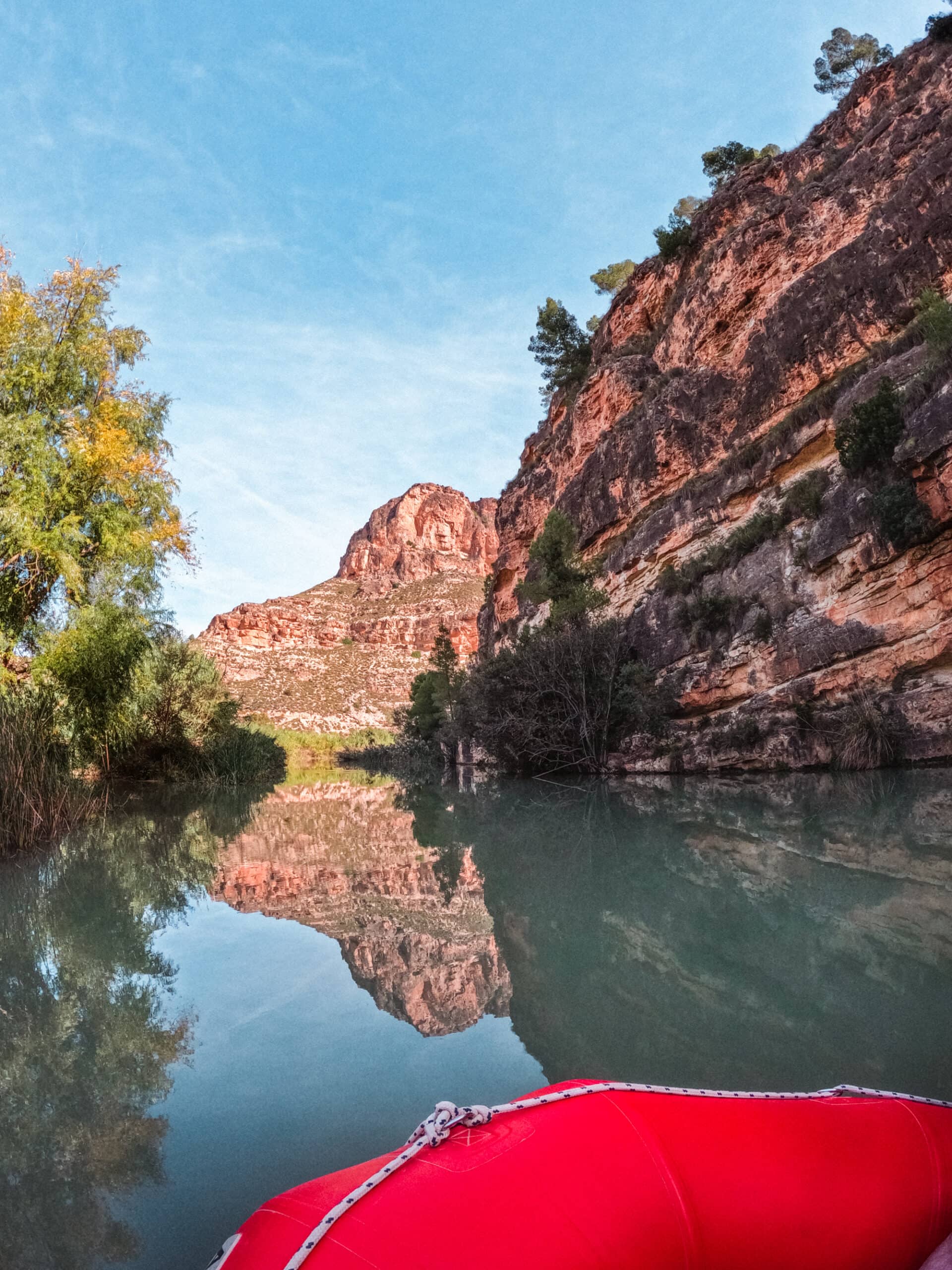
For a different experience in the Murcia region, book a rafting tour on the stunning Segura River! My family and I absolutely loved this experience.
My mom was a little skeptical about the rafting part, however, it turned out to be very calm without any rips or falls. Our guides were also super patient, funny and knowledgeable.
We got to spend two hours admiring the beautiful scenery of this protected area known for its lush riverine forest, rocky landscape, ancient cave paintings and otters.
Read my complete review here: Rafting the Segura River in Murcia .
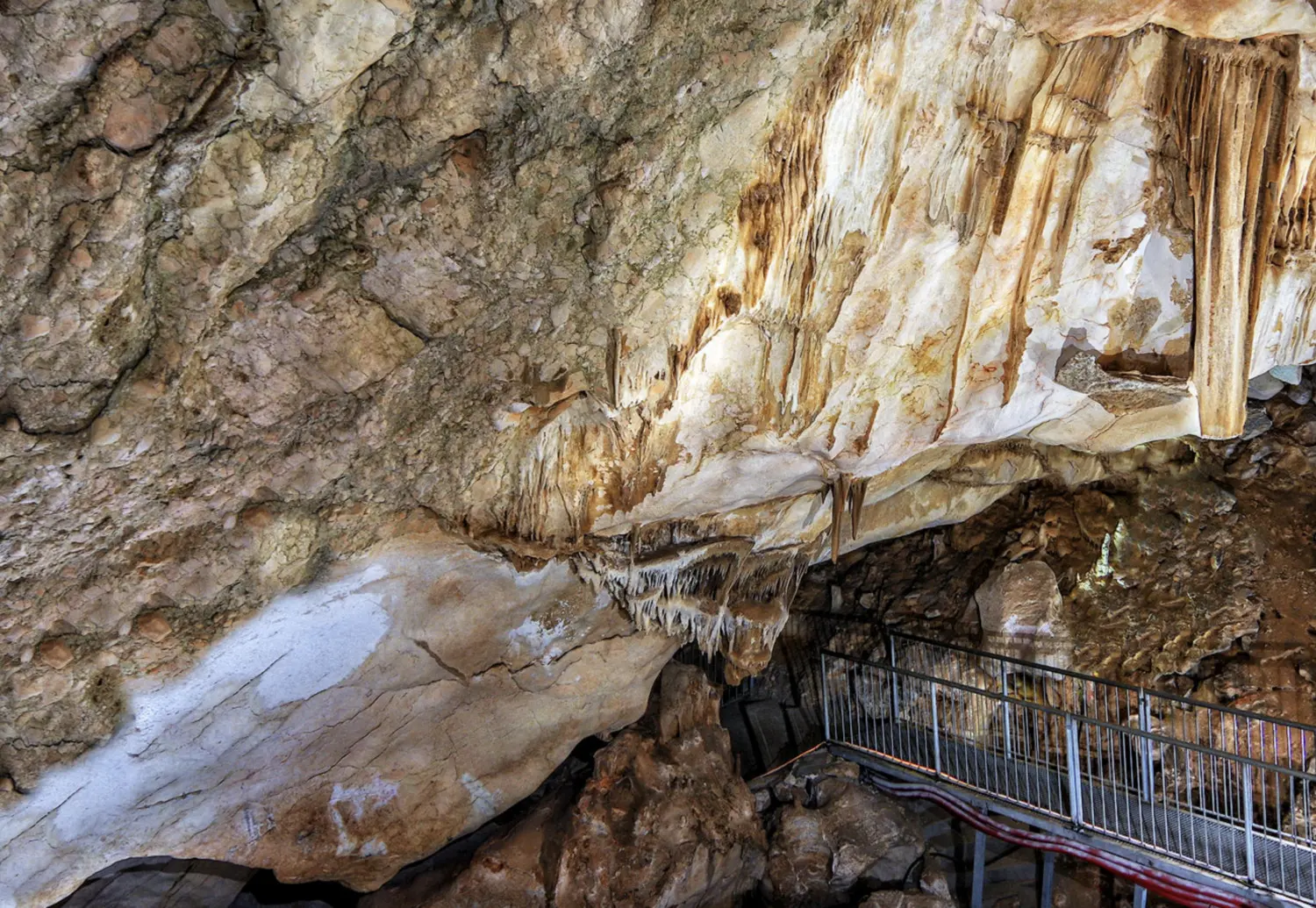
Cueva del Puerto, close to the rafting location in Calasparra, is an impressive limestone cave known for its remarkable geological formations.
This subterranean wonder boasts a variety of stalactites, stalagmites, and flowstones that have been sculpted over millennia by water erosion and mineral deposits.
During your guided tour you will descend 50 meters underground and embark on an adventure in true Indiana Jones style. Learn how these interesting shapes and patterns were formed and hear the story of how they were discovered in 1966.
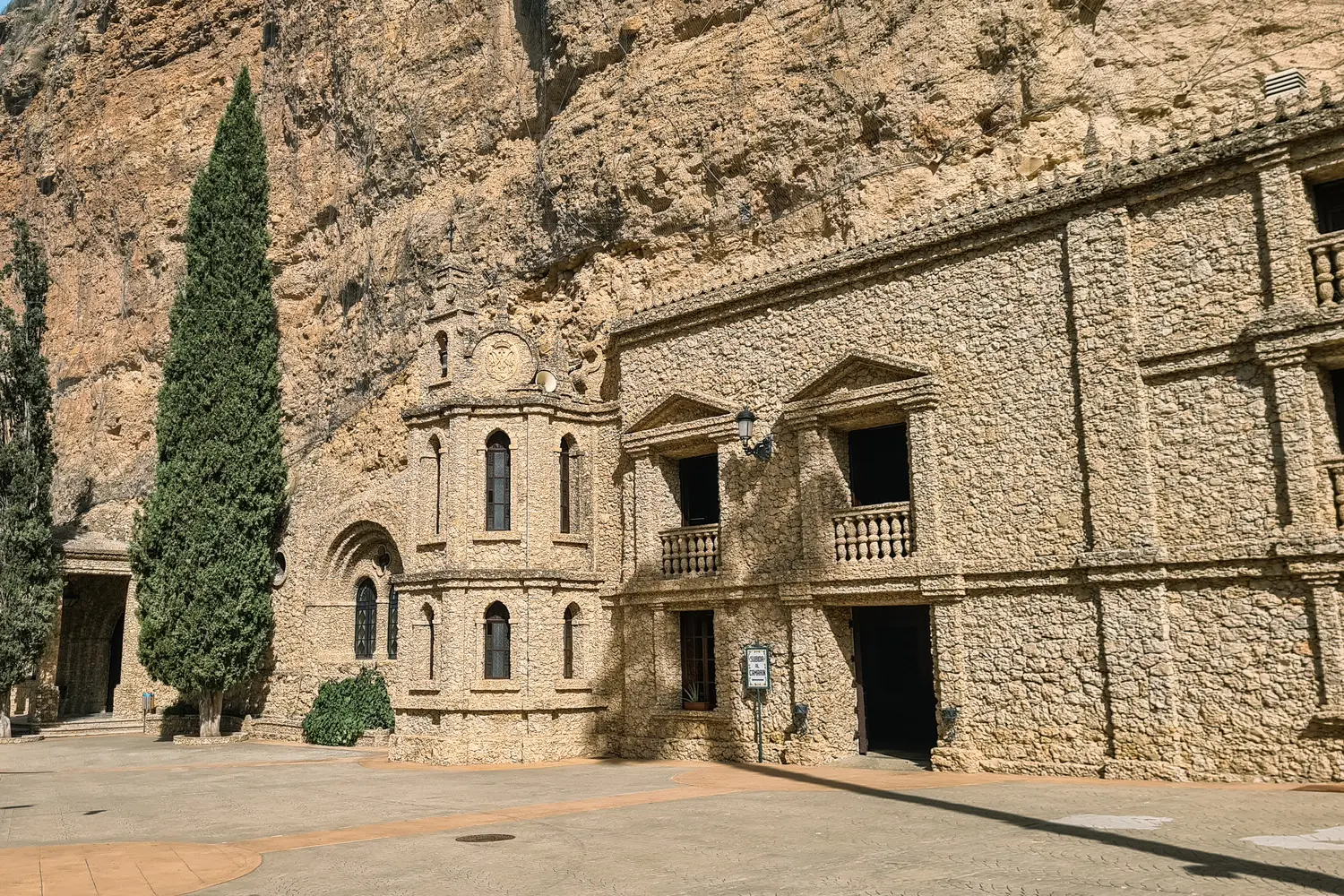
20 minutes down the road you’ll find Santuario Virgen de la Esperanza, or Our Lady of Hope Sanctuary, a sacred site set in the rocky cliffs along the banks of the Segura River.
What’s unique about this place is that the sanctuary is partially set inside a natural cave, carved out when the water levels were significantly higher.
Legends of how the sanctuary came to be, go back to the 16th century when a shepherd discovered an image of Virgen de la Esperanza, La Pequenica or “the little one” in the cave.

Inside, the sanctuary houses a revered image of the Virgin of Hope, making it a destination for pilgrims and those wanting to pay tribute to loved ones. I lit a candle for a close family member who recently passed away too young.
There is a restaurant onsite as well as picturesque picnic areas scattered around the grounds. You won’t be charged an entry fee, however, donations towards upkeep are encouraged.
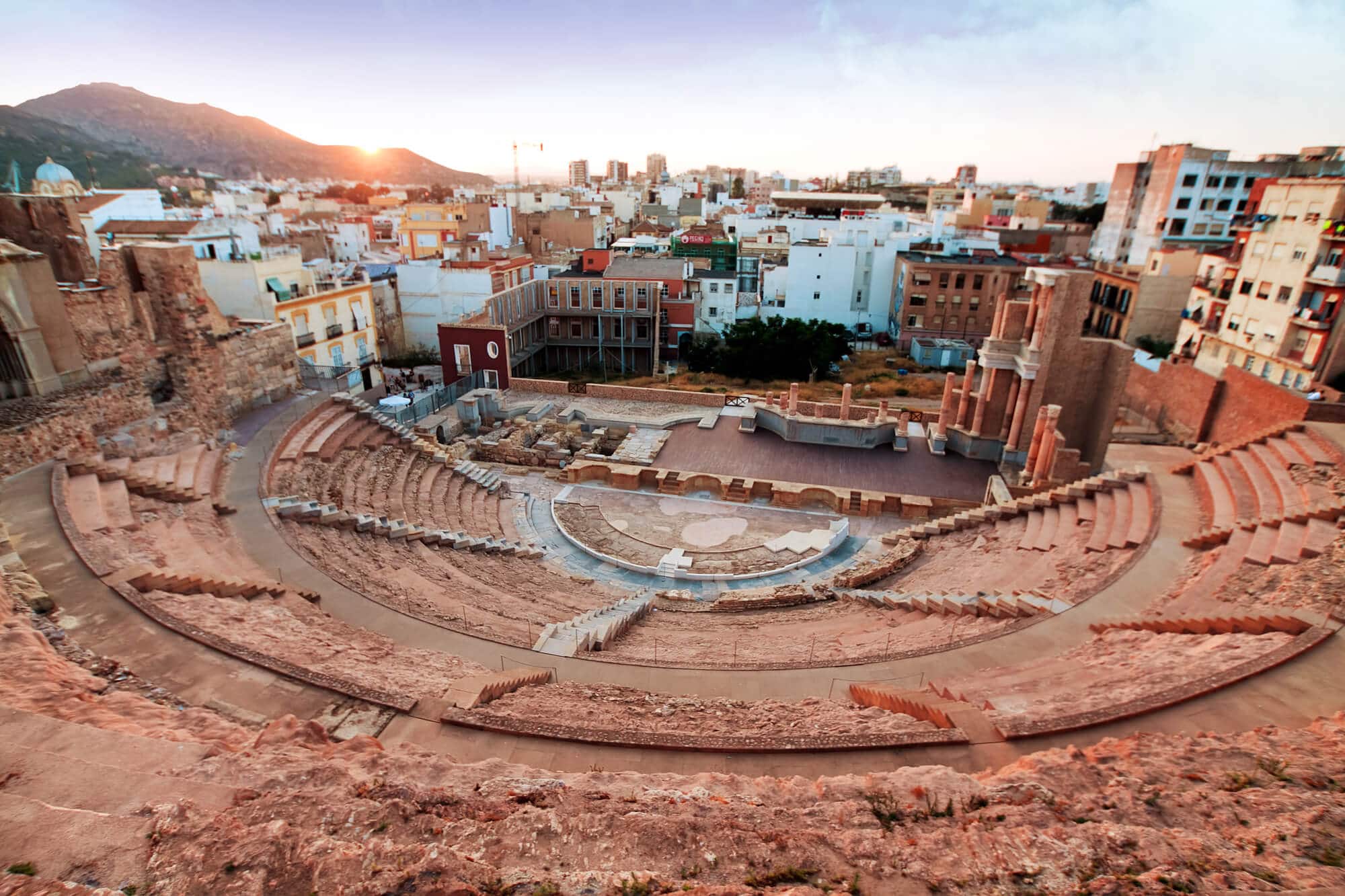
No visit to Murcia is complete without exploring Cartagena, a beautiful port city where every twist and turn tells a tale. If you’re a history buff like me, you’ll love wandering around historic streets.
Thanks to its strategic position on the Costa Calida, Cartagena has been inhabited by several cultures such as Arabs and Romans which all have left their mark.
The most important landmark in the city is the old Roman Theatre which dates all the way back to between 5th and 1st century BC. However, it wasn’t until 1988 that the first remains of the theatre were rediscovered during the demolition of another old building.
Today you can visit not only the Roman Theatre itself but also a large museum which will take you on an exciting journey through time. You can read more about the top things to do in Cartagena here.
🌟 Limited on time? Join this highly-rated Coves & Beaches Private Shore Excursion . A 5-hour tour of La Manga and Cabo De Palos, including a stop at 1 or 2 chiringuitos and pick up straight from the cruise ship or your accommodation in Cartagena. Perfect for groups of up to 7 people!
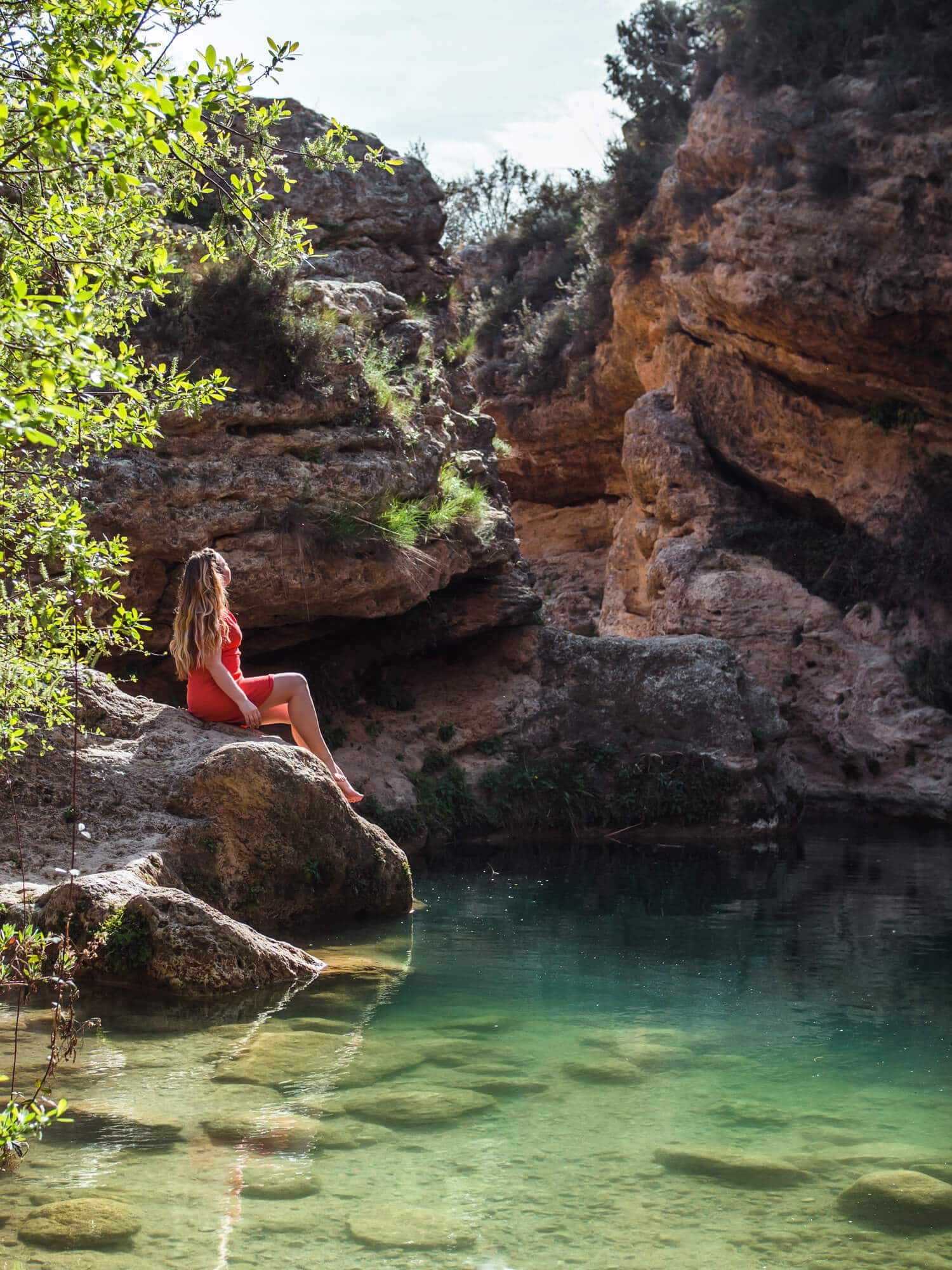
Salto del Usero, a gorgeous natural oasis awarded as a Site of Geological interest, is located just outside the town of Bullas. It is a hidden gem that mostly locals know about.
The waterfall and rock pools serve as an inland beach and offer great relief to both locals and visitors alike during the scorching hot summer months. Spending time here is one of my favorite things to do in Murcia .
Every year on June 23rd, large crowds gather here to take part in a 225-year-old tradition. A ceremony that recreates the legend of a Moorish princess who jumped into the river after being stood up by her Christian lover.
Keep in mind that you’re not allowed to drive all the way down and park next to the Salto and that you will be enjoying the area at your own risk. Do not jump into the water and respect the flora, fauna, and geological formations of the area.
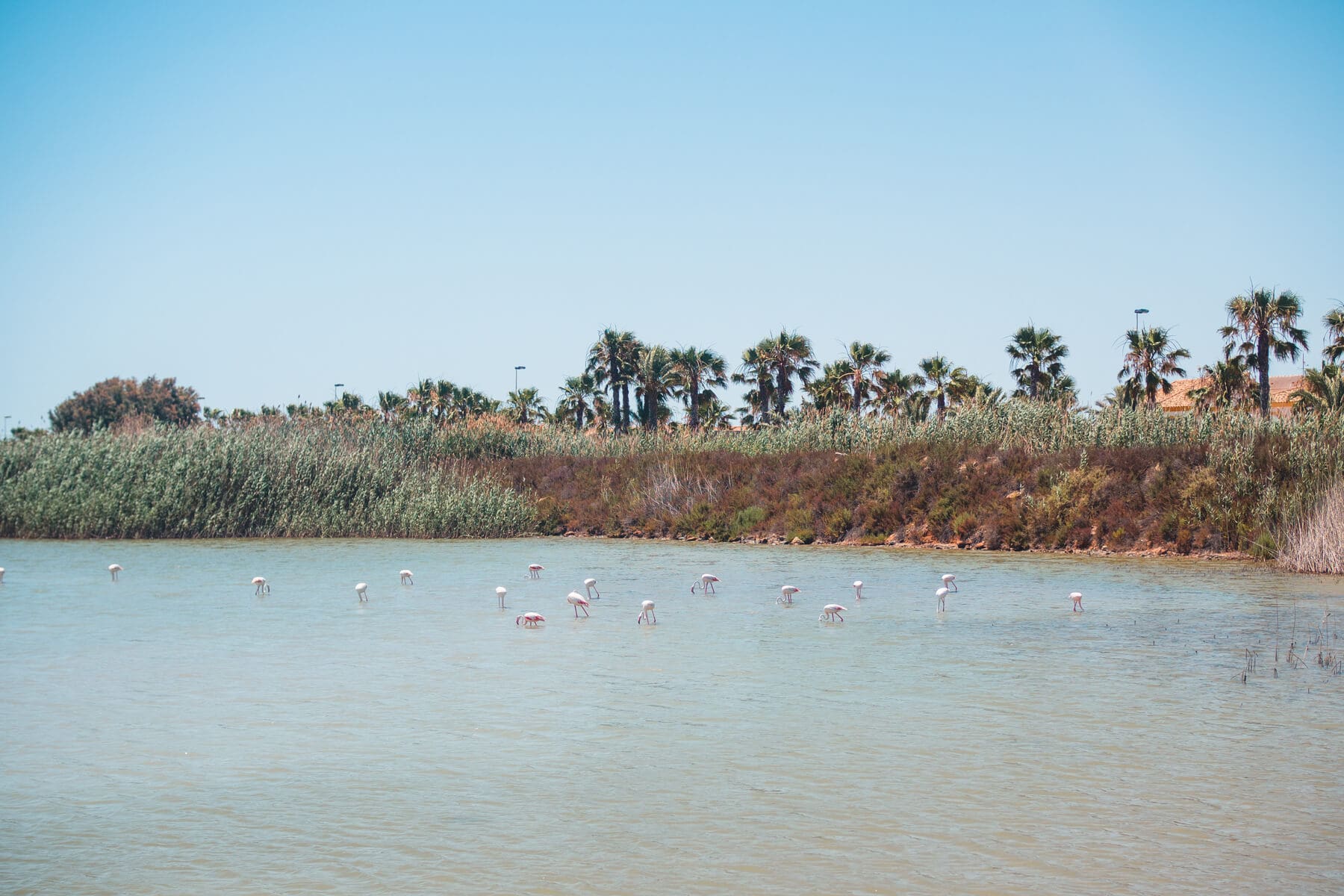
San Pedro del Pinatar Nature Reserve, the most important wetlands in the Murcia region, is home to flamingos and other migratory birds, such as albatrosses, herons, and seagulls. A must for birdwatchers!
The area of the park which is open to the public consists of salt flats, reed beds and pine forests not to mention the high sand dunes at Torre Derribada beach.
You can choose to go for a leisurely stroll or jump on a bike. There are bikes for rent in Lo Pagán and down by the Baños de Lodo mud baths.
At the edge of the nature reserve lies a fancy marina called Puerto Marina de las Salinas . Here you can go diving, rent a jet ski or yacht or just sit down and enjoy a meal at one of the many restaurants.
Cafe Cielo is my favorite restaurant in Murcia and I’ve been coming here for more than 10 years now. Their food is always so fresh and delicious and the view of the impressive yachts coming and going is amazing.
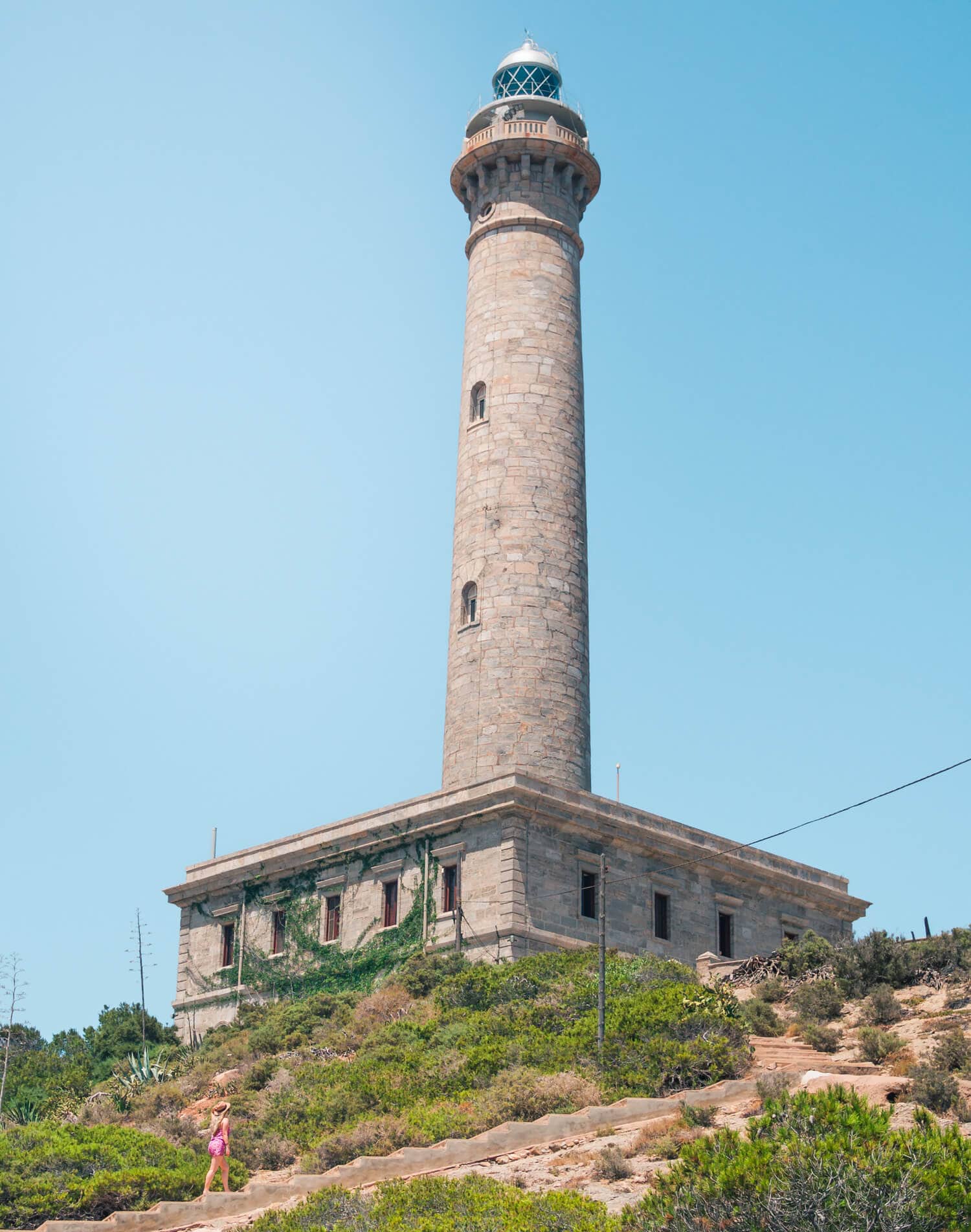
Cabo the Palos Lighthouse is a stunning neoclassical building that sits on a rocky headland in Cabo de Palos, one of the best diving sites in Spain. I dare to say that it also has one of the best, if not the best view, of all lighthouses in Spain .
The lighthouse, originally designed as a watchtower to prevent pirate attacks, has been in operation since 1865 and stands 81 meters above sea level. Although the lighthouse itself isn’t open to the public, you can walk up next to it and enjoy the gorgeous 360-degree view.
Cabo de Palos also marks the beginning of La Manga, a 21-kilometer-long, 300-meter-wide spit that separates the Mediterranean Sea from the Mar Menor.
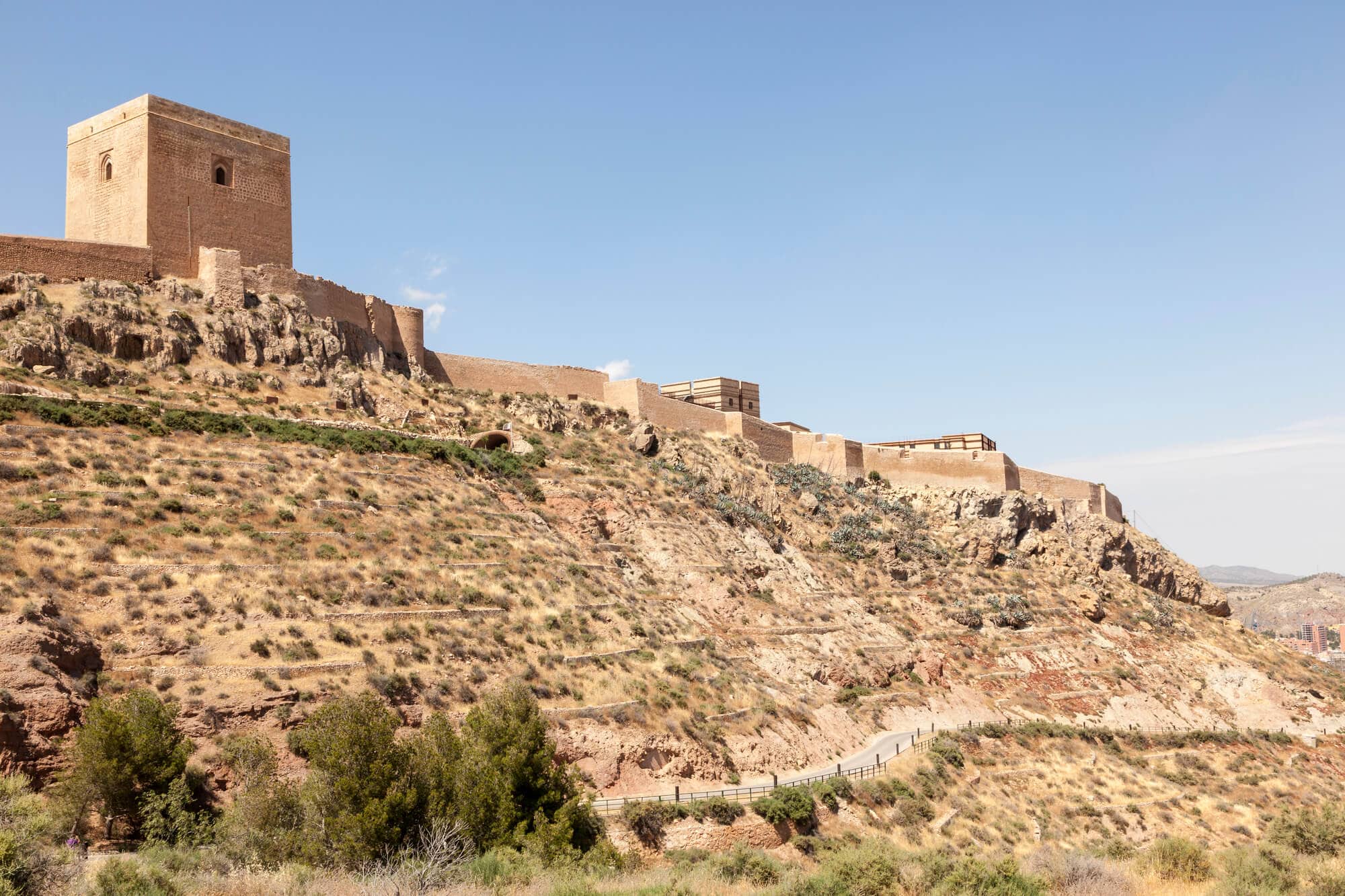
Lorca Castle or The Fortaleza del Sol (the fortress of the sun) is the main attraction in Lorca also known as the “Baroque city”.
Situated strategically between two Christian kingdoms and the Moorish kingdom of Granada, the castle has seen a lot of action since its construction between the 9th and 15th centuries.
Today the castle houses a museum where you can learn about its turbulent past through a series of multi-sensory exhibitions. A fun day out for the whole family!
In 1931, Lorca Castle was declared a National Historic Monument, so after it was damaged during the earthquake of 2011, repairing it was a top priority.
At 640m long and 120m wide, it’s one of the largest and most impressive castles in Spain and a must-see on any Murcia itinerary.
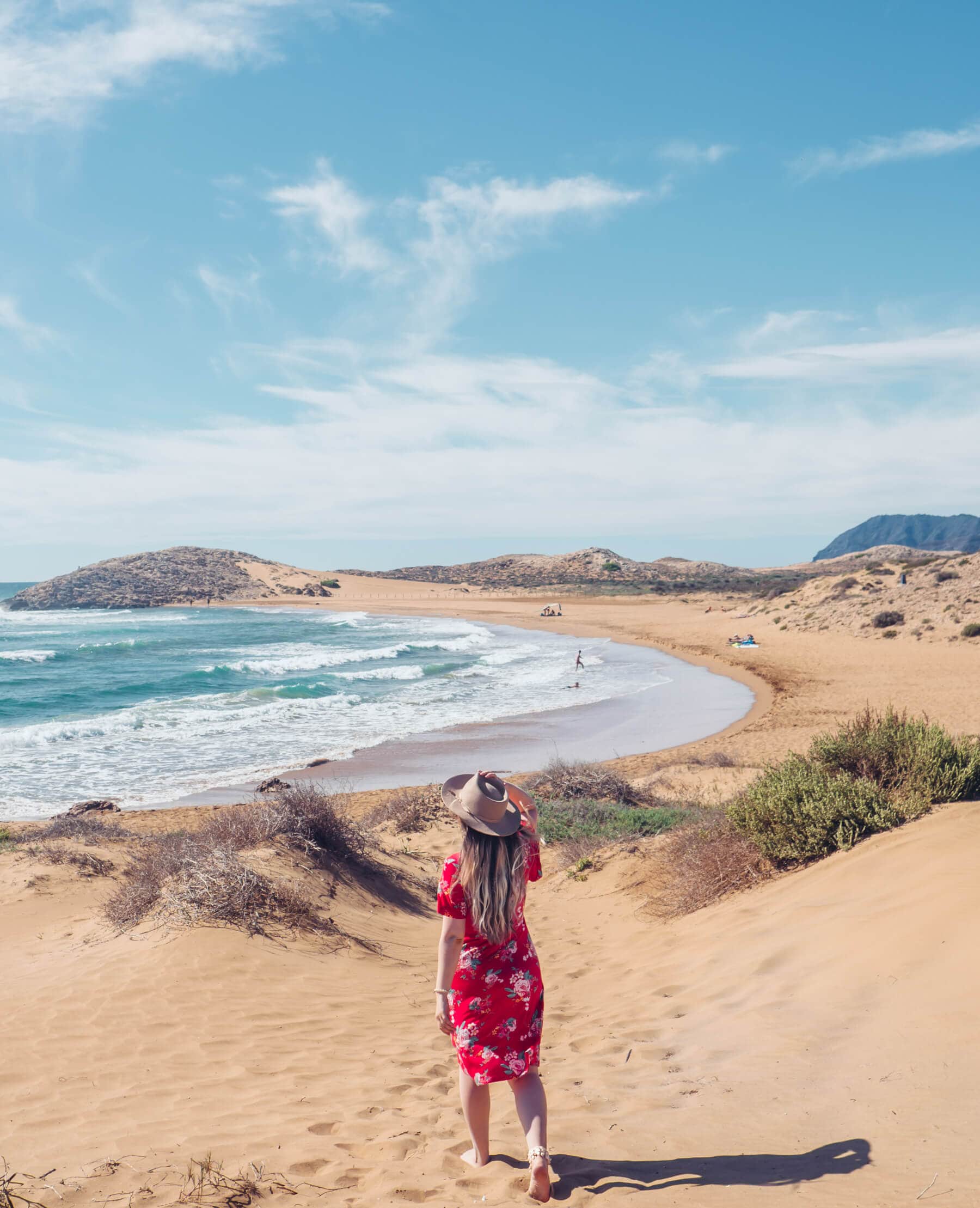
Playas de Calblanque refers to a series of golden beaches within Parque Regional de Calblanque, a nature reserve that got its protected status in 1987. Think miles of powdery soft sand and crystal-clear turquoise water.
So it might come as no surprise that this is my favorite beach in all of Murcia and the most picturesque beach I’ve visited in Spain so far.
For visitors, it is important to remember that this is a nature reserve and to treat it accordingly. Pick up your trash and keep out of the closed-off areas. If a relaxing day at the beach is what you’re after while in Murcia, Playas de Calblanque is the place to be.
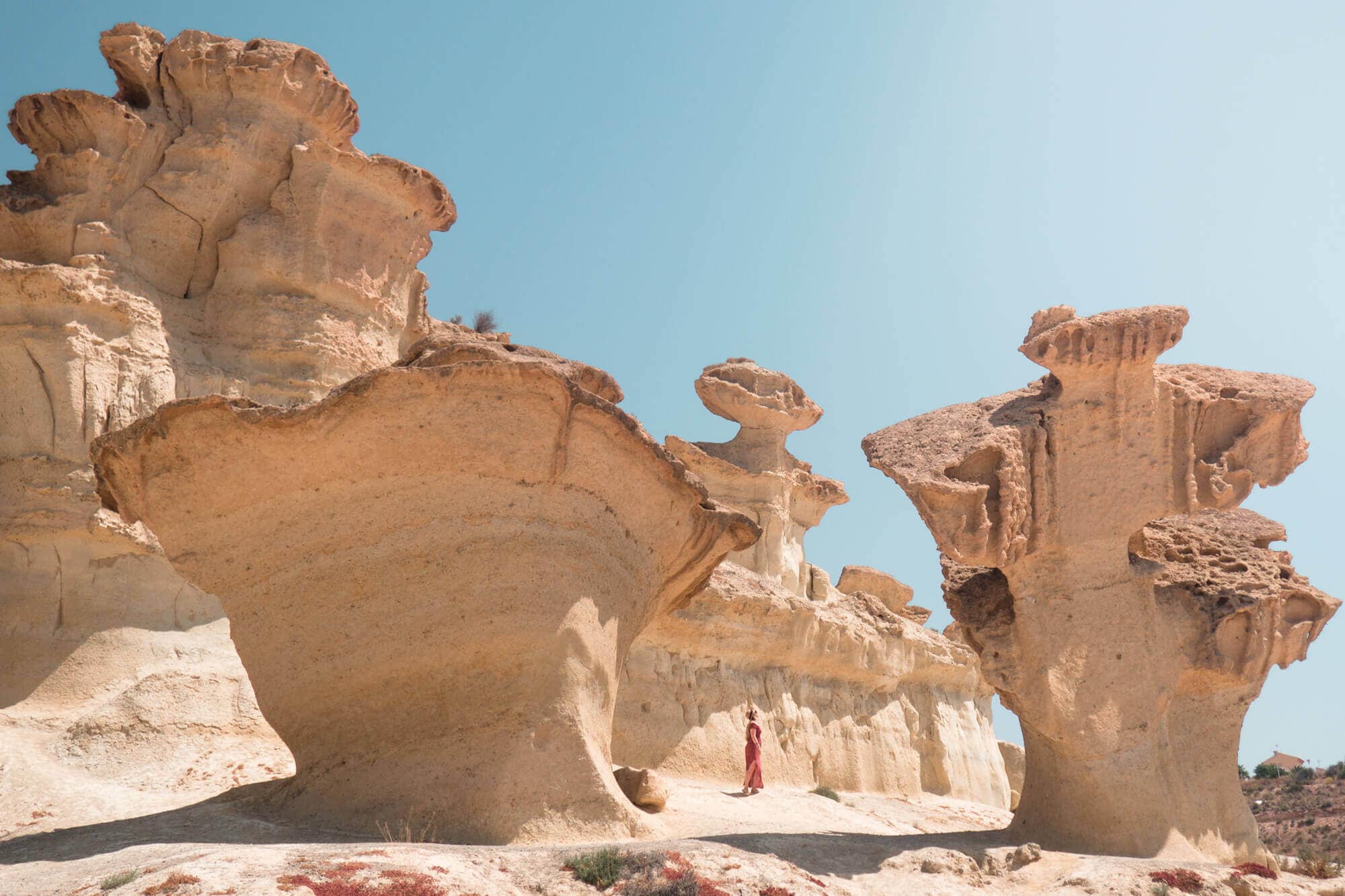
In my mind, Ciudad Encantada de Bolnuevo , or the Enchanted City of Bolnuevo, is one of the most unique places not only in the Region of Murcia but in the country.
These incredible sandstone formations have been eroded by water and wind for thousands of years and are today a spectacular sight and a great backdrop for your holiday photos.
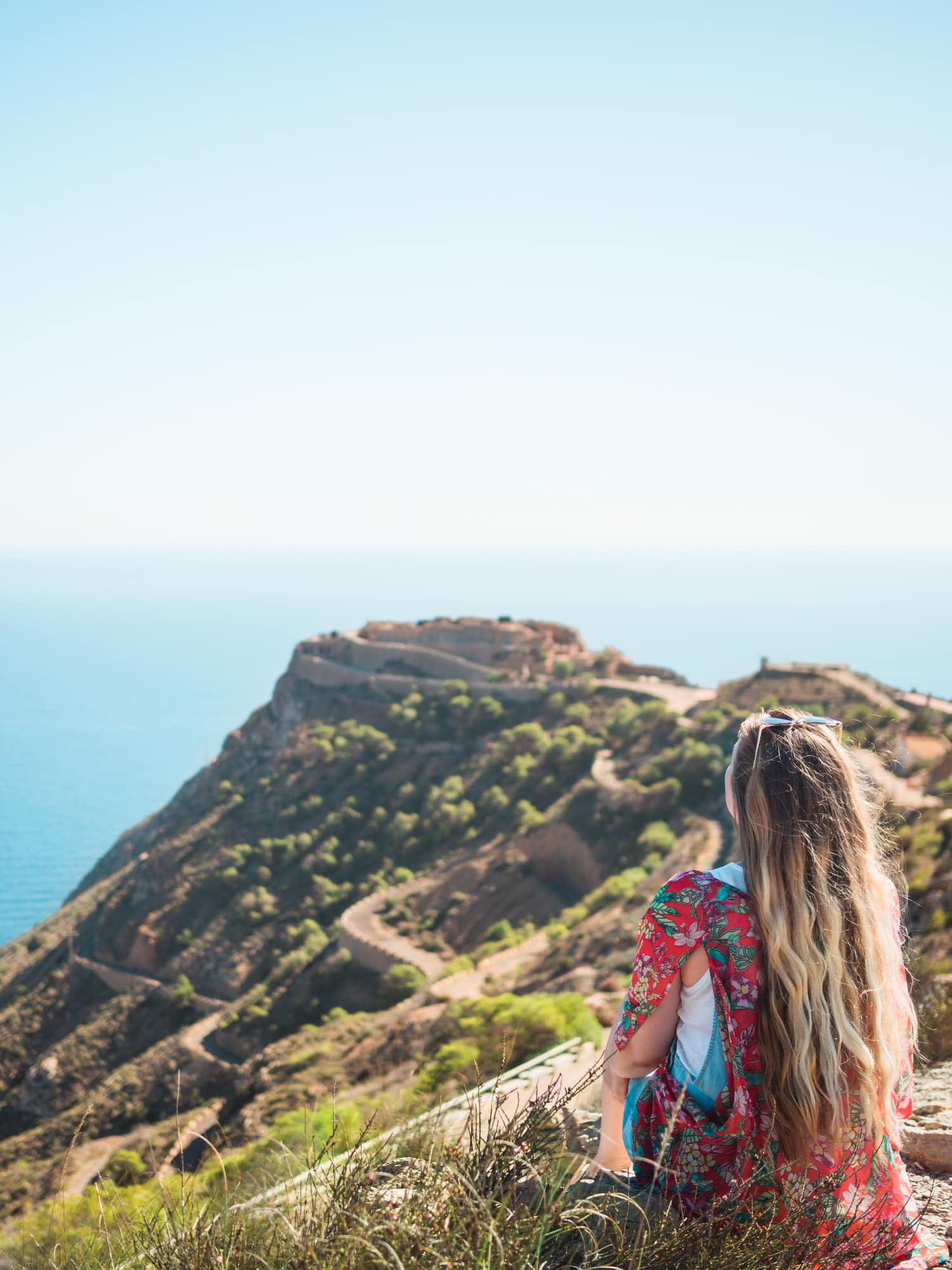
Built between 1926 and 1933 in order to defend Cartagena Bay, these Disney-esque battery emplacements offer breathtaking views and the thrill of exploring bunkers, towers and massive guns close up.
Constructed by the British, the cannons were the best of their kind at the time and were placed in a way that could not be seen from sea level. Although proven they could fire a projectile over 35 miles, they were only fired once during the Spanish Civil War.
Don’t let the winding, narrow road up the mountain discourage you from visiting this interesting place. Just follow Google Maps directions and you’ll get there without problems. Pack a picnic basket and enjoy lunch on the roof with the most incredible view. Definitely one of the top things to do in Murcia!
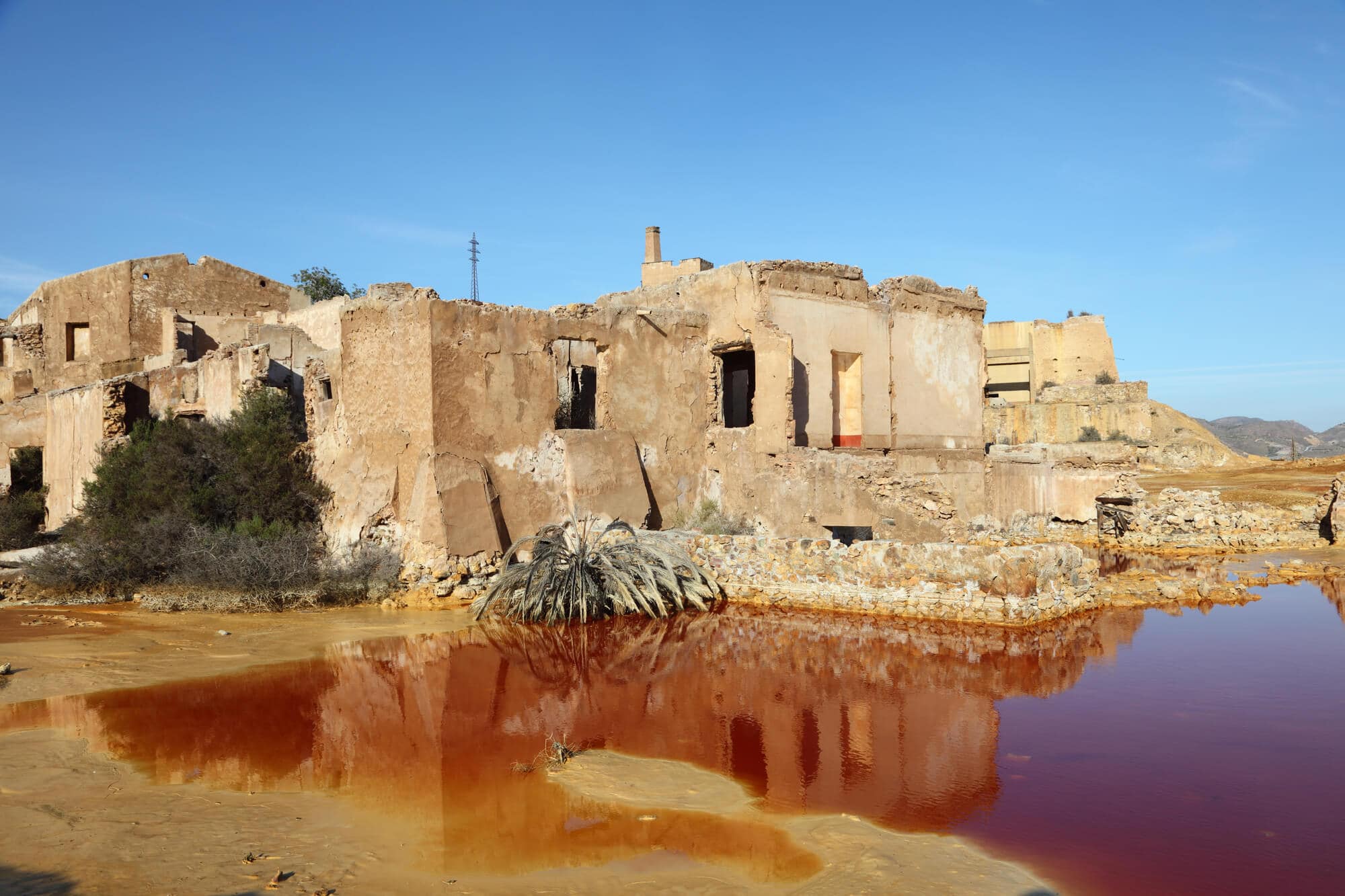
Ever since Roman times, the land around Mazarrón has been extensively mined for iron, lead, silver, copper and alum. The eruption of two volcanoes formed the rich deposits in the area.
Mazarrón mining reached its peak in the 1840s and continued until the 1950s when most of the mines were abandoned. The many years of successful mining operations were the reason behind the explosion of wealth in Cartagena and other cities close by.
Today the landscape around the mines glows with a multitude of colors, due to the sulfurs of the extracted minerals and the waste that was left behind. And it’s these colors set against the old ruins that make this place so cool, especially if you’re an avid photographer like me.
If you don’t want to visit the mines alone, you can join several guided tours. Keep your eye on sites like Murcia Today and Visit Mazarrón for upcoming tours.
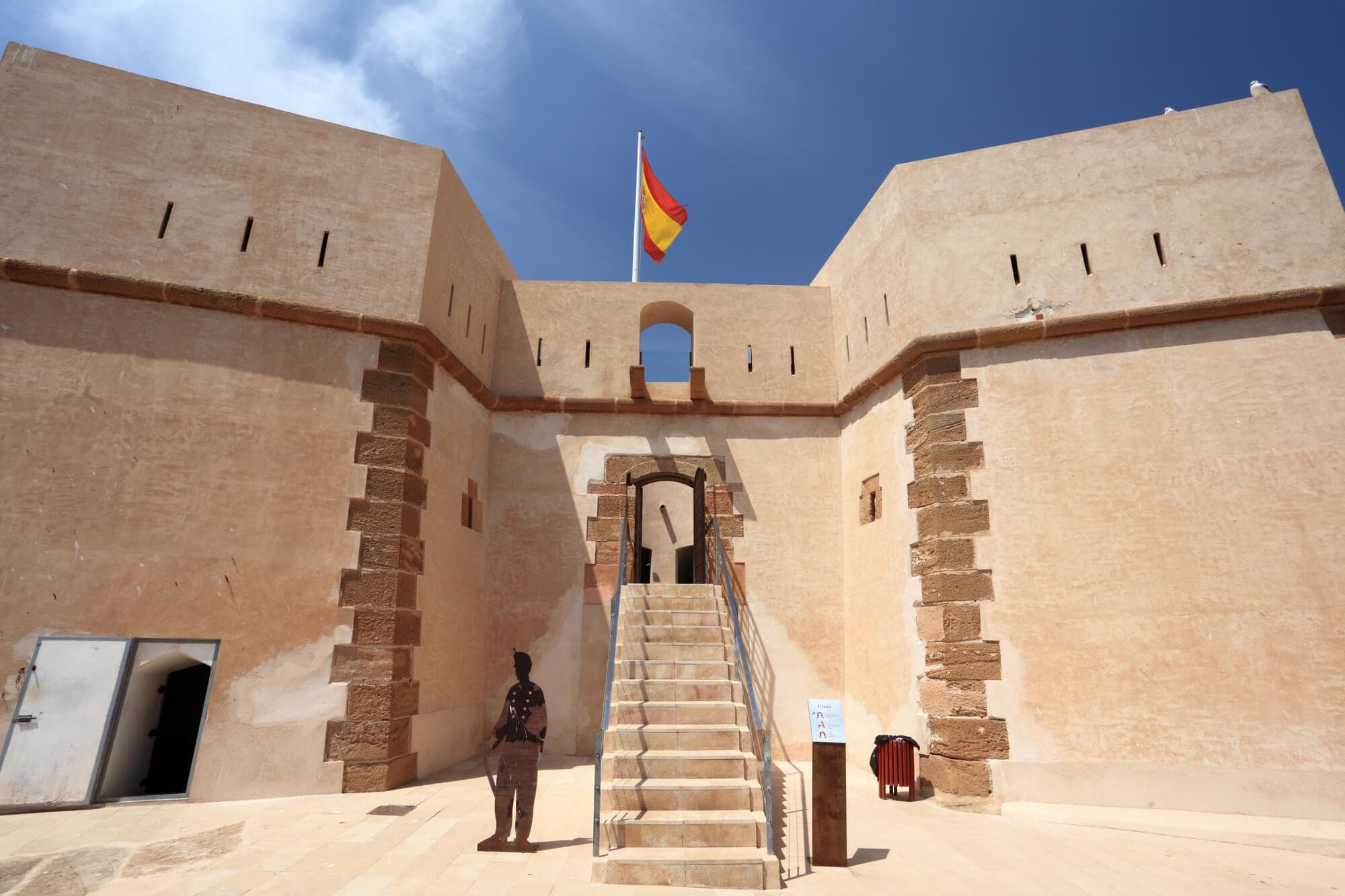
Águilas, located close to the border of Andalucía, is the southernmost town in the region.
While its shore is dotted with bays, harbors, rocky headlands and fine sand beaches, the most impressive attraction is an 18th-century military fortress called Castillo de San Juan de las Águilas . From its high towers, it was possible to spot enemies, mainly Berbers and pirates.
Restored in 2007 and open to the public since 2009, the fortress offers great panoramic views of Águilas and makes for a great outing for the whole family.
The entrance fee is only 2 euros for adults and totally free for children and students. A good place to start the walk up to the castle is at the tourist office at the base of the headland.
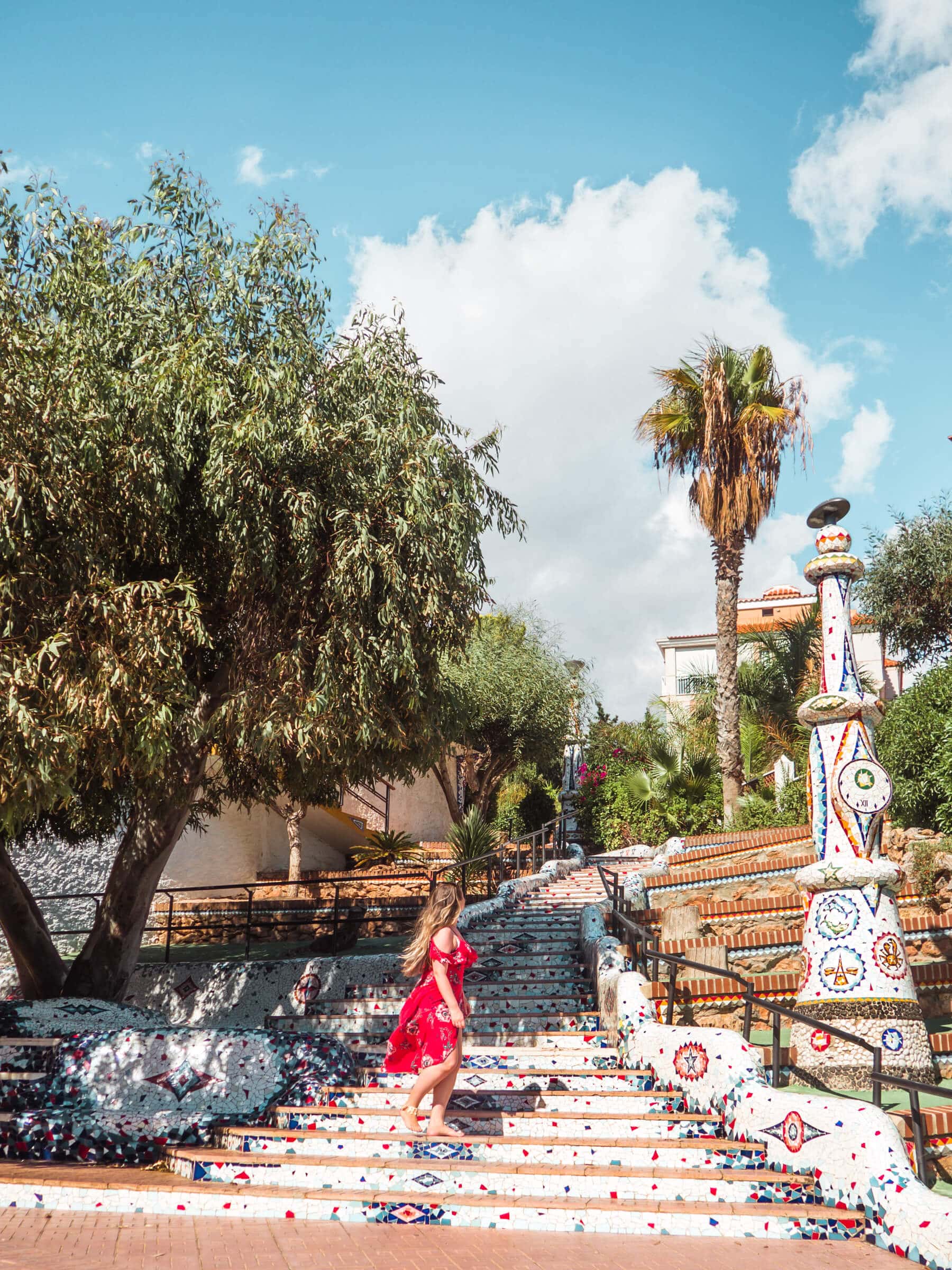
Hidden away behind El Hornillo Beach in Aguílas you’ll find a mosaic masterpiece called The Rincon del Hornillo.
Juan Martinez Casuco is the man behind this little Gaudí-esque corner and one other area close by called Ermita. He spent his life working on the local railways and started on this 12-year project once he retired.
To the left of the staircase, there is a little bar which to this day is owned and operated by his son. If you find yourself in the area, Rincon del Hornillo is definitely worth a stop. The world needs more creative souls like Juan to create colorful and whimsical places like this.
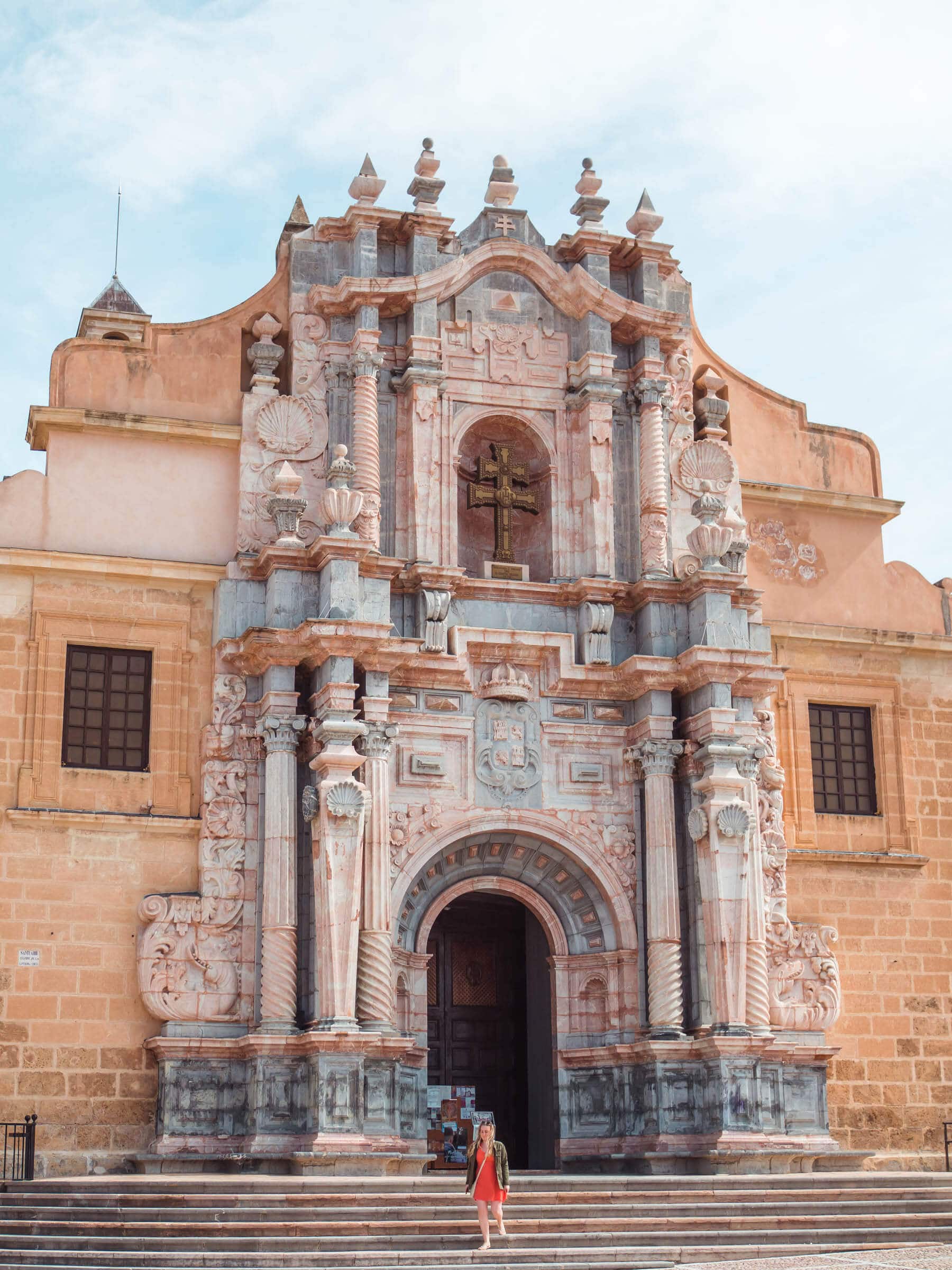
A charming little mountain town situated on the bank of the River Argos, on the border between Murcia and Granada.
Home to the Iberians, the Romans and the Muslims, Caravaca is the Fifth Holy City, along with Rome, Jerusalem, Santiago de Compostela and Camaleño. A key destination for pilgrims!
According to a legend, Moorish King Abu Zeid was converted to Christianity here when he saw two angels bringing a cross down from heaven. Even if you’re not religious, I’m not, this charming old town is definitely worth a visit.
The basilica that towers above the city, complete with an ornate Baroque facade, is absolutely beautiful and boasts panoramic views across the town.
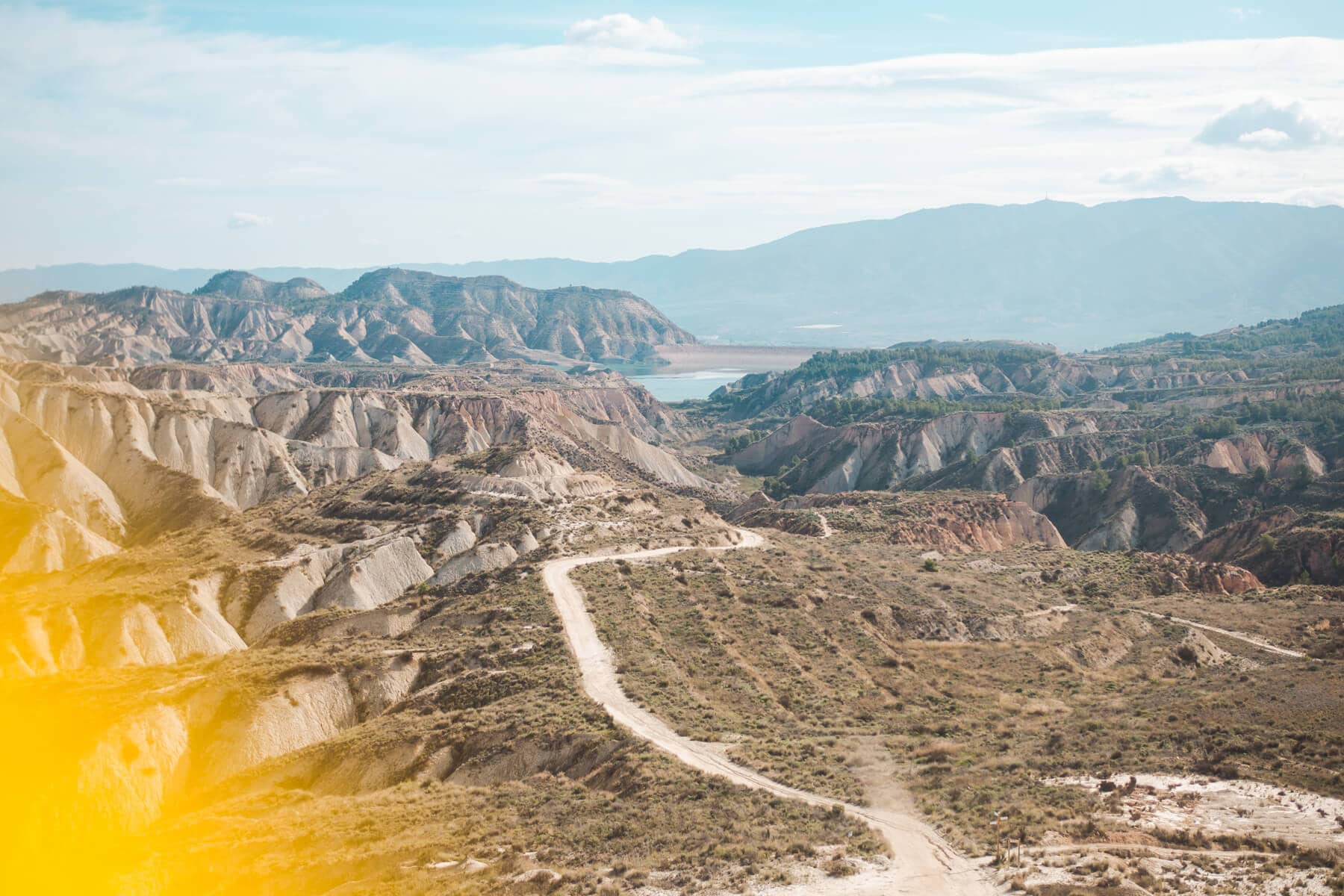
Barrancos de Gebas badlands is a stunning natural attraction characterized by its rugged terrain, steep cliffs, and intricate network of canyons and ravines.
The badlands were formed over millions of years of erosion caused by wind and water, which created a striking array of colors and textures in the rock formations.
The area is home to a diverse range of flora and fauna, including several species of birds, reptiles, and mammals. You can explore the canyons and ravines on foot, taking in the breathtaking views of the surrounding countryside and the sparkling waters of the nearby reservoir.
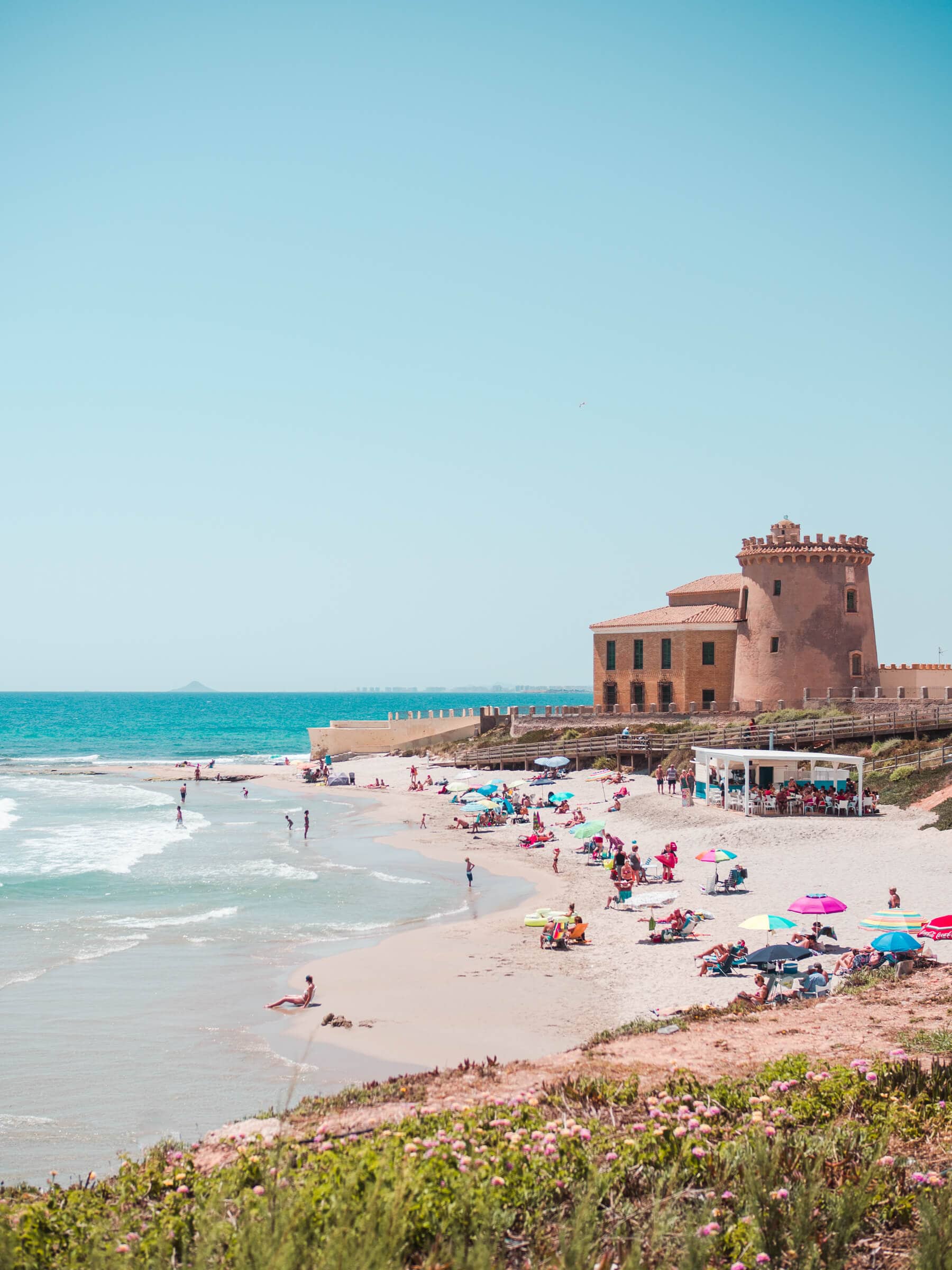
Playa del Conde is a relatively small beach, but it is popular among locals and tourists alike. The calm, shallow waters are ideal for swimming, and there are plenty of opportunities for water sports such as paddleboarding and kayaking.
You can see the La Manga strip far in the background as well as a watchtower built in 1591 to warn the local population of threats such as Berber Pirates. Definitely one of the most picturesque beaches in the Region of Murcia.

Sierra Espuña is a majestic mountain range and natural park located in the heart of the Murcia region, offering a refreshing escape with its cool, pine-scented air and panoramic views.
In Sierra Espuña you can expect a diverse landscape filled with rugged peaks, deep valleys, and lush forests, which provide a habitat for a variety of wildlife, including the Spanish ibex and golden eagles.
The park is crisscrossed with trails for hiking, mountain biking, and even rock climbing.
In addition to the natural beauty, the park is dotted with interesting sites such as the remains of old snow wells (pozos de nieve) once used for collecting and storing winter snow to be used as ice throughout the year.
Murcia travel guide
The Region of Murcia is a city located in the southeastern part of Spain, on the Costa Cálida.
Murcia is also the capital of the province and is situated in the center of the region, approximately 40 kilometers from the coast. The city is easily accessible by road, with several major highways connecting it to other cities in the region and throughout Spain.
It has a new and modern airport, the Murcia-San Javier Airport, which offers flights to several European destinations.
In addition to the city of Murcia, the region is home to several other towns and cities, including Cartagena, Lorca, and Molina de Segura.
The region is also known for its beautiful natural landscapes, including the Sierra Espuña mountain range and the Mar Menor, a large saltwater lagoon located on the coast.
The easiest and best way to get around the region of Murcia in Spain is by car. There are buses and trains, however, so many of the most beautiful natural wonders are not connected to public transport.
Having a car gives you the freedom to explore the off-the-beaten-path places I mention in this article. I always rent cars through Discover Cars , a comparison site that covers more than 10,000 destinations worldwide.
🚘 You can check prices and availability here >> Rental cars in Murcia
If you prefer not to drive but still want to explore the region, I recommend this half-day private guided tour of Murcia .
You get to visit a local lemon orchard complete with its own museum, the Fuensanta Sanctuary dating back to 1694 and the impressive Murcia Cathedral. You’ll also have time to go for a walk around the main streets and squares of the city center. My family and I loved it!
The best time to visit the Region of Murcia is during the shoulder seasons, May-June and September-November. It gets extremely hot during the summer months, and the beaches are crowded, so try to avoid July and August if possible.
In my experience, October is the best month to visit. It’s still hot enough to lounge on the beach, while cool enough for hiking and exploring.
Ideally, you should spend a week in Murcia to truly get a feel for the region. That way you can explore several beaches, go hiking and rafting, visit historic cities and villages, and even join a guided tour or two.
And if you can, stay for longer. I have traveled in the region of Murcia for 17 years and still find something new to see and do every time I visit.
The answer is YES!
The Region of Murcia is such a beautiful and diverse area. In addition to its stunning beaches and rich history, Murcia is home to many natural wonders including the Sierra Espuna mountain range, the Mar Menor lagoon, and the Cabo de Palos marine reserve.
These areas offer a range of outdoor activities, including hiking, cycling, water sports, and birdwatching.
Murcia is also famous for its delicious cuisine, which is influenced by both its coastal location and agricultural heritage. And best of all, most of the region is still authentically Spanish, not overdeveloped for tourism like so many places these days.
So I recommend you book your vacation to Murcia now, you won’t regret it!
Looking for more Spain travel guides?
- A first-timer’s guide to Cartagena Spain (cruise port)
- Is Hacienda Riquelme the best golf resort in Spain?
- The Enchanted City of Bolnuevo : A lesser-known natural wonder in Spain
- Spain bucket list experiences: 101+ awesome things to do & places to see
- One remarkable day in Ronda , Spain (from Málaga by train)
- Mojácar Pueblo in Andalucía : One of Spain’s most beautiful white villages
- Discover the incredible Floración de Cieza (peach blossom season) in Murcia, Spain!
- Barrancos de Gebas : The incredible Lunar Badlands in Murcia Spain
- Discover Spain’s stunning pink lake : Laguna Salada de Torrevieja
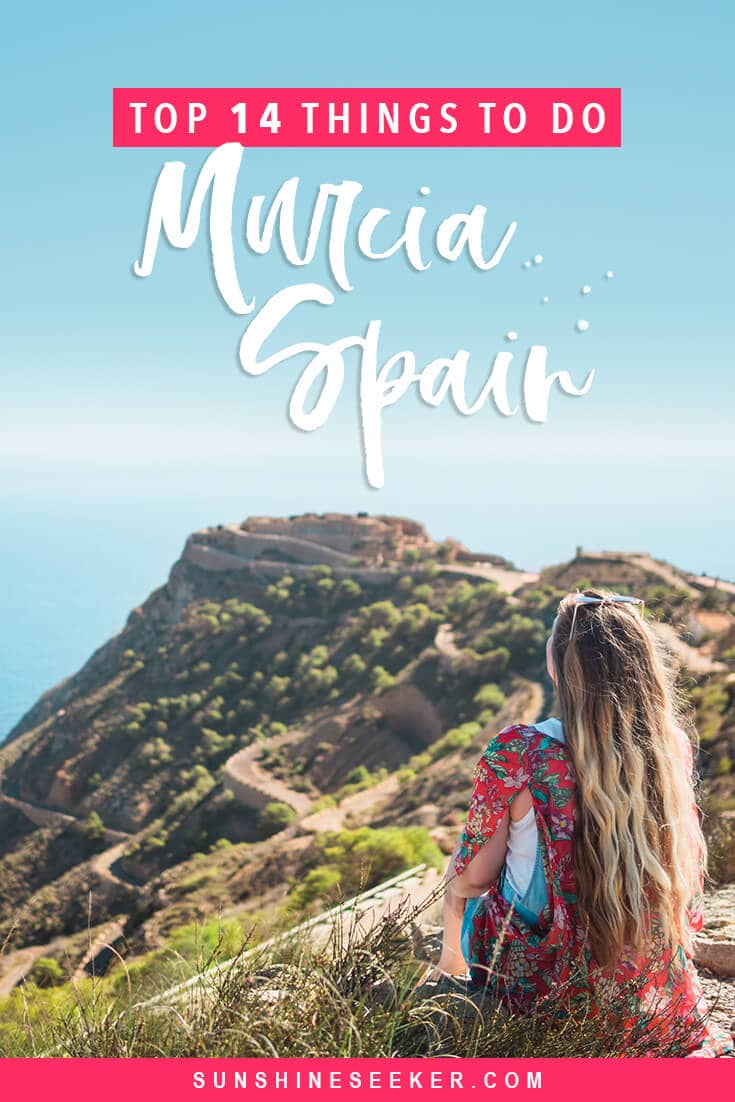
About Charlotte
Charlotte is the passionate traveler and online business coach behind Sunshine Seeker. She started working as a content creator on Instagram in 2014, before social media was even a thing, and as a travel blogger in 2015. Over the past 14 years she has explored 45+ countries and lived in Oslo, Kraków, Bali and Lombok. Every month she helps more than 50,000 people plan their adventures and learn how to create more freedom by working online.
You’ll Also Love
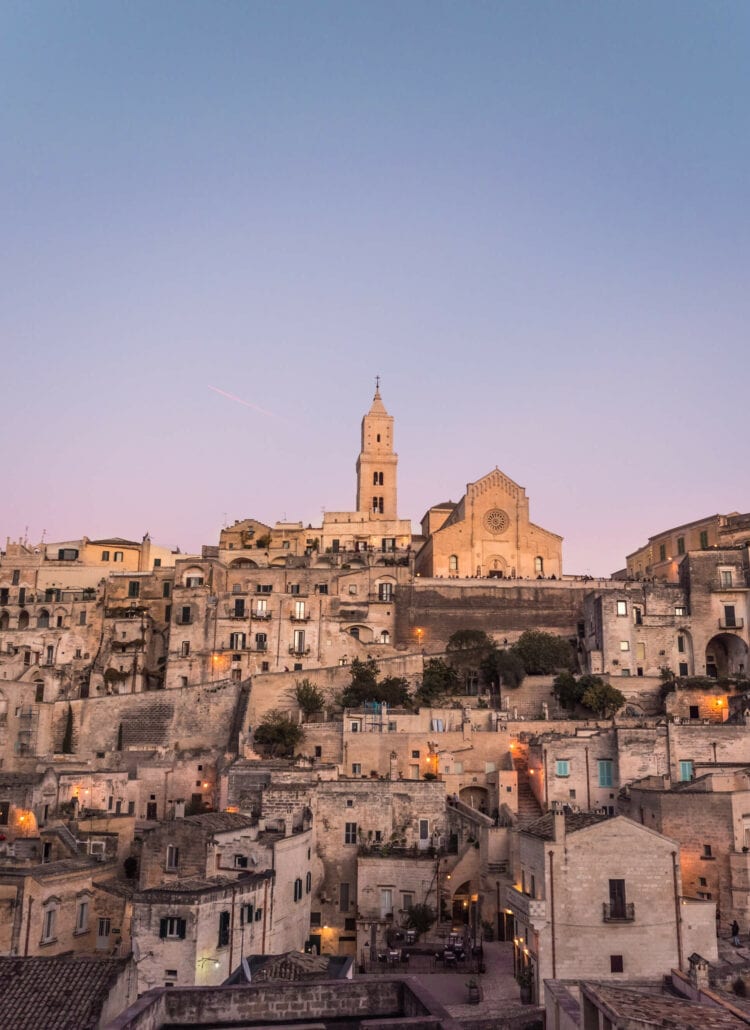
5. September 2019 at 17:53
I hadn’t thought about visiting this area before but it looks beautiful, definitely on my travel list now!
8. September 2019 at 11:52
I’m so happy to hear that, Jessica! Thanks for stopping by 😀
24. May 2020 at 20:41
I want to go here
25. May 2020 at 01:14
I think you should ? Murcia is awesome!
24. June 2020 at 10:05
Good information to increase travel experince growth, I will also follow these all step that you have shared, and i hope they will help us to make out trip full of memories.
24. June 2020 at 22:55
Thank you, Perry! I hope so too 🙂
18. February 2021 at 19:18
I’ve noticed that there are English teaching opportunities in Murcia. It looks like a lovely area. How are the hospitals and medical supports? My child is medically fragile. Thanks !
19. February 2021 at 13:52
Yes, it really is beautiful there 🙂 I know there is a large, modern hospital close to where we live in Sucina. Luckily though, we’ve never needed medical care so I don’t know anything about the quality.
15. June 2021 at 06:13
How are the people there and the cost of living?
16. June 2021 at 09:14
The local people are really nice but many don’t speak much English. There are also many English and Scandinavian ex-pats. The cost of living is more affordable than some other places I’ve been to in southern Spain. I know the average rent in Murcia for a one-bedroom apartment in the city center is around $750 per month and I usually spend 25€ for dinner, dessert and a glass of wine 😉
27. November 2021 at 17:05
Spain is the best place to travel and enjoyment you just given us best things to do in spain
9. February 2022 at 18:00
I have a house in Águilas,the place is awesome
20. February 2022 at 14:24
It really is! 😀
Leave a Reply Cancel reply
Your email address will not be published. Required fields are marked *
Save my name, email, and website in this browser for the next time I comment.

22 stunning fairytale castles in Poland you have to see!
Join the travel creator club.
Sign up to receive one of my favorite Lightroom presets + my tour/product collab pitch template!
By clicking "SEND" you confirm that you want to join our mailing list and that you have read our Privacy policy .

I’m social…sort of!
Join me on Instagram

- Privacy Policy
- Affiliate Disclosure
- Terms & Conditions
As an Amazon Associate, I earn from qualifying purchases.
Copyright © 2024 Sunshine Seeker
- About Emily
- About This Blog
- Personal Posts
- My Travel Stories
- Central America
- North America
- South America
- Tours and Activities
- Transport and Travel
- Packing Tips
- Travel Gear
- Travel Fashion and Beauty
- Work with me

15+ of the Best Things to do in Murcia (+ Travel Guide)
- Last Updated 13 February 2024
Some posts on this site contain affiliate links. If you book or buy something through these links, I earn a small commission (at no extra cost to you). Take a look at my privacy policy for more information.
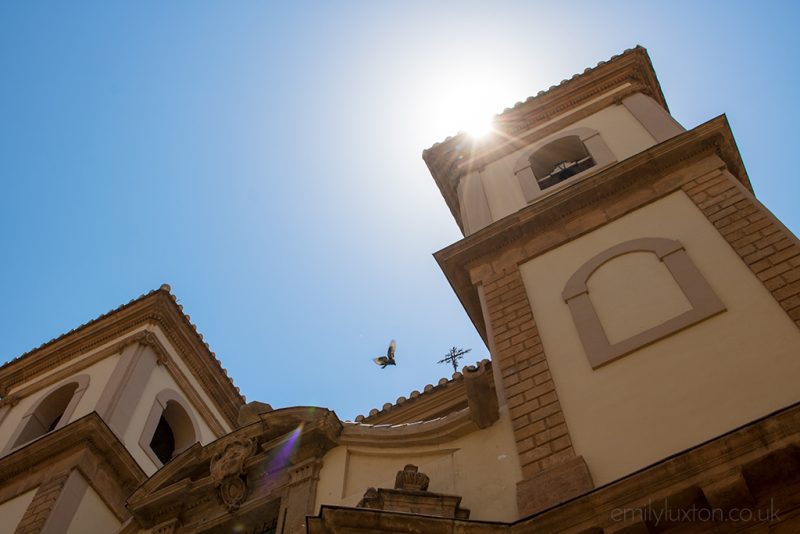
Murcia is the perfect city break destination for those who don’t really love cities . The centre has the feel of a small town, and while there’s plenty going on, its all centred around separate plazas.
Nothing feels rushed or as intense as big cities. Even better, it’s really easy to explore the rest of the region around Murcia and escape the city , even if you’re only visiting for a few days.
If you’re in search of gastronomy, culture, and a little “off the beaten path” slice of non-touristy Spain… Murcia is the place for you.
From wow-factor architecture to unique regional cuisine, there’s so much to discover. Leafy plazas, bustling tapas bars, excellent shopping, and a huge foodie scene – plus mountains, beaches, and thermal spas all within easy reach. In my mini travel guide below, I’ve listed all the best things to do in Murcia to help you plan the perfect city break getaway…
Top 6 Things to See and do in Murcia
Murcia – art, history and culture, best beaches in murcia, head for the hills, balneario de archena, murcia tapas trail, murcia must-tries, where to stay in murcia, getting there and around.
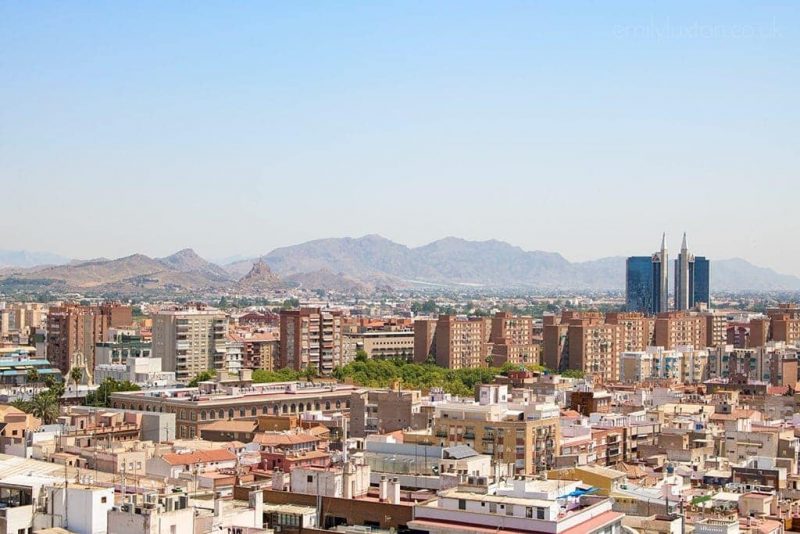
READ MORE: Check this Spain packing list to see what you need to bring with you!
Murcia’s Old Town
The heart of Murcia is the beautiful, historic Old Town, full of huge plazas and baroque buildings. Many of the streets are pedestrianised, so this is a gorgeous place to simply stroll around and explore.
As well as some of the city’s most iconic architectural sites, you’ll find plenty of great boutique shops too. And, of course, loads of bars, cafes, and bakeries (which the city is famous for).
RECOMMENDED TOUR: Guided Historical City Bike Tour
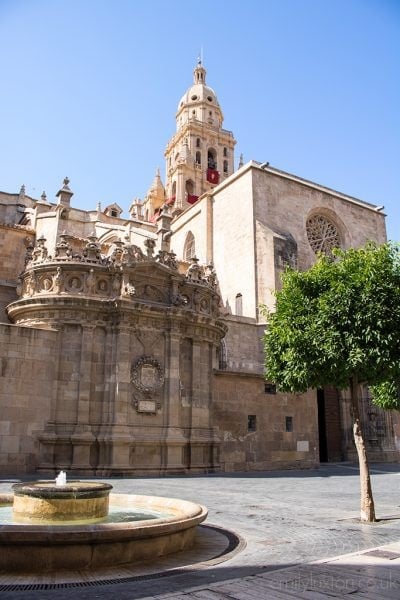
Santa María Cathedral
Murcia’s Santa María Cathedral is considered a masterpiece of the Spanish Baroque period and dates back as far as 1385. The building was finished over several hundred years, though, so there is a blend of styles at play – and the interior is Gothic.
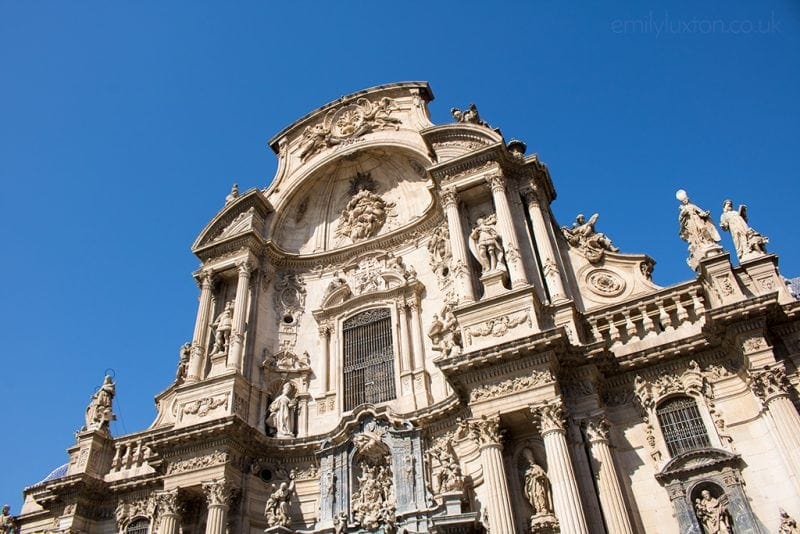
It’s a seriously beautiful building, and worth a visit just for the intricate facade. But I highly recommend going inside for a tour of the bell tower . From the top, you can hear the bells strike the hour, and get amazing views of the city.
Casino de Murcia
One of the city’s most surprising buildings is the Real Casino de Murcia. Originally opened as a gentleman’s club in 1847, the interior is fabulously eclectic and over the top. Each room is influenced by a different part of the world, like the English library, the French style ballroom, or the striking Arabic Court – which is lined with more than 35,000 sheets of gold leaf. It’s all opulence and extravagance, and it’s so much fun to explore!
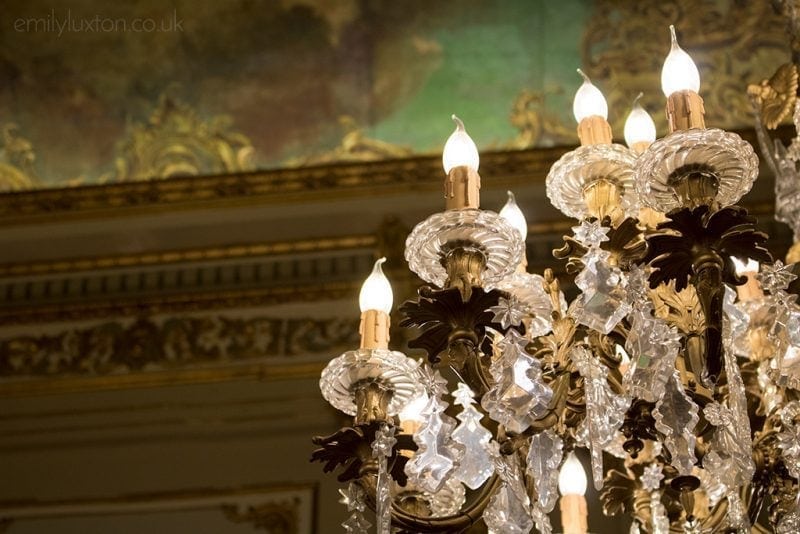
Floridablanca Garden
Outdoor spaces abound in Murcia, so you’re never short of a shady spot to sit and relax. But the most iconic is probably Floridablanca Garden , just across the water from the historic city centre.
Built in 19th century, Floridablanca was designed in the romantic style and is a great little tranquil spot. The giant ficus trees lining the central path are offspring from the famous tree in the centre of Santa Domingo Square .
Cardenal Belluga Square
Murcia is famed for it’s lovely plazas, and one of the loveliest is the Plaza del Cardenal Belluga. At one end is the baroque facade of the cathedral. Opposite sits the controversial Moneo Building , a bright and modern building housing Murcia’s town hall.
And then there’s the beautiful, rose-coloured Palacio Episcopal (Bishop’s Palace) , dating from 1754. Not to mention dozens of lovely cafes where you can sit outside with a drink and enjoy the eclectic mix of architecture.
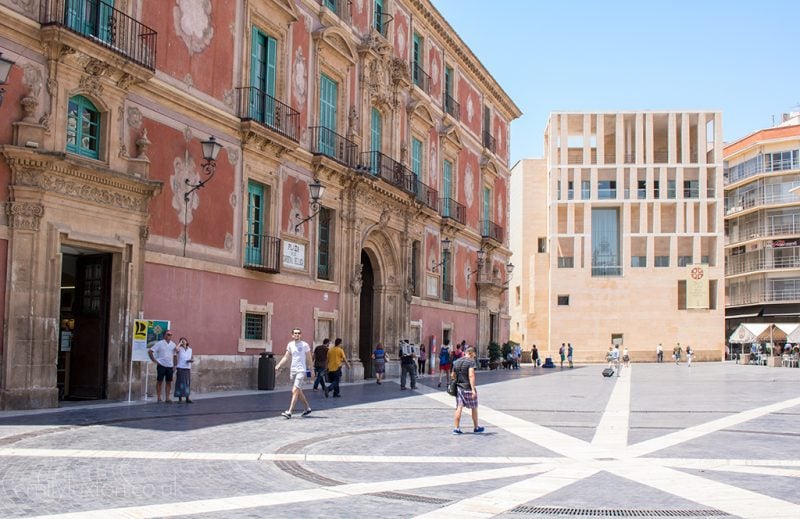
Río Segura is a river running through the city centre. It’s a pretty place for a walk, and the two most central bridges make nice photo ops. Puente de los Peligros (Bridge of Pilgrims) is also known as the Puente Viejo (old bridge) and was built in 1742. Then there’s the more modern Pasarela de Manterola, which is also very striking.
Whether you’re a history buff, or someone with just a passing interest, Murcia is pretty captivating . The city was founded by the Moors in 825, and 500 years of Islamic architecture are still intermingled with the later Gothic, Renaissance and Baroque styles.
A few of the cultural and historic highlights…
Museo de Arqueologia (Archaeological Museum) – Head here to look deeper into the local history and find out all about how the town came to be.
Santa Clara Monastery and Museum – An Islamic Palace that became a Catholic monastery, Santa Clara has pretty unusual architecture and is worth the visit for the central pool and gardens alone. Inside, you’ll find a collection of both Islamic and Christian art.
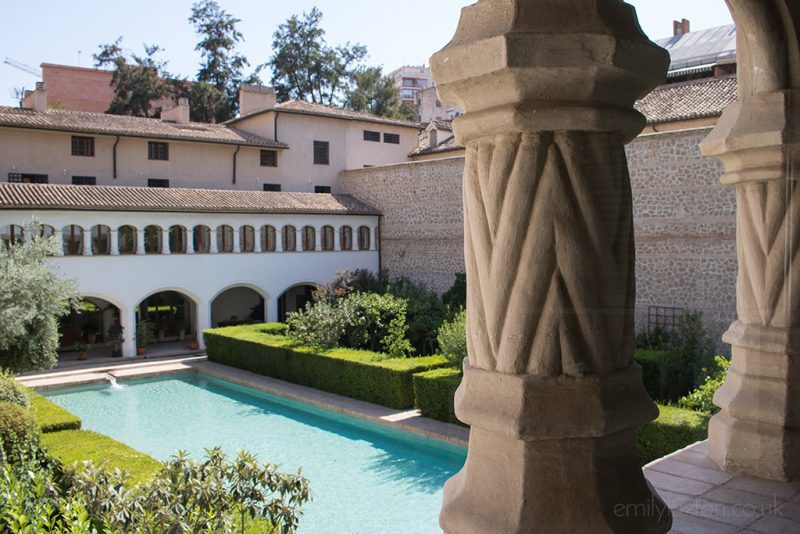
Salzillo Museum – Francisco Salzillo is a famous Spanish sculptor who spent most of his life in Murcia. This museum is dedicated to him and houses some of his best works, many of which are still used in the city’s Easter processions.
Ramón Gaya Museum – Locally born painter and writer Ramón Gaya is another famous son of the city. Discover the artist and his work at this free museum.
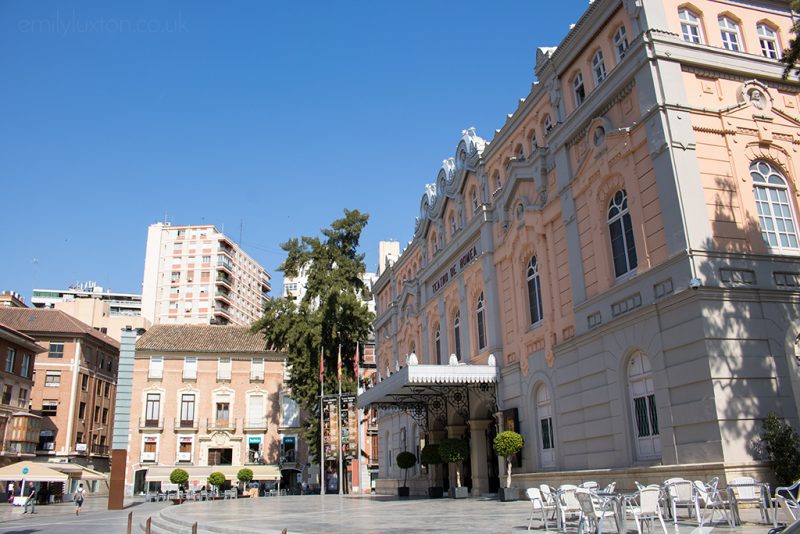
Teatro Romea – A beautiful old building dating from the 19th century, which still hosts regular shows and concerts in its opulent interior.
San Juan de Dios – A small church not far from the cathedral, San Juan de Dios houses a surprisingly lavish interior. It’s free to enter and worth popping in for a look at the religious art there.
Escape the City
One of the best things about Murcia is how well placed the city is to explore the rest of the region. The beaches at Mar Menor are about a thirty-minute drive, and in fifteen minutes you can be in El Valle national park. Murcia is ideal if you want to combine all the bars, food, and culture of a city break with a little bit of nature or action .
From amazing beaches, to wholesome thermal waters, to stunning mountain scenery, there are plenty of options for day trips from Murcia . Here are a few of the best options to escape the city…
RECOMMENDED TOUR: eBike Tour of Murcia’s Orchard
Murcia’s coastline is known as the Costa Cálida, the “warm coast”, because of its ideal climate. There are hundreds of beaches along the coast for you to explore , and all of them less than two hours drive from Murcia. I’ve listed a handful below to help you get started.
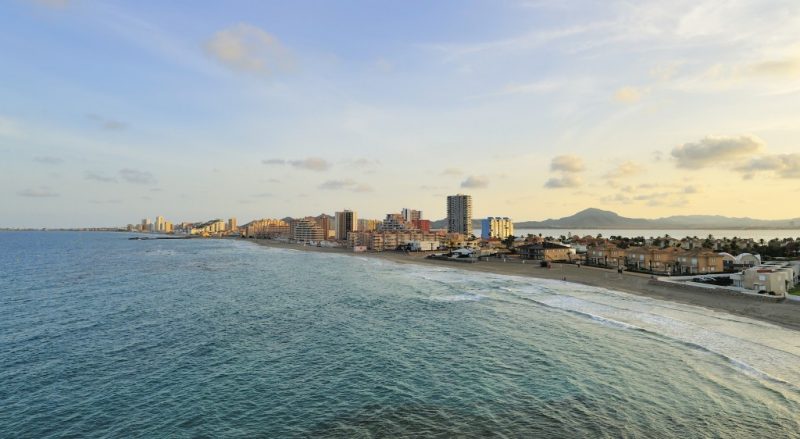
La Manga and Mar Menor – Mar Menor is a saltwater lagoon cut off from the Mediterranean by a thin strip of sand. Relax on a beach with the sea on both sands. The sea at Mar Menor is known for being particularly calm, with no waves or current, so it’s perfect for families. While on the other side of the strip, conditions are ideal for sailing and watersports.
Cartagena – The urban beaches at the nearby city of Cartagena are incredibly popular, with good reason. Cala Cortina is a sheltered Mediterranean cove with a boardwalk, restaurants, and umbrellas to rent.
Calblanque – Considered by many to be one of the best beaches in the region, Calblanque is a “virgin beach”. Expect arid mountains and golden sands, but very few services – this is an untouched corner with no nearby resorts. Meaning you may just have the beach all to yourself!
Aguilas – At about an hour and ten minutes drive from the city centre, this is probably the furthest beach from Murcia – and it’s still easily accessible as a day trip. The shell-shaped cove of Cala de los Cocederos is very isolated and pristine, while Amarilla de Águilas is known for its yellow sand and transparent waters.
Craving a bit of nature? In Murcia, it’s never very far away. In fact, the regional park of El Valle y Carrascoy is only about a fifteen-minute drive from the city centre.
Murcia itself is set within a wide, fertile valley, and this park is up in the Betic mountain range which forms one of the valley walls. Up here, you’ll find rocky cliffs, pine forests, scrubland, and all kinds of local flora and fauna. The hiking trails are popular on weekends, and offer some incredible views of the town.
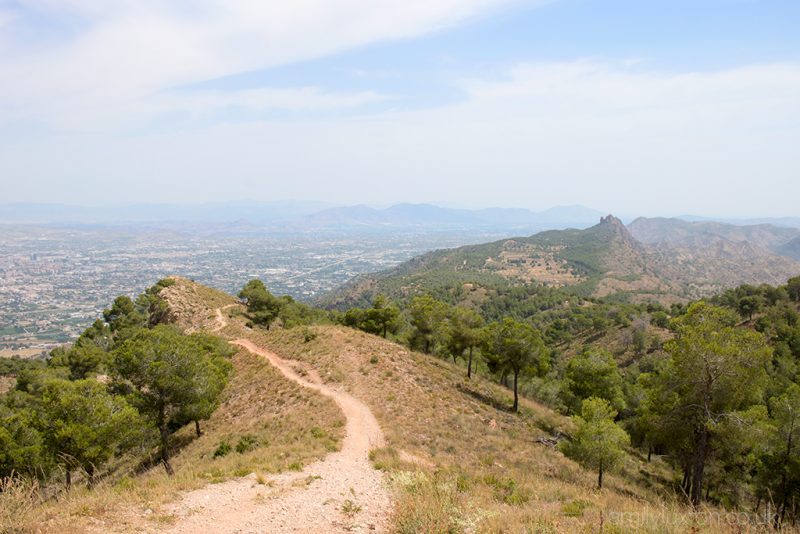
Hiking and Biking – Throughout the park are numerous hiking and biking trails to discover. Follow the signs and local maps. For an easy, pleasant walk I recommend the Sandero trail which starts near the carpark at Restaurant Bar La Balsa Redonda.
El Relojero – If you can face it, the long hike up to El Relojero will reward you with some pretty amazing views. There are several routes you can try. Follow the winding road up, or hit one of the trails if you want to make things tougher.
San Antonio el Pobre – Hermits have lived in the caves around El Valle since the 800s, taking the legend of Saint Anthony the Poor as their inspiration. Head to the small chapel and museum at San Antonio el Pobre to learn more – and keep an eye out for the two hermits currently calling the local caves home.
Getting there – Drive to La Alberca Village, then head for the El Valle Visitors Centre.
Did you know that the region of Murcia is dotted with thermal springs? Not only that, but many – like the Balneario de Archena – have been used for their healing properties since the days of the ancient Romans.

About twenty minute’s drive from the city centre, the Balneario de Archena is more than a thermal bath – and much more than an ordinary spa. There are three hotels and numerous restaurants on-site, as well a whole system of pools and treatment options.
The mineral-rich water is said to have healing properties, while the Archena mud is a unique blend of the local Bentonite clay. Don’t miss the signature Archena Massage (from 40€) , which uses this rejuvenating thermal mud at the same time as medicinal water showers. It’s a bizarre experience – but totally soothing!
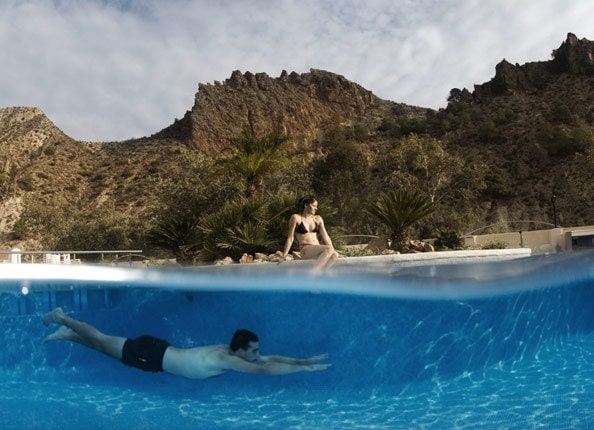
Archena feels like a true oasis. The outdoor swimming pool and relaxation areas are overlooked by mountains. Indoors, there’s another pool, with showers and massage jets. And the Balnea thermal circuit – which features various saunas, a steam room, flotation pool, and more – is not to be missed! With prices starting from just 31€ for the pool plus Balnea Circuit (from just 10€ for the swimming pools alone) , this a perfect option for a relaxing day out.
Fancy staying the night? Check hotel prices here! I spent a good nine hours at this incredible spa and could easily have whiled away another full day!
Where to Eat in Murcia
For me, one of the absolute highlights of Murcia is the food. I actually wrote a whole separate post about what to eat in Murcia , so check that out for more info!
The city is renowned for its gastronomy, and the distinctive regional cuisine means there are plenty of unique dishes to try.
In fact, there’s so much to try, that I’m going to write an entirely separate post about what to eat in Murcia (stay tuned). But here are a few of the highlights…
RECOMMENDED TOUR: 3.5-Hour Orchards Bike & Tapas Tour
When it comes to tapas in Murcia, you can’t really go wrong! Plaza de las Flores is one of the top places to visit for lively bars and fab tapas restaurants , so this is a great place to start. I followed the following tapas trail on my visit and would totally recommend it…
Gran Bar Rhin – 5 Plaza de San Pedro. Sit outside at the window to the bar and order marineros (a typical Murcian tapa) with a caña (a quarter litre of beer) to blend in with the locals!

La Tapa – 13 Plaza Flores. Possibly one of the best tapas bars in Murcia! Try the caballitos (battered prawns – another local speciality) and come back later to get paparajote for dessert (don’t eat the leaves)!
L a s Viandas – 2 Calle Pascual. Definitely a local favourite! I recommend the palitos de berenjena (aubergine sticks).
El Secreto – 1 Plaza Sta. Catalina. A modern tapas bar with a funky feel and a bit of an eclectic menu. Try the chicken burritos if you’re craving something slightly more substantial.
Las Mulas – 5 Calle Ruipérez. Popular bar with a big, open front and a great atmosphere. Get the carrilla de cerdo ibérico (Iberico pork cheek) – meat lovers will not be disappointed!
Meat Pie – Murcia is famous for its meat pie, which comes with the most fascinatingly intricate puff pastry topping I’ve ever seen. An unmissable dish if you visit Murcia. Grab one from any of the local bakeries (mine came from Confitería Roses) and tuck in!
Cuerno – One of the tastiest desserts I’ve had in a while, the cuerno (meaning horn) is another Murcia speciality. Head to Espinosa to get yours. It’s a pastry horn filled with marshmallow-y meringue and topped off with toasted meringue. Sugar overload!
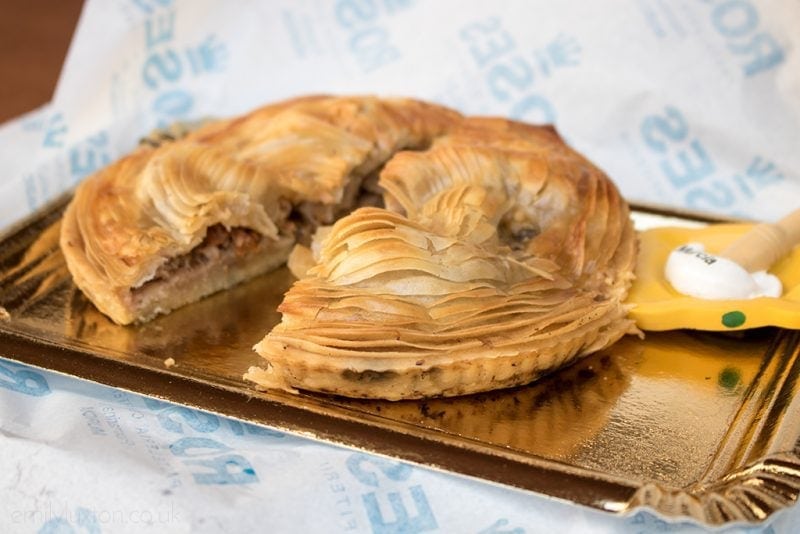
Llaollao – International frozen yoghurt chain Llallao was born in Murcia, so you absolutely have to pop into their branch on the Plaza De Santo Domingo. This square is known by locals as the best place in the city to get ice cream, and as well as two frozen yoghurt stores you’ll find a restaurant with great sundaes. Perfect for cooling off in the shade after a long day sightseeing!
Hotel NH Amistad Murcia – This is where I stayed for the three nights I was in Murcia and I’d be happy to recommend it. The location was ideal for exploring the city on foot, but also nice and quiet at night. The hotel is sleek and modern, and the service from staff was fantastic. More importantly, my room was really comfortable.
CHECK PRICES: Hotels.com | Booking.com
This is the only hotel I can personally recommend in Murcia, but if you know any others please share. Scroll down to the bottom to leave me a comment!
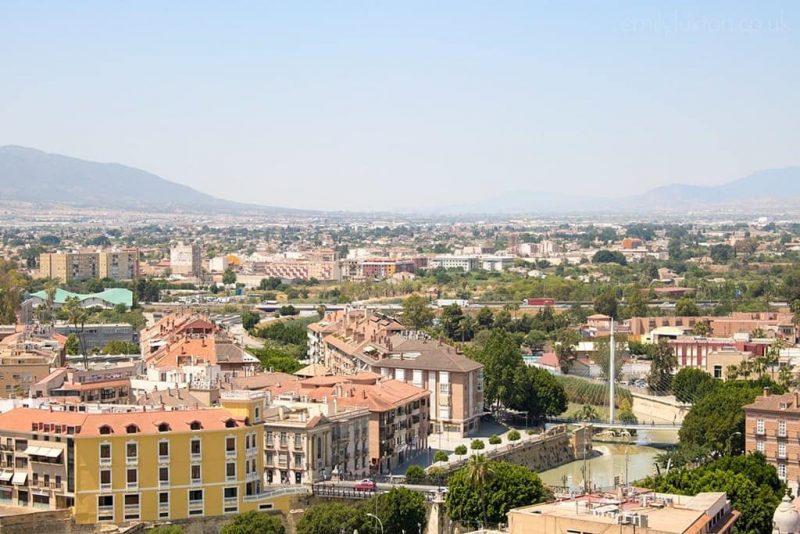
Both easyJet and Ryanair offer nonstop flights (2hr 35m) direct to Murcia’s local airport from Gatwick and Luton (respectively). So it can be fairly low cost to fly in.
Alternatively, you can fly to Alicante airport (about 50 minutes drive from the city). Alicante is serviced by a number of airlines, including Monarch and British Airways, flying from a range of UK airports.
A few years ago, the brand new, state-of-the-art Murcia International Airport (RMU) at Corvera replaced Murcia San Javier Airport for all passenger flights. Its location in Covera provides fast, convenient access to both Costa Calida and Murcia City.
The new airport is about a 30-minute drive from Murcia City Centre, and there is a fixed-rate taxi price of €29. You can check all the transport options, and compare car hire prices, on this page all about Murcia-Corvera Airport . Since Murcia is so well-placed for exploring the spectacular region around it, renting a car is a great idea as it gives you the freedom to get out and take some of the day trips I listed above.
Getting around Murcia is easy. The city centre is small and easily walkable – you can see most of the old town within one day. There are excellent buses within the town, and taxis are fairly cheap.
Pin this post for later!
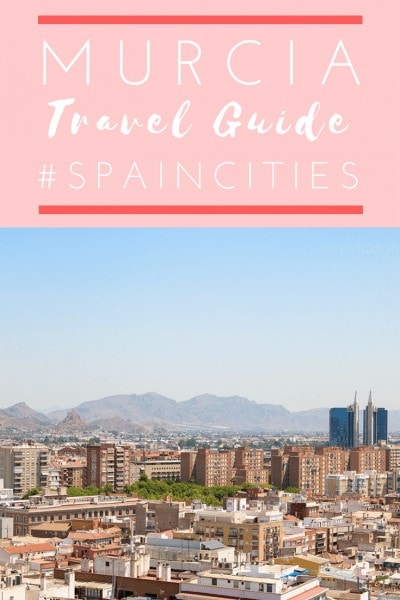
My visit to Murcia was a press trip organised by Spain and Murcia for the #SpainCities campaign. As always, absolutely all words and opinions are my own.
Related Posts
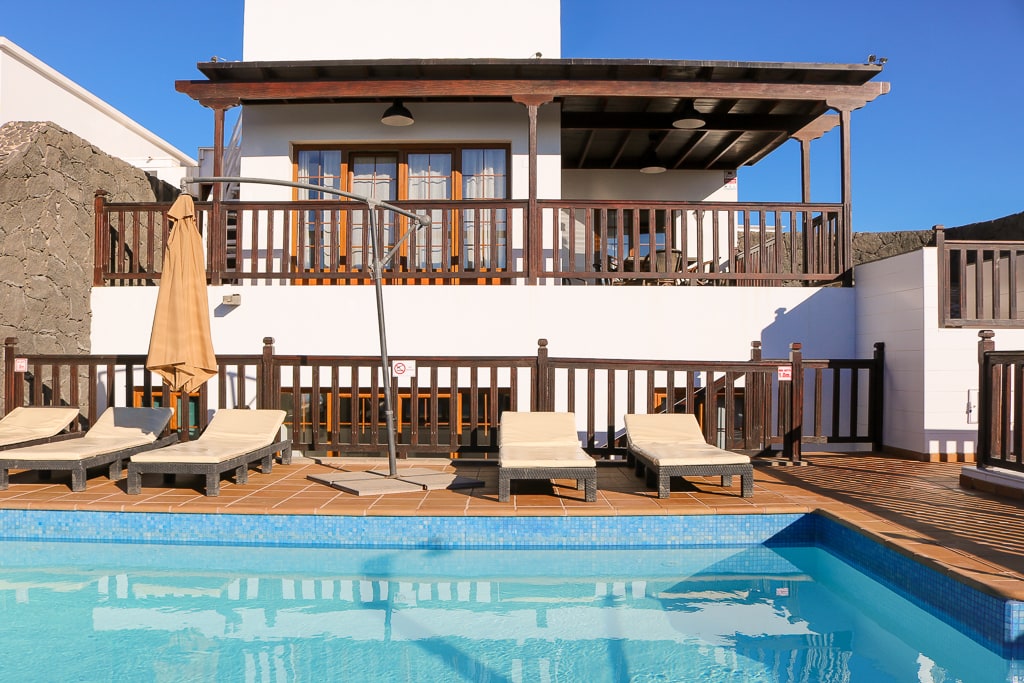
Playa Blanca Holiday Villas: The Ultimate Lanzarote Escape!
- Reviews , Spain
- Last Updated 29 March 2024
A review of the stunning Playa Blanca Holiday Villas – the perfect place for families and big groups to stay in Lanzarote…
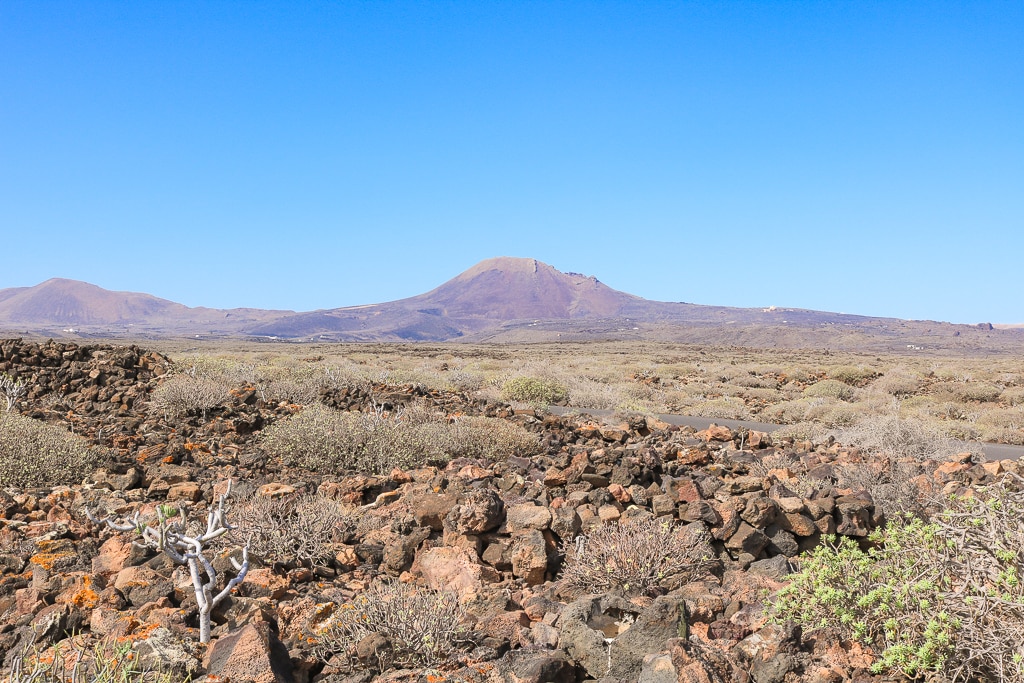
Lanzarote In Winter: Everything you Need to Know
- Last Updated 13 May 2024
Wondering what it’s like to visit Lanzarote in winter? Here’s what to expect from the weather & why winter might be the best time to visit.
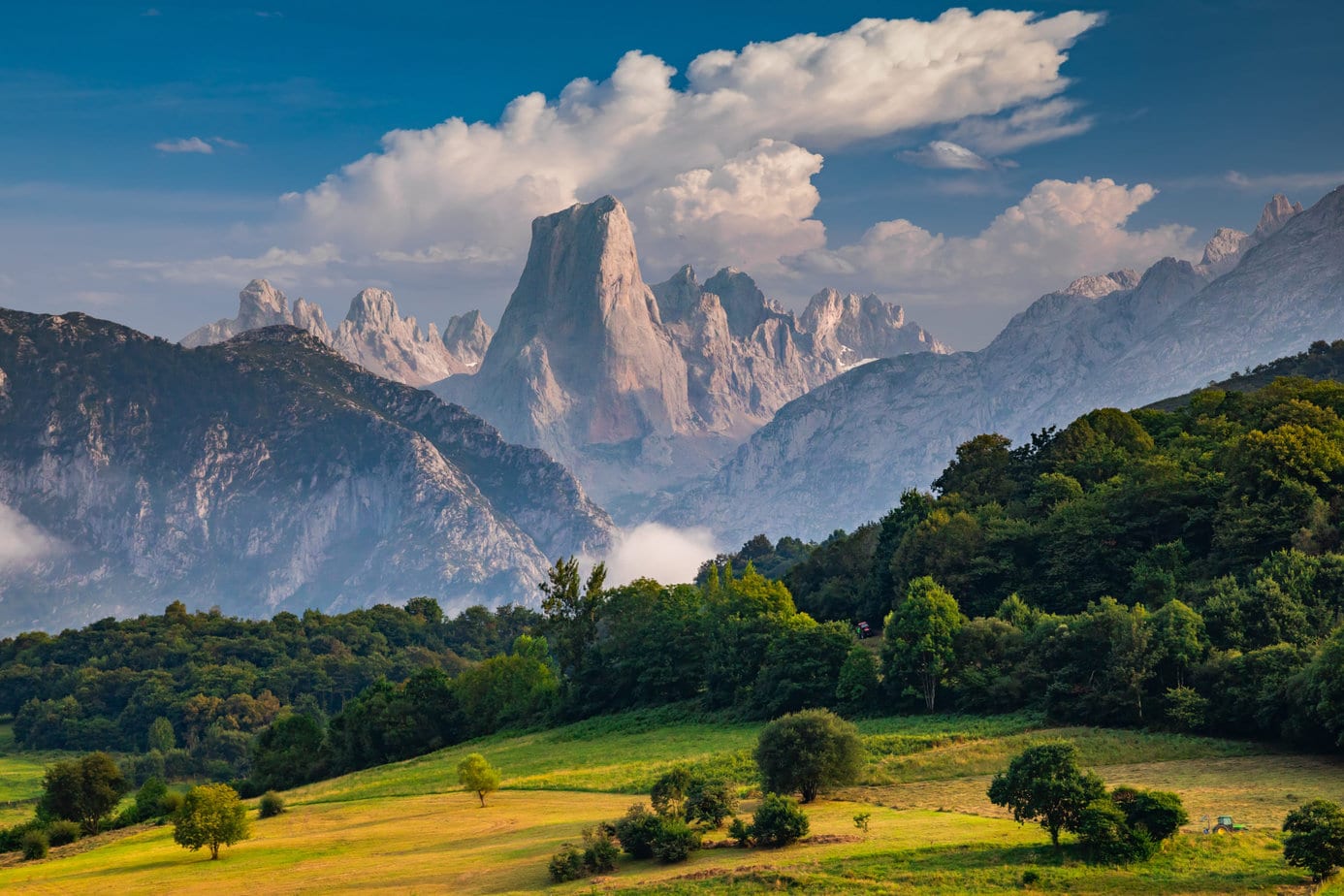
8 of the Best National Parks in Spain for Outdoor Adventures
- Last Updated 5 March 2024
Your guide to the best National Parks in Spain for hiking, biking, and other adventures. Get ready for some outdoor fun!
12 thoughts on “15+ of the Best Things to do in Murcia (+ Travel Guide)”
Great travel guide! I’ve recently spent 48 hours in Crete and I’ve started to appreciate staying in a small city for only a short amount of time. :D I’m really starting to get interested in Murcia, and if I ever visit it, I will keep your tips in mind! :D
Ah thank you so much Noor!! I lvoe a good city break, and when I uncover a hidden gem like Murcia it’s my favourite. Definitely add it to your list :) X
Great article, thanks for the tips, I am going to Murcia in a week, I am really excited! :)
Oh wow are you? That’s awesome! Hope you have a great time – don’t miss the tapas dishes I mentioned :)
In Totana right now and planning a day out to Murcia. Your tips are great, thanks.
Yay!!! I’m so glad this is helpful. Have a lovely time in Murcia :)
This is so good not bad
Nice write up, we went there in 2016 and it was really fun. Heading back to Spain next year and definitely will visit this town again.
I loved Murcia – especially all the food. Some of the best tapas I’ve ever had!
Lovely Post
Thank you :)
Leave a Reply Cancel reply
Your email address will not be published. Required fields are marked *
This site uses Akismet to reduce spam. Learn how your comment data is processed .
- Fueteventura
- Gran Canaria
- All France Tours
- All Morocco Tours
- All Portugal Tours
- All Spain Tours
- All Azores Islands
- Santa Maria
- Mont Saint Michel
- Chefchaouen
- All Portugal
- Castro Marim
- São Brás de Alportel
- Vila do Bispo
- Vila Real de Santo António
- Sintra & Cascais
- Azeitão & Sesimbra
- Ericeira, Peniche & Mafra
- Douro Valley
- Braga & Gerês
- Costa Verde
- Spanish Border
- Viana do Castelo
- All Northern Spain
- San Sebastian
- Vitoria-Gasteiz
- Castro Urdiales
- Santiago de Compostela
- Picos de Europa
- Ciudad Real
- Guadalajara
- All Andalucia
- Jerez de la Fronteira
- Sherry Route
- Sierra Nevada
- All Canary Islands
- Fuerteventura
- Lanzarote & Graciosa

Design Your Next Adventure

Request a quote>
Things to do in Murcia, Spain - 3 days itinerary
The Region of Murcia may not get as many visitors as neighbouring Andalucia and Valencia, but this area has a lot going for it. From the pristine beaches along the Costa Cálida to the incredible Roman heritage in Cartagena, plus delicious tapas and wine, there is plenty to keep you busy.
Sharing the same name as the region, the capital city of Murcia is a small and relaxed spot with a handful of iconic sights, like the Cathedral and the Real Casino. This sunny city has been nicknamed 'La Huerta' thanks to its surrounding orchards, and it's the perfect base to explore the region.
Our three-day itinerary includes the best things to see in Murcia, including tips on places to stay and where to eat.
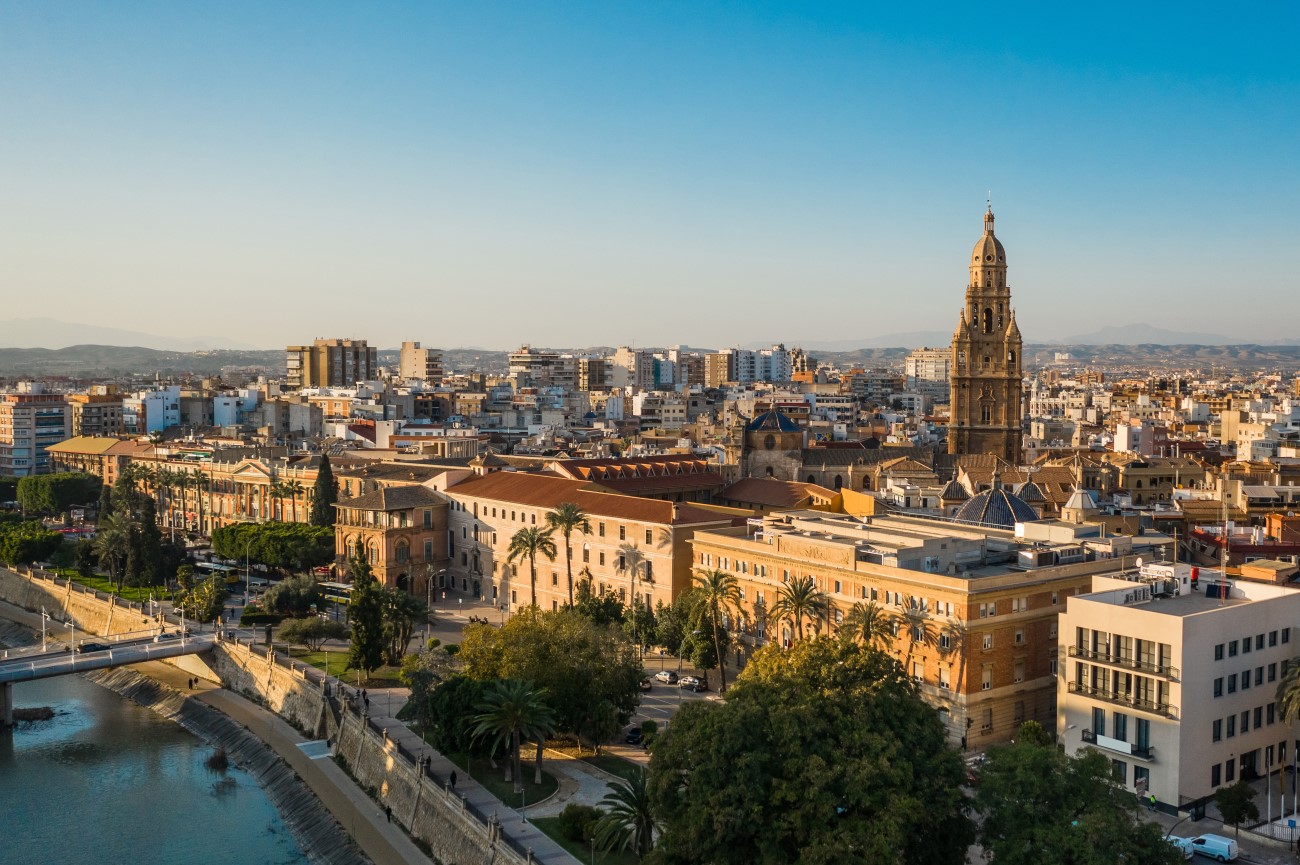
Morning: Murcia Cathedral
The Cathedral is perhaps the most famous landmark in the city. Located in the central Plaza del Cardenal Belluga, this 14th-century church took about three centuries to finish. That explains the mix of architectural styles, which include Baroque, Gothic, Renaissance and Neoclassical elements. Inside, you can explore the beautiful chapels, climb up the 305 foot-high bell tower and see the tomb of King Alfonso X. Also in the plaza is Murcia’s town hall, a contemporary building with sandstone pillars designed by Rafaël Moneo and the beautiful 18th-century rococo Episcopal Palace.

Real Casino de Murcia
Another place worth visiting is the Real Casino de Murcia. Still a private gentleman’s club these days, the building was erected in the mid-19th century for the city's elite society. Book a tour and visit the luxurious interiors, which include an opulent ballroom with a ceiling fresco portraying famous cultural figures, a Moorish-style billiard room and a grand courtyard resembling the palaces of the neighbouring region of Andalusia.

Palacio del Almudi
Before you stop for some well-deserved tapas, head to Palacio de Almudi. This beautiful building, currently used for temporary art exhibits, was completed in 1629 and is the perfect representation of the wealth that came into Murcia during the silk industry era. Once inside, you’ll be able to admire the beautiful Tuscan-style hall featuring rows of columns and broad arches. On your way out, make sure to look up to capture a relief of the Habsburg coat of arms with the emblem of the city of Murcia around it.

Afternoon: Paseo del Melécon
Take a stroll along the city's famous promenade. Erected in the 15th century, the Paseo del Melécon goes deep into an orchard that surrounds the west side of Murcia. Inside the gardens are a number of playgrounds and sculptures like the Portada del Huerto de las Bombas.
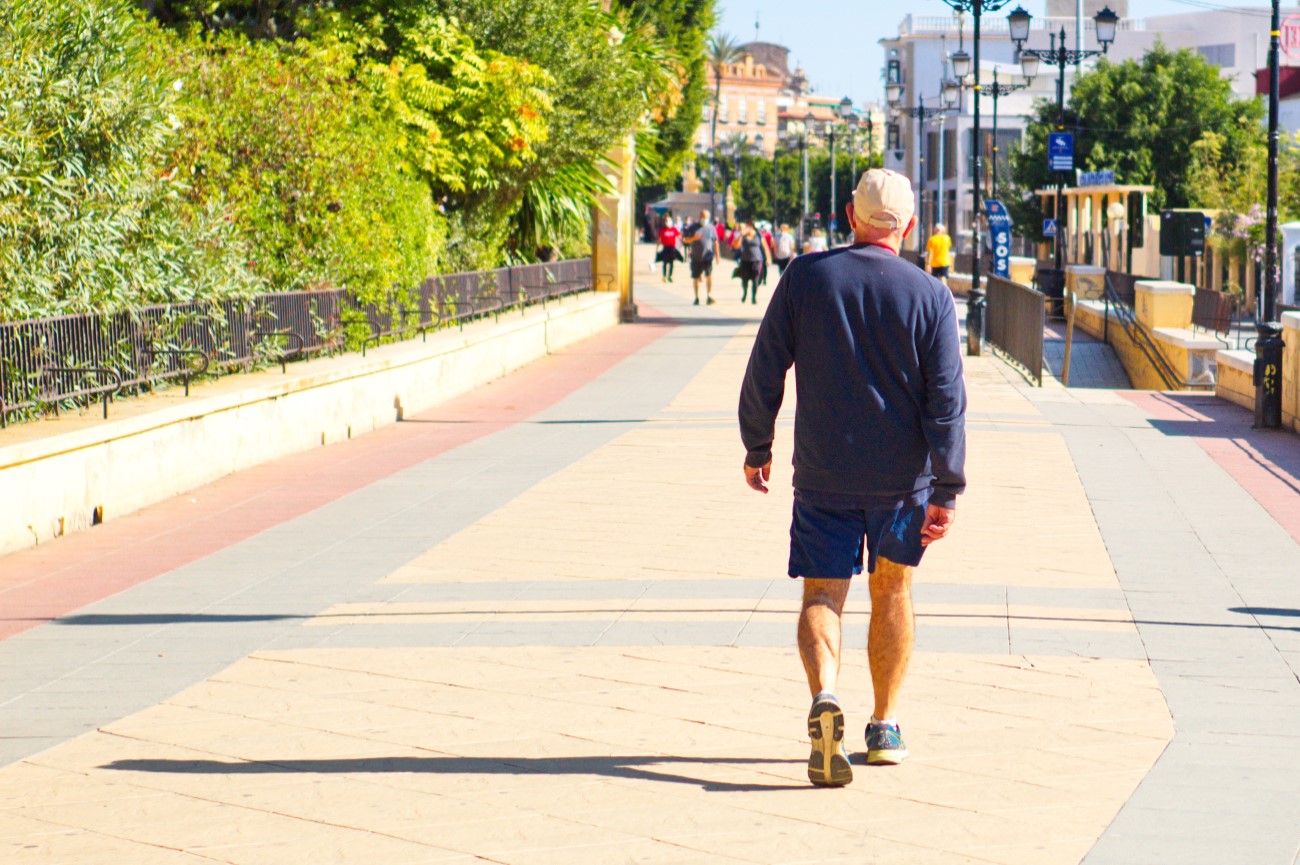
Jardin de Floridablanca
Cross over the river and head to the Jardin de Floridablanca, a green oasis in the city where residents shelter from the scorching sun in the summer. This is the city’s oldest public park, with doors open since the mid-19th century. Connected to the city via the famous Ponte Vieja, aka Puente de los Peligros, the park is full of colourful flower beds, plenty of shaded areas and old ficus trees with buttress roots that spread everywhere.
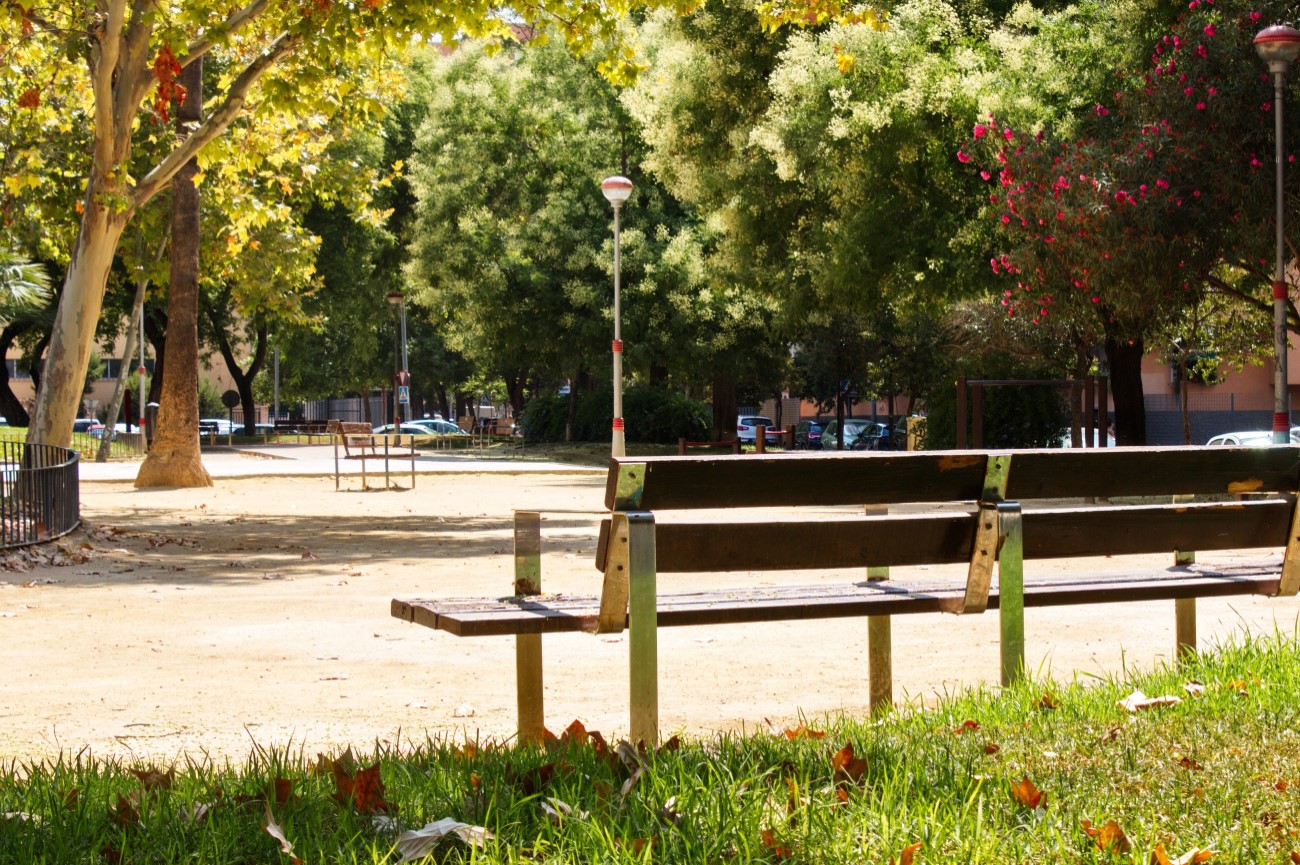
Plaza de Cardenal Belluga
Finish your day back at Plaza de Cardenal Beluga. At night the square turns into a lively spot for locals, thanks to its numerous cafes and bars. Take this opportunity to grab dinner or a drink and enjoy the architectural sights around you.
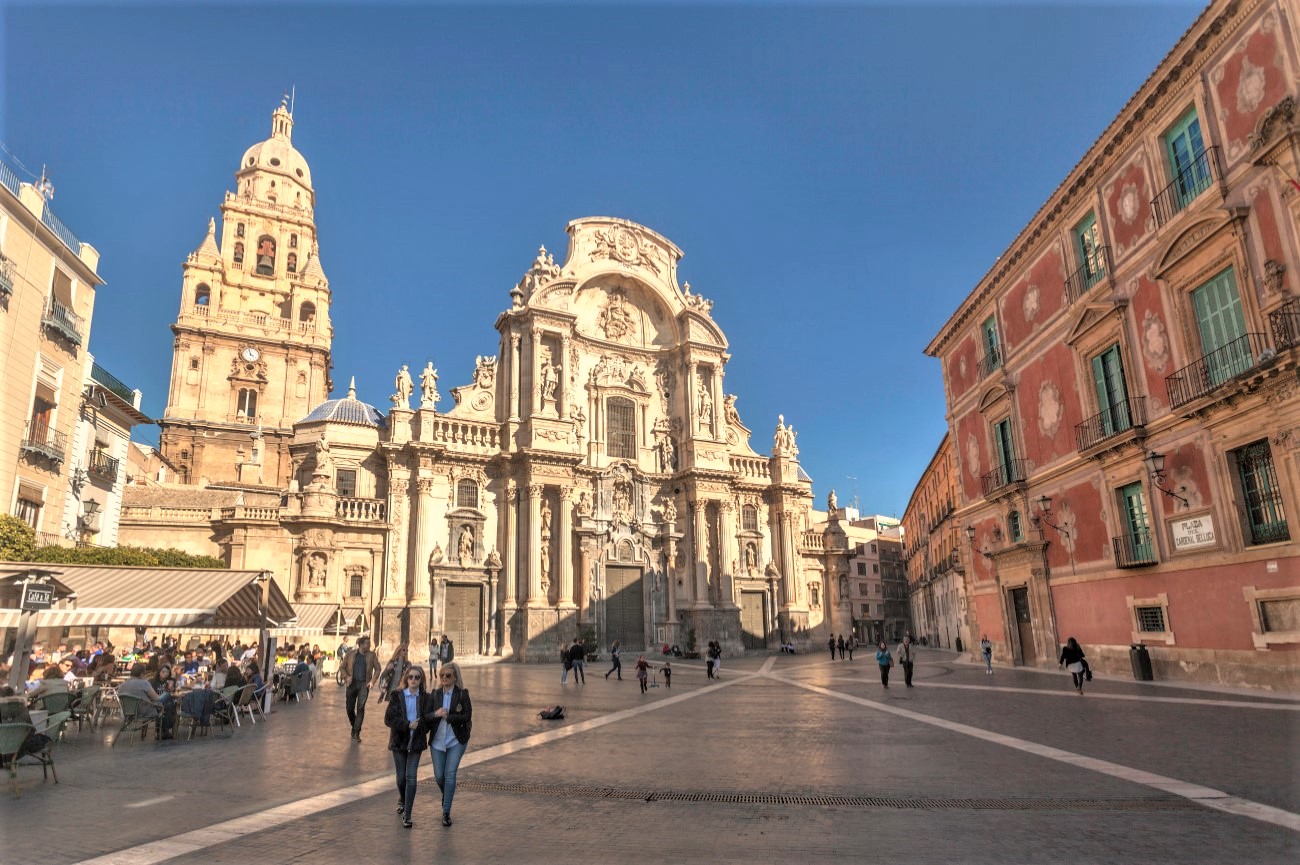
Day 1 - Murcia Tour Map
Morning: Mercado de Abastos de Verónicas
Start your day at the city's central market by grabbing breakfast and then going food shopping. If you want an authentic experience, look for some of Murcia’s 'Denominación de Origen' ingredients like cured goat cheese or the Calasparra rice, a very absorbent variety which works well in stews and soups. You can also find paprika in abundance, as it is a core ingredient of many Spanish dishes growing in the Murcian countryside.
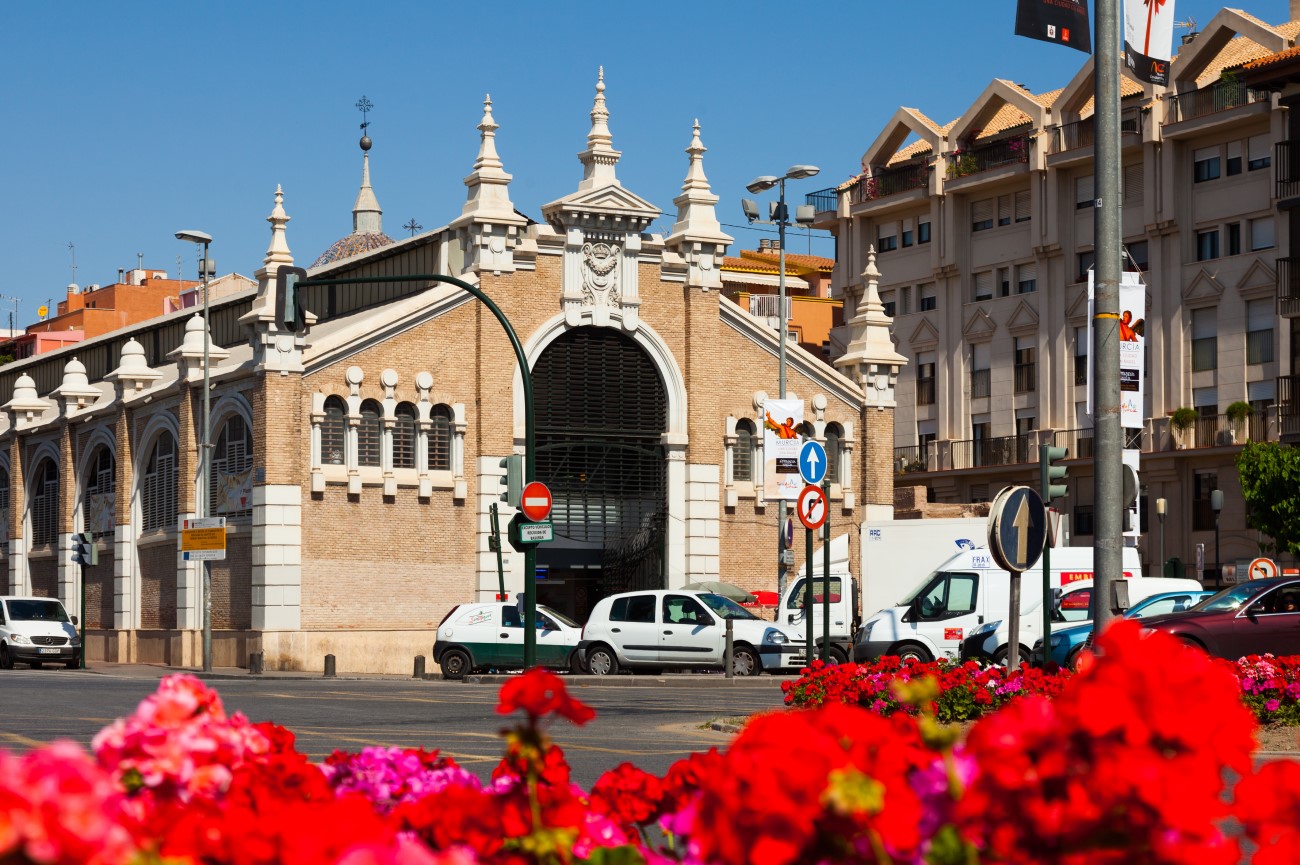
Museo de Santa Clara
Established in the 1300s on the site of the former Murcian Moorish Alcazar, this working convent still features traces of Arab architecture, like the iconic horseshoe-shaped arches. Unfortunately, only a quarter of the complex is open for visitors, but that is surely enough to get a taste of the beauty of this structure.
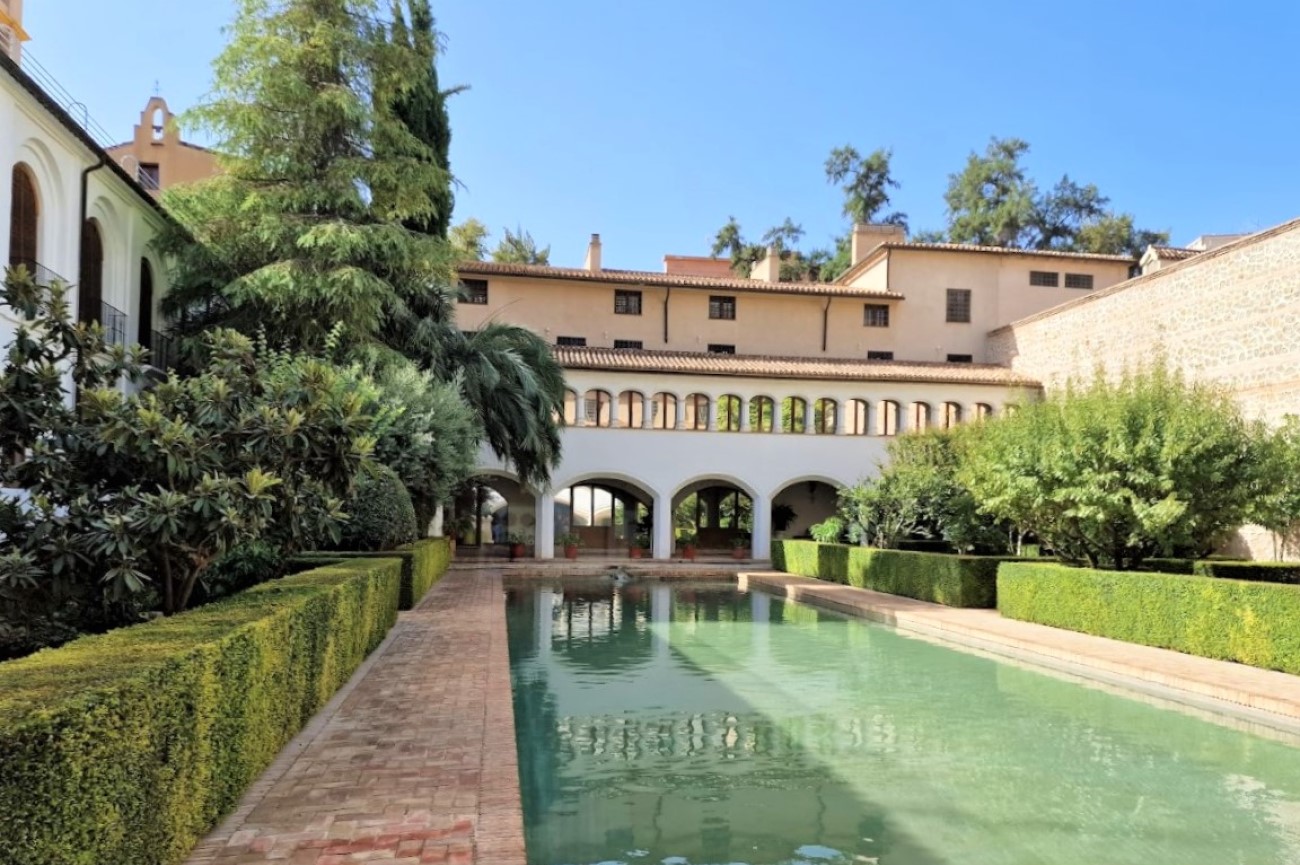
Afternoon: Santuario de Nuestra Señora de la Fuensanta
Just 6km south of the city of Murcia is this natural parkland where locals head for a bit of fresh air. Hop on a taxi towards the Santuario de la Fuensanta for the best panoramic views, especially at sunset. Construction of this church began in 1694 and took nine years to complete. While it got damaged during the Spanish Civil War, it is now restored. The surrounding trails are lined with wild herbs like thyme and rosemary and wind up in forests of Aleppo pines and Hermes oaks.
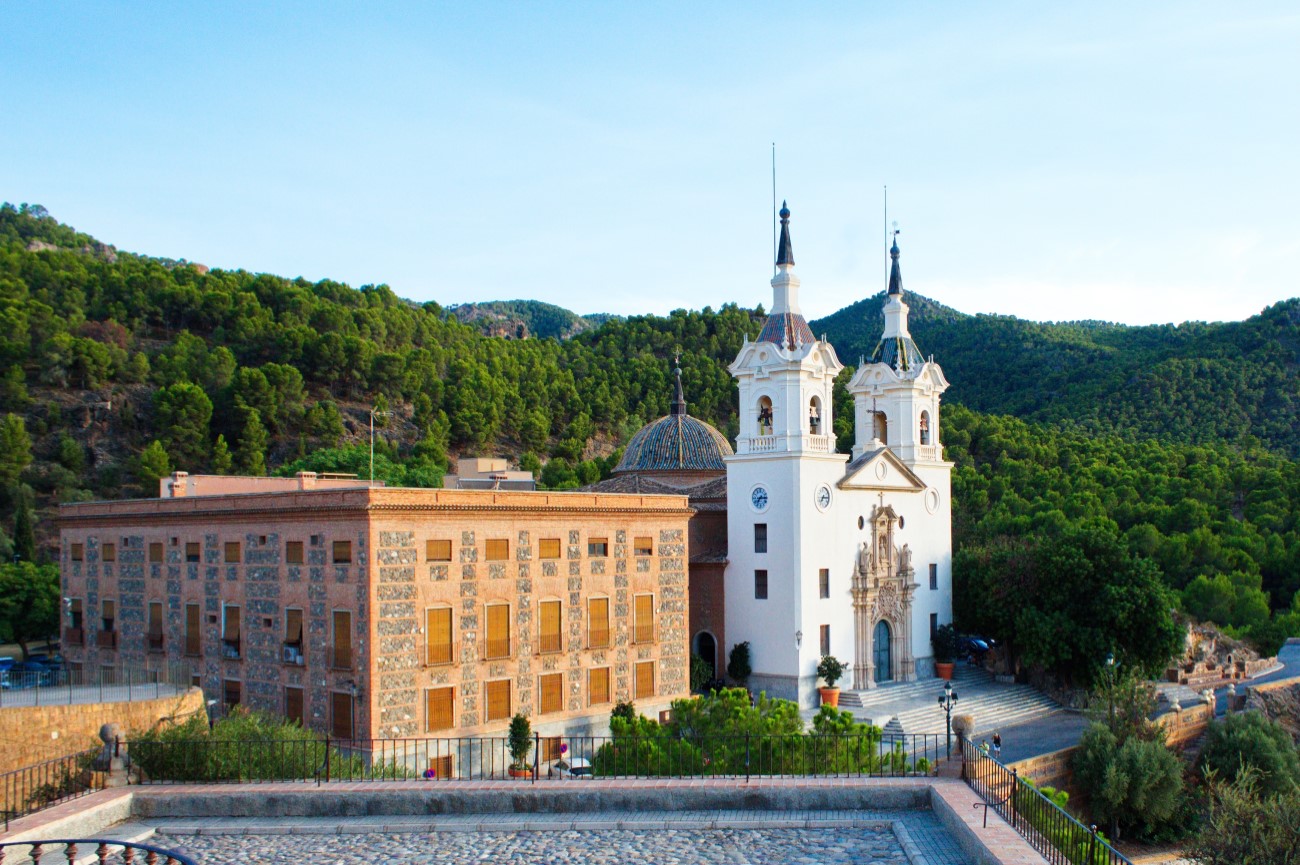
Plaza de Las Flores
Once more, we’re going to end the day in one of the lovely plazas of Murcia. Plaza de Las Flores is located in Murcia’s Old Quarter and is the place of choice for tapas and an alfresco drink. In summer, try the famous Tinto de Verano, made with red wine and fizzy lemonade. With a central fountain as the main attraction, this plaza is a short way west of the cathedral and got its name from the many florists’ shops, which are still in business today. The townhouses around the square are from the late 19th and early 20th century, like the Edificio de Tejidos Abad with its stunning window bays.

Day 2 - Murcia Tour Map
Day 3 - Cartagena Day Trip
Morning: cartagena old town.
On your last day in Murcia, head to the beautiful city of Cartagena, about a 1h30 minute train from the capital. Once there, explore the lively streets of the old town, deeply influenced by the striking architecture of the neighbouring region of Andalusia. Among the highlights here is the Plaza de Ayuntamiento.
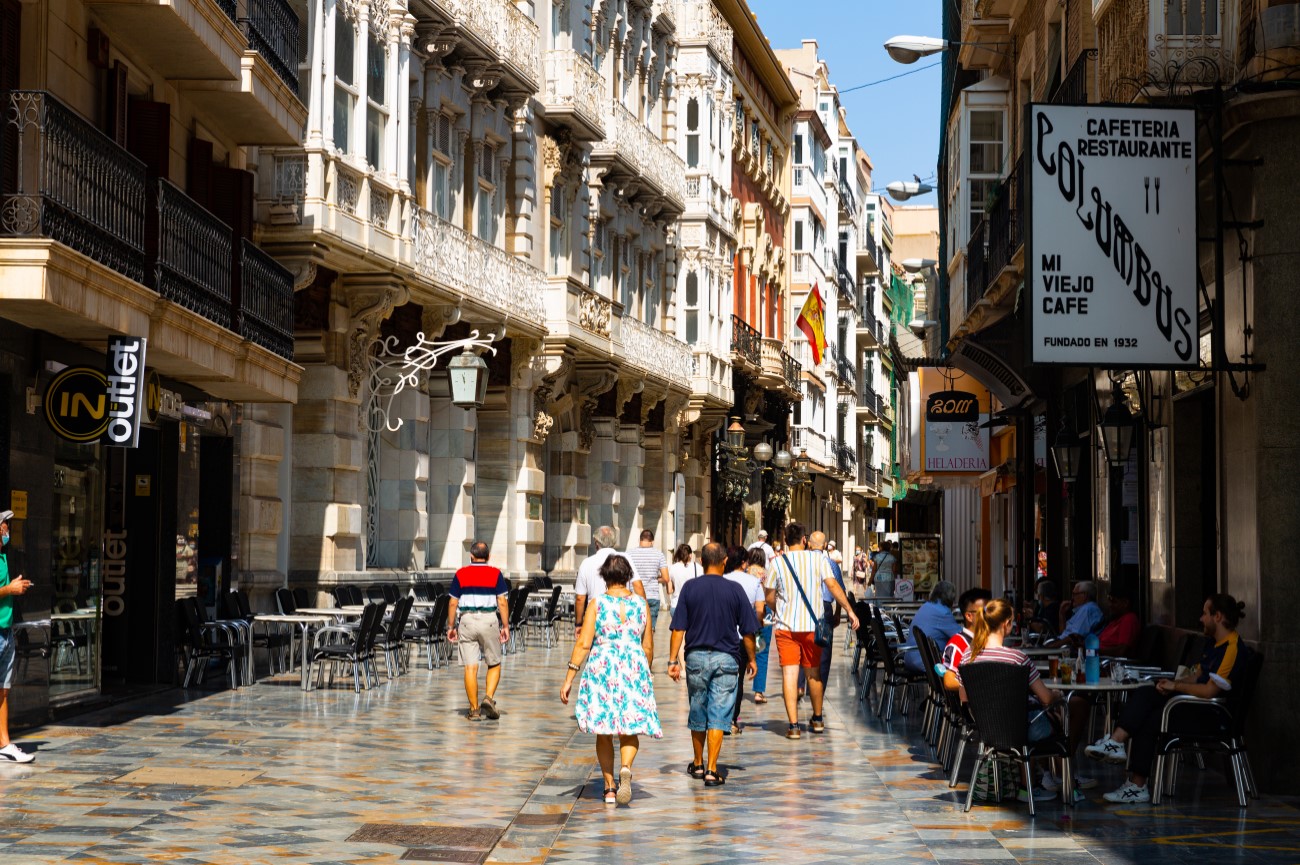
Palacio Consistorial de Cartagena
Standing at the Plaza de Ayuntamiento, you’ll spot the Palacio Consistorial de Cartegena, home to Murcia’s city hall. Guided tours take you inside this Modernista building, where you’ll encounter a stunning marble staircase and stained glass windows. At night this magnificent structure gains a new life when the lights turn on.
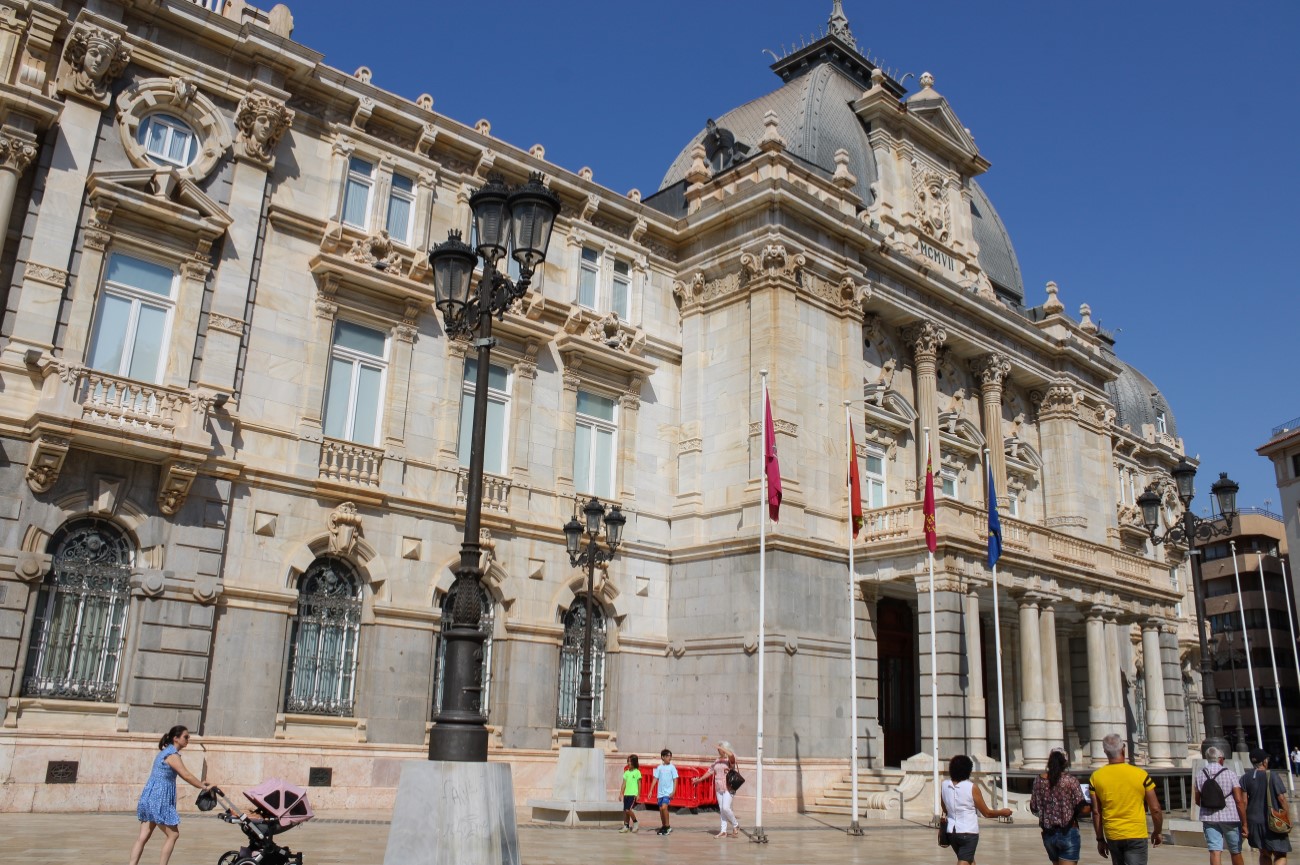
Afternoon: Roman Theatre
After wandering around the old town, it’s time to head to the main attraction of the Murcian Region, the Roman Theatre. You can see it from a distance, but it’s worth paying the entry fee to learn more about the history of this site. Dating as far back as the 5th century BC, the Roman Theatre was only recently uncovered following excavations in the 1990s. The tour begins with a short film showcasing how this area used to look and continues to a small museum with artefacts before finishing at the theatre.
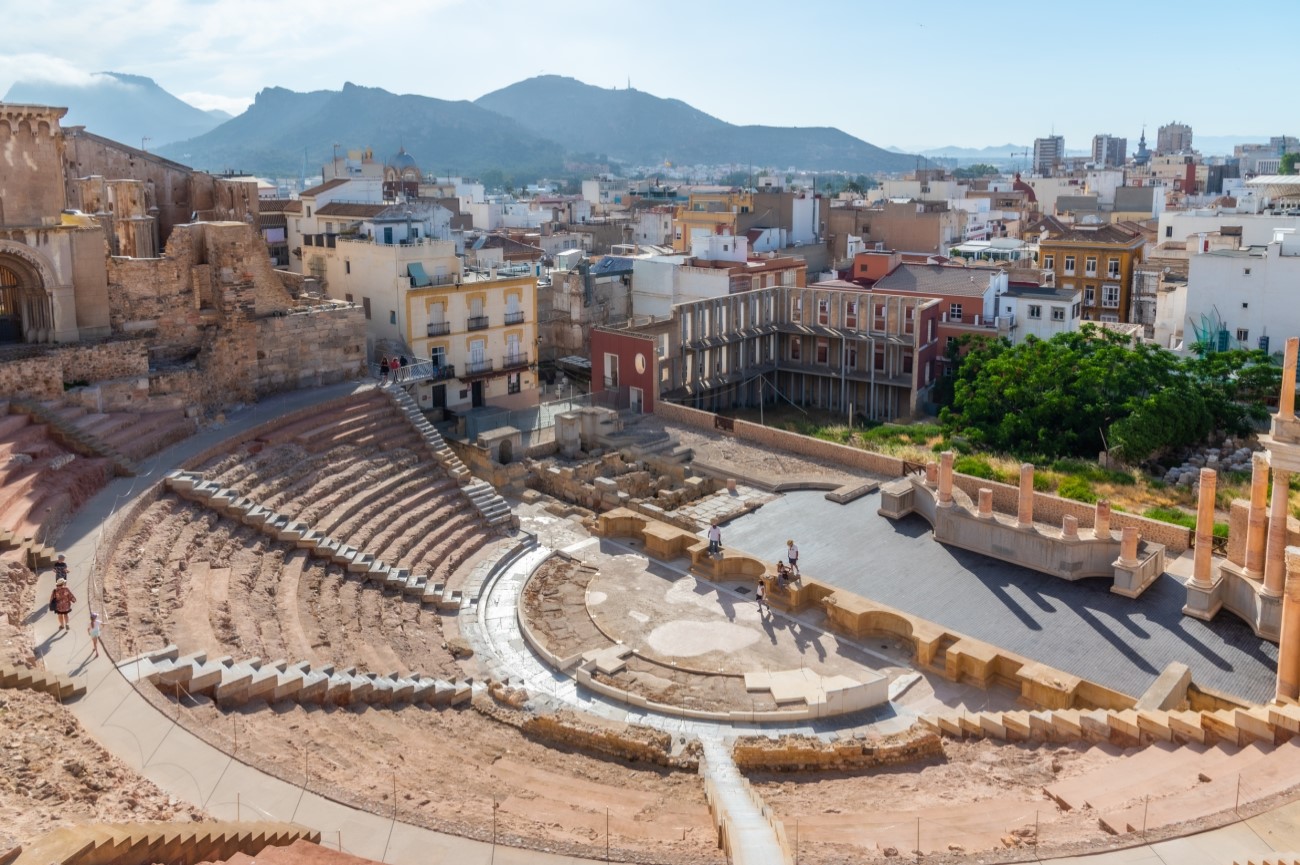
Cartagena Port
From the theatre, head towards the city’s port. Take a walk along the waterfront dotted with statues and sculptures. From here, you can see the town walls and cruises coming in. Nearby is the Naval Museum, which showcases over 3,000 items related to the city's navy past. In summer, you can take a boat tour from here that passes through several historical sites, including forts and lighthouses.
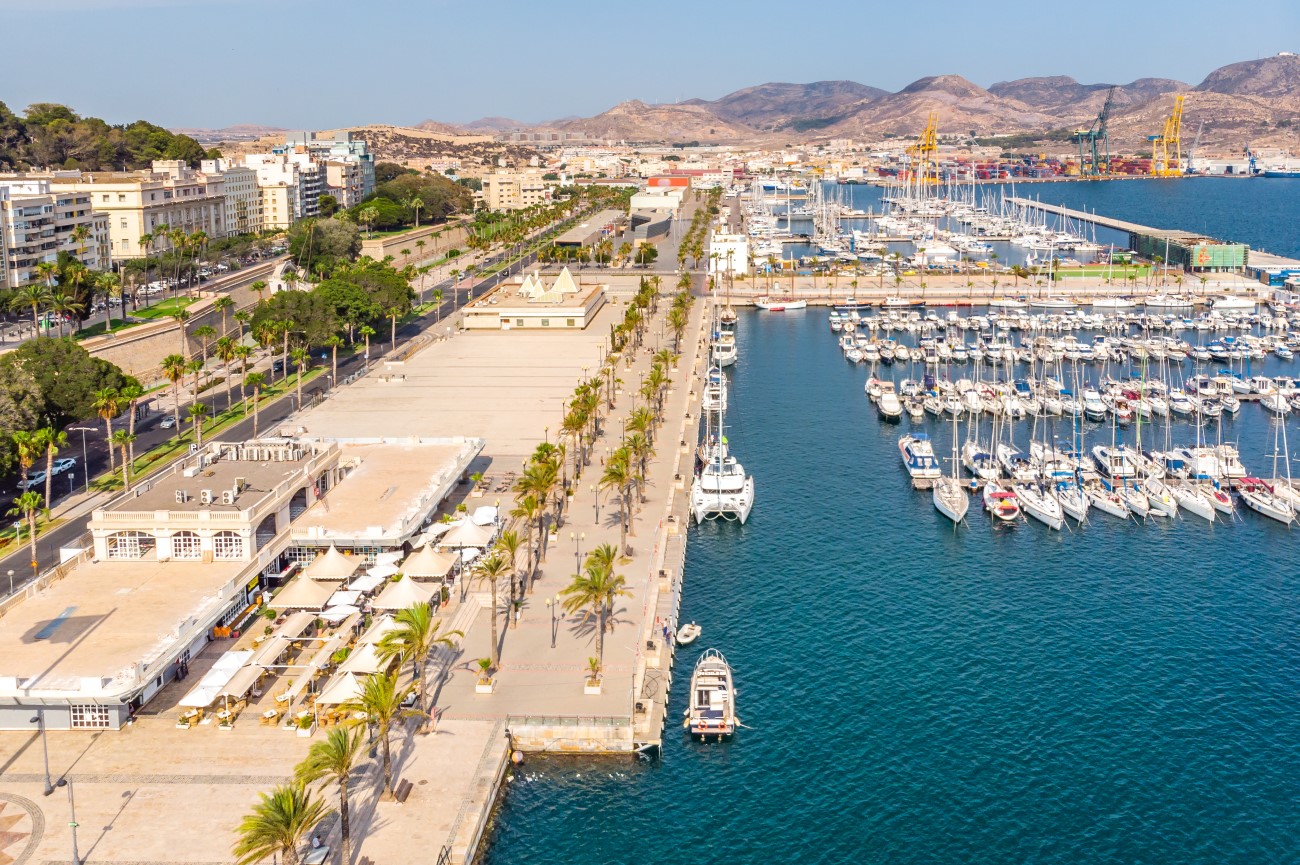
Roman Forum
Another Roman site worth checking is the Forum. Located on the Molinete hill, this is considered one of the largest archaeological sites in Spain. It includes the remains of a town, with traces of a street and thermal baths dating back to the 1st century BC. You’ll also find wall paintings in one of the houses.
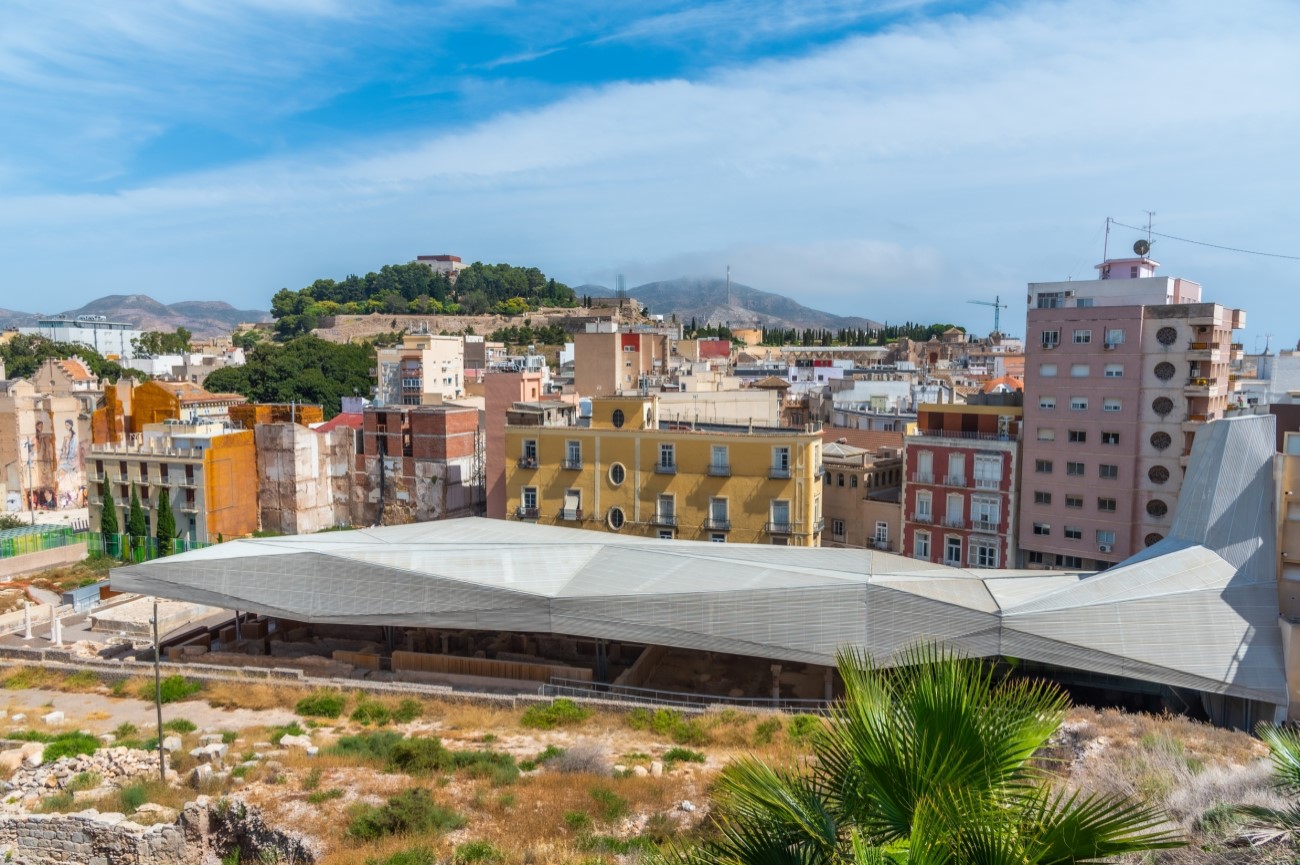
Inside this small museum, you’ll find the remains of Cartagena’s first defensive walls, a legacy from the Carthaginians. There is also a funeral crypt dating back to the 17th century.

Castillo de la Concepción
For the best city views, take a 20-minute walk to the Castillo de la Concepción. Alternatively, you can save your legs and hop on the panoramic lift for a small fee. Visit the Centro de Interpretación de la Historia de Cartagena to learn more about the city’s history. Then sit back and take in the views of the Roman Theatre and the sea below you. If you’re lucky, you might catch a peacock parading around the gardens.
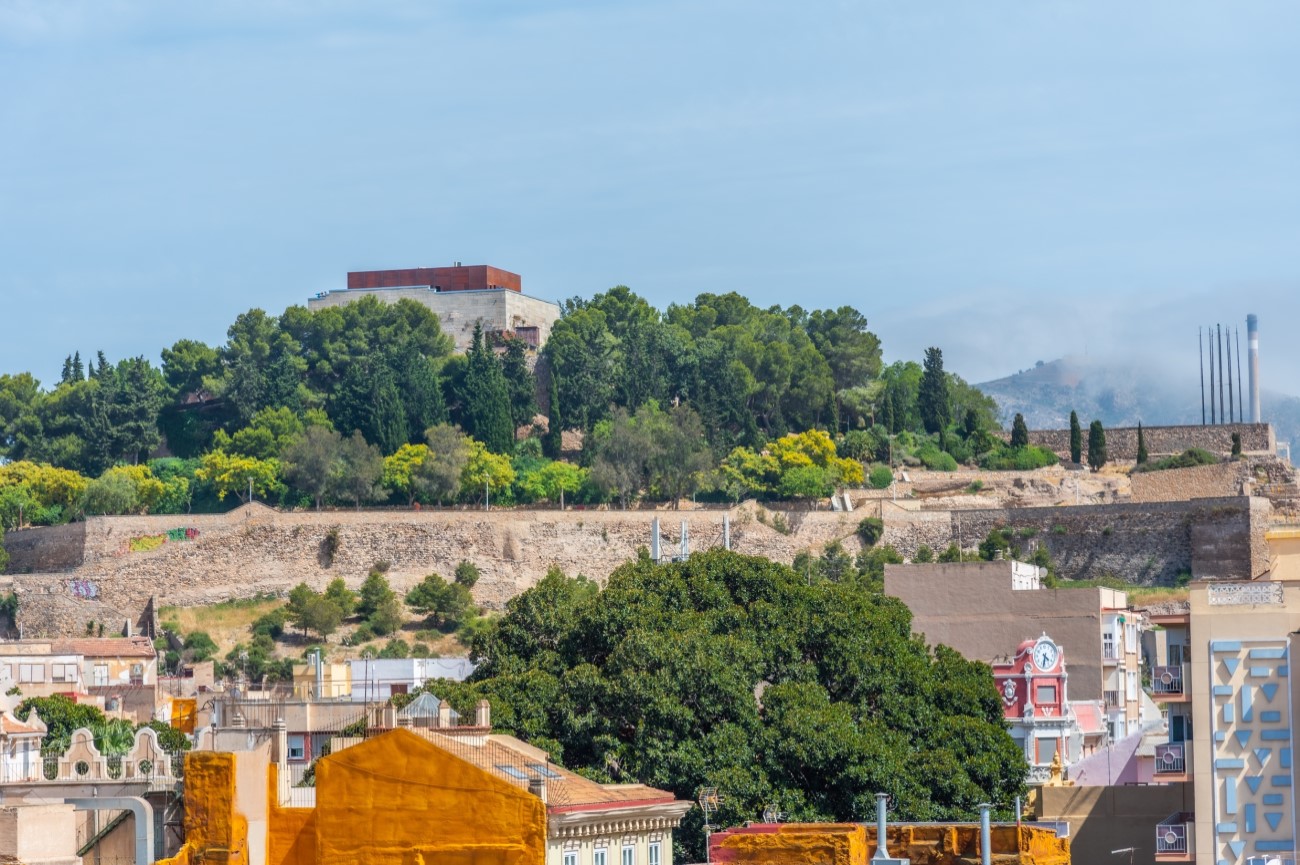
Cala Cortina
If time allows, head to the coast and enjoy the rest of your day on one of the best beaches in Cartagena - Cala Cortina. Finding the best beach isn't hard, as this is the only beach in town. Alongside the sandy cove are a series of tapas and wine bars where you can unwind.
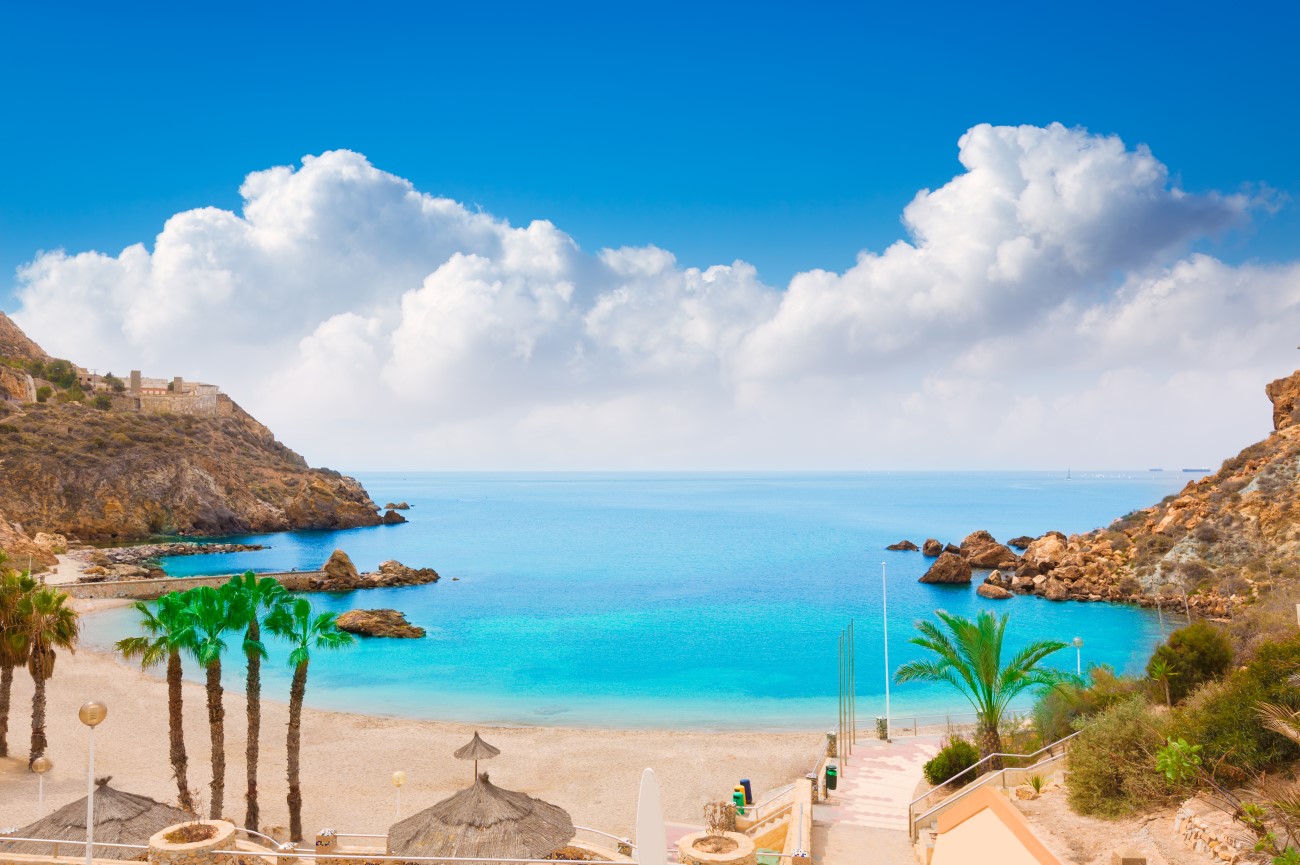
Day 3 - Cartagena Tour Map
Other things to do in Murcia:
- Costa Blanca: If you’re craving a bit of beach time, head directly east to the famous Costa Blanca. Torre de la Horadada has two sandy Blue Flag beaches, with great chiringuitos (beach bars) where you can grab a bite to eat.
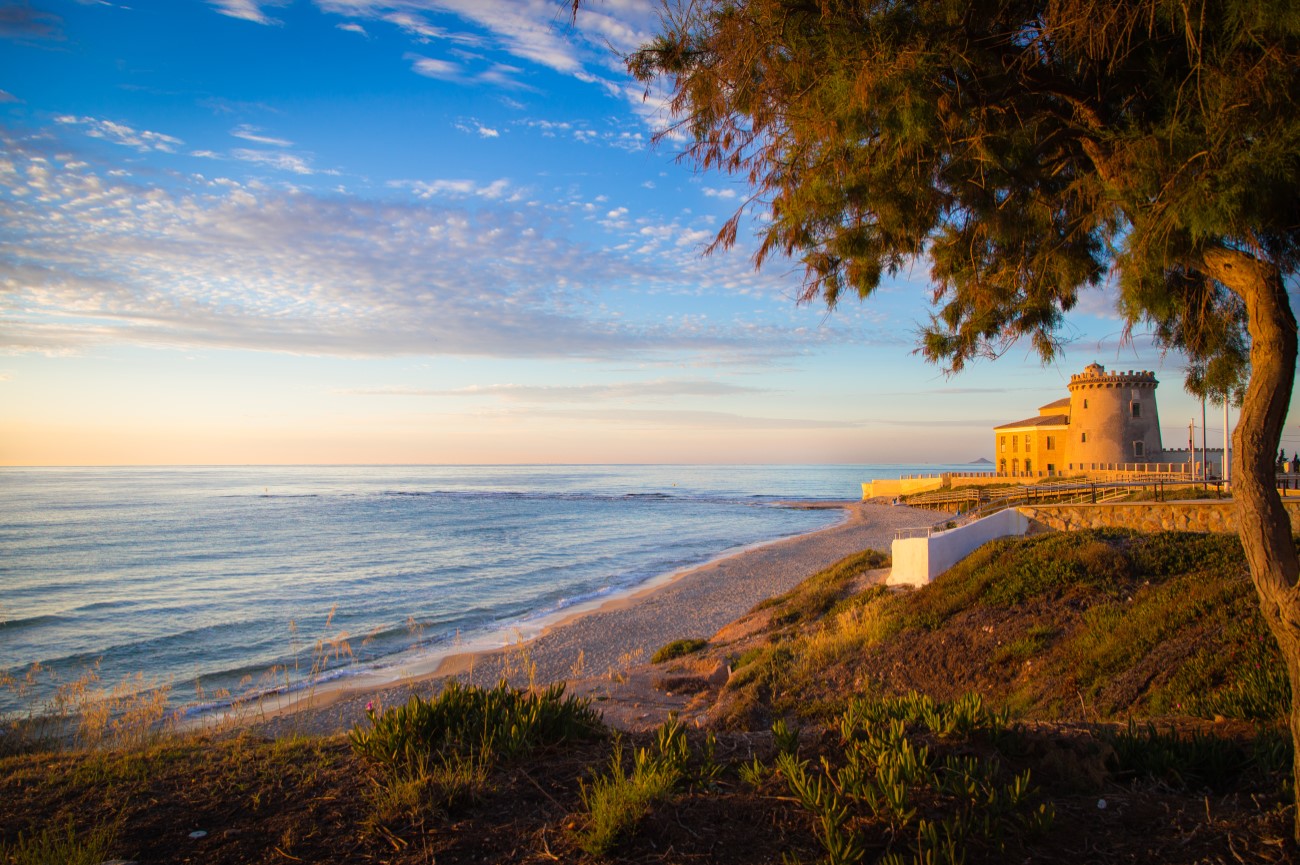
- Mar Menor: Don’t be fooled by the name Mar Menor (or Lesser Sea, roughly translated to English) is one of the largest lagoons in Europe. This saltwater lagoon is disconnected from the Mediterranean Sea through a 20km sand bar and is highly used for all types of watersports. Golf is also popular here.
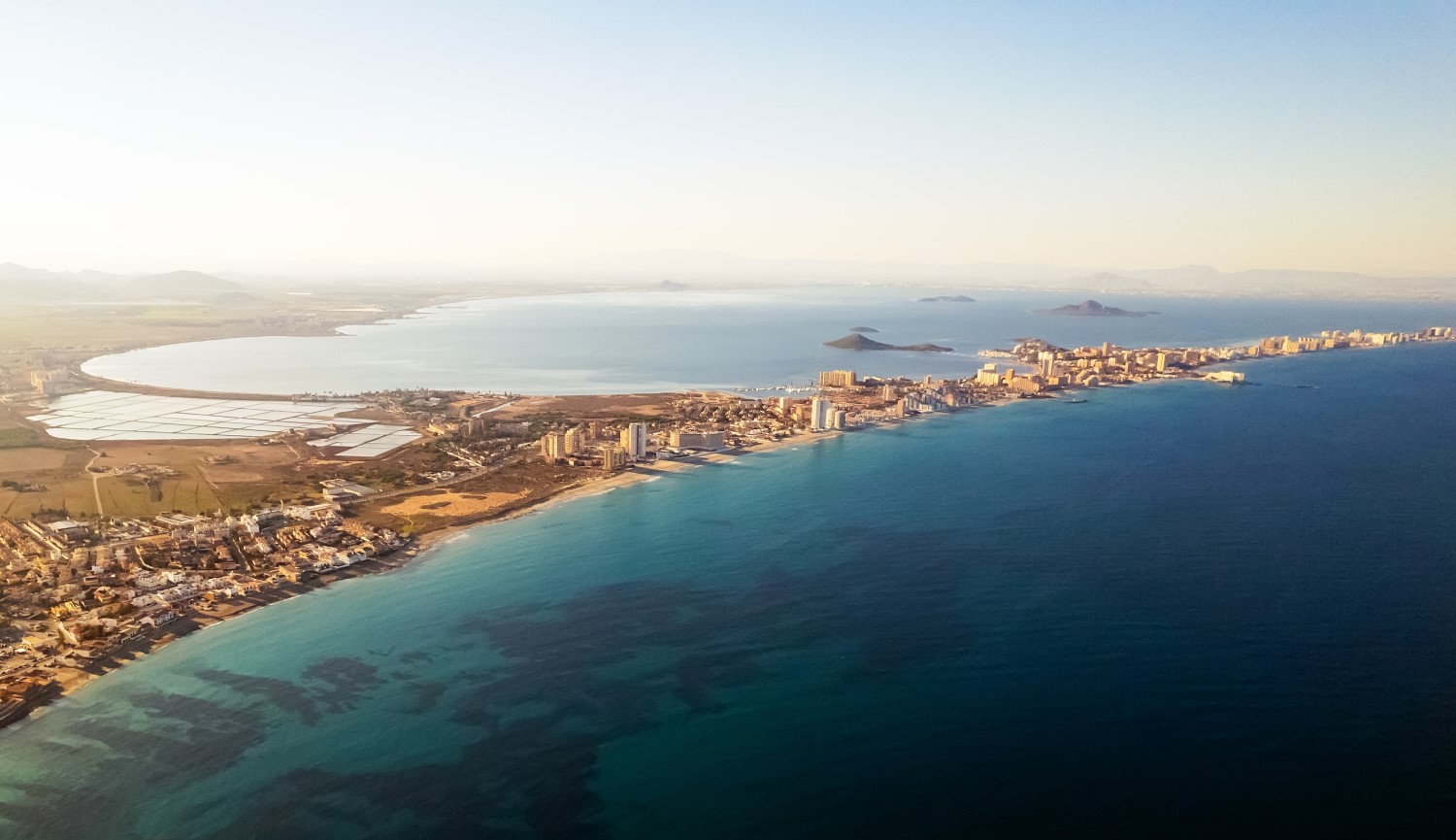
- Lorca: The medieval castle situated in the town of Lorca is another highlight of this region. The complex established between the 9th and 15th centuries includes the remains of the Synagogue. Beyond the castle, it's worth wandering around the old town, passing through Plaza de España, the San Patricio Collegiate and visiting museums like the Museu Arqueologico or the Museo de Bordado.
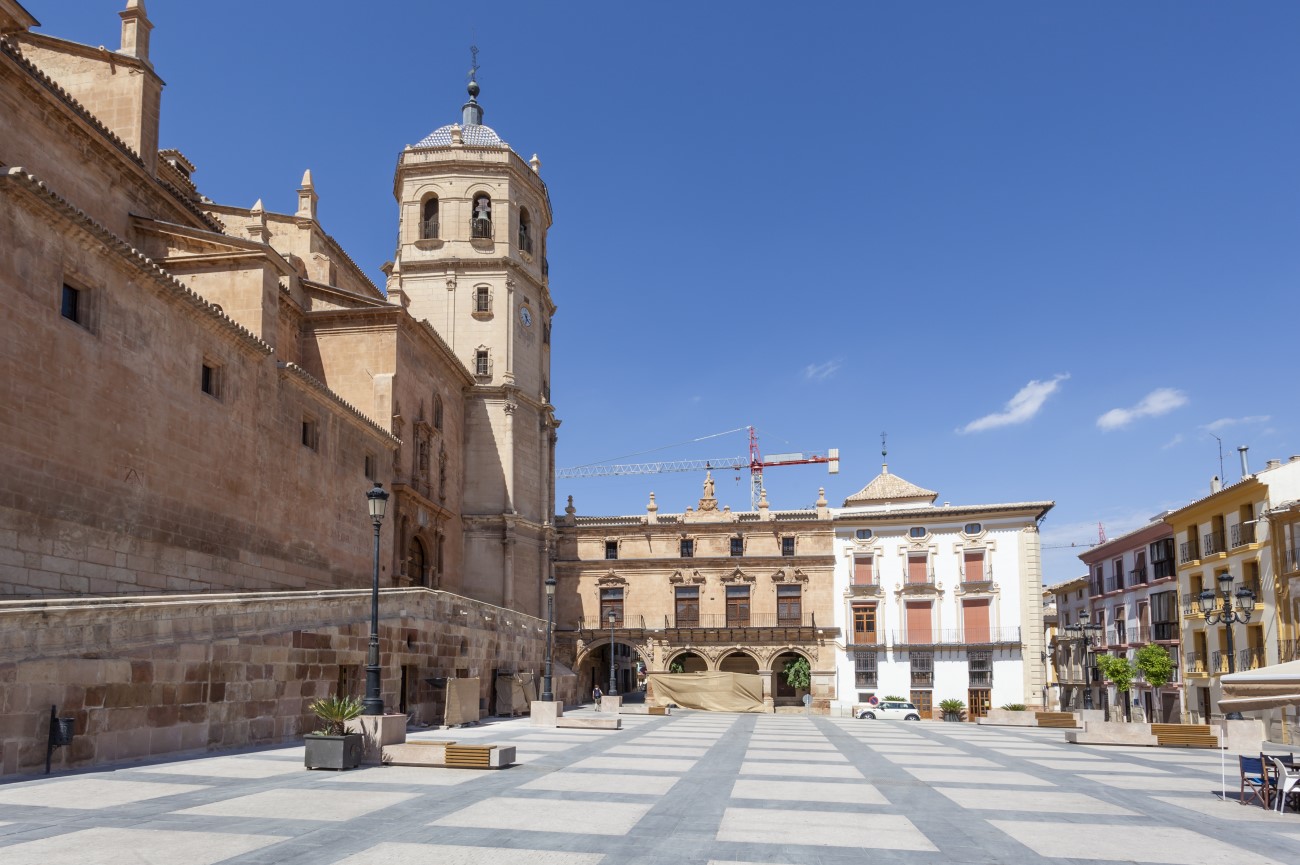
- Murcia Wine Route: Murcia is also a wine region. If you're in the mood for a wine tasting, you can tour the wine cellars spread across the municipalities of Yecla, Jumilla and Bullas. If you’re lucky, your trip will coincide with one of the many wine events held year-round, like the harvest, running from late August to early November.
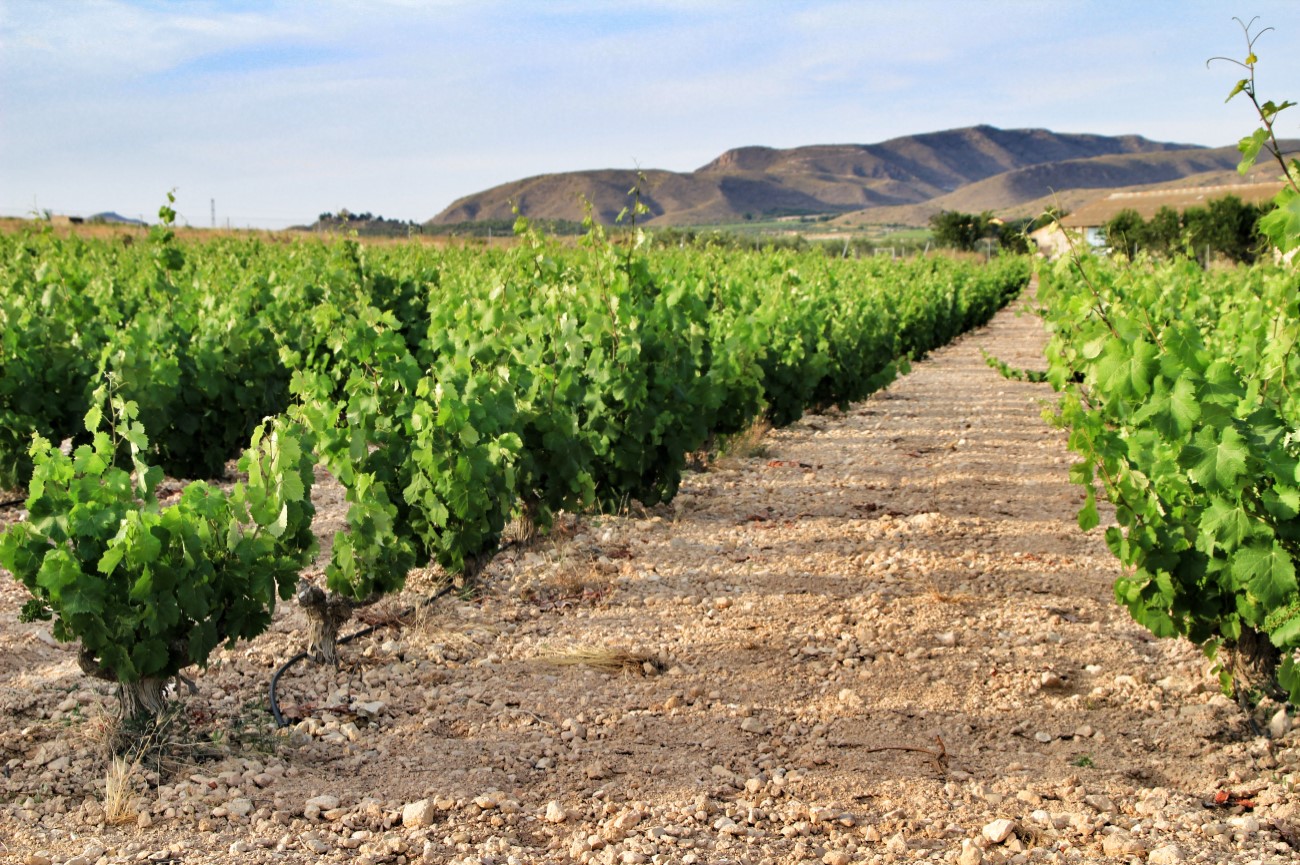
- Ciudad Encantada de Bolnuevo: The Enchanted City of Bolnuevo is one of the most incredible places in Mazarrón, especially if you’re a photography lover. The Gredas de Bolnuevo, a naturally sculptured rock formation, has been declared the first Natural Monument of the Region of Murcia. These limestones are located right in front of the beautiful beach of Bolnuevo.
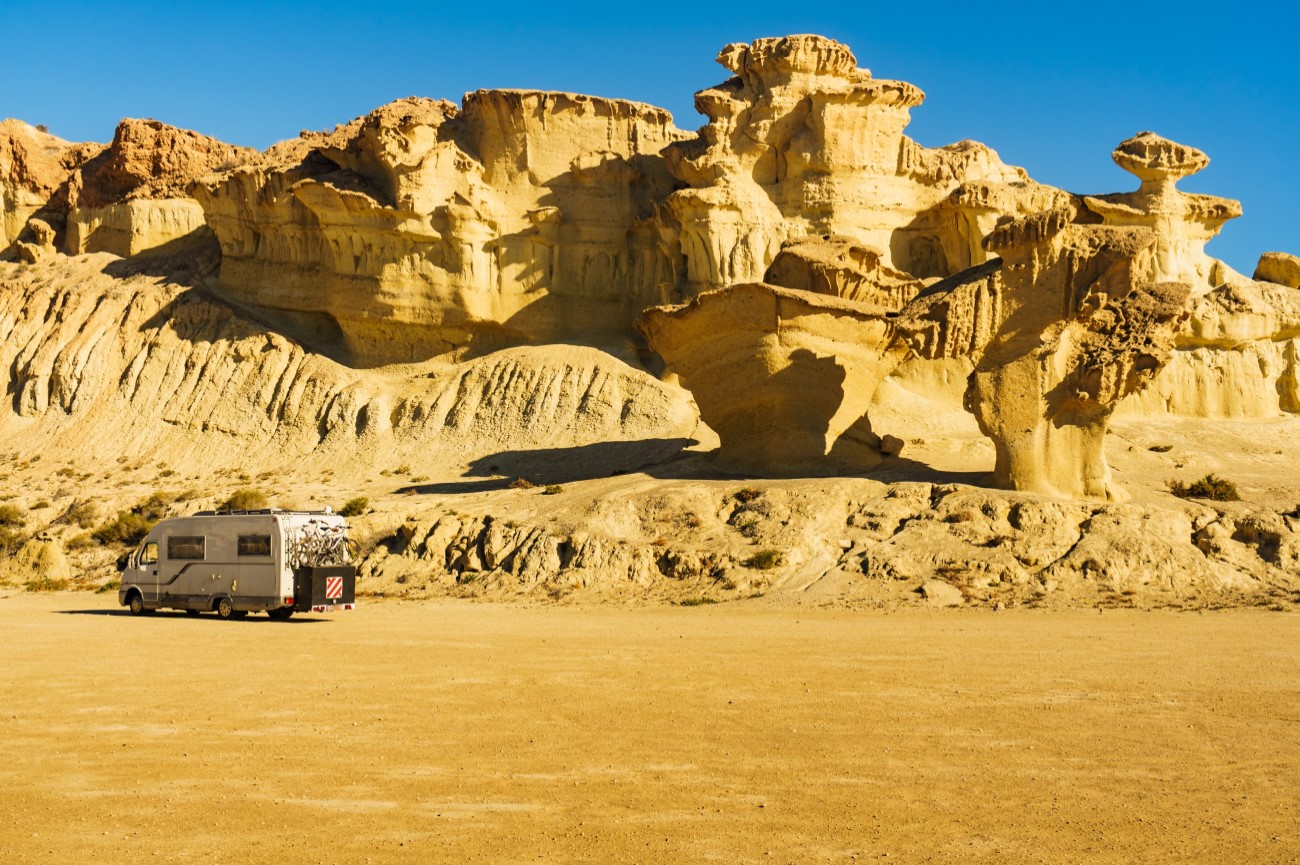
- Batería de Castillitos: This military battery was constructed in the 1930s in a medieval castle style on Cabo Tiñoso, in the western area of the Cartagena Coast.
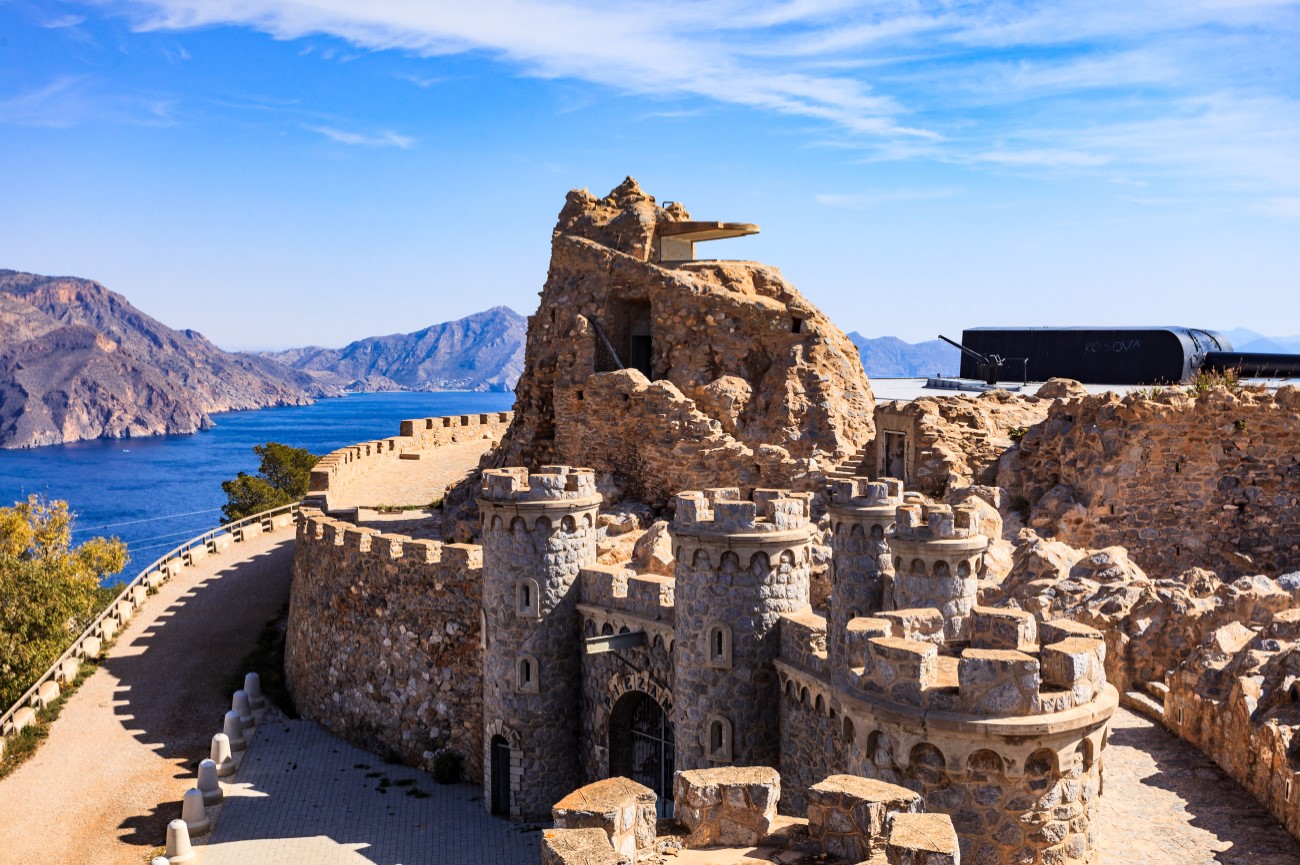
- Salinas y Arenales de San Pedro del Pinatar: Stretching for six kilometres, this nature reserve features salt flats, sand dunes and pine forests. It's an ideal spot for birdwatching, with flamingos flocking here around late June.
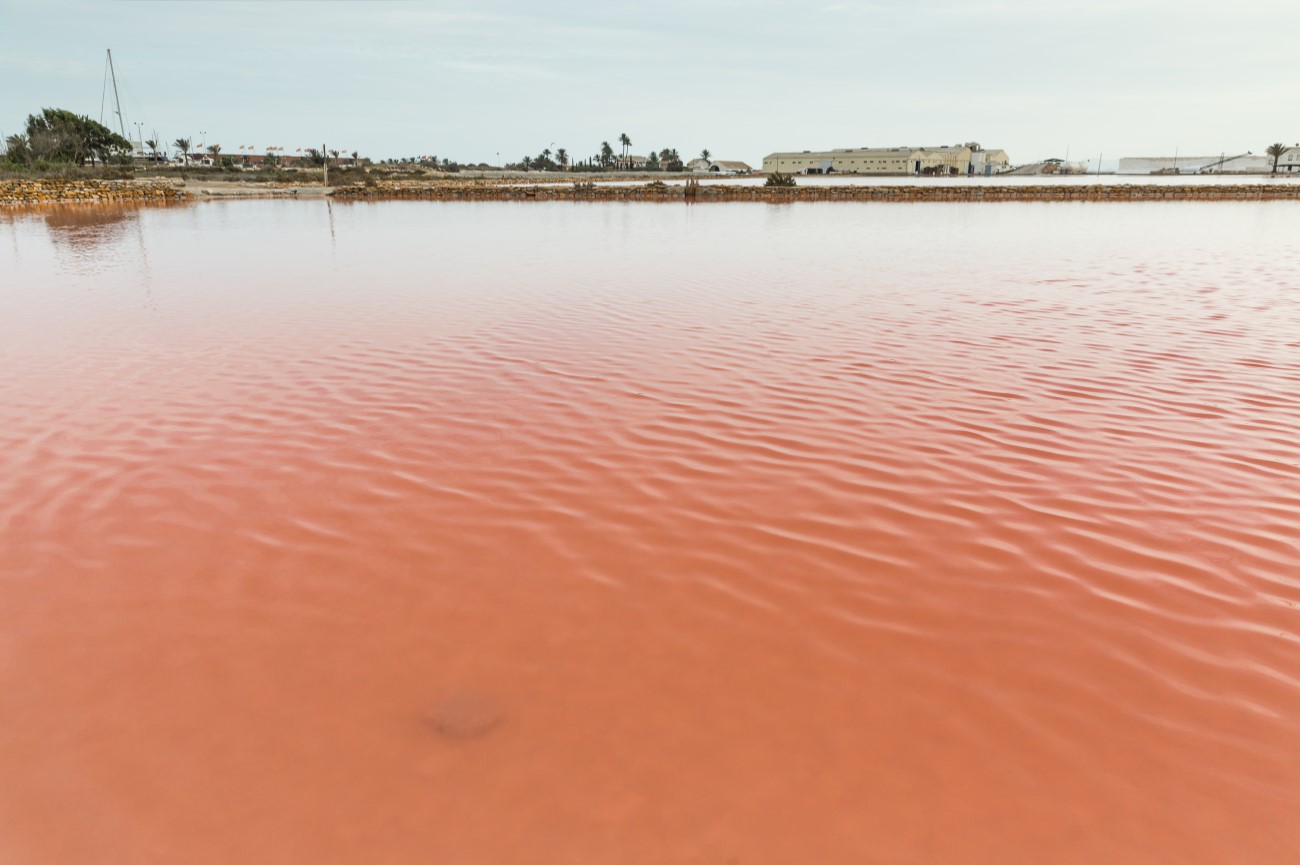
Top things to do with kids in Murcia
There are plenty of activities to do with kids in Murcia. Families can visit the Terra Natura animal park to spot animals like lemurs, lions and hippos. The venue also includes a falconry area and a water park with swimming pools for children and adults, slides and a lazy river ride, making it ideal for a full-day trip.

If you’re visiting in the summer, you can head to the coast. Cala Cortina and Mar Menor offer great opportunities for a swim. In this last one, there’s also an area called Lo Pagan where you can take mud baths. Older kids can enjoy the Parque Rafael de la Cedra, which features a maze, high ropes and a zip liner.
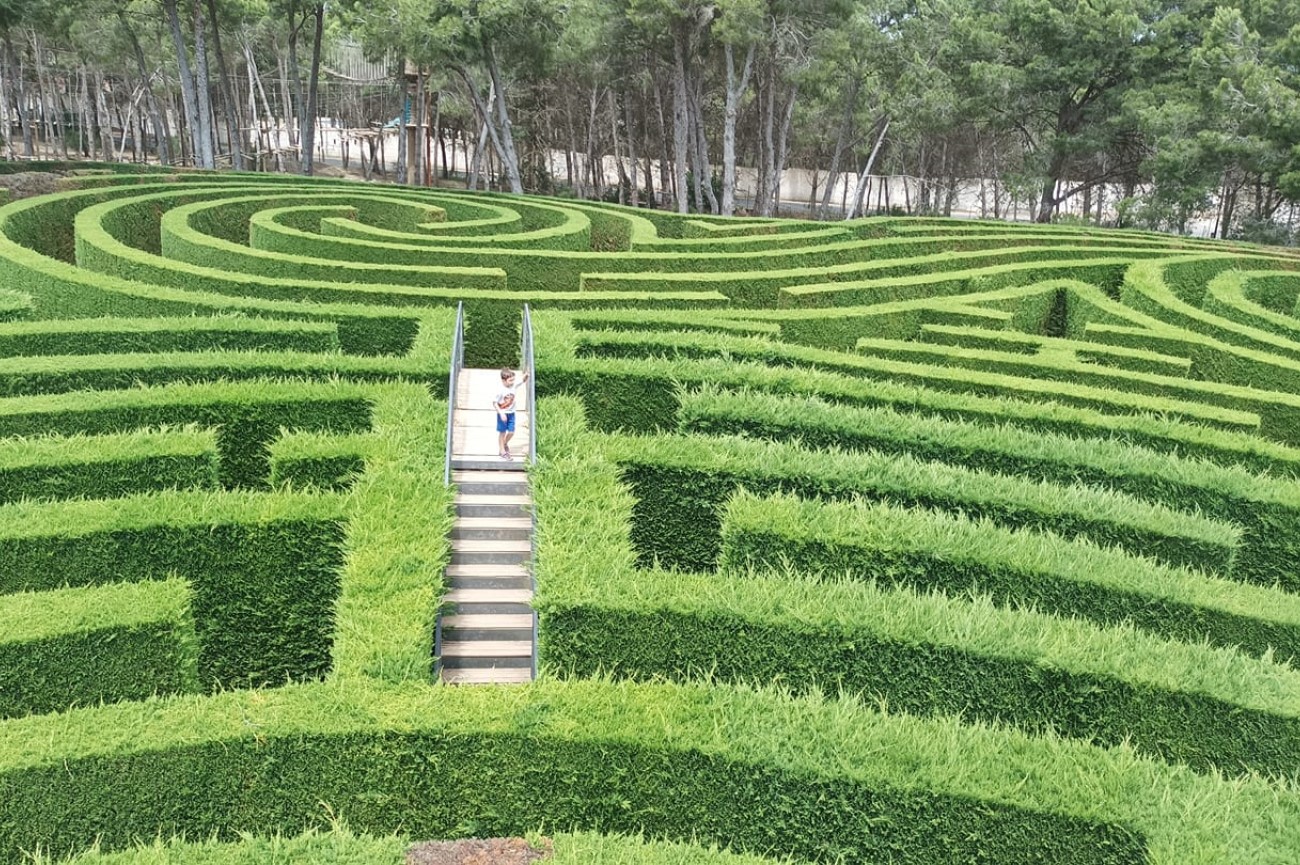
For cultural attractions, you can tour the Cathedral of Murcia, visit the Roman ruins in Cartagena or climb the Castillo de Jumilla.

Where to eat in Murcia
When visiting Murcia, you must try the local cuisine. Nicknamed the “Orchard of Europe”, the region is famous for its fertile soils, which produce much of the fruit and veg in Spain. Fresh vegetables, seafood and delicious desserts are some of the highlights here. Traditional specialities include the Alcachofas de la Abuela, artichokes seasoned with wine, bay leaf and pine nuts and the Caldero Murciano, a rice and fish dish prepared in a cauldron-style pan. For desserts, don’t miss the Cuerno, a pastry horn filled with meringue. Below are some of the best places to eat in Murcia:
- Mesón Pepe: Open in 1989, Mesón Pepe doubles as a restaurant and a bar. It offers a variety of tapas with a focus on fish and shellfish.
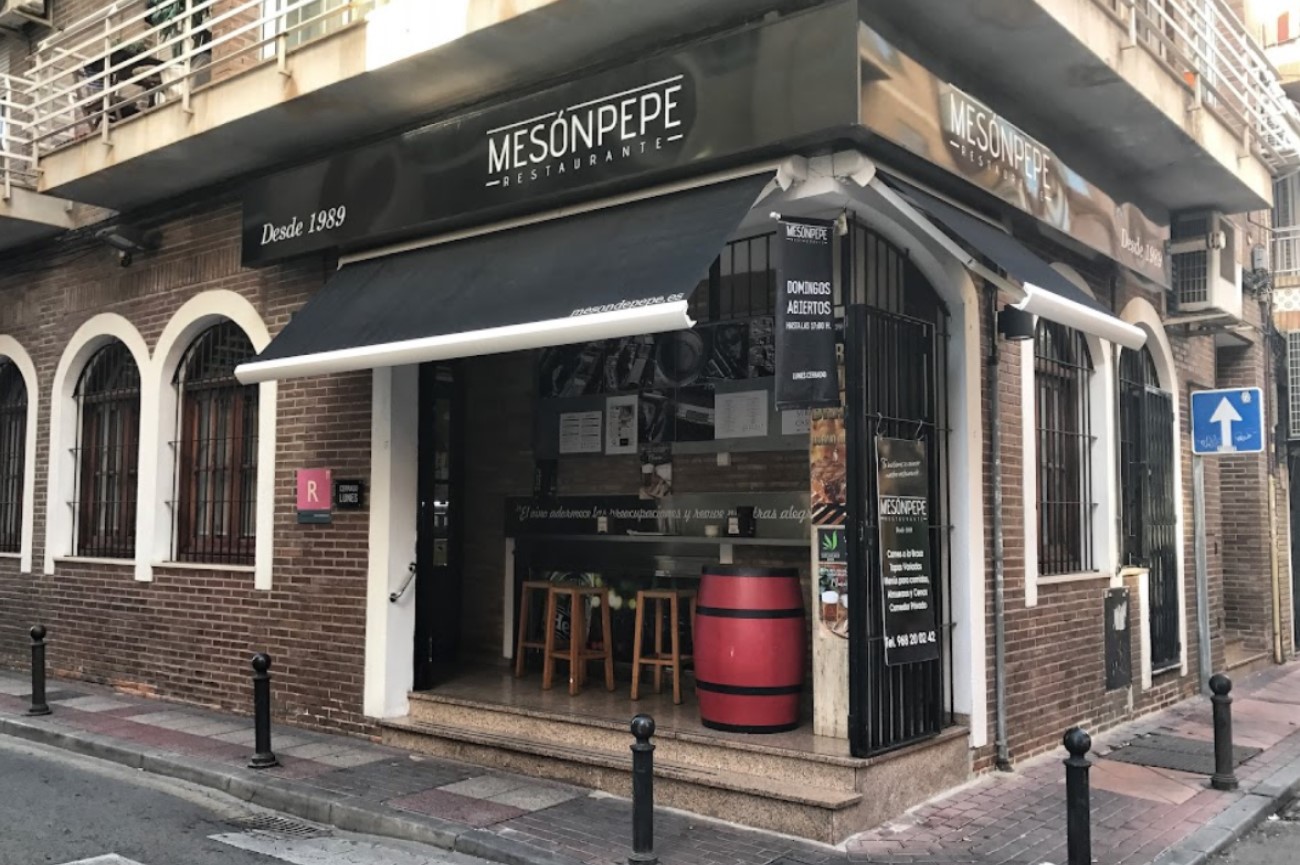
- El Pasaje de Zabalburu: Using the freshest ingredients, this fine dining restaurant gives a modern twist to traditional Murcian recipes. Highlights include the caramelized artichokes and the sturgeon confit.

- Chez Marcel: On the outskirts of the city you’ll find Chez Marcel. As the name suggests, this contemporary restaurant focuses on French dishes. It features many game dishes such as deer and duck. There’s also a good selection of wines to pair with the food.
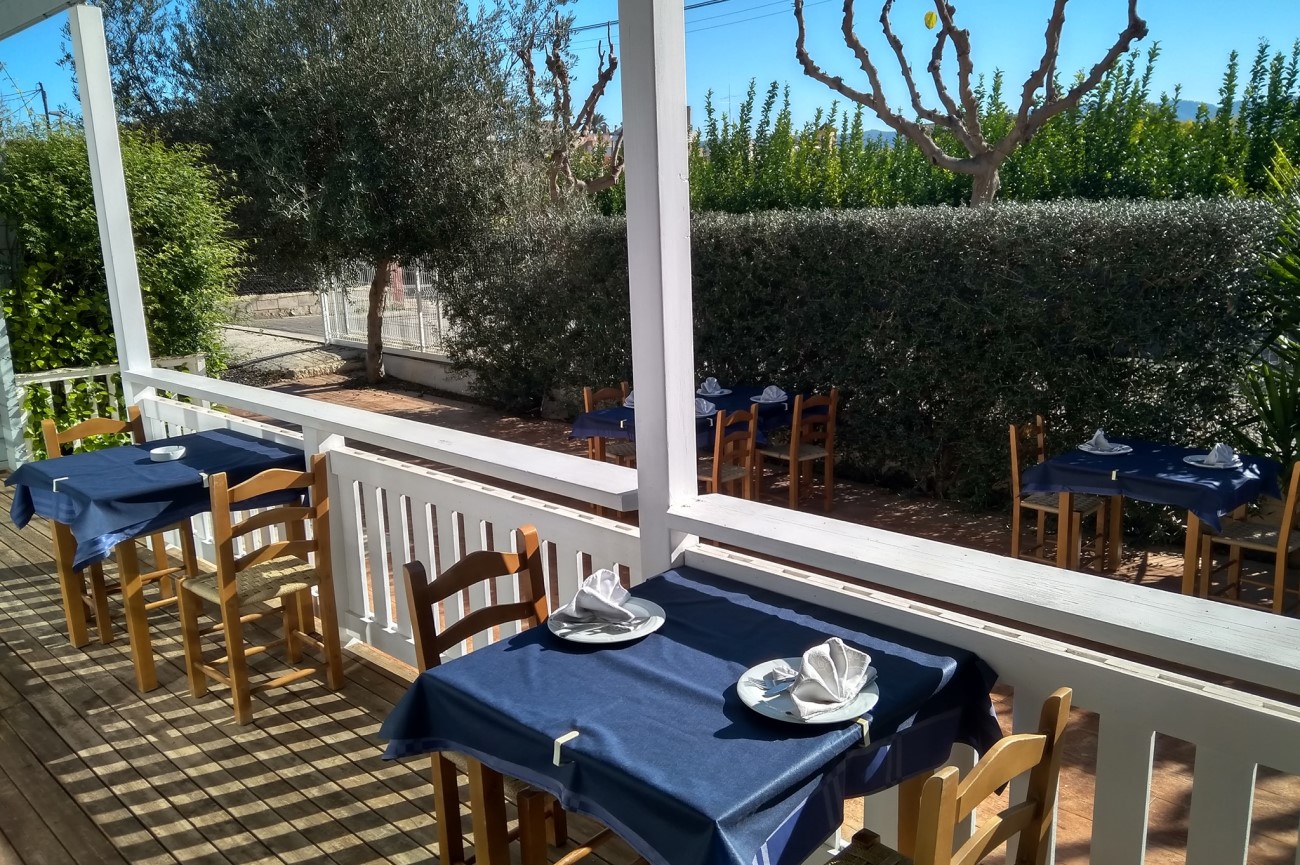
- Restaurante El Churra: Located near Plaza Circular, El Churra serves typical Murcian dishes featuring meat and seafood alternatives. The restaurant's cellar features over 250 wine labels.
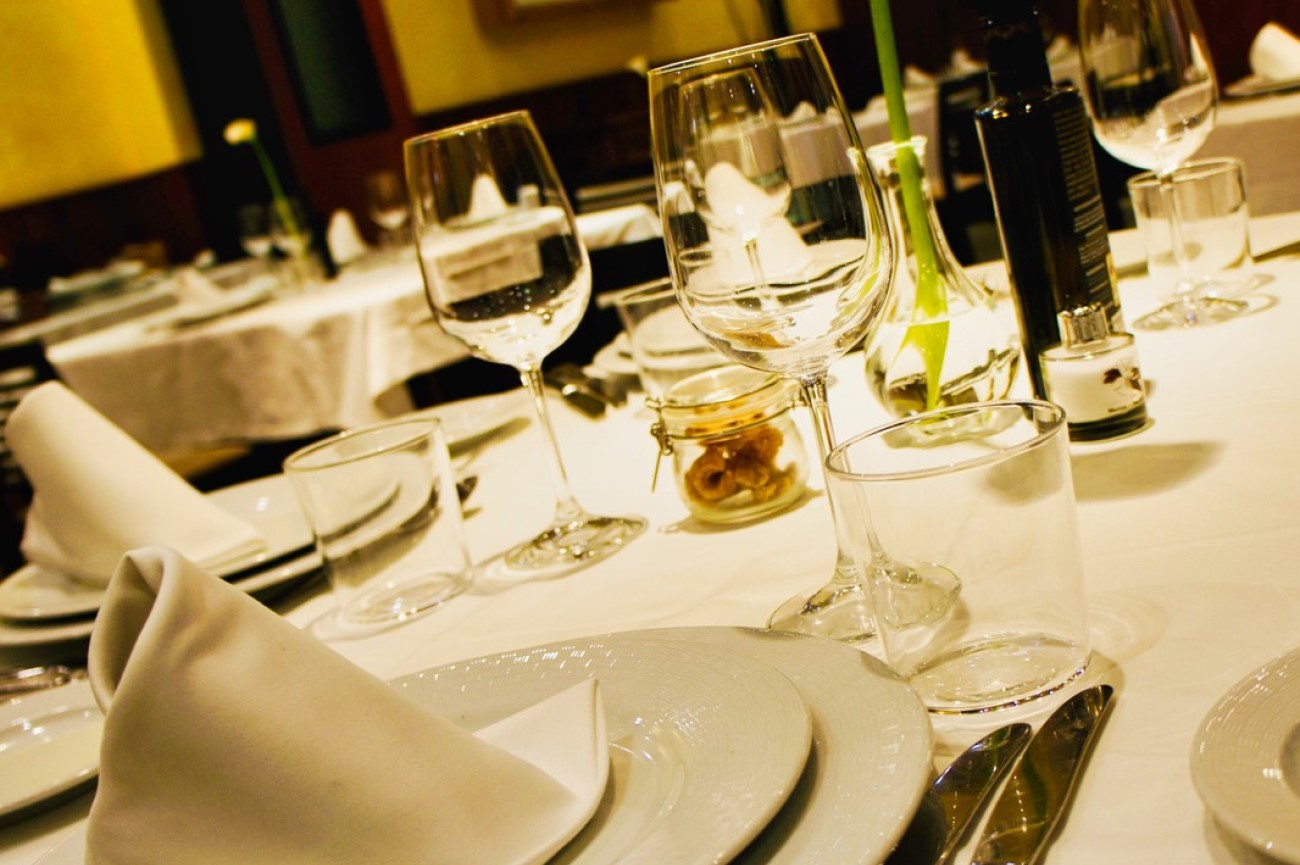
Where to stay in Murcia
- Hotel Murcia Rincón de Pepe (4 stars): This contemporary hotel is just a few steps away from Murcia’s main attractions, like the cathedral. It features a casino, a bar and an iconic restaurant, which has been serving Murcian specialities since 1925.

- Occidental Murcia Siete Coronas (4 stars): Located near the river banks, this four-star hotel features modern rooms, some of which offer views of the cathedral or the river. There's also a restaurant, a café and a bar.

- Hotel Cetina Murcia (3 stars): This charming boutique hotel stands out with its shiny golden lobby. The modern decor continues in the rooms, which include Smeg fridges, wooden floors and geometric wallpaper. Some even offer a private balcony.

Best time to visit Murcia
The best time to visit Murcia is around spring or autumn. During this period, you get warm but not scorching-high temperatures, making it ideal for a pleasant stroll in the city. Prices are also lower around this time, and you’ll find fewer crowds. In general, you'll get hot weather pretty much all year round. Indeed, this is one of the hottest places in Spain, with average high temperatures of 33ºC in the summer. Around winter, the temperature usually drops to 17ºC. Note that between November and February, some sights may close.
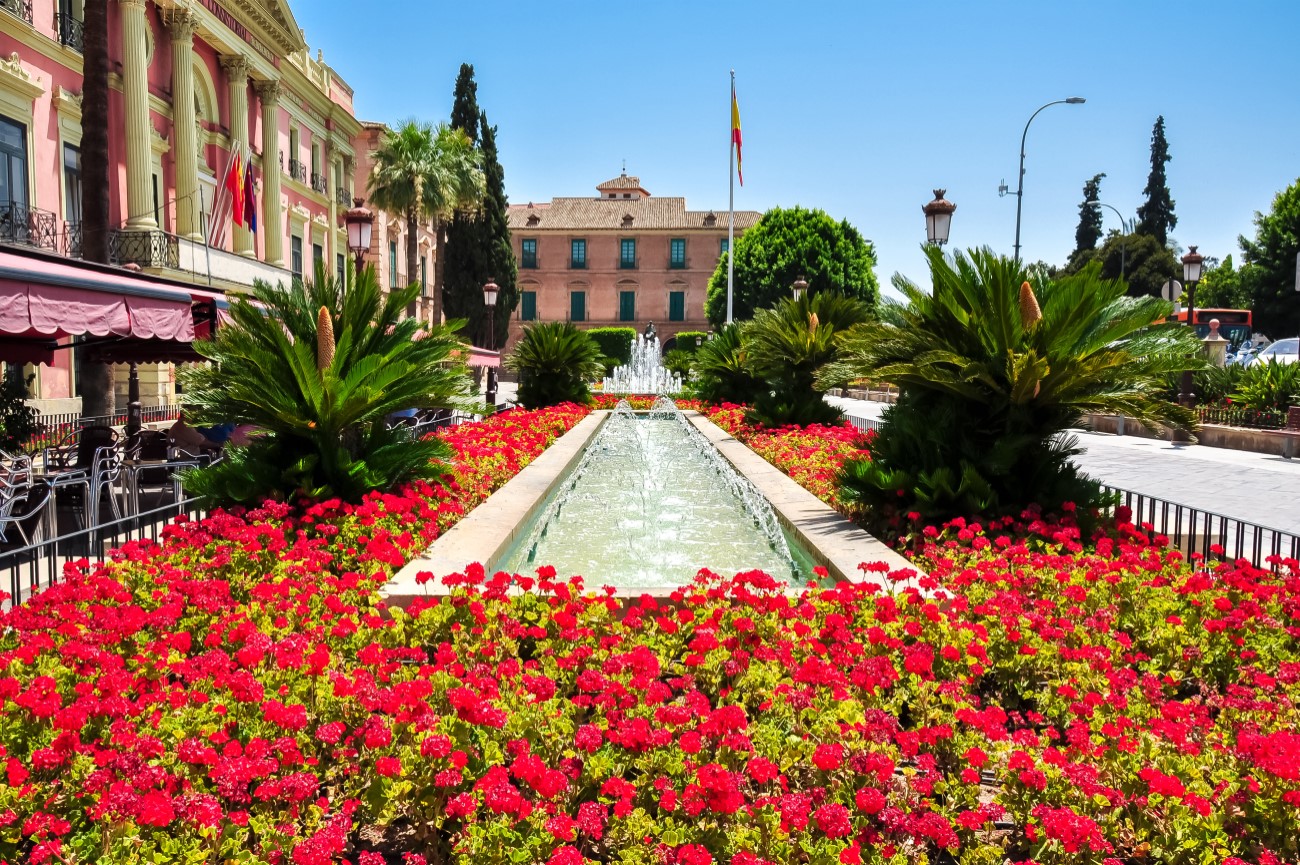

Murcia Festivals
- Semana Santa: Semana Santa in Murcia is celebrated yearly between Friday of Sorrows and Easter Sunday. It's one of the most popular celebrations in Spain, attracting thousands of visitors with its Christian brotherhood parades. The patron saint of Murcia, Virgen de la Fuensanta, is also taken from the cathedral to be present during the festivities.
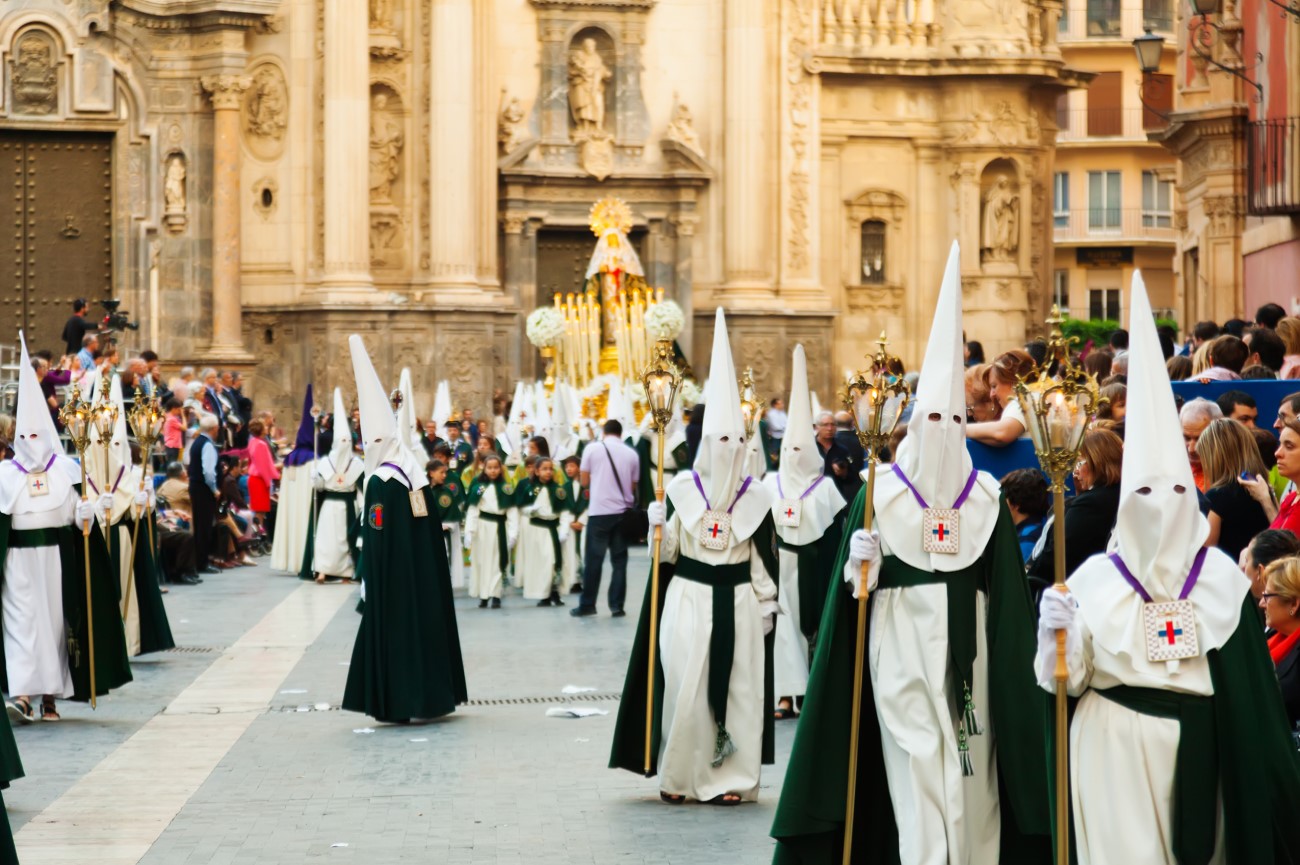
- Fiestas de Primavera: The Fiestas de Primavera are usually celebrated right after Semana Santa. During a week, the whole town hosts parades and festivities to pay homage to the ancient traditions of la Huerta Murciana. Locals dress up in traditional costumes, and little stalls fill the city with music and good food.

- Bando de la Horta: Around April, residents dress in Murcian folk costumes to celebrate the Bando de la Huerta. The event features parades of horses, donkeys, ox-drawn carts and the famous cabezudos (large paper mâché figures) departing from the Don Juan Manuel neighbourhood towards the town centre.
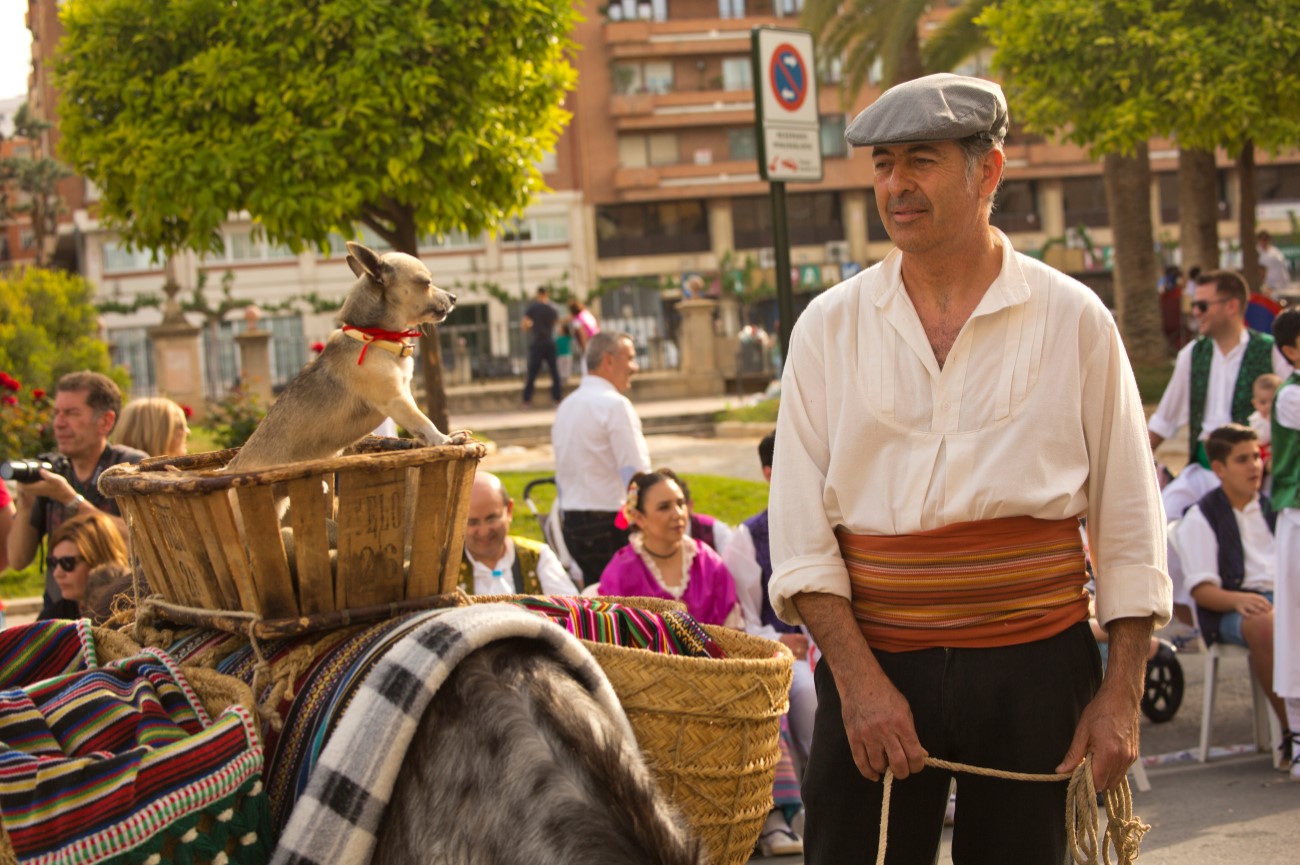
- Entierro de la Sardina: Celebrated on the first Saturday after Semana Santa, the Entierro de la Sardine puts an end to the Fiestas de la Primavera. Citizens organize themselves in groups called ‘Grupos sardineros’, where they name one man as ‘Gran Pez’ (the big fish”) and one woman as ‘Doña Sardina’ (Lady Sardine). These are the godparents responsible for giving life to the streets of Murcia all week. The festival ends early in the morning with the burning of the sardine and with a huge firework display.
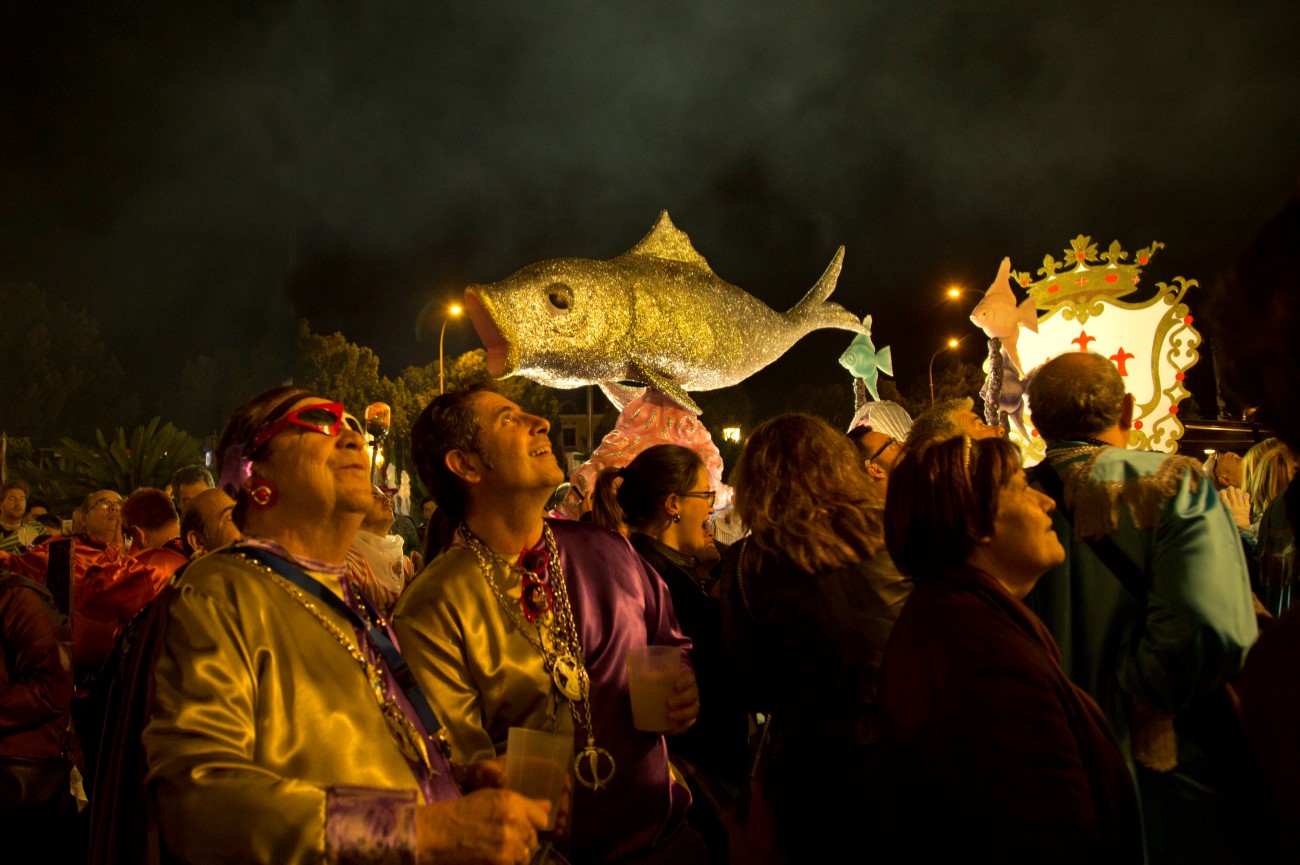
At our office
Request a quote
Return to Spain tours

We are the brand names of Iberian Escapes and Algarve Lifestyle, APCS Lda and Travel Iberica Ltd. We are a fully authorized travel agency licensed by Turismo de Portugal RNAVT/6867.
PRIVACY POLICY
DISCLAIMER
NEWSLETTER SIGN UP
© 2024 iberian-escapes.com. All rights reserved .

Murcia, Spain – Reasons Why It’s In My Bucket List And Why It Should Be In Yours Too
Posted on Last updated: 14/03/2024
Categories SPAIN
A well-kept secret among locals, Murcia is a region full of unique character, diverse nature and the most amazing food. These are some of the reasons to visit Murcia. Read on to find out why it should be in your bucket list.
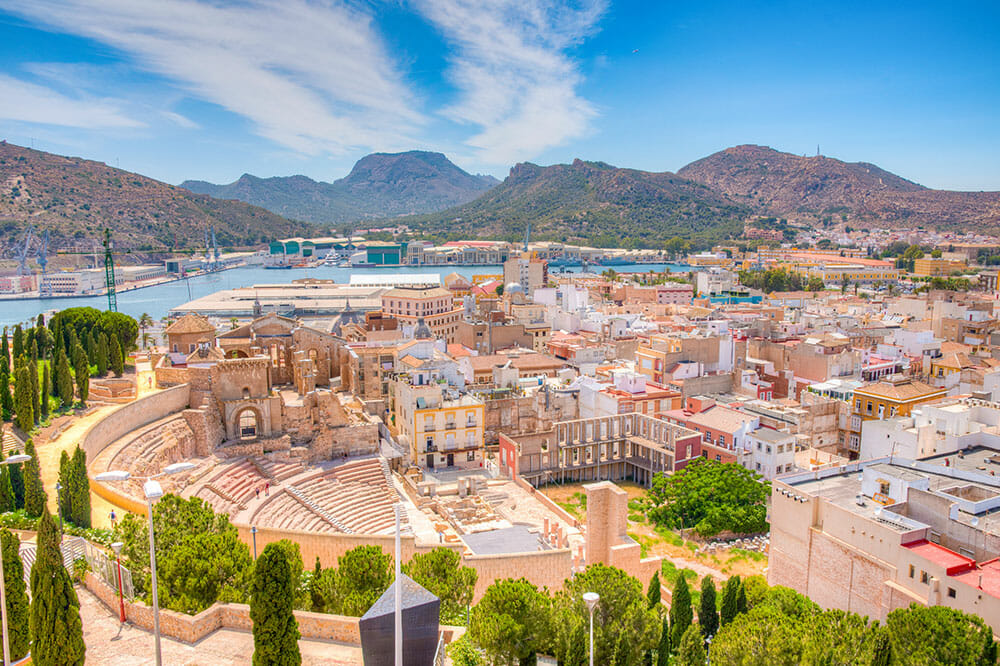
Murcia is a secret that the Spanish have kept for themselves for a long time, and not many people outside of Spain have heard of it.
A region known for its beautiful coastline, its delicious Mediterranean food, and its fascinating cities, Murcia has been on my bucket list for a while now.
And there are many more reasons why it should be in yours too. Here are a few reasons to visit Murcia.
Table of Contents
- 1.1 Diverse cities with fascinating history
- 1.2 Mouthwatering local food and wine
- 1.3 Unique landscapes and nature
- 1.4 It’s off the beaten path
Reasons to Visit Murcia, Spain
Diverse cities with fascinating history.
Murcia is a relatively small region, but its diversity is evident in its cities. Its rich history goes as far back as Roman times, it was part of the Caliphate of Cordoba and of Al-Alandalus until the 13th century, when it became part of Christian Spain.
The influences of all these cultures throughout the ages have left their mark in the region, particularly in the cities.
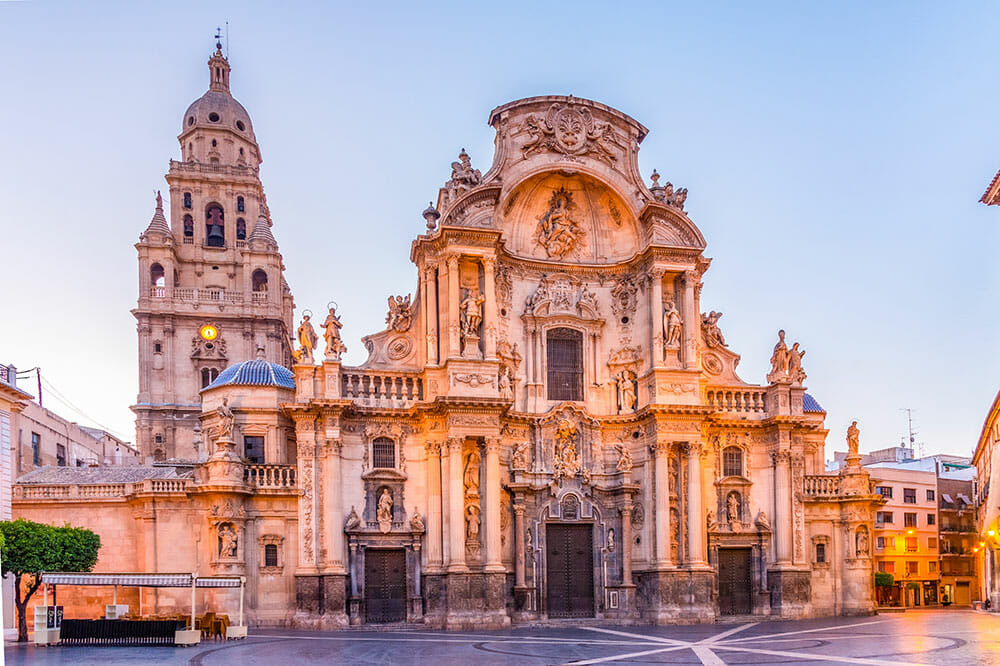
The city that shares the same name as the region, Murcia, also has its share of fascinating sites. Its most famous landmark is the stunning baroque Cathedral located in the Plaza del Cardenal Belluga.
It houses the tomb of King Alfonso X, and its Capilla de los Velez chapel is worth a visit for its impressive Gothic architecture.
The city of Cartagena has an impressive Roman Theatre and Roman Forum, one of the largest Roman archaeological sites in Spain, which was only discovered in the late 1980s.
The Castillo de la Concepción, a medieval castle built over a Roman temple, now houses a historic interpretation centre that is the perfect place to get a good feel for the city through the ages.
Lorca, known as ‘The Baroque City’ is steeped in history. During the 15th century it was home to a large Jewish community and here you can find the Jewish Quarter and the only historic Synagogue in Spain that hasn’t been built over. It’s located within the Lorca Castle complex, another site not to miss.
RELATED POST 8 Reasons to Visit Valencia This Year
Mouthwatering local food and wine
Spanish food is famous around the world, especially in the Mediterranean coast, and Murcia is, of course, no exception. In fact, the region is known as ‘ la huerta ’ (the market garden) of Spain for its fertile land, which makes local produce truly delicious.

Pastel de carne (meat pie) is a very traditional dish made with meat, tomato and egg. Traditionally Murcian would take a meat pie as a snack to eat at a bullfight, but of course, I won’t be endorsing this. I would, however, love to try the pastel de carne in a more friendly setting.
Murcian rice is also really famous. The area of Calasparra grows a variety rice of the same name that, like bomba rice, is ideal for dishes like paella , and the Murcian specialty arroz caldero (translated as ‘cauldron rice’), which looks really hearty and I’d also love try.

Being in Spain, I can’t not mention tapas, and Murcia has its own local tapas specialties too.
The marinera is a double breadstick topped with ensaladilla rusa (Russian salad) and an anchovy. Perfect to be enjoyed in one of the many terraces in Murcia’s Plaza de las Flores, accompanied by some Murcian wine cheese and a lovely glass of local wine.
If you are a foodie travelling around Spain, you’ll be interested in these two food tours The Granada Food Tour That Goes Beyond Tapas Valencia Food Tour – Tapas, Treats and Tiger Nuts
Unique landscapes and nature
Did you know that you can find pink flamingos in Murcia? Yes, that’s right.
The Regional Park of Las Salinas y Arenales of San Pedro de Pinatar is a nature park where you can find salt flats, sand dunes and beaches located between the Mar Menor and the Mediterranean Sea.
It’s the most important wetlands in the region and here you can find flocks of flamingos and other migratory birds, so if you’d like to watch flamingos in the wild, this is the place to go! They tend to arrive towards the end of the summer and stay for the winter.

The salt flats have been around since at least the 14th century and form an otherworldly landscape, with its divided ponds. You can still see two of the windmills that were used to pump out the water into the ponds.
The coastline along Murcia is truly spectacular. As well as popular urban beaches such as the sweeping beach of Las Delicias in the fishing town of Aguilas, you will find hidden coves and beaches with crystal clear water like Playa La Carolina. Just don’t forget your beach essentials !

The magic of Murcia doesn’t end here. One of the places that really caught my eye in the region is La Ciudad Encantada de Bolnuevo (The Enchanted City of Bolnuevo).
Along the beach in the town of Bolnuevo there is an area of mushroom-shaped sandstone formations that has been heavily eroded by wind and water.
If you enjoy strange geological formations, this place is well worth a visit. I know I do, so it’s already on my list!
It’s off the beaten path
Because Murcia is relatively unknown, a lot of visitors to Spain don’t make it to this wonderful region. The sad news is that I think they’re missing out on something special.
On the other hand, the good news is that it will remain unspoiled without the tourist crowds that you find in other areas of Spain.

I enjoy discovering places that have retained their original character, and I get the feeling that Murcia is one of those places.
Unique traditions such as famous local festivals like the Cartagena Festival or the Easter celebrations in Caravaca de la Cruz, the fifth Holy City of Catholic Christianity, are deeply rooted in the character of the region.
Have I convinced you yet? I’ve certainly convinced myself that I really need to make a trip to Murcia soon!
Which of these reasons to visit Murcia has caught your eye the most? Let me know in the comments!
Like this post? Pin and save for later

Disclosure: This post has been created as a partnership with Costa Cálida – Región de Murcia . As always, all views are my own.

Teresa is an award-winning travel blogger based in London. She’s on a mission to explore the world through responsible cultural and adventure travel , and through deeper, more meaningful local experiences. She’s a lover of adventure, the outdoors and everything food related, and she’s always looking for ways to make a positive impact through sustainable travel .

Murcia Travel Guide: What to do in Murcia, Spain
This post contains product affiliate links. These are mainly on items/hotels/tours that I personally endorse & love. I may earn a small commission if you make a purchase, but at no extra cost to you.
Wondering what to do in Murcia, Spain? From hiking the Segura River to exploring Cueva del Puerto, these are the best things to do in the region of Murica!
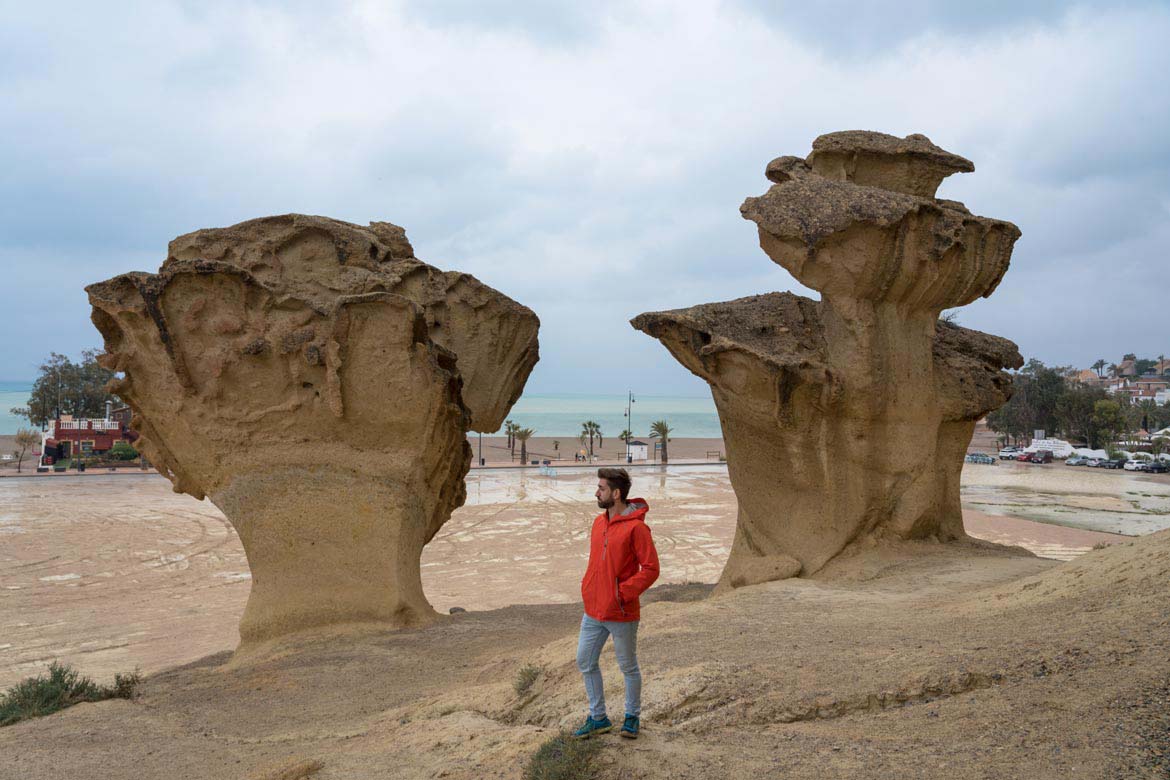
Located in the south-east of Spain, the region of Murcia is packed full of things to see and do, especially if you love nature and the outdoors as much as I do.
With its Mediterranean coastline, the Costa Cálida has 250 km of gorgeous beaches. But as soon as you head inland the region of Murcia opens up with a whole host of outdoor activities.
There are some fantastic hiking trails along the Segura River, you can go biking through the vineyards & olive groves at Bullas, there are caves to explore with paintings dating back 7,000 years at Cueva de la Serreta , and then there are some of the craziest rock formations you’ll ever see at Bolnuevo.
So, with that in mind, here’s what to do in Murcia! Get ready for an amazing holiday is this fascinating region of Spain.
Make sure you watch my video below showcasing some of the best things to do in Murcia, Spain. This should give you a taster of what it’s really like.
The Region of Murcia
When I was researching what to do in Murcia, I immediately knew this was a place I was going to love.
Even though there are lots of beautiful beaches in Murcia (like there are everywhere in Spain), I knew this place was more about outdoor activities and enjoying the countryside. As I said, it sounded like my kind of place.
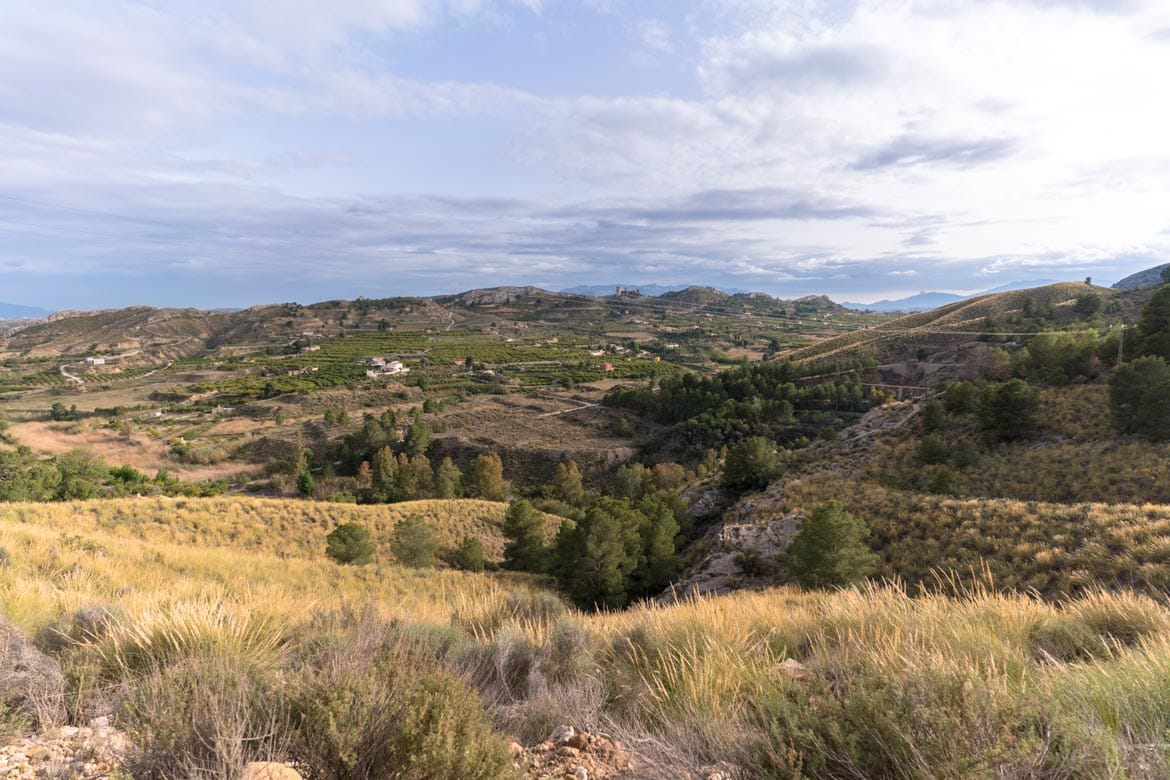
I really feel like this is one of Spain’s hidden gems though. Apart from expats living in Spain , not many people know about the region of Murcia, let alone where it is.
Whenever I said to people I was heading to Murcia, they all thought I was going to the city with the same name. Yes, the capital of the region is also called Murcia (just to confuse things).
Because hardly anyone travels here, it meant I have all these stunning views and attractions all to myself. I hardly came across any other tourists while I was there – and certainly no Brits – which means this is the perfect place if you’re looking to get away from it all.
When it comes to things to do in Spain , I feel like a lot of the towns on the coast can be quite samey. Well the region of Murcia is unlike anywhere else I’ve been in the country. I have a feeling you’re going to love it there!
Tours in Murcia
What to do in murcia, spain, hiking the segura river.
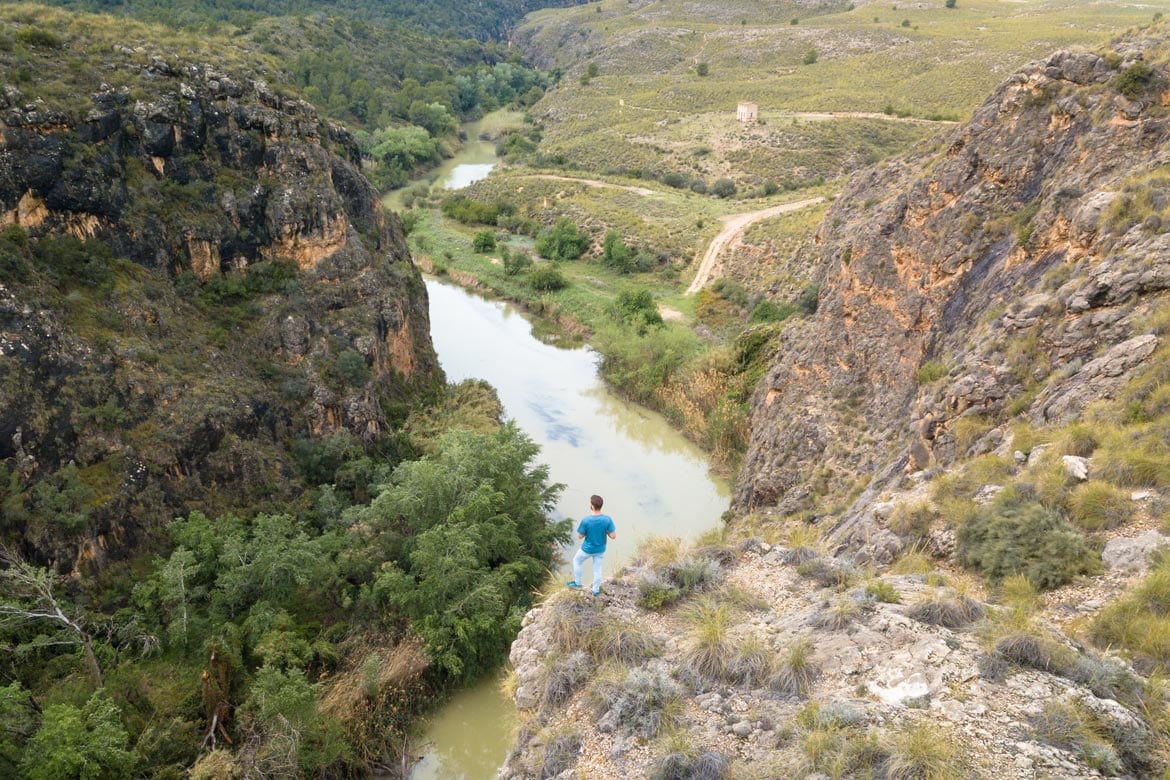
The Segura River is the main river that runs through Murcia. This means there are loads of fantastic hiking trails to choose from.
The spot I headed for was at Presa de la Mulata . This is actually a power-station and dam on the map, but there’s a route that takes you up into the hills. From here you can walk along the cliffs with the Segura River below and it’s such a beautiful place for a hike.
Another spot that everyone recommended to me was Canon de Almadenes. This is a longer trail that you follow alongside the river. This is supposed to be one of the best hikes in Murica so check it out if you can.
Just to note, the hiking trails are loose gravel so make sure you wear some sturdy hiking shoes otherwise you might find it slippery underfoot.
Kayaking/rafting the Segura River
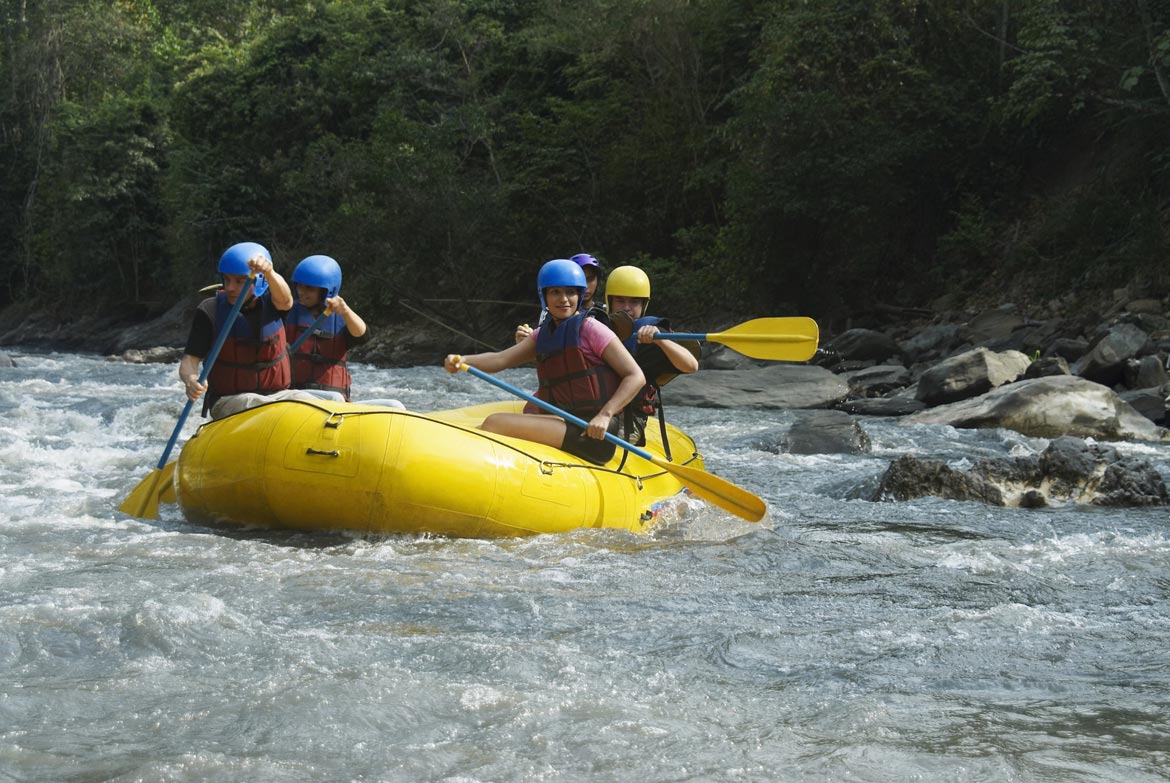
Now I didn’t actually do this myself as the weather was too bad, but this is one of the best adventure activities in Murcia.
There are a few companies you can go kayaking & rafting on the Segura River. Even though this isn’t proper white-water rafting, it’s still an amazing way to see the beautiful landscapes. I would say this activity is perfect for families with young kids.
Groups are usually 8-12 people per raft and a lot of companies include a snack or lunch. Most companies start in Blanca and you travel 13km on the river to Cieza. This usually takes around 3 hours. Oh, and obviously expect to get very wet so bring a spare change of clothes for afterwards!
You can find out more about this activity here .
Seeing the rock formations at Bolnuevo
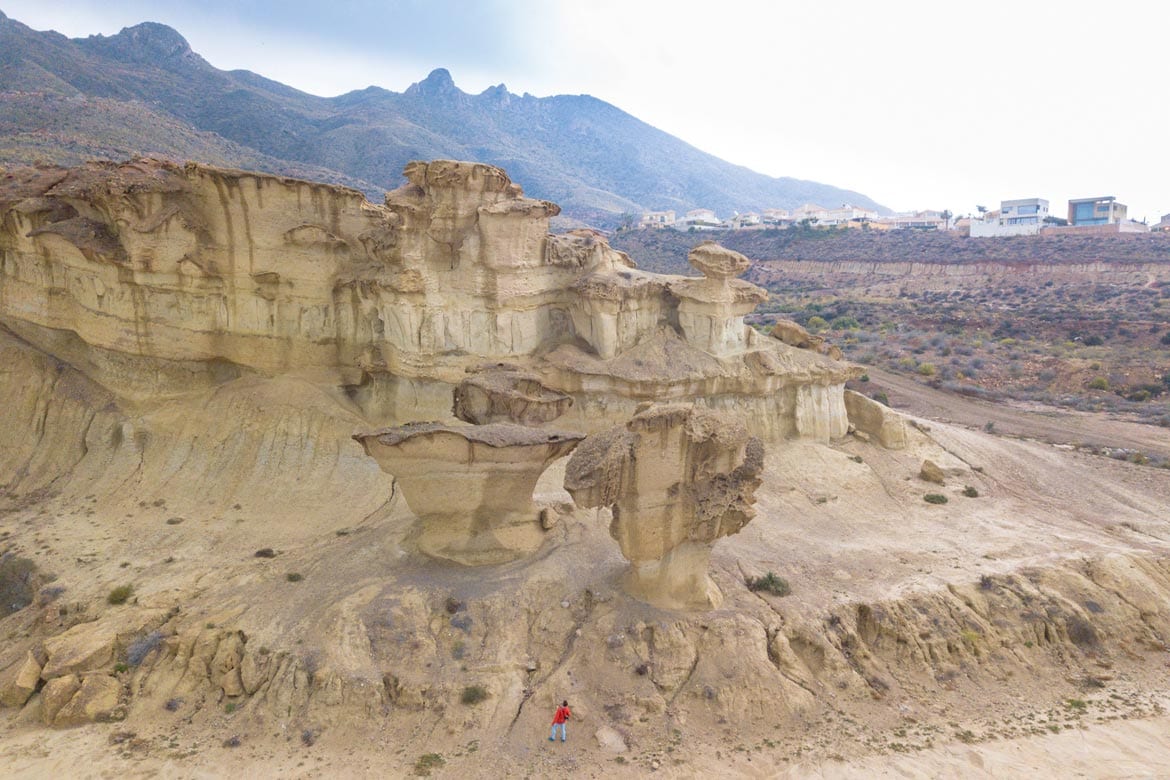
This was another of my favourite spots in Murcia.
When everyone says all Spain has is beaches, I’m going to point out Bolnuevo to them.
Las Gredas de Bolnuevo, also called Ciudad Encantada (the enchanted city), are heavily eroded sandstone formations along the beach of Bolnuevo.
The sandstone shapes are sculpted by water and wind over thousands of years making these Mars-like formations. They almost defy gravity as they’re standing up.
While I was there, I climbed to the top of the rocks (if you do this yourself please be very careful as it can be slippery) and the views are incredible. This really is one of the best places to visit in Murcia.
Exploring Cueva del Puerto
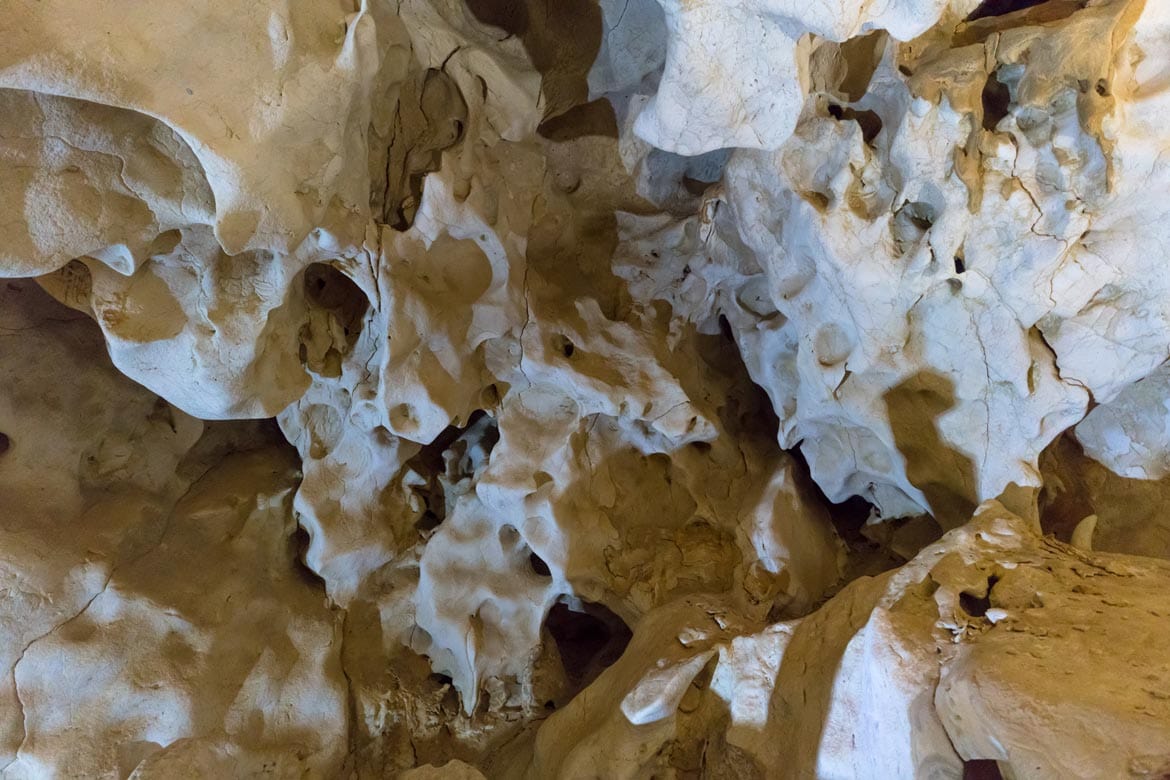
Cueva del Puerto is an extensive underground network of caves in Murcia and it is so much fun exploring these.
I was in a group of about 12 people and we had a guide take us through the 700 metres of caves explaining about all the different formations and the history of the area.
My favourite area was Gaudi’s Hall. This was a rock formation that was as if Gaudi, Spain’s most famous architect, had created himself. It genuinely looks just like Casa Mia in Barcelona, just underground.
Located just outside Callasparra, getting to Cueva del Puerto can be tricky. Basically, follow GoogleMaps or Waze, and when it looks like you’re heading straight up a hill in the middle of nowhere then you’re in the right place!
These caves were quite similar to Cueva de los Verdes in Lanzarote if you’ve ever been there. If not, that’s another place to add to your list!
Discovering 7,000-year-old paintings at Cueva de la Serreta
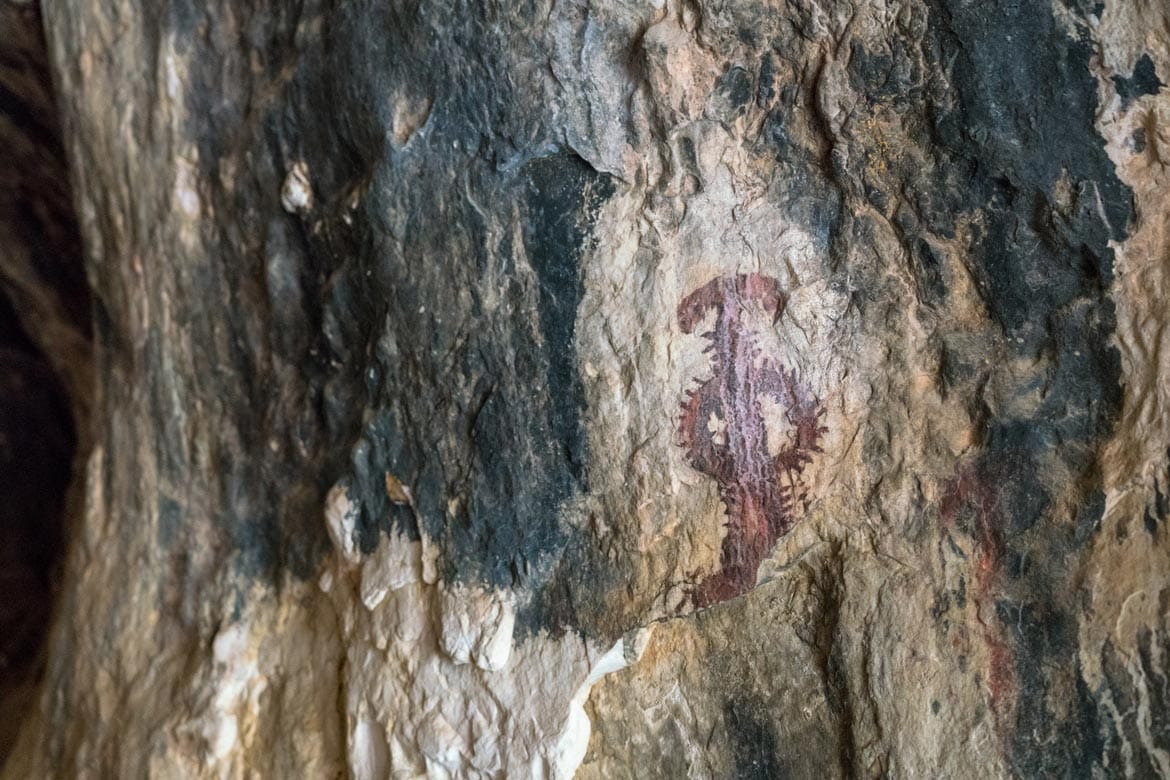
Another incredible cave in the area is Cueva de la Serreta.
Just a short 30-minute drive from Cueva del Puerto, this is one of the best caves I’ve ever come across on my travels. Honestly, I really mean that.
Cueva de la Serreta is closed to the public and you need to organise access with Jose, the keeper of the keys, beforehand. You can email [email protected] to arrange a visit and read all about how to do it in my guide here .
I met Jose in the carpark and he opened the gate to Cueva de la Serreta. From there, we walked down into the cave.
This is a huge cave opening overlooking the Segura River below. However, the thing that makes it so remarkable are the rock paintings dating back 7,000 YEARS! How crazy is that!?
On the walls you’ll see people with bow-and-arrows hunting animals. There’s also a drawing of an ‘idol’ – local archaeologists believe this may have been a deity that the people worshipped at the time. I’ll say it again – HOW CRAZY IS THAT!?
When it comes to what to do in Murcia, this place is right up there with the best.
Biking the Greenways of the Northwest
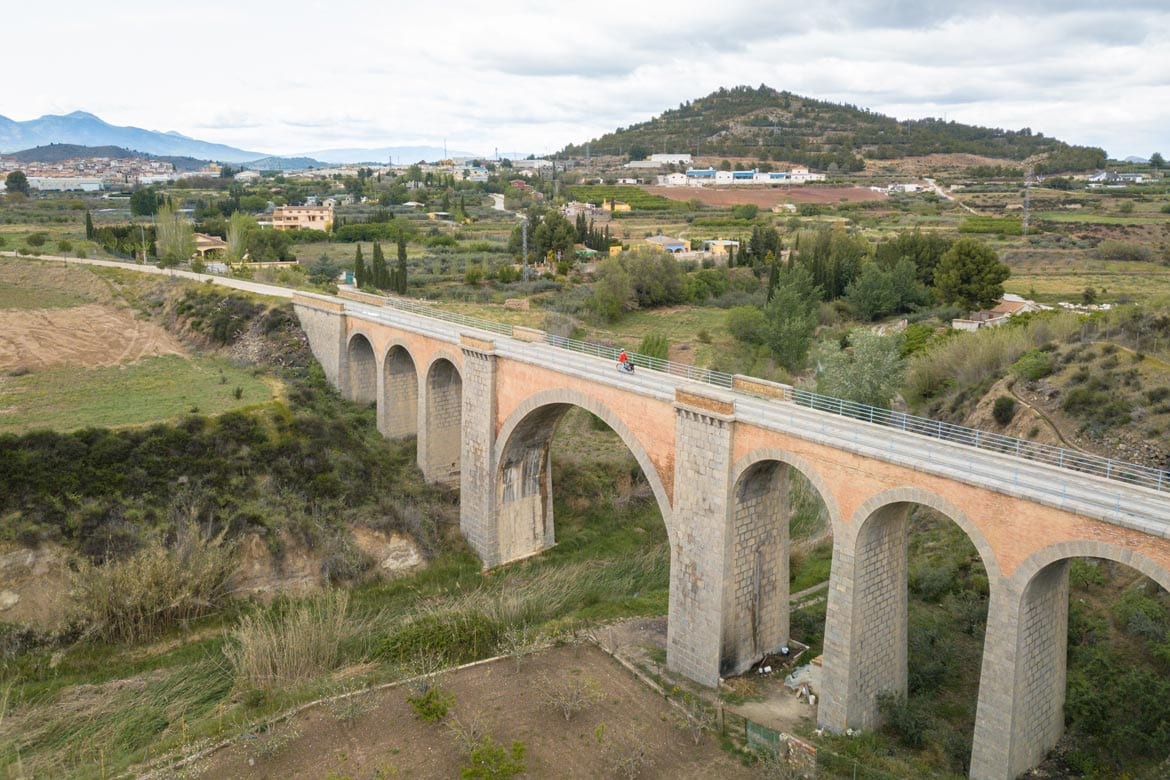
One of my favourite things to do in Murcia is biking the Greenways of the Northwest. This is an area that’s packed full of vineyards and olive groves. This means it is such a peaceful biking route.
I picked up a mountain bike with SoBikes (they have an office in the city of Murcia) and from there I headed to Bullas, a little town west of Mula and in the heart of Murcia.
From Bullas, there’s a 10km walking and biking trail that takes you to Cehegin. And don’t worry if you’re a little unfit – this trail is as flat as a pancake meaning you can take it very easy and in your own time.
What I really liked about this route was it took you over a couple of old viaducts. These were absolutely massive (make sure you check out my video to get a sense of how big they are) and it’s definitely worth stopping at these for a peek over the edge.
Also, there’s an old Roman fort called Begastri that’s on the route – definitely another photo spot!
Hiking at Sierra Espuña
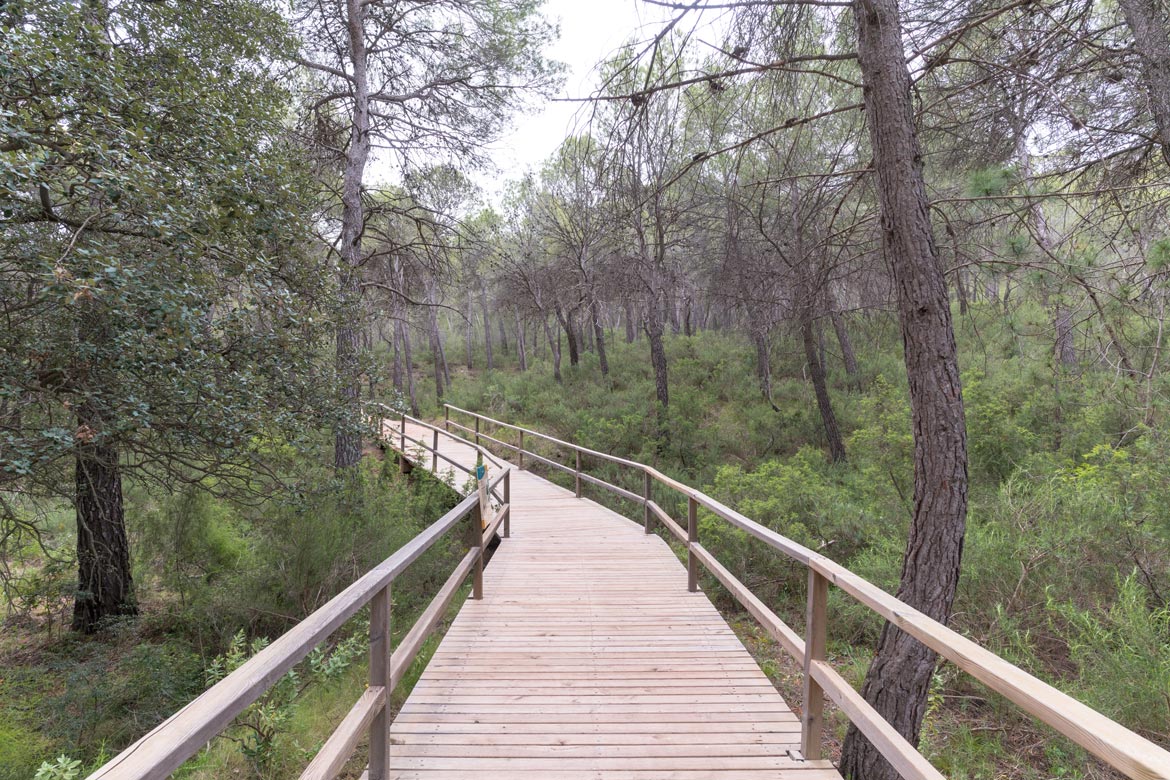
Another of the best hiking spots in Murcia is Sierra Espuña . This is a huge national park that’s perfect for bikers and hikers alike.
Sierra Espuña is Murcia’s largest forest and area of outstanding beauty. This place is known as Murcia’s “green lungs” and it’s very easy to see why.
I headed straight for the visitors centre to find out where to best hiking trails were.
One of the reasons why this place is so popular for hiking is it caters to all ages and abilities. There are short 1-hour hikes and longer multi-day hikes depending on what you’re looking for.
I hit one of the trails for a few hours and again, I was so surprised at how quiet it was. I hardly saw any other people and it was so peaceful. This is one of my favourite activities in Murcia that’s for sure!
Walking across the suspension bridge at Ojós
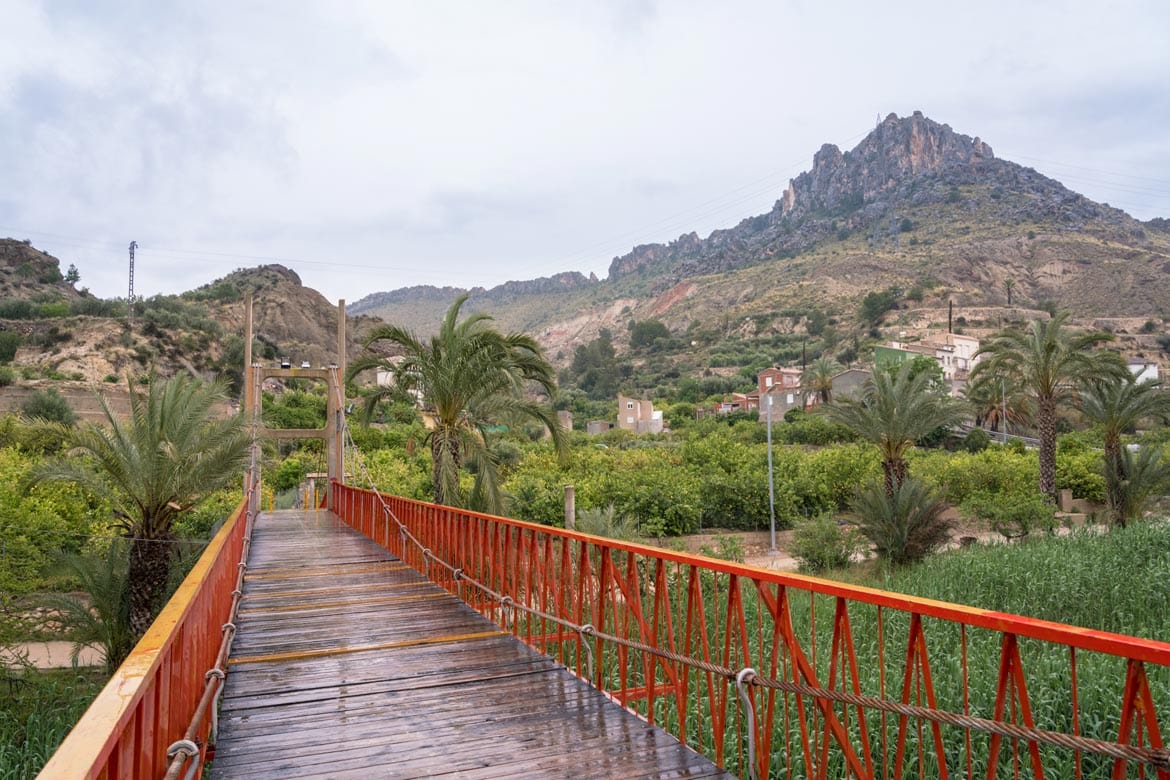
Over in Ojós, a little town north of the city of Murcia, is Puente Colgante de Ojós. This is the Ojos suspension bridge and is a cool spot to visit.
There are some nice walking trails around the area and if you follow the river you’ll eventually hit the suspension bridge. This bridge was built in 1988 and is in the middle of a valley with mountains all around it.
Ojós conserves an old-fashioned atmosphere; the town itself is small, it has kept alive many old traditions and crafts and seems to hum along to the banter of children playing in the street and the clatter of busy kitchens.
Spotting flamingos at San Pedro del Pinatar
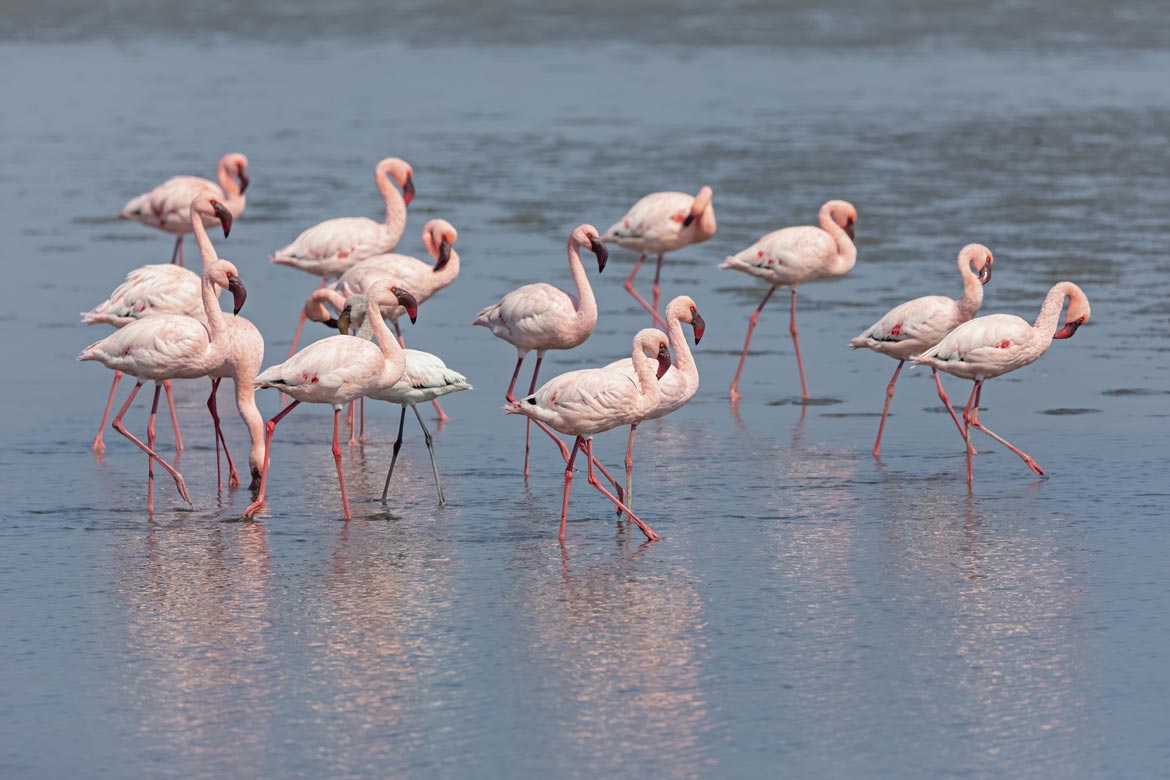
My Murcia travel guide wouldn’t be complete without a little wildlife spotting.
San Pedro del Pinatar are the most important wetlands in the region of Murcia and are the best place to spot some flamingos.
Dotted around San Pedro del Pinatar are the Salinas y Arenales. These are shall fields where they harvest salt and they create the perfect conditions for feeding flamingos.
The Salinas y Arenales de San Pedro Regional Reserve extends for 6 kilometres along Murcia’s Mediterranean coastline between the towns of San Pedro del Pinatar and San Javier.
It’s amazing driving around here and stopping off by the side of the road to watch the flamingos feeding. There’s also a really informative visitors centre where they can tell you more about the wildlife in the area and point out the best walking trails.
The best time to visit is spring and autumn, although the greatest concentrations of flamingos can be seen in late June.
Where to stay in Murcia, Spain
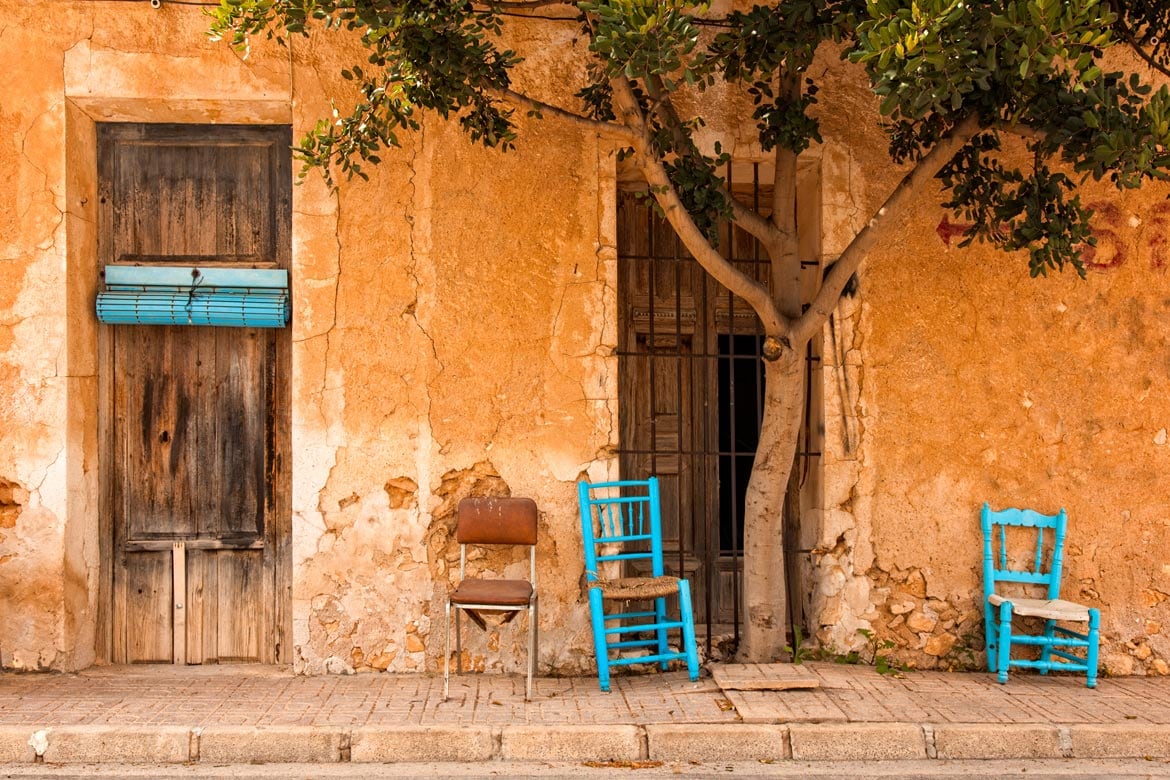
Here are a few hotels that I’d recommend if you’re looking for a place to stay in the region of Murcia.
Obviously a lot of people stay in the city of Murcia itself, but I think it’s a good idea to get out into the countryside.
Jardines de Casablanca – If you’re looking a quiet place away from it all in the region of Murcia then Jardines de Casablanca is a great option. This place has its own swimming pool, garden and bbq so perfect for families. This is a fully equipped villa with all the amenities you’ll need.
Hotel San Sebastián Hospedería – This is a pretty little hotel set in Cieza’s historic centre. Hotel San Sebastián Hospedería is in a really beautiful building with gorgeous views of the mountains. This hotel is just 30 minutes from Murcia so perfect for those who want to get away from the big city. Prices start around £55 for a double room.
Balneario de Archena: Hotel Levante – The Hotel Levante is located in Balneario de Archena and offers free access to the Spa Thermal Swimming-pools. This place is a little slice of luxury at a fraction of the cost. A night here costs just £62 for a double room with spa access.
Murcia packing list
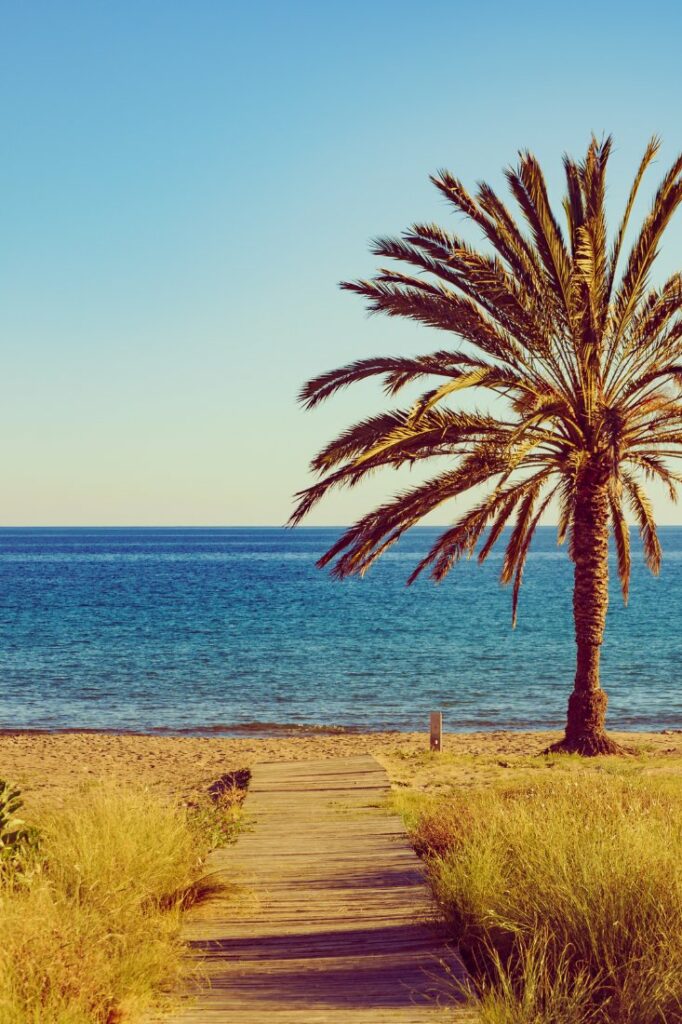
As you can imagine, I travel a lot. It comes with the territory of being a travel blogger! That being said, there are some things that I now can’t travel without. If you’re planning your Murcia itinerary, I’d really recommend taking these items with you:
- Sunglasses: Mens | Womens – These are an absolute must as soon as you step off the plane, holiday mode very firmly on!
- Cool felt hat – I always love travelling with a hat these days, especially during summer when the sun’s out.
- Rain jacket: Mens | Womens – Sorry guys, but it’s always a good idea to travel with a pac-a-mac or rain jacket that packs down small. Fingers crossed you won’t need to use it.
- Bum bag – Very easy and simple for wandering around a city and it means you can leave a big bag at the hotel room.
- Sleep mask – 100% take this with me on every trip.
- Ear plugs – Even if you’re staying in a 5* hotel, you might need ear plugs.

- Water bottle – I am a water bottle convert and I barely leave the house without one now. This is a great water bottle with a built in straw – it’s surprisingly handy!
- Waterproof phone carrier – Another game changer. I always use this when I’m on the beach to protect my phone from sand or when I’m kayaking to protect it from water.
- Portable charger – Does anyone travel without these now? This one is my favourite – just make sure you charge it before you get on the plane!
- Jabra earbuds – After trying so many different types of earbuds, these are now my go-to ones. Great for wandering around a city.
- Multi-adapter plug – This is the one item you’re most likely to forget.
My trip to Murcia was in association with Visit Murcia and SolBooking promoting the best things to do in the region of Murcia. As always, views are entirely my own and without bias.
Are you planning a trip to Murcia? What are some of the things you’d like to do here? Let me know in the comments below!
If you’re heading to the city of Murcia, make sure you check out Emily Luxton’s 48 Travel Guide – it’s packed full with all the best things to do in the city, just perfect for a weekend away!
Also, if you’re looking at exploring some other places in the region like Almeria, then check out this guide to some of the best road trips in Spain .
Like this blog post? Then make sure you Pin it!
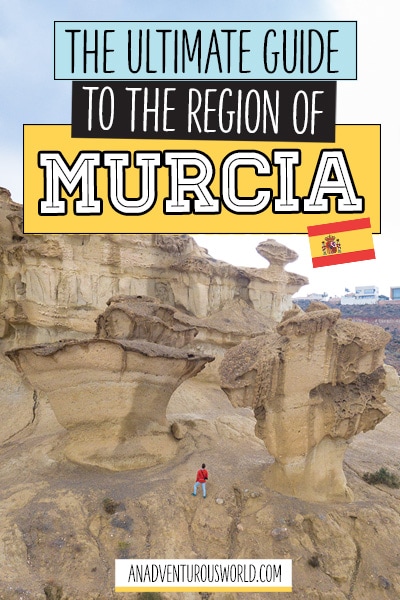
About the Author

Macca Sherifi is the founder of the multiple award-winning blogs An Adventurous World and the Great British Bucket List. Every month he inspires over 200,000 avid readers to travel the world.
Leave a comment Cancel reply
- The Top 10 Things To...
The 12 Best Things to Do in Murcia, Spain

This sun-drenched city in eastern Spain is the place to go to enjoy great food, fascinating history and grand baroque architecture. It’s also the kind of city where nobody’s in a rush – even the cathedral took 300 years to build. So instead of packing your itinerary full, we suggest picking one or two highlights per day, leaving time to linger in the pretty cafés, squares and gardens. Here’s our guide to Murcia’s top attractions.
1. visit the cathedral.
Architectural Landmark

Probably Murcia’s most famous landmark, this grand structure is known as a baroque treasure, but it actually features a mix of architectural styles used during the three centuries it took to build. The main façade facing onto Plaza del Cardenal Belluga is stunning, with striking columns and sculptures. Inside, explore the lavishly decorated chapels and discover the tomb of King Alfonso X. There’s also the 93-metre (305-foot) high bell tower, the second tallest in Spain.
2. Real Casino de Murcia
Another famous city landmark, this is actually a plush, private gentleman’s club frequented by those who like to see and be seen. Built for and by the city’s wealthy elite, it’s still a private club today. You can, however, join a tour to see the opulent interior, complete with frescoed ballroom and a grand courtyard modelled on the palaces of Andalusia .
3. Costa Cálida and Costa Blanca
Natural Feature

Take the short trip to the Med and soak up the sun on these famously sunny Spanish coastlines. The southern part of the Costa Blanca is dotted with quiet beach towns, and there are stunning Blue Flag beaches waiting for you at Torre de la Horadada. It’s only about a 50-kilometre (31-mile) drive, so you can be topping up your tan within about an hour of leaving town.
Coffee on the Plaza
Not far from the cathedral you’ll find the city’s most beautiful square, Plaza de las Flores. It got its name from its many florists’ shops, which are still in business today. It’s the perfect spot to enjoy a coffee , do a bit of people-watching and check out the Art Nouveau townhouses. One of the most beautiful is the Edificio de Tejidos Abad, with its striking white bay windows.
Floridablanca Gardens
During Murcia’s scorching summers, city residents head for this cool oasis on the other side of the river. It has colourful flower gardens and plenty of shaded areas, and its most stunning inhabitants are the old ficus trees. This is the city’s oldest public park , open since the mid-19th century, and one of the first of its kind in Spain.

Become a Culture Tripper!
Sign up to our newsletter to save up to $1,395 on our unique trips..
See privacy policy .

Santa Clara la Real Convent Museum
This working convent is as intriguing as it is beautiful. Built in the 1300s on the site of Murcia’s Moorish Alcazar (fortress palace), it features elements of Arab architecture such as horseshoe-shaped arches. Only part of the complex is open to visitors, but it’s very much worth a visit.
Monteagudo Castle
One of Murcia’s most impressive sights is found just outside the city. This 9th-century castle perches atop a rugged and dusty crop of limestone, and is dramatically topped by an oversized white statue of Christ that gleams under the Murcian sun. The castle, designed to withstand long sieges, was used for defence by the Moors for 250 years. After the Christian reconquest, King Alfonso X took the castle as his Murcian residence. The statue of Christ was added only in the 1950s.
Murcia Archaeological Museum
A lesser-known spot for tourists in Murcia, this museum is a delight for those interested in all things historical. You’ll see artefacts from the city’s Roman and Moorish heritage and further back to the Bronze and Iron Ages. Plus there many more treasures to discover from around the Murcia region, which is home to no fewer than 2,000 archeological sites.
Terra Natura Murcia
You won’t find any cramped cages here. This zoo has become very popular and well-regarded thanks to its humane approach and focus on conservation, housing endangered species such as the European lynx, brown bear and Iberian wolf among 50 species of mammals, birds and reptiles. All are kept in enclosures that resemble as closely as possible the animals’ natural habitats. The park itself is a green oasis filled with hundreds of trees and shrubs. Terra Natura has several other locations in Spain, too.
Carrascoy and El Valle Regional Park
If fresh mountain air and tranquillity are more your thing, do as the Murcians do and head for the large natural parkland just six kilometres (4 miles) south of the city. Follow scenic (and beautifully scented) trails lined with wild rosemary through the pine forests, or take the short, easy walk to the Santuario de la Fuensanta, known for having one of the most Instagram-friendly panoramas around.
Museo Salzillo
This museum is dedicated to the Murcian sculptor Francisco Salzillo, known as the ‘celebrated sculptor of Spain’. Born in 1707, he was one of the great masters of Renaissance sculpture and created mostly religious icons. Recommended by Esme Fox .
Embark on a food tour of the city
Like any sun-drenched city, Murcia is crammed with culinary treasures waiting to be discovered, and there are few better ways to spend an afternoon than by hopping from bar to bar sampling the city’s finest dishes . Head to Bar Los Zagales for ensaladilla Rusa (a typical Spanish salad called a Russian salad), fried squid and spiced octopus, washed down with a local wine. Crunchy cod fritters, wild mushroom croquettes and barbecued meats are on the menu at Restaurante Salzillo, while La Pequena Taberna is the place to go for tocino del cielo – a dessert made from egg yolks, sugar and cream – the perfect way to end your foodie discovery on a sweet note. Recommended by Esme Fox.

Guides & Tips
The best private trips to book for a foodie adventure.

Places to Stay
The best hotels to book in catalonia.

The Best Places to Travel in June

See & Do
Getting a taste of picasso in malaga.

The Best Private Trips to Book for Your Spanish Class

The Most Unique Temples and Churches in the World

Reasons Why You Should Visit La Rioja, Spain

The Most Beautiful Train Stations in the World

Top Tips for Travelling in Spain

Bars & Cafes
The best wine bars in la rioja, spain.

Reasons Why You Should Visit Andalucia, Spain

The Best Hotels to Book in Salou, Catalonia
Culture Trip Summer Sale
Save up to $1,395 on our unique small-group trips! Limited spots.

- Post ID: 1586543
- Sponsored? No
- View Payload

15 Best Things to do in Murcia (Spain)
By: Author Swedish Nomad
Posted on Last updated: November 27, 2020
Categories Spain
Home / Europe / Spain / 15 Best Things to do in Murcia (Spain)

Here’s a list of the 15 best things to do in Murcia ( Spain ), along with famous landmarks, museums, and other points of interest.
Murcia is one of the largest cities in Spain, located in the southern part of the country. The city is famous for its baroque buildings and the annual Holy Week procession as well as agricultural traditions and the local sculptor named Francisco Salzillo.
In this article, I’m sharing some of the best places to visit in Murcia as well as interesting facts and attractions that shouldn’t be missed while visiting the city.
Catedral de Murcia
The Cathedral Church of Saint Mary in Murcia is the full name of this stunning church, which reflects the Baroque, Gothic, and Renaissance styles.
King Jaime the First consecrated the land of the mosque, where the church stands now, in 1266 to the Virgin Mary. The construction of the church didn’t begin until 1385, however, and wasn’t finished until 1467.
King Alfonso X is buried in the Gothic interior of the church. The façade was built in the 18 th century, and it is considered one of the most important Baroque works in Spain.

Monteagudo Castle
Sitting imposingly atop a hill, the Monteagudo Castle stands out against the skyline of Murcia. The castle is located five kilometers outside the city and from its perch of 150 meters above sea level, it’s visible from almost anywhere in the city.
Monteagudo Castle dates back to the 11 th century, when the Muslims reigned over the lands. Atop the fortress, there is a statue of Christ which, although it was only installed in 1951, has become an iconic emblem of the castle.

Murcia Archaeological Museum
The Archaeological Museum in Murcia houses one of Spain’s top collections of historical items, all of which were found in the area. Walking through the 16 rooms of the museum takes you on a journey from the Paleolithic to the Bronze Age.
In these rooms, you can see art, documents, and daily items, some dating back to nearly two millennia BC. The building that houses the museum was once the Provincial Palace of Archives, but it has housed the museum since 1956.

Photo: lindasky76 / Shutterstock.com
Carrascoy and El Valle Regional Park
Murcia’s arid climate needs a bit of green, and that’s what this regional park provides. The geological diversity of the park is the most exciting, with a variation of nearly 800 meters between the high and lows of its mountains.
The park has been a conservation area since 1917 and was declared in 1931 a National Site of Natural Interest. It is named after the holm-oak groves that make up the forests it holds.

Santuario de la Fuensanta
This sanctuary is one of Murcia’s most important religious monuments. Construction started in 1694 on this Baroque church, whose lovely façade is the work of architect Toribio Martínez de la Vega.
The building has faced several renovations over time, the last one being in 1950. The sanctuary is actually built atop a medieval hermitage, which dates back to 1429.

Plaza de las Flores
Murcia’s Plaza de las Flores is one of the central gathering spaces of the city. Surrounded by 19 th -century buildings, the plaza is a social place full of shops, restaurants, flower merchants, and other commerce.
The site used to be where one of the city’s oldest butchers was located, but the Carnicería Mayor was demolished at the end of the 19 th century. The name “The Flower Plaza” was officially given to the plaza in 1968, although it was always called that by local residents.

Photo: milosk50 / Shutterstock.com
Real Casino de Murcia
The Royal Casino of Murcia is one of the city’s most emblematic buildings. Architecturally, the casino is a mix of the different fashions of the second half of the 19 th century, when it was built.
In 1983, the building received status as a monument of cultural interest. Today, the building is a private club, but the first floor is open to visitors and is in fact the public building most visited in all of Murcia.

Photo: goga18128 / Shutterstock.com
Explore the beaches of Costa Calida
The Costa Cálida, or “Warm Coast”, stretches for about 250 kilometers of beaches and sand in the region of Murcia. The waters tend to be about five degrees warmer than the rest of the Mediterranean, thanks to the protected situation of the Gulf of Mazarrón, hence the name.
Settle for a day in the surf and sand, or explore some of the beaches’ sights, like El Mar Menor, Europe’s largest saltwater lagoon. The average temperature year-round is 18ºC/64ºF.

Museo Salzillo
Francisco Salzillo is Murcia’s prodigal son, at least when it comes to sculpture. The Baroque artist par excellence, he was so prolific that there is now a museum dedicated to his beautiful, ornate sculptures right in the center of Murcia.
His works mostly serve to illustrate religious texts, albeit in the most ornate, gold-leafed way possible. The museum, opened in 1961, holds several of his major works, including a famed nativity scene.
Museo Ramón Gaya
The Ramón Gaya museum is dedicated to one of Spain’s best 20 th -century painters, a member of the famed Generación de 27. Inspired by artists like Velazquez and Van Gogh, Gaya was prolific throughout the 20 th century.
In the latter half, he donated many of his works to Murcia, and a suitable building was sought out to house them. The museum opened in 1990 with over 500 of the painter’s works.
Palacio Almudí
Originally a granary, the Almudí Palace dates back to the Moorish times, although after having caught fire many times, the building we now see is actually from the 17 th century.
The gorgeous façade reflects the riches that befell Murcia at this time, thanks to trade in goods such as silk, and you can see the coat of arms of the Royal Habsburg family. Today, visit to see the impressive architecture as well as the exhibition space that holds rotating art exhibits under its Tuscan-style columns.
Santa Clara Monastery & Museum
This former monastery holds a museum, open to visitors and full of art and archaeological treasures. The building is notable for its Moorish architecture, some of which were found during restoration work on the monastery.
The Arabic garden pond is the most beautiful (and famous) image of the monastery, but the porch and North Hall are also original parts of the 13 th -century Islamic palace. It served also as the residency of the Catholic Kings, and finally as a monastery for Clarissan nuns.

Mercado de Veronicas
This market is Murcia’s most popular fresh market, despite, or because of, being open and in service from 1916. The building, designed by Pedro Cerdán, replaced former markets in the same spot with a sober, Modernist style.
Mercado de Veronicas, with its brick pillars and large, tall windows, almost resembles a church, and it certainly is a temple to fresh produce and fabulous meats and fish, with nearly 350 stalls of all types of food.
Romea Theatre
Romea Theatre is Murcia’s top cultural building, boasting an impressive roster of concerts, plays, and other performances. Right in the center of the city, the theater’s current façade is a lovely peach and beige neoclassical rendition.
However, it’s not the original, which opened in 1862 but has caught fire more than once. The building is named after Julian Romea, the leading actor on opening night. Rumor has it the theater is cursed, due to several fires it has undergone over the years.

Centro Comercial Nueva Condomina
When you need to get some modern-day shopping done, the impressive Centro Comercial Nueva Condomina is the place to go. The largest shopping center in Murcia, it stretches out over 165,000 square meters and boasts over 200 shops.
There are also bars and restaurants on offer, as well as a 15-screen movie theater. The shopping center is located about 20 minutes outside of Murcia’s center.

Photo: Phil Friar / Shutterstock.com
Interesting facts about Murcia
- There are around 450 000 people living in the city of Murcia.
- Murcia was founded in 825 by Abd ar-Rahman II, who was the Emir of Cordoba.
- The city is located serves as the capital of Huerta de Murcia, a comarca that is known as Europe’s orchard.
- Murcia enjoys a hot semi-arid climate with hot summers and mild winters.
- There are 28 barrios in Murcia (neighborhoods).
- Murcia is also capital of the autonomous community Región de Murcia.
- The city is the host for one of the most famous Holy Week processions in Spain.
Want more recommendations on things to do in Murcia, Spain? Leave a comment below!

Murcia Spain
Visitor & Tourist Information
Murcia - Spain

"According to the World Health Organisation - Murcia has the healthiest climate in Europe!"
Located in the Catalonia region, Girona Spain offers a perfect blend of medieval charm and modern attractions.
One of the most iconic sights in Girona Spain is its well-preserved medieval quarter, known as Barri Vell. Lose yourself in its labyrinthine streets, marvel at the colourful facades, and visit the impressive Girona Cathedral , which dominates the city's skyline. Take a stroll along the ancient city walls for panoramic views of the surroundings.
For a touch of history, head to the Jewish Quarter, a beautiful neighbourhood with narrow streets, historic buildings, and the Museum of Jewish History . Immerse yourself in the fascinating stories of the Jewish community that once thrived here.
Another highlight is the Onyar River, which flows through the heart of the city. Admire the picturesque houses along its banks and cross the iconic bridges, such as the Eiffel Bridge designed by Gustave Eiffel.
Food lovers will be delighted by Girona's culinary scene. The city boasts several Michelin-starred restaurants, including El Celler de Can Roca, renowned for its innovative Catalan cuisine. Indulge in local specialities like xató (a salad with cod, anchovies, and romesco sauce) or suquet de peix (a fish stew).
If you enjoy art, then don’t miss the Girona Art Museum , housed in a former Benedictine monastery. It showcases a collection of Catalan art from the Romanesque period to the present day. For contemporary art, visit the Espai Carmen Thyssen, which features temporary exhibitions of modern masterpieces.
If you're a Game of Thrones fan, Girona might look familiar as it served as a filming location for the popular series. Explore the places where key scenes were shot, such as the Cathedral steps and the Arab Baths.
For nature lovers, a visit to the nearby Montsoriu Castle is a must. Situated in the lush Montseny Natural Park, this well-preserved castle offers panoramic views of the surrounding countryside.
Girona also hosts various festivals and events throughout the year, including the Girona Flower Festival, where the city is adorned with beautiful floral displays, and the Girona Temps de Flors, featuring art installations and performances.
Murcia is one of the smaller regions of Spain, located in the southeast nestled between the autonomous regions of Andalucia to the south and Valencia to the north.
The ancient history of the region was sculptured by the Carthaginians, Romans and Moors, all of which occupied and left their marks on this sometimes overlooked and underrated part of Spain.
According to the World Health Organisation, Murcia has the healthiest climate in Europe with more than 320 days of sunshine per year, that’s enough to satisfy even the most demanding sun worshipper.
From a geographical point, the region of Murcia really is a region stark in contrast from its dry plains to rich cultivated areas growing a surprisingly large selection of fruits and vegetables, including cotton, apricots, oranges, grapes, and lemons.
Murcia also has its fair share of picturesque and wild mountainous areas and the Costa Calida coastline, around 250 km long, home to many popular beach resorts.
The highest point in the region is the Revolcadores Massif mountains, around 2,027 meters in height, followed by numerous other smaller ranges located in the central and northwest area of the province, such as El Carche, La Pilar, the Sierra Espuña and the picturesque Ricote Valley.
The City of Murcia

The city of Murcia is often described as one of the most beautiful and historic in the country.
There is a great selection of historic buildings and sites including impressive city walls, churches that were previously mosques and the Cathedral arguably the most prized building in the city.
The first foundation stone of the Santa Maria Cathedral was laid in 1388 by Bishop Pedrosa and took four centuries to complete.
The different styles and cultures within the Cathedral are impressive including 23 different chapels.
A look around the historic old quarter of the city and you will find such gems as the Bishop’s Palace, the Convent Church of Santa Ana, and the San Miguel Church each one provides a historical ménage from the 15th to the 18th century plus there is the impressive Almudi Palace that dates back to 1602.
The city is also home to an important university city so there is a youthful atmosphere with many lively bars around the student campus district.
You may suffer from historic overload in Murcia Spain as there seems to be a monumental building on every corner, and many are in pristine condition after long and costly restorations.
Top Attractions in Murcia Spain
Murcia cathedral.

Murcia Cathedral is a magnificent Catholic church located in the heart of the city's old quarter.
The Cathedral is part of the Roman Catholic Diocese of Cartagena and has long been an iconic symbol of the city’s history and culture. It was built on the site of a former mosque that was consecrated by King James I of Aragon in 1240. The construction lasted from 1394 to the late 15th Century, but it continued to evolve until the 18th century and now displays a variety of architectural styles.
The interior is mainly Gothic, with chapels, altars, and artworks that reflect different artistic periods. The facade is Baroque. The bell tower, built between 1521 and 1791, stands 90 metres tall (95 metres with the weather vane). It is the tallest campanile in Spain and one of the most emblematic features of Murcia. It has five levels with different widths and styles.
Murcia Cathedral is well worth visiting and you can do so every day from 10:00 to 17:00 (except Sundays and holidays). There is also an interesting museum, cloister, and bell tower you can explore for a small fee.
The Real Casino of Murcia

The Real Casino de Murcia is a real hidden gem located in the old quarter of Murcia City. It was founded in 1847 as a private social club for the upper class of the city. It is not a gambling casino, but a place where members can enjoy cultural and leisure activities.
The building is a masterpiece of architecture and art, combining different styles such as modernist, eclectic and neo-Nazarí. It has several halls that display paintings, sculptures, furniture and decorative elements from the 19th and 20th centuries. Some of the most remarkable halls are the Ballroom, with its stunning ceiling; the Library, with its valuable collection of books; the Moorish Patio, with its exotic decoration; and the Ladies’ Powder Room, with its delicate frescoes.
The Real Casino de Murcia Spain is open to visitors every day from 10:30 to 19:00 (except Sundays and holidays). Audio guides are available at the reception ticket office. You can also book a guided tour or enjoy a meal at its classy restaurant.
Murcia Town Hall

Murcia’s Town Hall, also known as The Casa Consistorial de Murcia , also is an ornate neoclassical building located in the Plaza de la Glorieta, looking out over the river Segura. It is the seat of the municipal institution of Murcia and one of its most emblematic buildings.
The Casa Consistorial was built between 1846 and 1848 by the architect Juan José Belmonte, following the design of Salvador Marín Baldo, who was the mayor of Murcia at that time. The building has a portico with four Corinthian columns supporting a pediment that gives prominence to the main balcony. Above it, there is a clock with a carillon that plays typical melodies of Murcia every hour and a half. The facade also features a large coat of arms of the city and two statues representing abundance and happiness.
The Casa Consistorial has an annex building designed by Rafael Moneo in 1998. It has a modern and rectangular facade with square openings. It is connected to the original building by a walkway over San Patricio street. The annex building faces Plaza de Belluga, where you can also see the Episcopal Palace and Murcia Cathedral.
El Puente Viejo - The Old Bridge

The Puente Viejo (Old Bridge is a historic stone bridge that spans the river Segura that dates back to the 18th century. It is the oldest bridge in Murcia and connects the historic center with the Barrio del Carmen. It is also known as the Puente de Los Peligros (Bridge of Dangers) because of a small temple that houses an image of the Virgin of Dangers, which was invoked by those who crossed the river fearing its floods. The bridge has two arches and a clock with a carillon that plays local melodies. From the bridge, you can enjoy beautiful views of Murcia and its landmarks, such as the Cathedral, the Town Hall, or the Manterola footbridge.
Murcia Festivals

Murcia has more than its fair share of festivals and fiestas going on throughout the year. The pick of the annual festivities is Holy Week in April, the annual fair dedicated to the city's patron saint La Virgen de la Fuensanta.
If you like the carnival atmosphere then February is a great time to visit and dress up in colourful carnival costumes and participate in any of the numerous activities which go on throughout the month.
Port City of Cartagena

The origins of Cartagena date back over 3.000 years and due to its deepwater port area was one of Spain’s main naval bases.
The city went into some decline during the mid-20th century but has undergone a major redevelopment in the past 20 years.
When the Spanish naval base closed the archaeologists moved in transforming the many historic sites into stunning places to visit.
The city's undeniable historic symbol is the Roman Theatre Museum a true wonder of the Roman occupation, the site includes the Pascual Riquelme Palace and the Santa María la Vieja Cathedral, interestingly the Carthago Nova Theatre was not discovered until 1990.
For Golf Lovers

For the golf lovers among you, the Murcia region is home to a number of top-notch golf courses most notably, the La Manga Club and the PGA Championship Course of El Valle. Other quality courses include La Torre Golf, La Serena, Roda Golf, Mar Menor Golf, Hacienda Riquelme and the Alhamar Golf Resort.
The Mar Menor - La Manga de Mar Menor

The region boasts a stunning coastal area known as La Manga de Mar Menor which due to a geographical accident of nature has made a coastal strip of land which, bar a few connecting channels, is completely closed off the Mediterranean Sea.
A huge saltwater lagoon was formed which is proudly protected by the rough Mediterranean Sea on the outside, with many types of exciting water sports being practiced in its calmer waters.
The four main holiday resorts which lay along the Costa Calida are San Javier, Los Alcazares and San Pedro de Pinatar.
The Costa Calida

The Costa Calida stretches for some 250 km and offers golden everything from rugged coastlines, unspoiled sandy beaches, crystal waters, and romantic coves. The coastline sits between the Costa Blanca to the North and the Costa Almeria to the south.
The coastline has become one of Spain’s most popular holiday destinations. The four main holiday resorts which lay along the Costa Calida are San Javier, Los Alcazares, and San Pedro de Pinatar.
Other towns located along the coast which are well worth visiting include Los Belones, Isla Plana, Bolnuevo, Lo Pagan. El Mojon, Los Urrutias and La Azohia.
The Gastronomy of Murcia

The region of Murcia boasts a rich and varied gastronomy that has been influenced by its location between the Mediterranean Sea and the mountains, as well as by its history and culture.
Murcia has a wealth of local products that make its dishes unique, such as Calasparra rice, seafood, and fish from Mar Menor or fruit and vegetables from La Huerta.
Murcia’s gastronomy is based on the Mediterranean diet , with cereals, vegetables, and olive oil as its main ingredients. However, it also incorporates meat, fish, and shellfish from its land and sea.
The region of Murcia boasts a rich and varied gastronomy that has been influenced by its location between the Mediterranean Sea and the mountains, as well as the many cultures that have lived in the region including the Moors, and the Romans.
Murcia’s gastronomy is based on the Mediterranean diet, with the main ingredients being cured meats, cereals, vegetables, and olive oil. as well as meat, fish, and shellfish from its land and sea.

El Pasaje de Zabalburu
Located on the Plaza San Pedro Num 3, Restaurant El Pasaje de Zabalburu serves up a selection of traditional tapas with a modern twist. Signature dishes include seared tuna, artichokes stuffed with duck, ox cheeks and cuttlefish croquet.
Restaurant El Churra
For a fine dining experience, the Restaurant El Churra is a food option. It is located within the 3-star Hotel El Churra on Avenida Marqués de Los Velez, number 12. The chef here makes use of top-quality local produce to create a fine selection of rustic and modern Spanish dishes. The hotel boasts a large wine cellar with over 250 different types of wine in over 15.000 bottles.
Restaurant Pura Cepa
Located on Calle Cristo del Perdon Number 8, this is simply a superb restaurant in Murcia offering a unique dining experience. Great use of local products and wines is central to the traditional Spanish cooking served at the Pura Cepa. Your taste buds will come alive with dishes such as red prawn croquettes, the tapa of cheese avocado and sardine, and the delicious grilled scallop.
Getting Around Murcia Spain
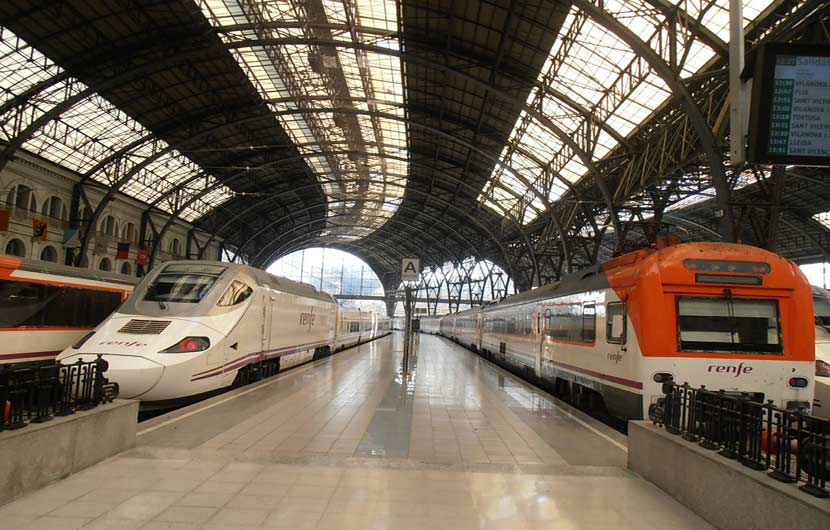
Murcia is well connected as far as public transport and road and motorway infrastructure goes, there are several public transport options for getting to and around the city.
Some of the main public transport options are:
- Flights : Murcia has a new airport, called the Región de Murcia International Airport at Corvera, located about 25 km from the city centre. The airport offers domestic and international flights to several destinations in Europe and Africa. You can reach the airport by bus, taxi or car.
- Bus: Murcia has a bus service operated by Transportes de Murcia which covers routes within the city and its surroundings. The bus is a cheap and convenient way to get around Murcia Spain, with an average price of €1.20 per journey. You can buy tickets on board or use a card that gives you discounts and allows you to transfer between buses and trams. The bus connects most of the main attractions and neighbourhoods of the city as well as other towns and cities in the region, such as Cartagena, La Manga, Mar Menor, Mazarrón and Águilas.
- Train: Murcia is well connected by a good local and national train service to and from all the major cities in Spain. The service is run by Spain's national carrier, Renfe .
- Tram: Murcia has a tram service operated by Tranvía de Murcia , which runs along 18 km of route and connects the northern area of the city (universities, shopping and leisure centres, and residential areas) with the city center. The tram is a fast and comfortable way to travel in Murcia, with a frequency of 10 minutes during peak hours. You can buy tickets at the stations or use the same card as for the buses.
- Taxi: Murcia has a taxi service that can be booked by phone, app or at taxi ranks. Taxis are a convenient way to travel within the city or to nearby places. The fare is determined by a meter and depends on the distance, time and day of the week.
- Bicycle: Murcia Spain is a city that encourages the use of bicycles as an efficient and sustainable means of transport. The city has a public bicycle system called MuyBici, which allows you to rent a bike at one of the 60 stations around the city for a low price. You need to register online or at an office to use this service. The city also has a network of cycling lanes that covers more than 100 km of streets.
Search for Hotels in Murcia
Live Weather Update

Travel Smarter - Not Harder
Download free e-guides and travel tips.
Start your Journey today and get access to exclusive FREE content.
Disclosure: Please note that some of the links included in the above content may be affiliate links. We may earn a commission if you make a purchase at no extra cost to you. Rest assured, we only recommend products and services that we personally use or have used and are happy to recommend. Any commission we earn helps toward the site's running costs.
Username or Email Address
Remember Me
- WHY VISIT SPAIN?
- TRAVELLING TO SPAIN
- SPAIN ON A BUDGET
- TRAVEL REQUIREMENTS – ETIAS
- SPAIN ENTRY REQUIREMENTS
- SPANISH CUISINE
- SPANISH FOOD
- HOLIDAY IDEAS
- PUBLIC HOLIDAYS
- TOURISM BOARDS
- AIRPORT GUIDE
- DRIVING IN SPAIN
- WEATHER IN SPAIN
- FREE WEB CAMS
- BEST BEACHES SPAIN
- FESTIVALS & FIESTAS
- MUSEUMS IN SPAIN
- CAMPING IN SPAIN
- MARINAS IN SPAIN
- SKIING IN SPAIN
- WATER PARKS
- UNESCO WORLD HERITAGE SITES
- 80 BEST ATTRACTIONS
- 71 BEST PLACES TO VISIT
- REGIONS OF SPAIN
- COSTA DEL SOL
- CANARY ISLANDS
- SAN SEBASTIAN
- Complete List:
- SAGRADA FAMILIA BARCELONA
- BARCELONA FC STADIUM TOUR
- BARCELONA FLAMENCO SHOW
- SEVILLE FLAMENCO SHOW
- SEVILLE CATHEDRAL
- GAUDI`S CASA BATLLO
- THE ALHAMBRA GRANADA
- SANTIAGO CATHEDRAL
- CITY OF ARTS & SCIENCE VALENCIA
- MOSQUE-CATHEDRAL CORDOBA
- CAMINITO DEL REY
- PRADO MUSEUM MADRID
- REINA SOFIA ART MUSEUM
- SCUBA DIVING
- BEST TAPAS TOURS
- BEST WINE TASTING TOURS
- TOUR GUIDES
- HOTELS IN SPAIN
- LUXURY HOTELS
- LUXURY BEACH HOTELS
- HOLIDAY RENTALS
- PARADOR HOTELS
- CHEAP FLIGHTS
- TRAVEL INSURANCE
- FREE TRAVEL BROCHURES
- WIN FREE HOLIDAYS


9 Reasons You Should Visit Murcia, Spain
By: Author Elizabeth Sellers
Categories Spain
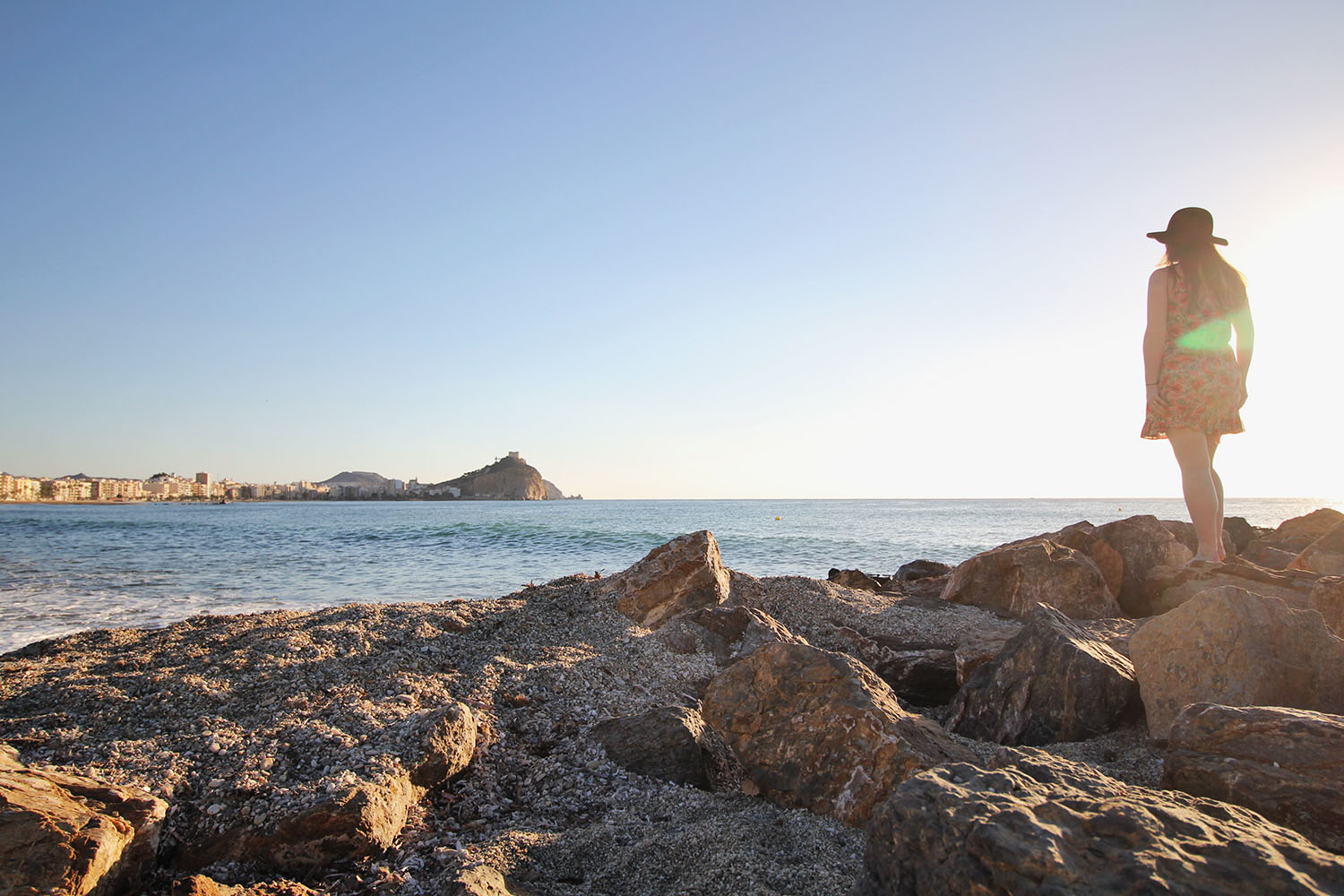
The Costa Calida is one of the lesser known tourist spots in Spain, this makes it the ideal place to travel to get an authentic Spanish experience without the usual crowds.
I went to explore the Murcia region, known as the garden of Spain, to see what it has to offer.
You can see my 5-day Murcia travel itinerary here. If you’re looking for somewhere to stay in Spain, check out Oliver’s Travels for some seriously gorgeous villas.
I loved my time in Murcia but I’ve found that many people know very little about this gorgeous area and are unaware of all the reasons they should visit. Murcia isn’t as popular as the more touristy areas such as Salou so here are just 9 nine reasons why I think you should visit Murica…
1. Wine Tasting and Vineyards
The Spanish sure know how to make a good wine or two! Murcia makes some incredible wines, and with vineyards aplenty in the Bullas area you can enjoy some wine education along with sampling the best they have to offer. PLUS, it’s incredible affordable. The place we visited was just €10-15 for the wine tasting AND tapas.
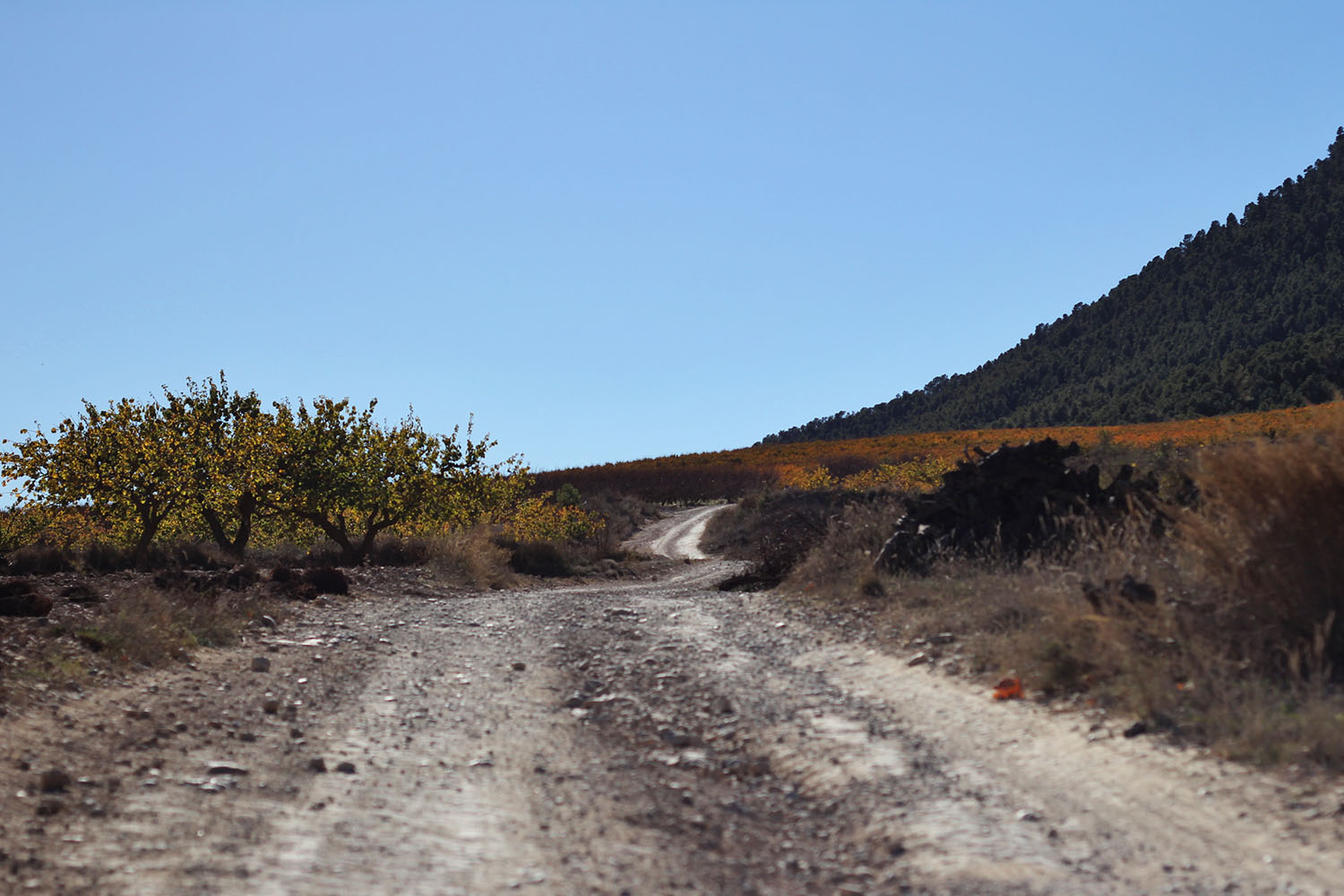
2. Unique Spa Experience
Archena is a natural thermal spa area with mineral rich waters. The Romans, being big fans of bathing, built their own baths here 2000 years ago. Today, the thermal spa and hotel is 19th century with modern refurbishment. Book a mud massage for one of the most unique spa experiences of your life.
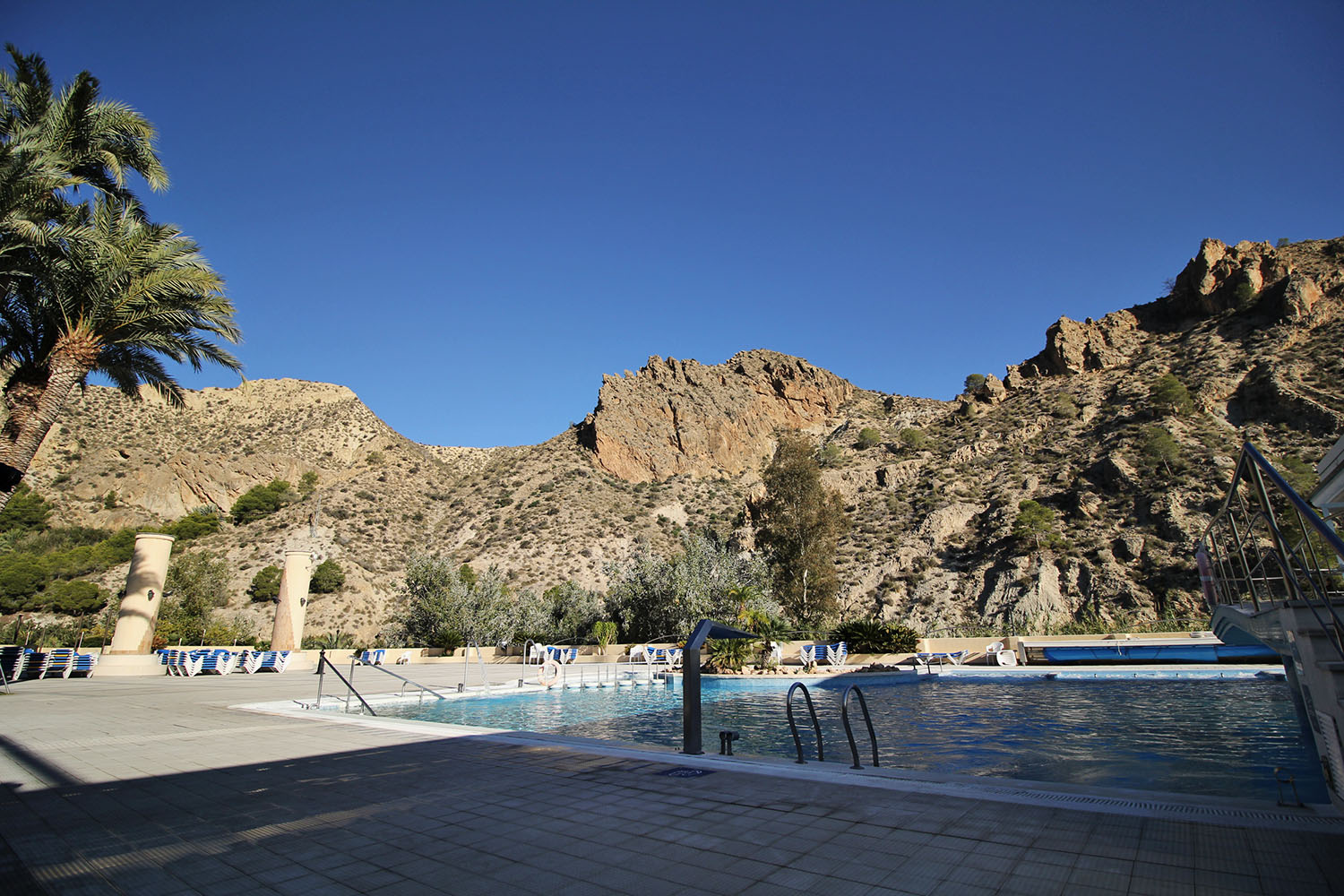
3. Flamingos and Mud Baths
In the summer time go and check out the white flamingoes (who knew they came in anything other than pink?!) at San Pedro del Pinatar salt flats then head over to the mud baths nearby. Smother yourself in the mineral rich mud from the pond then bake on the beach next door before finally rinsing off in the sea. Yep.
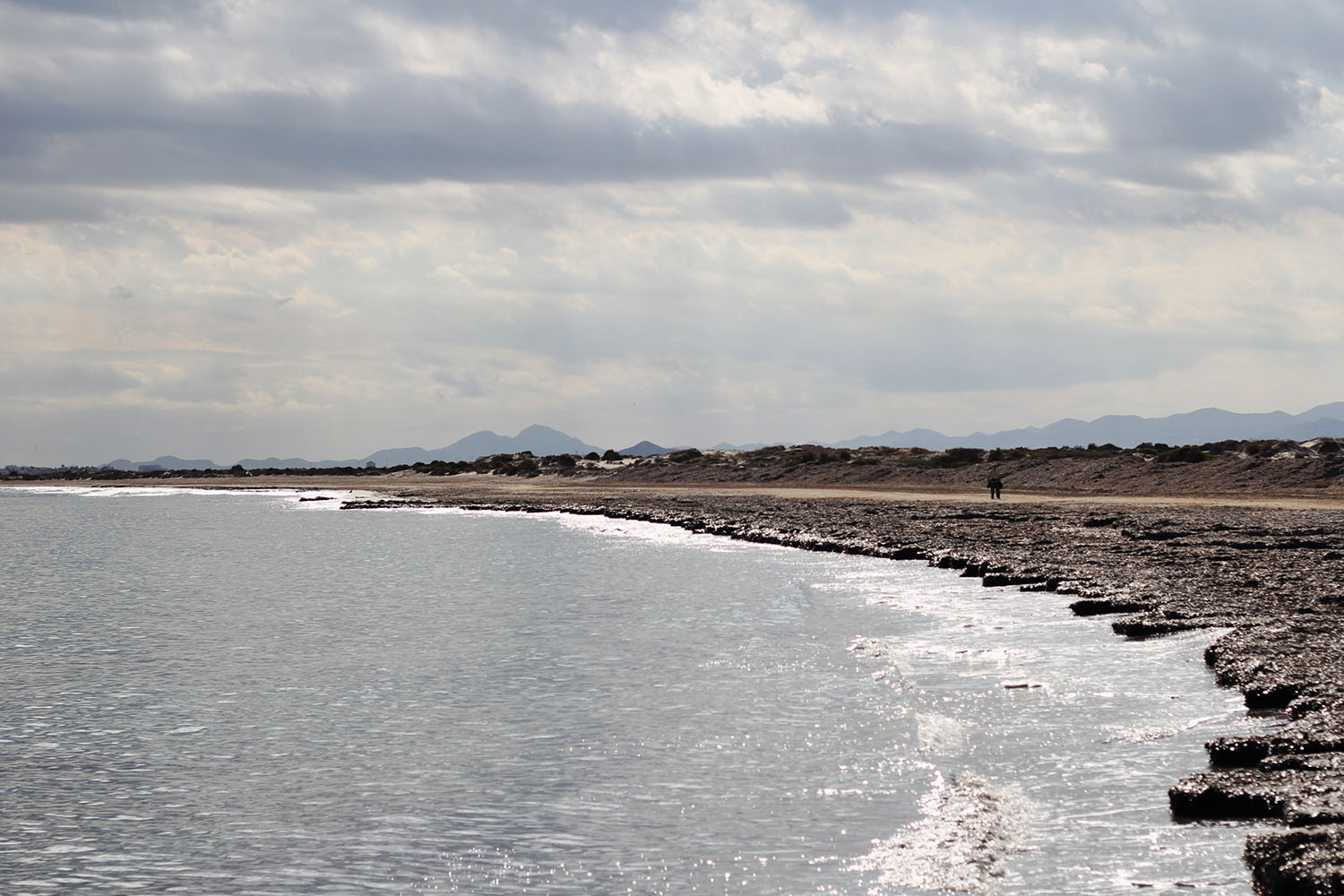
4. Shopping
Head to Murcia city for excellent shopping options (I am a huge fan of Spanish designers) and delicious tapas. Wander through the old quarter for everything from high designer boutiques, through to local arts and crafts. It’s a hub for all your high street favourites including Mango and Zara, plus I did spot and Sephora or two.
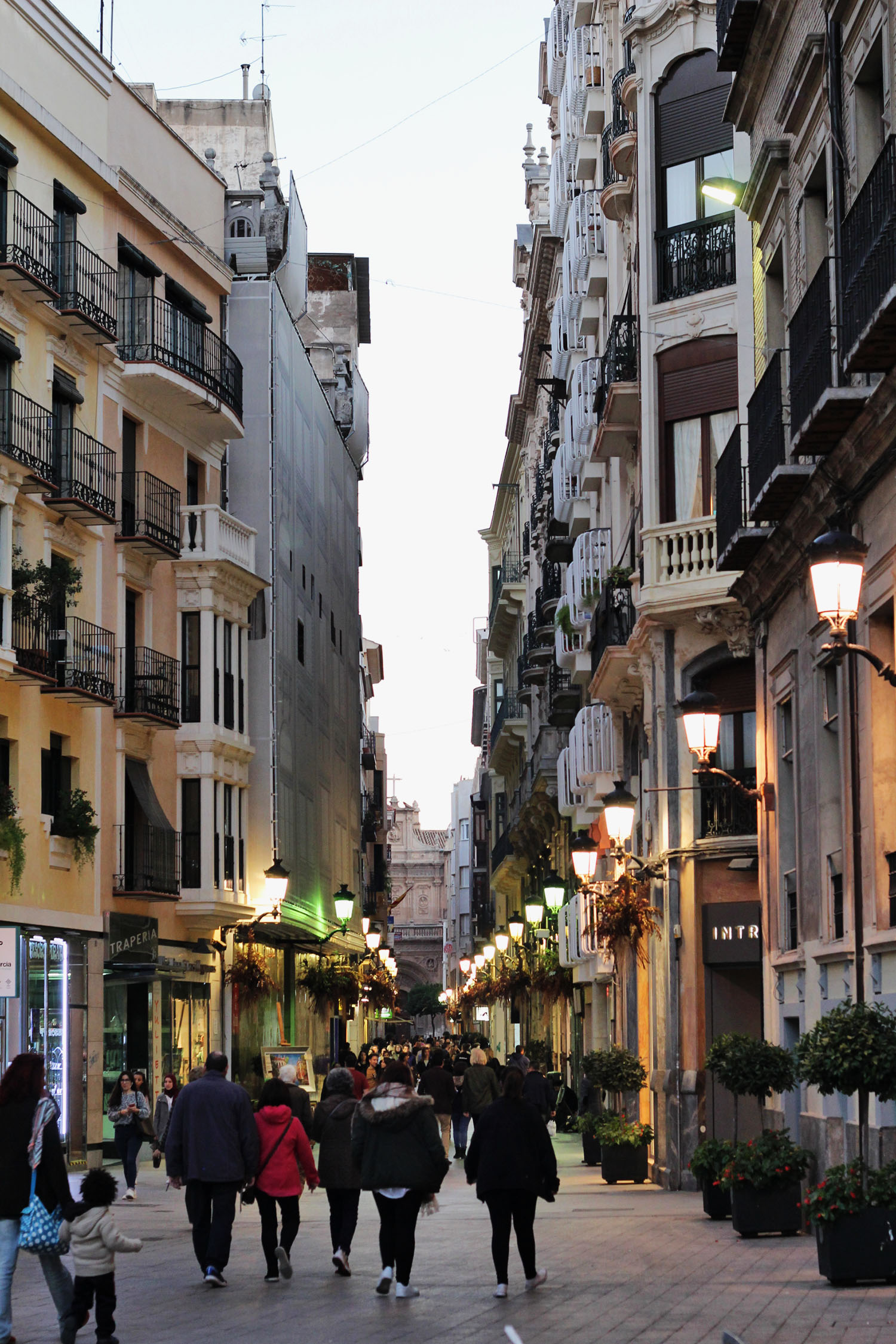
5. Quiet Coastline Walks and Secret Beaches
You could hit up the major beaches (playas) or you could seek out the smaller coves (cala) for a more intimate and pretty beachside experience. If the weather isn’t sunbathing-worth such as when I went in November, pop on your best walking shoes for a coastline trek.
I enjoyed the walk along Cape Palos peninsular. There is also a lovely walk between Cala Cerrada and Calarreona .

6. Road Trip Through the Pretty Landscape
Hire a car to really get to see Murcia and enjoy the dramatic landscape and seek out small picturesque villages. I loved the Ricote Valley journey from Archena to Blanca full of dramatic rocky cliffs, lush lemon groves and sparkling turquoise river.
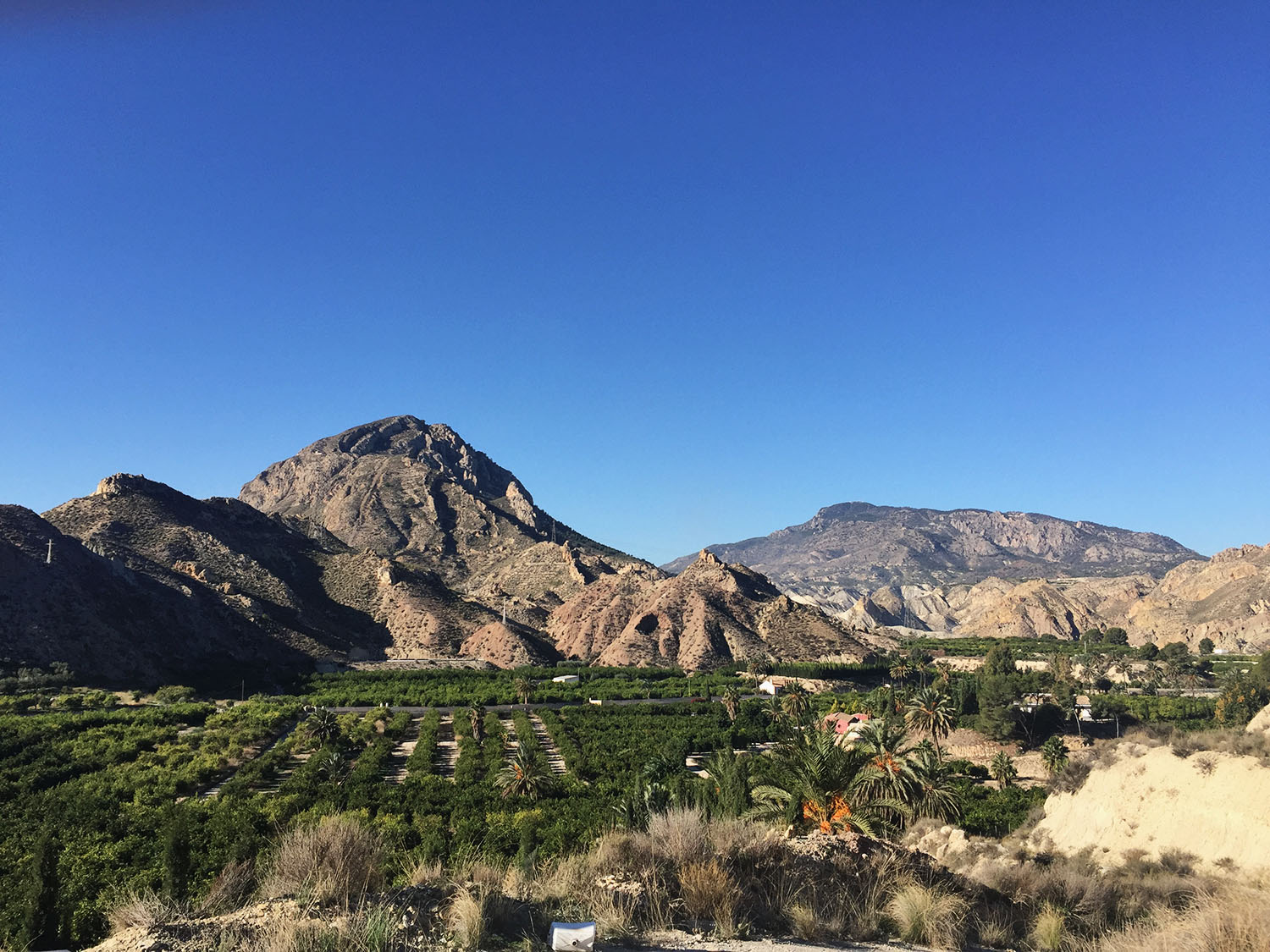
I’m sure every region of Spain considers themselves famous for their tapas. However, as Murcia’s number one industry is agriculture it is pretty well placed for serving up some of the highest quality ingredients.
The latest craze, or so I’ve been told, is for what us Brits call ‘daytime drinking’. Ladies dress up for lunchtime tapas and wine as restaurants spill out on to the many plazas in the city.
Or take it super casual like we did and head to the market to pick up your seafood or meat of choice and ask for it to be cooked there at the tapas restaurant in the corner.
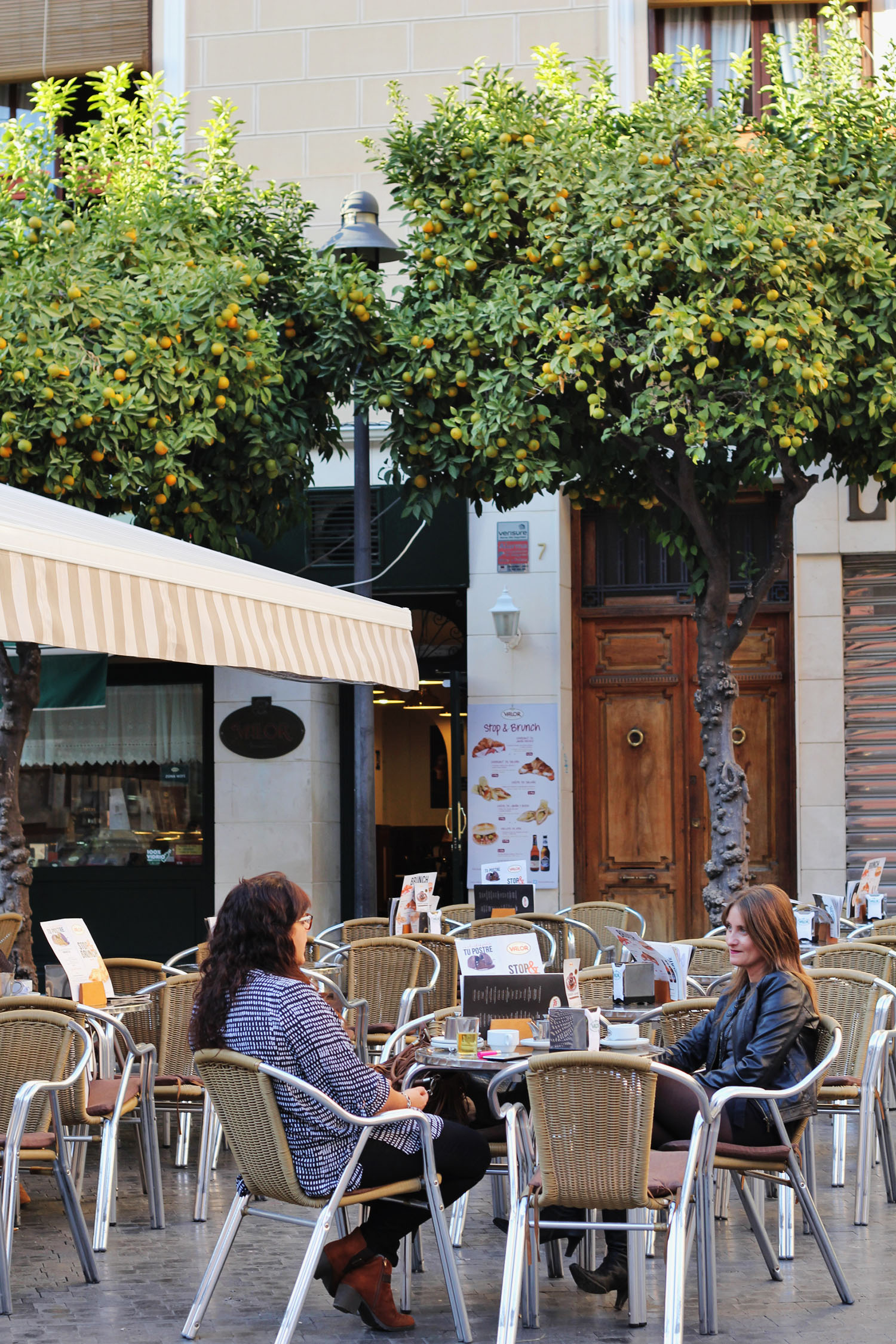
8. Pilgrimage to Fifth Holy City
2017 marks the a Holy Year and a pilgrimage to Caravaca de la Cruz , the fifth holiest city after Rome , Jerusalem , Santiago de Compostela, and Camaleno . Whether you are a religious person or not, you might find the festivities in this pretty city to be quite the experience.
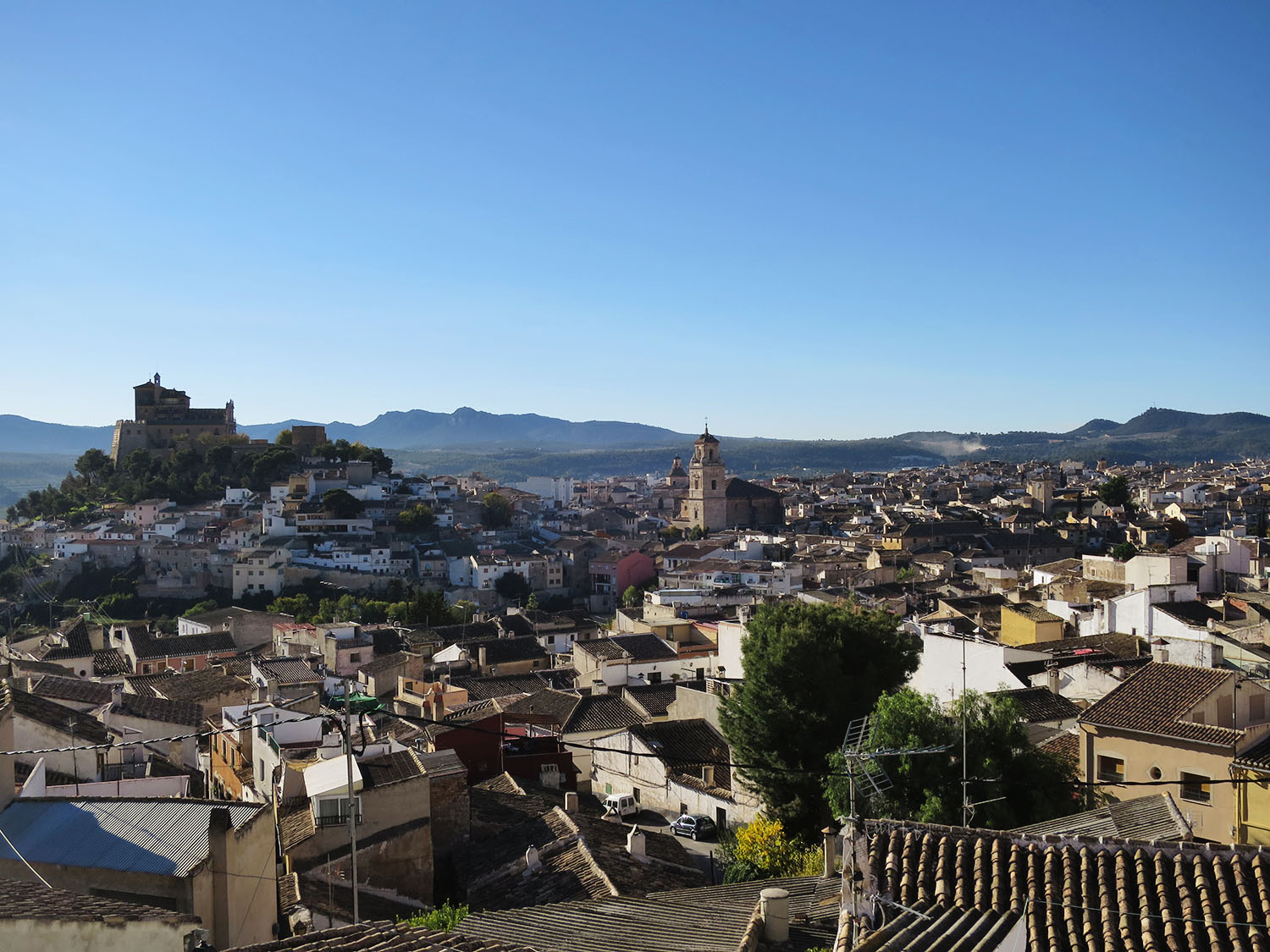
9. Fewer tourists!
Unlike it’s wider known neighbours, Murcia is not a tourist trap. It is however popular with the Spanish so give it a try for a full on authentic experience.
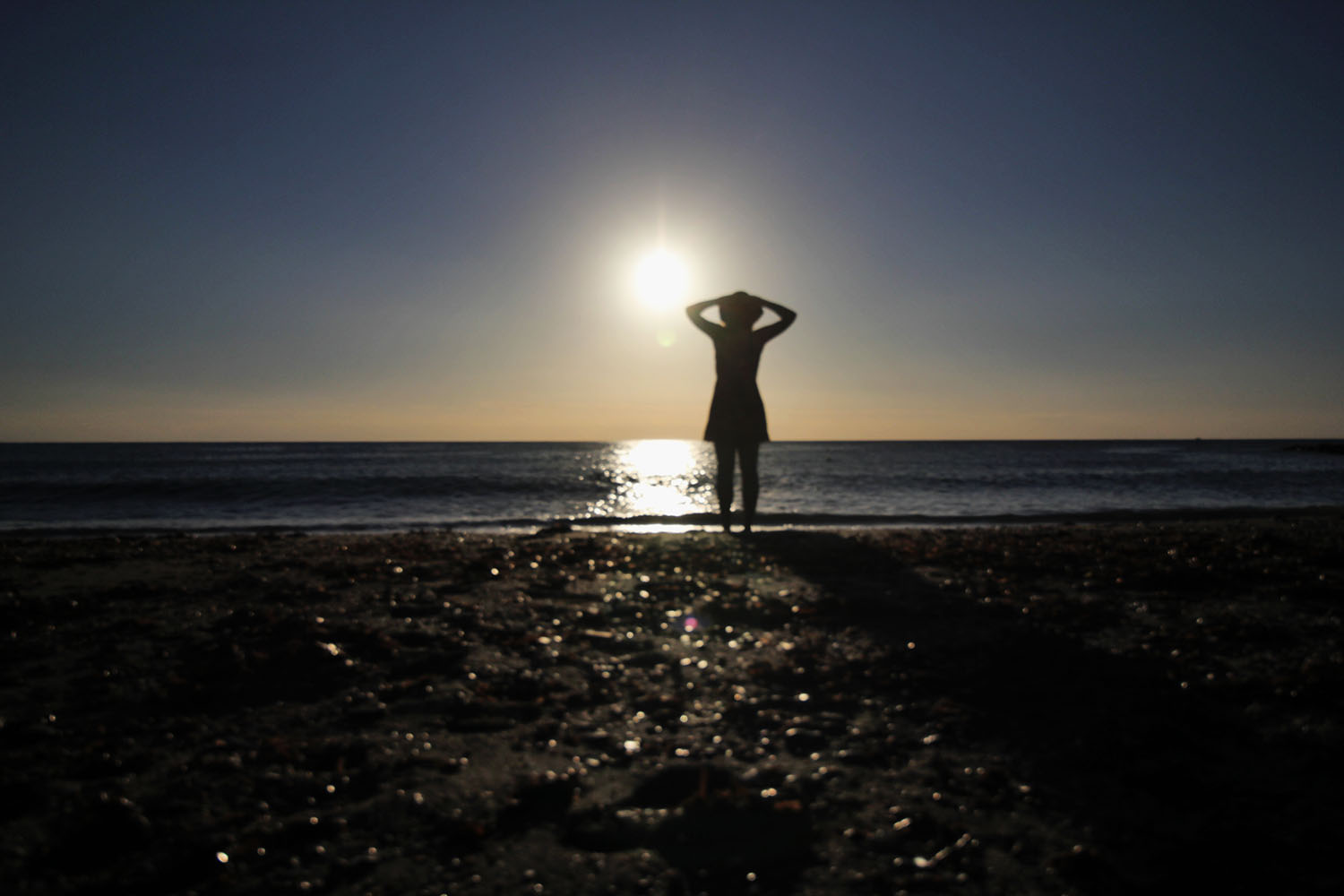
Joyce Regan
Monday 31st of May 2021
Love your writing style!
Perfect Weekend Itinerary for Murcia - The Travel Hack
Tuesday 17th of January 2017
[…] 9 reasons to visit Murcia, Spain […]
Wednesday 30th of November 2016
Looks absolutely interesting! It kind of feels pristine :)
Is Murcia Worth Visiting: 7 Reasons We Think It Is

The sprawling Spanish region of Murcia is blessed with 250 kilometers of Mediterranean coastline , agricultural hinterlands, mountainous terrain, and medieval villages aplenty. Despite all that this community has to offer, Murcia remains somewhat of a hidden gem compared to tourist favorites like Granada, Andalucia, and Mallorca, but is its understated regional capital worth visiting?
The university city of the same is Murcia’s biggest and most popular metropolis. Despite being a lively student town, Murcia is punctuated with tranquil cobblestone streets, historical architecture , and scenic landscapes beyond the city limits that make for some great days out.
Out of the 36 million tourists that visit Spain every year, just one million people, on average, choose the Murcia region for their break. Still, this only adds to its charm and appeal. There are so many reasons why Murcia is worth visiting, and you’ll find just some of them in our guide below. Let’s get into it.
Table of Contents
The Small-Town Vibe

Murcia is a city break for people who don’t enjoy city breaks. Despite the sprawling shoreline of the Costa Cálida, Murcia isn’t a beach getaway either, set 50 kilometers inland from the waters of the Mediterranean. Instead, Murcia offers a bit of everything with a slow pace and small-town feel, but within easy reach of all that the Spanish coast has to offer.
Murcia is nowhere near as busy and crowded as cities like Alicante , Valencia, and Barcelona and it doesn’t always feel like a city. Still, that isn’t to say there’s not plenty happening.
In true Spanish fashion, the central plazas are where you’ll find most of the action. Plaza del Cardenal Belluga is the architectural showpiece of the city. The impressive Cathedral Church of Saint Mary, or Catedral de Murcia, has been designed in a mash-up of baroque and Gothic styles – another prerequisite of Spanish cities. Plaza de la Flores is the place to head for the best food and Plaza de Santa Domingo is the heart of Murcia’s shopping area.
The Old Town is as picturesque as in any other Spanish city, but unlike its better-known neighbors, Murcia is not a tourist trap. If you’re lucky, you’ll often find that you have the pedestrianised streets all to yourself, even in the high season. As a university city but also a family-friendly place, Murcia is less seasonal than other tourist destinations too. The general vibe is similar throughout the year, making it perfect for a winter weekend away as well as a summer jaunt.

It’s impossible to mention Spain without talking about the food , and Murcia certainly won’t disappoint if you’re keen to savor some authentic local cuisine. Although, it might not be what you’re expecting.
Forget chorizo, paella, and sangria, Murcia has its own regional delicacies like everywhere else in Spain and there are some distinct flavours that you’ll recognize in the cuisine. Murcia is often dubbed the “Orchard of Europe” thanks to its fertile landscapes and incredible fruit and veg that is exported to the rest of the continent. Murcian cuisine is influenced by the nearby sea too, but you’ll also find lots of fresh vegetables integrated into most dishes and there are some local favorites you’ll have to try.
Alcachofas de la Abuela, translated as “grandma’s artichokes” are a regional specialty and only found in Spanish restaurants that stick by traditional culinary techniques – many of which you can find in Murcia. These artichoke hearts are cooked in rich beef stock that is best mopped up with plenty of bread. There’s also the creamy Pisto Murciano, a ratatouille-style dish comprised of onion, tomato, pepper, and eggplant.
Murcia is well known for its desserts too. Be sure to try Cuerno, the meringue-filled party horns that are served at bakeries and cafes all around the city, as well as Paparajotes, made from battered and fried lemon leaves and seen as the emblematic treat of Murcia.
The History

With incredible architecture, of course, comes rich history, and Murcia is brimming with it. The documented history of Murcia dates back to the Middle Ages when the city was founded by the Moors. Murcia’s five hundred year Islamic rule, starting from 825 AD, is prevalent in the art, cuisine, and culture. Despite the well-preserved Renaissance, Gothic, and Baroque style buildings that dominate the Old Town, Moorish sites can still be spotted among them.
A number of Christian churches have been built on Muslim mosques in Murcia and the Clara Monastery and Museum is a place where these two worlds collide. Once an Islamic palace, the enclosed convent has been inhabited by Clare nuns since 1365.
It still houses one of the oldest Arab pools in the world, along with a collection of religious artworks. Today, the nuns coexist with the museum space and Moorish remains. Remnants of the old city walls, known as the “Arabic walls”, can also be glimpsed around the city. One of the best places to visit the Arabic wall is in Plaza Santa Eulalia.
If you want to learn more about Murcia’s ancient history, check out the Museo de Arqueologia. Though small, the museum located in the heart of Murcia boasts a good selection of historical exhibits along with treasures and relics from the best excavations carried out in the region.
The Day Trips

Murcia benefits from a perfect location for enjoying all that the region has to offer. The city is just half an hour from the coast, as well as some picturesque towns like Cartagena, Torrevieja, and Lorca. The El Valle y Carrascoy Regional Park also lies just outside of Murcia with forests, wetlands, dunes, botanical gardens, and even an animal rescue center for visitors to enjoy.
Still, you can’t head to Spain and not enjoy at least one beach day. The Costa Blanca is in easy reach of Murcia, straddling 200 kilometers of Mediterannean coastline from Dénia to the edge of the region, beyond which lies Murcia’s Costa Cálida, the less-trodden but equally spectacular 250-kilometer stretch of coast.
The Costa Cálida welcomes more hours of sunshine than most of Spain’s coastlines thanks to its micro-climate, and there are no less than 34 Blue Flag beaches dotted along its shores. In fact, the municipality of Águilas in the Murcia region is home to more Blue Flag beaches than anywhere in the country. One of these is Playa de la Higueríca, a sandy cove that sprawls for one kilometer on the edge of a nature reserve.
Murcia is ideal if you want to combine a city break with a bit of adventure. From the beaches to the dramatic landscapes of Mazarrón and olive orchards of Abanilla, you certainly won’t get bored.
The Spa Experiences

This might not be the first thing you associate with Spanish cities, but it’s one feature of Murcia that makes it especially unique. Unusually, the region is dotted with natural thermal springs like the Balneario de Archena, used since Roman times, and the salt flats at San Pedro del Pinatar with their rich mineral mud baths nearby.
Balneario de Archena is now the site of a spa hotel with 19th century modern decor, but it offers day passes for visitors with full access to their indoor and outdoor pools, saunas, steam rooms, and treatment rooms at an extra price.
The salt flats at San Pedro del Pinatar are also surprisingly not best known for their nearby mud baths, but rather the spectacular populations of white flamingoes that flock to the body of water at the end of summer. Both of these unique spa locations can be found just outside the city, with the salt flats being 40 minutes away by car and the Archena only 20 minutes.
The Weather

As mentioned, another thing that makes Murcia special is the delightful micro-climate of the Costa Cálida that makes the region a year-round vacation destination. Situated in the southeast of the country, the Murcia region experiences more hours of sunshine per year than much of Spain .
Costa Cálida literally translates as the “warm coast”, and it certainly lives up to its name. There’s an 80 percent chance of sun all year round, and the water temperatures here, from which it actually gets its title, are around five degrees higher on average than in the rest of the Med.
The region lies protected from cold currents of the Atlantic Ocean in the Gulf of Mazarron, but it’s not all about the coast. Murcia also has a unique micro-climate created by the mountain ranges in Northern Alicante, shielding Murcia and the Costa Blanca from cooler air while limiting rainfall.
The city enjoys a subtropical Mediterranean climate, with a yearly average temperature of around 65 degrees Fahrenheit, and a summer average well into the 80s. The coldest month is January, but the average temperature still hovers around 50 degrees Fahrenheit so the city is well suited for a mild winter break.

Murcia is an artistic city and has played host to some inspiring creatives over the years. Francisco Salzillo, one of the most prominent sculptors of the 18th century, spent most of his life in Murcia, lending his religious-themed work to the dynamic history of the city.
Painter and poet, Ramón Gaya, was also born in Murcia. His collective works amount to more than 2,500 paintings, and can be found all over Europe and North America. However, the Museo Ramón Gaya in the city center, housed in a 19th-century manor, displays more than 100 of his pieces.
There are tons of museums and galleries to explore in the city, and most of the religious buildings also boast their own collections of historical works. Still, as art and fashion go hand in hand, it’s worth mentioning that Murcia is a great destination for shoppers too. You can peruse the galleries in the old quarter, before picking up a local arts and crafts souvenir, and rewarding yourself by dipping in and out of the designer boutiques.
What is Murcia known for?
Murcia is a dynamic region and although undeniably less trodden than neighboring communities, it is well-known nationwide for its Huerta and fresh produce. Huerta means “garden” or “orchard” in English, and Murcia is often dubbed the “garden of Europe” thanks to its fertile lands which are responsible for cultivating some of the finest fruits and vegetables in Spain. The produce is exported all over the continent. Murcia is also known for its folklore, based around its Huerta and spring festivals celebrating the agriculture.
Is Murcia safe?
Murcia is one of the safest and most welcoming regions in Spain with low crime rates and a well-trained police force. Fewer tourists brings less petty crime, and the manageable size, partnered with the university presence, helps contribute to the security siutation.
When is the best time to visit Murcia?
Murcia is much quieter than some Spanish cities, but the summer is still the most popular time to visit with summer holiday crowds ramping up the prices of hotels and flights. Murcia is a year-round destination, so if you want to save some money, spring and autumn are both great times to visit. Temperatures never dip below freezing and things can start heating up as early as May, with 80 degree days still being prominent into September.
Reece is the creator and editor of Travel Snippet. He has visited more than 38 countries over a 10-year period. His travels have taken him through the majestic mountains of Italy, into the cities of central Europe, across the islands of Indonesia, and to the beaches of Thailand, where he is currently living. He is passionate about travel and shares his expertise by providing the best travel tips and tricks to help you plan your next adventure.
Related posts
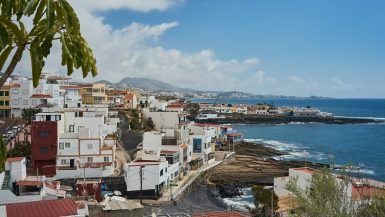
How To Travel Between Canary Islands: The Ultimate Guide

The 5 Best Fuerteventura Surf Spots For Beginners

Whale Watching In Tarifa: Best Time, Prices, & Tour Operators
- How to Tie a Tie
- Best Coffee Beans
- How to Shape a Beard
- Best Sweaters for Men
- Most Expensive Cognac
- Monos vs Away Luggage
- Best Luxury Hotel Chains
- Fastest Cars in the World
- Ernest Hemingway Books
- What Does CBD Feel Like?
- Canada Goose Alternatives
- Fastest Motorcycles in the World
These are the most incredible places to visit in Spain
Put these spots in spain on your bucket list.
Traveling to Europe lets you enjoy new cultures, cuisines, landscapes, and architecture. It’s like introducing new colors to your palette of perspectives, where you try new things and experience the unknown. But you only have so much time and can only visit so many places.
- The 5 best places to visit in Spain
- Now you’re ready for a Spanish adventure
Spain — a country rich with natural beauty, eclectic foods, and vibrant culture — hits on all marks when you want an immersive European vacation. Spain has the ingredients for a fulfilling, refreshing trip, from curated museums to local eateries. But if you’ve never been, knowing where to go might seem daunting.
To help, we’ve compiled a list of the best places to visit in Spain so you can hit the tarmac and start exploring. Let’s dive in.
The 5 best places to visit in Spain
On your trip to Spain, you have limited time to take it all in, get the most out of each day and visit the places that matter. Here are our picks.
Viewing Barcelona’s skyline, every square inch seems covered by historic buildings or cultural byways. Throughout, you’ll find gems like Antoni Gaudi’s architecture, including Casa Milà and La Sagrada Família, and museums, including the Centre de Cultura Contemporània de Barcelona. Back streets and alleys line the Ciutat Vella (Old City), where you’ll find unique restaurants and cafés with new flavors and deep heritage.
First, we’d visit the Centre de Cultura Contemporània de Barcelona , followed by a walk through the Ciutat Vella. Then we’d order pizza at Sartoria Panatieri , which focuses on artisan-quality pies. The eatery uses farm-to-table ingredients like local organic flour, and toppings consisting of Mahón cheese, Kalamata olive puree, wild fennel, and more.
As the country’s capital since 1561, Madrid serves as a cultural epicenter with a lively mood. To see it all without the walk, try the Teleférico de Madrid, a cable car that runs the width of the city, spanning a river and green spaces, before ending at the amusement park and zoo, Casa de Campo. The Mercado de San Miguel , an eclectic market, lets you try wines and tapas (small plates), or pick up ingredients for your own creations.
While you’re there, try getting tickets to a Real Madrid game at Santiago Bernabéu Stadium, where up to 81,000 soccer fans show their passion for the popular squad. After taking in a thrilling match, we’d visit Taberna El Sur for tapas in a relaxed, fun setting.
Costa Brava
While cities immerse you in new places and people, that can get tiring after a few days. Costa Brava does the opposite, with its cove beaches and ocean-view restaurants. Satisfy your artistic side by visiting the Salvador Dalí house and the Dalí Theatre Museum. Take in the Cap de Creus National Park , with rugged sea cliffs and panoramic views of the turquoise Mediterranean.
We’d take a kite surfing lesson at Fase Wind , followed by dinner at La Taverna Del Mar , where fresh seafood takes center stage. The restaurant’s cozy feel and healthy menu are perfect for post-surf recovery.
For even more outdoor adventures, visit this group of islands off Spain’s east coast. The Serra de Tramuntana mountain range lines the horizon, while the capital city, Palma de Mallorca , holds deep history and numerous galleries, eateries, and bars. Playa Del Muro Beach is a 3.7-mile stretch offering calm waters and peaks in the distance. For the ultimate in freedom, rent a boat and explore Alcúdia Bay, and use the included snorkeling gear to dive in and refresh.
We’d book a full-day tour of Mallorca’s best coves and beaches, followed by dinner at Nus Palma . The restaurant focuses on Asian-inspired recipes using local ingredients, with a simple, honest feel.
Toledo
When you want to know more about Spain’s history, this UNESCO World Heritage Site is the perfect place. Offering small-town charm and only a short drive from Madrid, the city takes you back in time with centuries-old buildings and eminent artwork. The El Greco Museum focuses on the Renaissance work of the noted Greek painter, architect, and sculptor. Alcázar de Toledo — an imposing military fortress — overlooks the city from its highest point and dates back to Roman times. The city is also known for its Marzipan , a sugary treat made from ground-blanched almonds, egg whites, confectioner’s sugar, and almond extract.
On a day trip to Toledo, we’d visit the El Greco Museum, stroll the streets, and then refuel at Entre Dos Fuegos . Situated within a boutique hotel, the tiny restaurant has an open kitchen and intimate mood, where guests interact with the chef, and enjoy Kumamoto oysters, yellowfin tuna tiradito, and Vallejo style ceviche.
Now you’re ready for a Spanish adventure
With these picks, you can experience a little bit of everything. From the culture and cuisine of the city to the landscapes and waters of the coast, you can learn or relax depending on your mood. When you rent a car, pay a little extra for unlimited mileage, then go everywhere you can before it’s time to return. Then you’ll have more than enough memories.
Editors’ Recommendations
- The best golf courses in Palm Springs: These spots are worth a visit
- This is the best time to visit Glacier National Park
- Where to find the best snorkeling in the world: Adventure awaits
- Cross the San Francisco Bay in this zero-emissions ferry
- Copenhagen has a new program to encourage sustainable tourism with these perks
- Destinations

In San José del Cabo, Mexico, the newly renovated Tropicana Los Cabos debuts this August. The boutique hotel first opened in 1956 as the Tropicana Inn, and now, will offer travelers a dream Mexican getaway, with enhancements throughout. Not only that but since it’s only 20 minutes from the Los Cabos Airport, it’s as convenient as it is luxurious. Here’s what the updates include. Tropicana Los Cabos: Immerse yourself in Cabo’s culture and cuisine
Scotland, tucked away in the British Isles, is captivating with its stunning landscapes, rich history, and lively culture. But when is the best time to visit Scotland? Well, it depends on what you want to experience -- but the season you choose can play a huge part in how your vacation goes!
If you want a vacation filled with gorgeous hikes, stunning beaches, delicious food, and getting safely close to volcanoes, then Hawaii is your final destination. With an endless list of reasons to visit the Aloha State, the hard decision isn't if you should go or not — it's when you should go. Whether or not you've ever been, here's the best time to visit Hawaii to get the most out of your trip. Time to book Everyone has preferences when it comes to vacation timing. Some people hate going during the hottest months, and some hate going during the busiest months. Pick your preference and see which month is best for you. The off seasons
Untamed Spain: A guide to its parks and wildlife
Sponsored by

Jul 10, 2024 • 7 min read

Around one third of the Spanish mainland comes under protected status, including the Picos de Europa. Coke Bartrina for Lonely Planet
From the snow-tipped Pyrenees and the jagged Picos de Europa in the north, to the wave-battered Islas Atlánticas to the west; from the Doñana wetlands, to Europe’s only desert in the Almería province; from the forest-covered mountains of Sierra de las Nieves and Sierra Nevada , to the sun-drenched volcanic peaks of the Canary Islands ; Spain ’s natural landscapes are striking in their sheer diversity and natural beauty.
Around one third of Spain comes under protected status, and its national parks showcase the best of the country’s natural bounty and success of conservation efforts. Spain’s rugged terrain is a playground for hikers , climbers, horseback riders and other fresh-air aficionados, while the country’s diversity of animal life is second to none, ranging from lynx, wolves and brown bears to Europe ’s most prolific and varied birdlife.
Spain’s national parks
Straddling southeast Asturias , southwest Cantabria and northern Castilla y León , the 1918-founded, 260-square-mile Parque Nacional de los Picos de Europa – Spain’s first national park – comprises some of Spain’s (and Europe’s) most spectacular mountain scenery. Dominated by 8,000-foot peaks Macizo El Cornión, Macizo Ándara and Macizo Central, its dramatic limestone crags loom above sparkling lakes and mountain meadows, with the sheer rock faces plunging dramatically down into precipitous river gorges. The park’s natural bounty is accessed via an extensive network of signposted hiking trails; August is the busiest of the summer months, while during winter you’re likely to have the national park more or less to yourself.

Battered by Atlantic waves, Parque Nacional de las Islas Atlánticas encompasses four small archipelagos off the windswept coast of Galicia : Illas Cíes, Ons, Sálvora and Cortegada. The stars of the show are three Illas Cíes , two of them forming a natural breakwater that protects one of Spain’s loveliest white-sand beaches from the Atlantic’s fury. Once you’re there, the well-trodden footpaths to the lofty lighthouse and other viewpoints make for excellent day walking. Further north, quieter Illa de Ons features several sandy coves and a network of gentle trails. Between 15 May and 15 September, there’s a cap on the number of day visitors, so booking visitors’ permits online and ferry tickets to Illa de Ons weeks in advance is essential, particularly for July and August.
The deep canyons, mountain lakes, thick forest, waterfalls, and dragon’s back of limestone peaks that make up Spain’s joint-oldest national park, Aragon ’s 60-square-mile Ordesa y Monte Perdido , rival the Picos de Europe when it comes to natural beauty, yet it receives a fraction of the Picos’ foot traffic.
Further east, Catalonia ’s rugged 55-square-mile Parque Nacional Aigüestortes i Estany de Sant Maurici is another slice of alpine beauty, its mountain meadows, forests, granite peaks and more than 200 lakes forged by glacial action over two million years.
Just north of Madrid lies the 130-square-mile Parque Nacional Sierra de Guadarrama , the only wilderness in Spain comprising high Mediterranean mountains and forests that shelter the Iberian ibex, roe deer and the golden eagle. Hiking aside, there are several small ski resorts, as well as the impressive 15th-century Castillo de los Mendoza in the region’s main town of Manzanare El Real.

Heading west, Extremadura ’s hilly, dramatic 70-square-mile Parque Nacional de Monfragüe straddles the Tajo River valley and is particularly rich in bird life: its 175 feathered species include black vultures, the Spanish imperial eagle and black stork. Deer, badgers, wild boar and otters are often spotted while hiking from the pretty hamlet of Villareal de San Carlos.
South of Madrid, in Castilla-La Mancha , the vast grasslands, mountains, and holm-oak and cork-oak forests of 390-sq-km Parque Nacional de Cabañeros , a.k.a. ‘Spain’s Serengeti’, shelter roe deer, wildcats and assorted raptors. Also in Castilla-La Mancha, the pocket-sized, 8-square-mile Tablas de Damiel protects one of Spain’s last remaining floodplains, a vital habitat for endemic and migrating bird species, with ducks, geese, kingfishers, flamingos and herons spotted from boardwalks and observation hides.
In Andalucía , the vast coastal wetlands of the 230-square-mile, World Heritage-listed Parque Nacional de Doñana shelter the elusive lynx and a cornucopia of bird life; the mountains of 140-square-mile Parque Nacional Sierra de las Nieves are clad in Spain’s only remaining pinsapo (ancient fir tree) forest, while the precipitous peaks of the majestic 330-square-mile Parque Nacional Sierra Nevada are an irresistible lure for trekkers.
More than 40 percent of the Canary Islands are protected natural spaces. That includes four national parks – the most of any region in Spain – representing a mix of fantastical, varied landscapes. Walk through the eerily beautiful laurel forests of La Gomera ’s Parque Nacional de Garajonay , or gaze over the unworldly and tortured landscape of Lanzarote’s Parque Nacional de Timanfaya , a splendid natural canvas of shimmery grays, earthy reds and pops of pine-green clashing against the brilliant-blue sky.

Hiking along the Ruta del Cares is a popular way to see the Picos de Europa. Coke Bartrina for Lonely Planet
Best for outdoor sports
Dominated by 11,500-foot Mulhacén, the highest peak in mainland Spain, Andalucia’s Parque Nacional de Sierra Nevada features spectacular hiking – from two long-distance trails, and ascents of its most challenging crags, such as Mulhacén and Alcazaba, to moderately taxing rambles between the picturesque villages of the Alpujarras valleys. Outdoor operators arrange adrenaline-packed via ferrate and canyoning excursions, plus horseback adventures along centuries-old muleteer trails. Sierra Nevada also boasts the highest skiing resort in Europe, with powder action between late November and April.
In the Pyrenees right by the border with France, Parque Nacional Ordesa throws down a gauntlet to serious hikers who come to summit the challenging 11,000-foot Monte Perdido that towers over dramatic glacial valleys. Other popular hikes from Pradera de Ordesa include the day hike to the Circo de Cotatuero, a powerful waterfall, while Torla is the epicenter of exhilarating white-water rafting action.
Small but perfectly formed, Parque Nacional Sierra de las Nieves welcomes hikers outside the nieve (snow) months of January to March. The towns of El Burgo and Tolox make good hiking bases, and top hikes include the ascents of the 6,300-foot Torrecilla peak and the Cañada de los Cuernos gully to the high pass of Puerto de los Pilones.
The Picos de Europa cater to hikers of all abilities with dozens of trails, ranging from easy strolls around the Lagos de Covadonga to the tough high-mountain three-day route known as GR 202 that bisects the park, with the super-popular hike along the jaw-droppingly beautiful Cares gorge falling somewhere in between. Outfitters in Cangas de Onís, Potes and beyond offer rock-climbing, horse-riding, caving and canyoning, while Arriondas is the most popular kayaking base.
The pine- and fir-bedecked glacial valleys of Parque Nacional Aigüestortes i Estany de Sant Maurici makes for fantastic high-country hiking, whether it’s the 19-mile-long Espot–Boí traverse or shorter ascents to the likes of Estany Gran d’Amitges (7,800 feet) or the Estany de Monestero (7,200 feet).

Best for wildlife
The world’s most endangered wild cat species, the Iberian lynx (lince ibérico) has bounced back from the brink of extinction thanks to a captive-breeding program. Now there are more than four hundred in the wild, some found in Extremadura’s Parque Nacional de Monfragüe, and the majority spread across Andalucía’s Parque Nacional de Doñana; you’ll have to be lucky to spot these nocturnal creatures on guided tours.
Similar numbers of brown bears ( oso pardo ) are spread across the Cordillera Cantábrica (Cantabria, Asturias and northern Castilla y León) with a small population on the rise in the Pyrenees. Thanks to intensive conservation measures; they are occasionally seen in the Picos de Europa.
Spain’s 2,200 to 2,700 Iberian wolves ( lobos ibéricos ), are found in small populations across northwestern Spain, including the Picos de Europa, though the densest concentration is in the Sierra de Culebra, southwest of León .
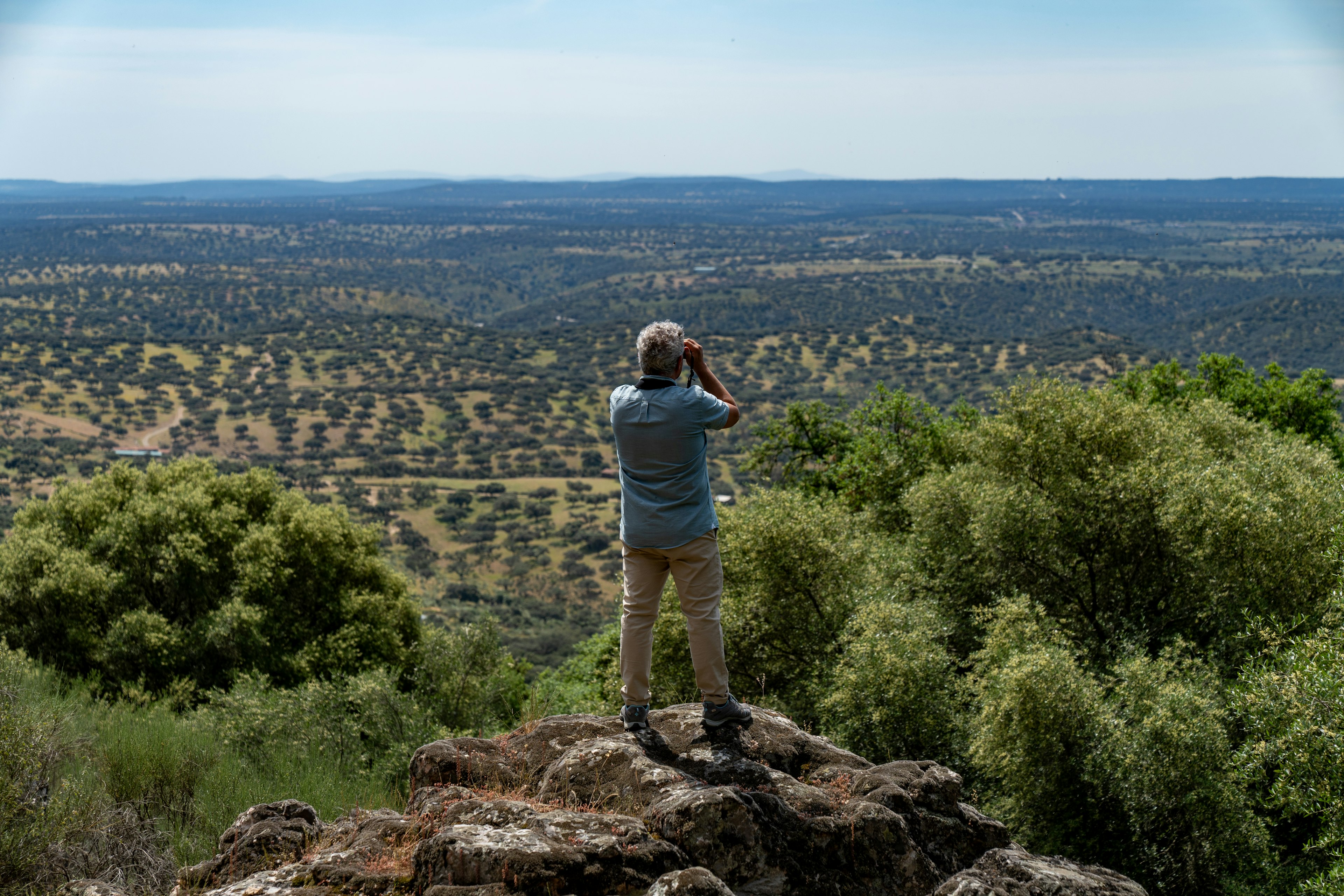
Spain’s varied ecosystems are a haven for the biggest and most varied bird population in Europe, including around 25 species of birds of prey. The mountains and woodlands of Parque Nacional de Monfragüe are home to 280 bird species and are the best place in the country to spot the golden eagle ( águila real ), griffon vulture ( buitre leonado ) and Egyptian vulture ( alimoche ), as well as western Europe’s only breeding population of the black stork ( cigüeña negra ).
Huge flocks of flamingos turn the skies pink above the extensive wetlands of Parque Nacional de Doñana – a vital stop on the Africa-Europe flyway for migrating species, while Galicia’s Islas Atlánticas provides a stopover for the great cormorant, the northern gannet and the razorbill, and a home for the largest colony of yellow-legged gulls in the world, as well as the European shag and the storm petrel.
As all of this diverse wildlife thrives within Spain’s national parks, it stands as a testament to the commitment to preserving these natural treasures.
Sponsored by Turespaña
As a travel entertainment and inspirational media outlet, we sometimes incorporate brand sponsors into our efforts. This activity is clearly labeled across our platforms.
This story was crafted collaboratively between Turespaña and Lonely Planet. Both parties provided research and curated content to produce this story. We disclose when information isn’t ours.
With sponsored content, both Lonely Planet and our brand partners have specific responsibilities:
Brand partner
Determines the concept, provides briefing, research material, and may provide feedback.
Lonely Planet
We provide expertise, firsthand insights, and verify with third-party sources when needed.
Explore related stories

Jul 19, 2024 • 6 min read
Join the locals on these beloved bike paths: the best way to experience Spain's natural beauty.

Jul 19, 2024 • 5 min read

Jul 18, 2024 • 8 min read

Jul 17, 2024 • 6 min read

Jul 16, 2024 • 6 min read

Jul 15, 2024 • 8 min read

Jul 12, 2024 • 9 min read

Jul 8, 2024 • 10 min read

Jun 26, 2024 • 6 min read
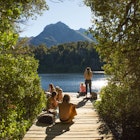
Jun 17, 2024 • 6 min read

Money Talks News
Comparing 3 U.S. Retirement Hot Spots to Overseas Ones
Posted: July 22, 2024 | Last updated: July 22, 2024

Last year, more than 338,000 Americans moved away from home for retirement. That’s 44% more than in 2022.
A cooling housing market and lower inflation help explain this big number. Put simply, more people could afford to move away from home last year compared to the year before.
Where did all these retirees end up? If I were to guess, I’d say the top places were Mexico, Costa Rica, Portugal ¦ maybe Spain.
But I’d be wrong.
Join 1.2 million Americans saving an average of $991.20 with Money Talks News. Sign up for our FREE newsletter today.
Try a newsletter custom-made for you!
We’ve been in the business of offering money news and advice to millions of Americans for 32 years. Every day, in the Money Talks Newsletter we provide tips and advice to save more, invest like a pro and lead a richer, fuller life.
And it doesn’t cost a dime.
Our readers report saving an average of $941 with our simple, direct advice, as well as finding new ways to stay healthy and enjoy life.
Click here to sign up. It only takes two seconds. And if you don’t like it, it only takes two seconds to unsubscribe. Don’t worry about spam: We never share your email address.
Try it. You’ll be glad you did!
Advertising Disclosure: When you buy something by clicking links on our site, we may earn a small commission, but it never affects the products or services we recommend.

The Top Destinations for Retirees
The top places that retirees moved to last year were Florida, South Carolina, and New Jersey. “Lifestyle first, cost second” was the trend that guided these results, according to AARP.
As a LIOS reader, you already know that we too are advocates of leaving home in search of better lifestyles and property prices¦
But for us, if you leave home and end up in Florida, South Carolina, or New Jersey, you didn’t go far enough. In our opinion, the best lifestyle opportunities and property prices are found beyond the borders of the United States.
You can find overseas havens where the lifestyle appeal is similar to that of Florida, South Carolina, and New Jersey ¦ but property prices are much cheaper.
You also have to consider the cost of living once you get there. How much do you need to get by, not to mention actually enjoy life, in each of those states?
Let’s compare the lifestyle appeal, cost of property, and monthly budget needed in Florida, South Carolina, and New Jersey with attractive overseas counterparts.
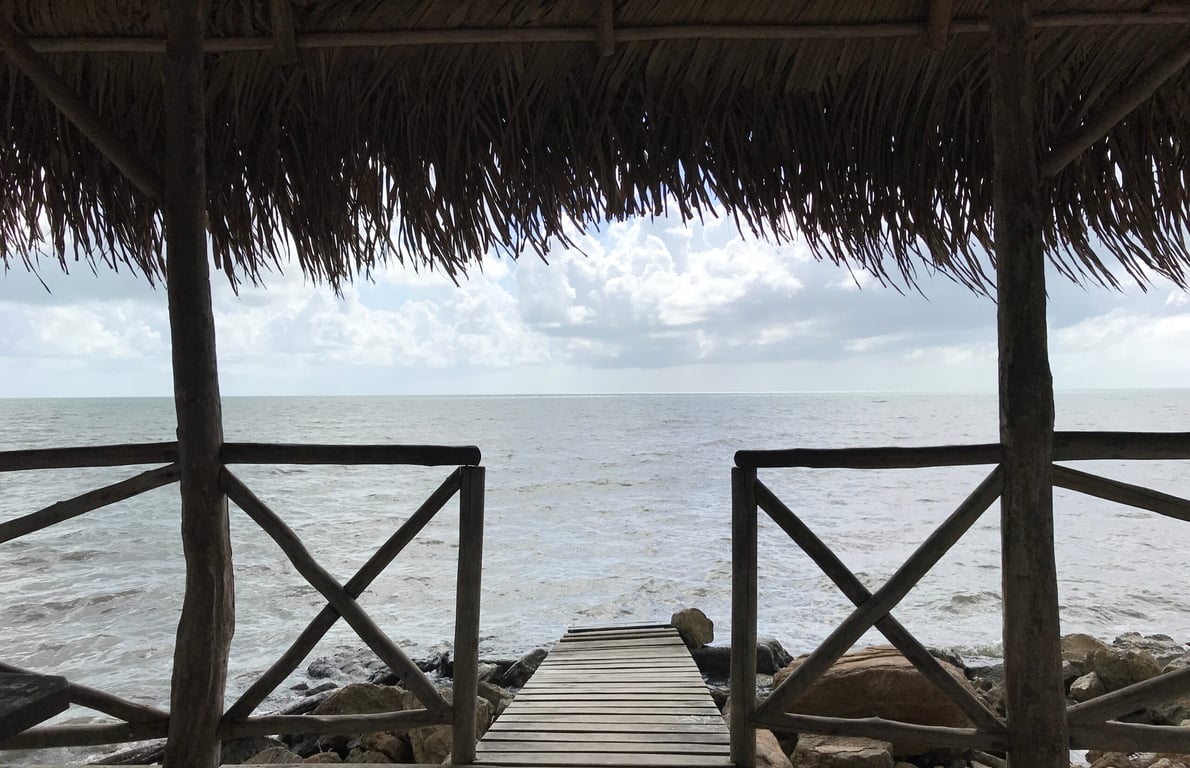
1. Florida vs. Belize
Florida was the #1 spot retirees sought out last year. About 11% of the 338,000 people who moved for retirement in 2023 ended up here.
They were drawn by the dream of a beach retirement plus warm weather and a low cost of living, including lower taxes.
If they were willing to venture a bit farther south, they could’ve accessed all of Florida’s appeal at a much lower cost.
Just two hours from Miami by plane is Belize, an English-speaking Central American country with a long Caribbean coastline.
It has white-sand beaches, palm trees, and warm weather year-round ¦ a tropical retirement dream come true. Plus, it’s a tax haven. Even as a resident, Belize does not impose tax on income earned outside of the country.

The Cost of Living in Belize
Home prices vary across Belize by type of property (whether it’s an American-style home in a private residential development or a Belize-style home in a humble village).
Some of the best value is in Corozal District, the northern part of the Belize mainland, close to the border with Mexico. Here, homes cost between $100,000 and $200,000 on average.
Compare that to the median home value in Florida—$391,000, according to Zillow.
The cost of living is lower in Corozal, too¦ We estimate that a couple needs about $2,000 per month for a comfortable lifestyle here.
In Florida, the living wage (the amount needed to support yourself without falling below the poverty line) is $4,755 monthly.
If you brought Florida’s budget to Corozal, you’d have an extra $2,755 in your pocket every month, which you could allocate to nice dinners out, boat or fishing trips, or travel.
Related: 7 Secret Departments of Amazon You Should Know About
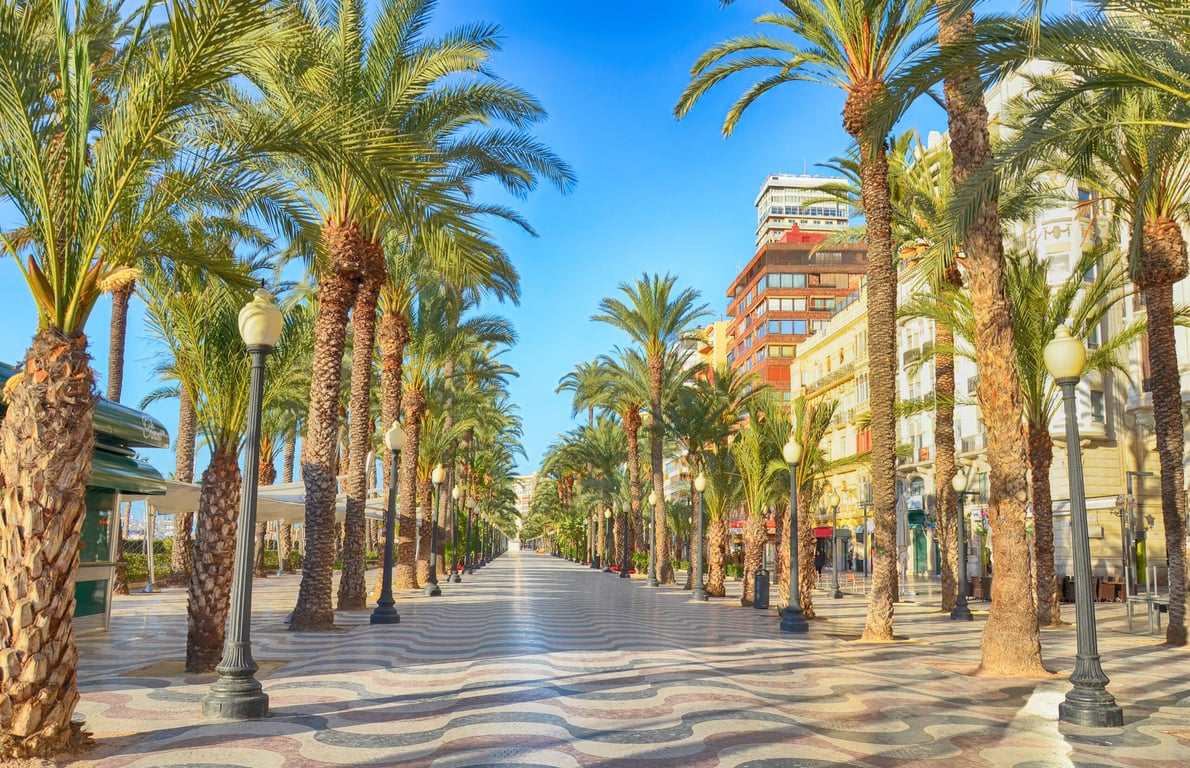
2. South Carolina vs. Spain
South Carolina made up 10% of the 338,000 retirement relocations Americans made last year. That’s a huge jump from the year before, when it didn’t even make the top 10.
Retirees love South Carolina for its mild climate, beach access, golf, and low cost of living.
The median house price in South Carolina is $287,000.
Compare that to Murcia, a little university city of just under half a million in Spain, about halfway between Valencia and Málaga and about 30 minutes inland from the coast. Here, the average home costs about $100,000 to $150,000.

A Monthly Budget in Murcia, Spain
Murcia has a strong expat community, attracting people from all over the world who are drawn by the affordability, warm weather, and Spanish cultural ambiance.
About $1,500 is a reasonable monthly budget here.
In South Carolina, despite being sought out for affordability, the living wage is a whopping $4,351 per month.
If you brought that budget to Murcia, you’d have an extra $2,852 in your pocket every month to spend on enjoying your retirement. It could go toward your green fees at Murcia’s 17 golf courses, for instance.

3. New Jersey vs. Portugal
New Jersey being among the top three states that retirees moved to last year is a surprise.
It’s known for being an expensive place to live (the living wage is $5,371 per month), and it has some of the country’s highest income and property tax rates.
It accounted for 6% of all retirement relocations in 2023 ¦ It turns out that New Jersey is a popular retirement destination for people leaving New York State. Retirees like New Jersey for its charming small towns on the Hudson River and easy access to the big city.
A good overseas alternative to New Jersey is Braga, Portugal. It’s an elegant, well-loved city, with narrow lanes and lively plazas hemmed in by historic buildings and elegant baroque churches.
It’s also less than an hour from Porto, Portugal’s second-biggest city, and a three-and-a-half-hour train to Lisbon, the capital city, so cosmopolitan amenities are within easy reach from Braga.
Here, an apartment costs $200,000 to $250,000 on average, and the cost of living is about $2,855 per month. That leaves an extra $2,516 in your pocket each month relative to the average New Jersey living wage.

How Much Can You Save Overseas?
Florida vs. Corozal
- Average Home Value: $391,000 vs. $150,000 — Discount: 62%
- Monthly Budget: $4,755 vs. $2,000 — Discount: 58%
South Carolina vs. Murcia
- Average Home: Value: $287,000 vs. $125,000 — Discount: 56%
- Monthly Budget: $4,351 vs. $1,500 — Discount: 66%
New Jersey vs. Braga
- Average Home Value: $512,908 vs. $225,000 — Discount: 56%
- Monthly Budget: $5,371 vs. $2,855 — Discount: 47%
Sponsored: Find a vetted financial advisor
- Finding a fiduciary financial advisor doesn’t have to be hard. In five minutes, SmartAsset's free tool matches you with up to 3 financial advisors serving your area.
- Each advisor has been vetted by SmartAsset and is held to a fiduciary standard to act in your best interests. Get on the path toward achieving your financial goals!
Editor's Note: This story originally appeared on Live and Invest Overseas .
More for You
What Kamala Harris Has Said About Social Security
Disney changes name of 'offensive' character after 50 years
A 70-year-old who finally found a solution to a lifetime of loneliness says the friendships he's made are worth the cost
15 Cars Illegal To Ride on American Roads
These truck drivers have mastered road trips. Here are their pro tips.
3 Signs That Quickly Identify Someone With Bad Leadership Skills
Dave Ramsey: 6 Biggest Retirement Myths You Shouldn’t Believe
A Stock Market Rotation of Historic Proportions Is Taking Shape
Hear what Bob Newhart said to unemployed comedian who asked for advice (1995)
A grim trend among Americans without college degrees exposes an enormous failure
This is how long it takes for alcohol to leave your system
How business leaders and billionaires are responding to Biden dropping out of the presidential race
Ford CEO says American car buyers need to break this addiction
5 Grocery Stores You Might Want To Avoid When Purchasing Ground Beef, According To Customer Reviews
I Will Never Hire Anyone Again Without Asking Apple's Genius Interview Question
My estate is worth millions of dollars. How do I stop my daughters’ husbands from getting their hands on it?
3 signs it's time to break up with your doctor—'your health is one of your most important assets,' physician says
The Fast-Growing Tree You'll Want To Plant In Your Yard For All Of Its Benefits
How do 9 states get by with no income tax? A tax expert explains the trade-offs they choose
New Mexico’s Largest Landowner Controls a Ridiculous 24,665,774 Acres
Los Paganes, Murcia
Los Paganes
Around the Globe
Hurricane tracker, severe weather, radar & maps, news & features, temperature graph, further ahead, august 2024, september 2024.
Top Stories
Weather Forecasts
Showers, thunderstorms to return to Midwest and Northeast
5 hours ago

Hundreds of US flights are canceled for the 4th straight day

Daily downpours to soak Southeast this week, but also relieve drought
6 hours ago

Weather News
A week without power leaves some Houston residents feeling abandoned

Core of blistering heat in Northwest US to shift eastward this week

Featured Stories
How did shark attack hysteria get its start in the US?
30 minutes ago

CDC confirms sixth Colorado bird flu case
53 minutes ago

They built in Thailand after their US home was flooded in a hurricane
42 minutes ago

Summer of devastating floods shows steep challenge for China as it gra...

Dog with bowl stuck over her head rescued in Texas

Weather Near Los Paganes:
- Elche , Valencia
- Murcia , Murcia
- Torrevieja , Valencia
We have updated our Privacy Policy and Cookie Policy .
Get AccuWeather alerts as they happen with our browser notifications.
Notifications Enabled
Thanks! We’ll keep you informed.

Filed under:
Matchday Musings: Hemir’s Hammer secures a Sunderland Win in Murcia
The Lads grabbed a victory against Eldense by a narrow margin on Sunday evening — Malc muses over some of his main takeaways from the pre-season win.
Share this story
- Share this on Facebook
- Share this on Twitter
- Share this on Reddit
- Share All sharing options
Share All sharing options for: Matchday Musings: Hemir’s Hammer secures a Sunderland Win in Murcia
Sunderland followed up a hard-earned draw against Forest with a win against Spanish second-tier outfit Eldense on Sunday evening, and it would be very fair to say it was a game the squad and the coaching team should have learned a lot from.
The main positives?
There were quite a few for me. Firstly, we saw a lot of good minutes for a lot of lads who needed them. With a starting eleven which few would have expected, the run-out in the Spanish sun was a great chance for both new and seasoned players to get some fitness and work into them. New signing Browne started the game as skipper, which surprised a few, and some of his early touches and midfield battling looked decent. He faded quite quickly, but getting some time on the park with the lads will hopefully help him and us.
Others in the starting eleven who will have really benefited from time on the grass included Anderson, Bennette, Pembele, Hemir, and Rusyn, who for varying reasons had limited playing time last campaign. Anderson and Hjelde did okay for the most part as a centre-back pair, albeit with the odd wobble, and considering they had young Jewi at left-back again and a shaky-looking Pembele on the other side, they did well enough when needed.
Our team to take on CD Eldense! Watch the game live... ⤵️ — Sunderland AFC (@SunderlandAFC) July 21, 2024
Elliot Embleton played most of the game and came off unscathed, and young Watson showed why he is rated so highly with a very well-taken left-footed goal in the 23rd minute, after a lovely raking switch from Adil. Across the first 25 minutes, we dominated the game for larger parts despite fielding a side that we doubt will be anything like the team running out against Cardiff in a few weeks. That has to be seen as a plus.
Secondly, I would say the lads took their chances well at times, and they needed to in the end. Yes, we wasted a few too, but two goals in Spain right now isn’t a bad return. As mentioned above, Watson did really well to cut in and shoot low past the goalkeeper’s left to open the scoring at a time when we were bossing the game. However, after the first water break, we really dropped away, giving away a sloppy and avoidable equaliser only 5 minutes after the drinks pause, with a mix-up at the back allowing one of the Eldense centre-backs to toe-poke them level.
:no_upscale()/cdn.vox-cdn.com/uploads/chorus_asset/file/25540184/2162918230.jpg)
The majority of the game from that point until halfway into the second period (when we made a raft of subs around the second-half drinks break) was dominated by Eldense. After we opened the scoring and took on some liquids, they seemed to work out that our hodgepodge side was not the best at playing out when pressed hard.
That said, when we did make the changes halfway into the second period, up stepped Hemir just a few minutes after he was joined on the pitch by many of what would be seen as the first team starters. And how did he step up! After a thumper of a 50-50 won by Hume just inside the Eldense half, the ball fell to Hemir in a touch of space around 35 yards from the goal. After one or two touches, Semedo ripped an absolute corker into the literal top bin. Three keepers wouldn’t have saved it. In typical Hemir style, the celebration was subdued and minor.
From that point on, the experience of the senior lads showed, and we controlled the game way better, especially through the middle, with the spine of O’Nien and Neil feeding Clarke and Roberts well and bringing in others too.
:no_upscale()/cdn.vox-cdn.com/uploads/chorus_asset/file/25540187/2162321857.jpg)
While the preseason games are all about getting fit and clicking with each other, there were some slight downsides we will also have to bear in mind. As mentioned above, we were very shaky at the back for about two-thirds of the match and could have easily lost that game after the locals hit the woodwork more than once. Had it not been for the wonder strike from Hemir, we may have seen ourselves lucky to get out of the game with a draw.
The lads clearly need to learn more about how to interlock with each other and how to pass their way out of trouble too, but with the starting side being something very different from what we expect closer to the league starting, that is likely to be a symptom of the selection rather than how we will be in a few weeks.
All in all, a good run-out for most of the squad, a win, and a couple of goals that should really boost the confidence of a couple of lads that will really grow from that. A very worthwhile 90 minutes, with lots to work on as we continue the pre-season events.
Talking Points: Sunderland win unconvincingly in Spain
Two up, two down: what were the positives & negatives from sunderland’s win over cd eldense, three players to have breakout seasons (who aren’t called “rigg”), loading comments..., sign up for the newsletter sign up for the roker report daily roundup newsletter, thanks for signing up.
Check your inbox for a welcome email.
Oops. Something went wrong. Please enter a valid email and try again.
- Skip to main content
- Keyboard shortcuts for audio player
Pushback against over-tourism in Spain is reflected in new signs across Madrid

Miguel Macias
Tourism is important to the Spanish economy but critics are arguing the country is too reliant on it.
Copyright © 2024 NPR. All rights reserved. Visit our website terms of use and permissions pages at www.npr.org for further information.
NPR transcripts are created on a rush deadline by an NPR contractor. This text may not be in its final form and may be updated or revised in the future. Accuracy and availability may vary. The authoritative record of NPR’s programming is the audio record.

COMMENTS
Explore routes and itineraries through Murcia. Ideal for discovering the most emblematic places of the city. Best places to visit in Murcia. Tourism and gastronomic activities, museums, tourist routes, complete information, news and events.
By pncwhitehead60. Recommended to family visiting and went for tapas today. 4. Terra Natura Murcia. 864. Water Parks. Zoo with a diverse array of animal species and thoughtfully arranged habitats, coupled with a water park featuring enjoyable slides and a lazy river, ideal for family fun. 5. Plaza Cardenal Belluga.
Let's explore the best things to do in Murcia: 1. Murcia Cathedral. Source: flickr. Murcia Cathedral. The city's cathedral has a big medley of architectural styles, but it's the baroque additions in the 17th and 18th centuries that really catch the eye.
What to visit. Select from the list or hover over the map to find out about points of interest. Church of San Nicolás de Bari (Murcia) Floridablanca Garden. Salzillo Museum. Murcia Archaeological Museum. Murcia Museum of Fine Arts. Santa Clara la Real Convent Museum. Monteagudo Castle.
Murcia. Spain, Europe. Officially twinned with Miami, Murcia is the antithesis of the city of vice; it's a sizeable but laid-back provincial capital with a handful of interesting sights and a pleasant, strollable centre. Like Valencia, it is famous for its huerta, a surrounding zone of market gardens dating back to Moorish times, which supply ...
The most emblematic building in Murcia and one of the best examples of Baroque style in Spain is the Cathedral of Santa Maria, located in the Cardenal Belluga Square. The Royal Casino of Murcia A wonderful building in the heart of Trapería, in which, behind a splendid facade, you enter into a building full of art and architecture of exquisite ...
Admission: Adults 5€ Children 3€. 3. Visit Museum Salzillo. Famous all over Spain for its magnificent Easter week processions, the Museum Salzillo is one of the best things to do in Murcia city. It was dedicated to Francisco Salzillo, a baroque sculptor who lived between 1707 and 1783.
In Murcia city, you must pay a visit to the Real Casino, one of the most unique historic attractions in the region. Now open to the public, many rooms were built and designed during different periods from 1847 to the early 20th century. ... Like all of Spain's regions, Murcia has a rich and unique gastronomic culture to explore. There's a ...
ABOUT The city of Murcia was founded in 831 by Abd-Al-Rahman II on a privileged location, in the centre of the Valley of the River Segura. The city wall offers a good idea of the importance achieved by the city under Arab rule, and the remains of part of the wall are still visible in different places around the city; the wall originally measured 15 metres in height and had 95 towers.
By RobertBovington. 49,737. Murcia, Spain. Laid-back Murcia has plenty of landmarks to linger over—from Moorish gardens to the ornate architectural blend of Plaza Cardenal Belluga. Mediterranean valleys, mountains, and coastlines beckon from further afield; while annual festivals bring a buzz to the entire region. Read more.
17. Go for a stroll in Caravaca de la Cruz. A charming little mountain town situated on the bank of the River Argos, on the border between Murcia and Granada. Home to the Iberians, the Romans and the Muslims, Caravaca is the Fifth Holy City, along with Rome, Jerusalem, Santiago de Compostela and Camaleño.
Getting around Murcia is easy. The city centre is small and easily walkable - you can see most of the old town within one day. There are excellent buses within the town, and taxis are fairly cheap. Pin this post for later! My visit to Murcia was a press trip organised by Spain and Murcia for the #SpainCities campaign. As always, absolutely ...
JULY 19 FREE DRAMATIZED VISIT TO THE ESPARTO GRASS MUSEUM OF AGUILAS. Águilas. SEPTEMBER 27 TO 29 ANTIQUES AND CLASSIC MOTOR VEHICLES FAIR AT THE IFEPA IN TORRE PACHECO. ... Instituto de Turismo de la Región de Murcia se compromete a proteger y respetar tu privacidad, y solo usaremos tu información personal para administrar tu cuenta y ...
Older kids can enjoy the Parque Rafael de la Cedra, which features a maze, high ropes and a zip liner. The Parque Rafael de la Cedra in Murcia, Spain. For cultural attractions, you can tour the Cathedral of Murcia, visit the Roman ruins in Cartagena or climb the Castillo de Jumilla. The Roman ruins in Cartagena, Spain.
Reasons to Visit Murcia, Spain Diverse cities with fascinating history. Murcia is a relatively small region, but its diversity is evident in its cities. Its rich history goes as far back as Roman times, it was part of the Caliphate of Cordoba and of Al-Alandalus until the 13th century, when it became part of Christian Spain.
The Region of Murcia. Tours in Murcia. What to do in Murcia, Spain. Hiking the Segura River. Kayaking/rafting the Segura River. Seeing the rock formations at Bolnuevo. Exploring Cueva del Puerto. Discovering 7,000-year-old paintings at Cueva de la Serreta. Biking the Greenways of the Northwest.
Here's our guide to Murcia's top attractions. 1. Visit the Cathedral. Architectural Landmark. Victor / Unsplash. View Tours. Probably Murcia's most famous landmark, this grand structure is known as a baroque treasure, but it actually features a mix of architectural styles used during the three centuries it took to build.
Murcia Archaeological Museum. The Archaeological Museum in Murcia houses one of Spain's top collections of historical items, all of which were found in the area. Walking through the 16 rooms of the museum takes you on a journey from the Paleolithic to the Bronze Age. In these rooms, you can see art, documents, and daily items, some dating ...
The bell tower, built between 1521 and 1791, stands 90 metres tall (95 metres with the weather vane). It is the tallest campanile in Spain and one of the most emblematic features of Murcia. It has five levels with different widths and styles. Murcia Cathedral is well worth visiting and you can do so every day from 10:00 to 17:00 (except Sundays ...
Murcia isn't as popular as the more touristy areas such as Salou so here are just 9 nine reasons why I think you should visit Murica…. 1. Wine Tasting and Vineyards. The Spanish sure know how to make a good wine or two! Murcia makes some incredible wines, and with vineyards aplenty in the Bullas area you can enjoy some wine education along ...
Despite being a lively student town, Murcia is punctuated with tranquil cobblestone streets, historical architecture, and scenic landscapes beyond the city limits that make for some great days out. Out of the 36 million tourists that visit Spain every year, just one million people, on average, choose the Murcia region for their break.
Murcia is a sizable city (according to Spanish average) with 439,000 inhabitants by 2009, ranking seventh in Spain. It's located in southeastern Spain, inland but not far from the coast. It's mainly a services city and an important university town. Murcia is known for its Huerta and its famous products (fruits and vegetables) exported all over Spain and Europe, its folklore (mainly based ...
These are the most incredible places to visit in Spain Put these spots in Spain on your bucket list By Mark Reif July 22, 2024 10:00AM Traveling to ...
Spain's national parks. Straddling southeast Asturias, southwest Cantabria and northern Castilla y León, the 1918-founded, 260-square-mile Parque Nacional de los Picos de Europa - Spain's first national park - comprises some of Spain's (and Europe's) most spectacular mountain scenery. Dominated by 8,000-foot peaks Macizo El Cornión, Macizo Ándara and Macizo Central, its dramatic ...
Things to Do in Murcia, Spain: See Tripadvisor's 97,943 traveller reviews and photos of Murcia tourist attractions. Find what to do today, this weekend, or in July. ... Visit the center of Murcia. Nice place. The whole area is really nice. Not ideal to visit during the summer as the heat is amazingly high. The little cafes are nice.
Compare that to Murcia, a little university city of just under half a million in Spain, about halfway between Valencia and Málaga and about 30 minutes inland from the coast. Here, the average ...
Get the monthly weather forecast for Los Paganes, Murcia, Spain, including daily high/low, historical averages, to help you plan ahead.
Call 1-800-522-4700 (NH), 888-789-7777 / visit ccpg.org (CT), or visit www.1800gambler.net (WV). Void where prohibited. Void where prohibited. 21+ (18+ KY/NH/WY).
We love to travel and see the world. The problem is the magnitude of the industry, the model that we are following. MACIAS: Picu in Madrid, the woman who made those stickers to post them around ...